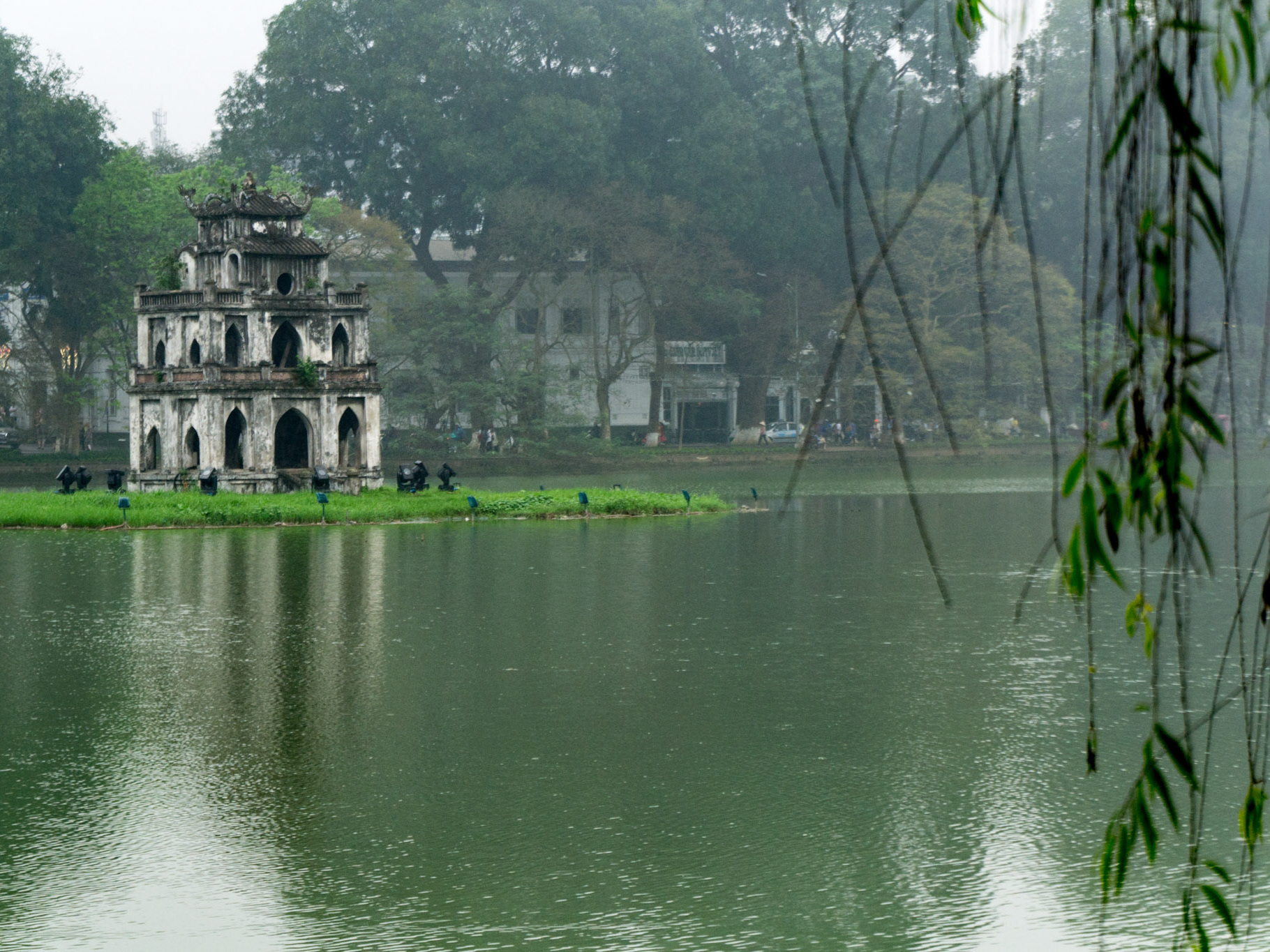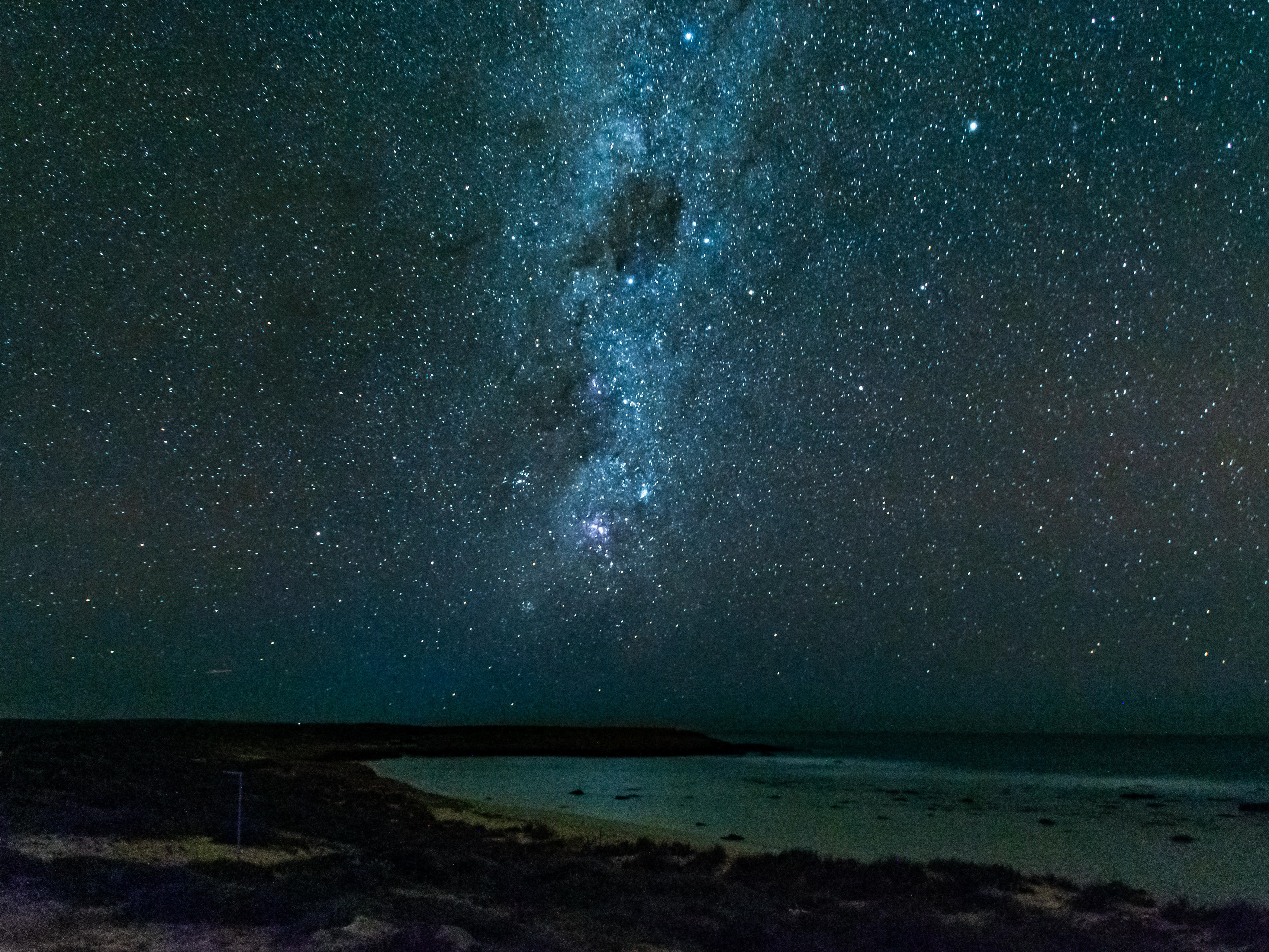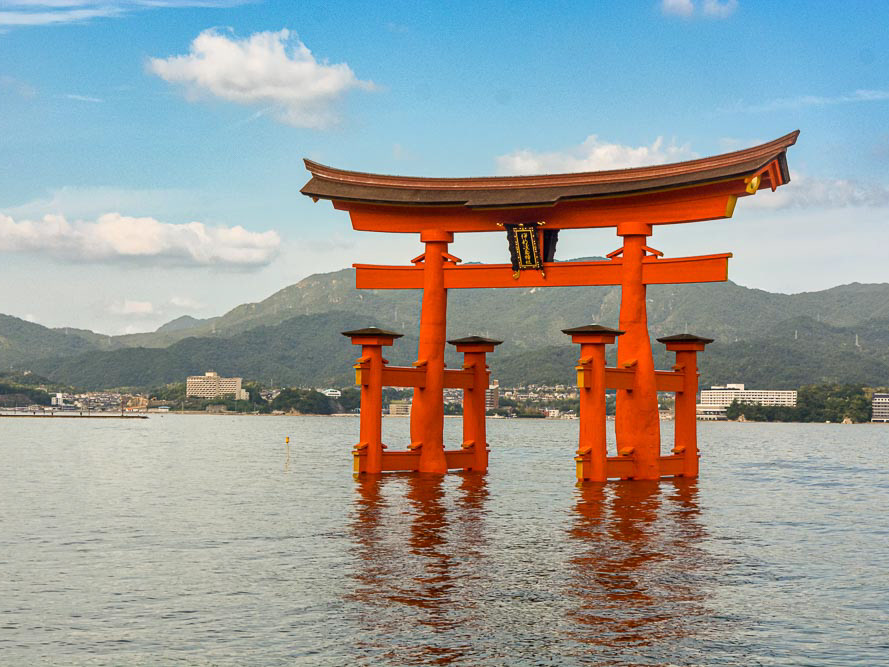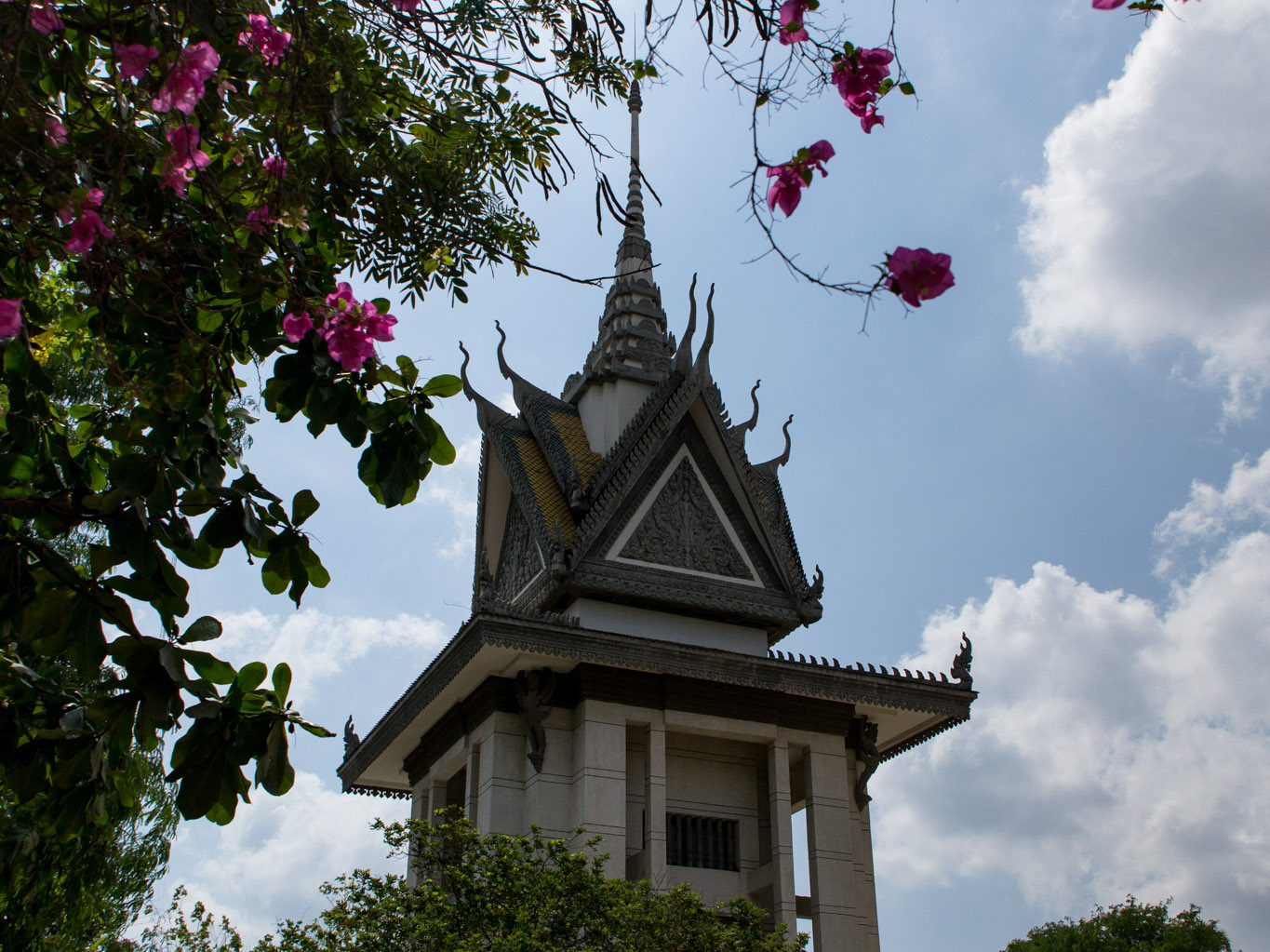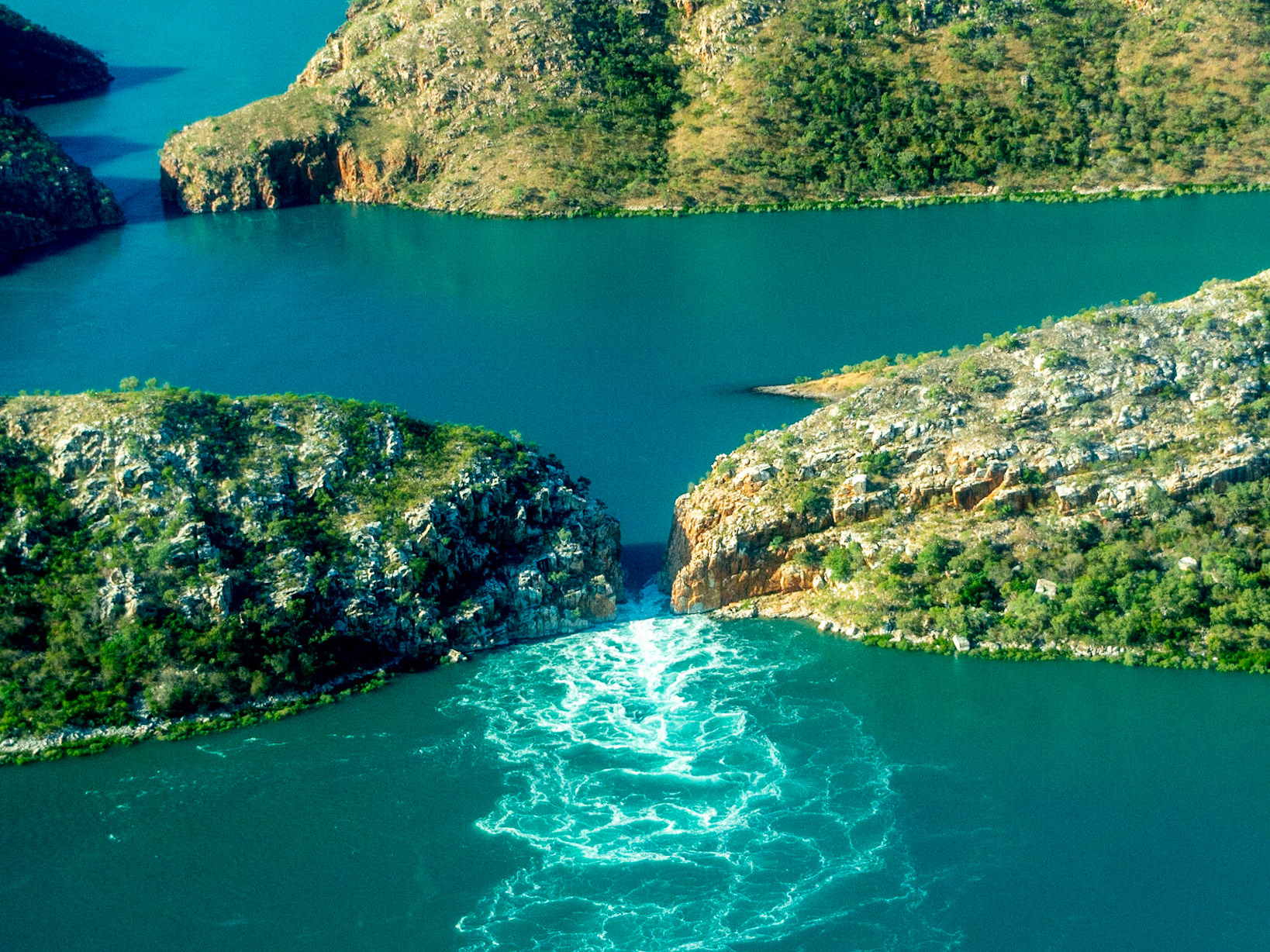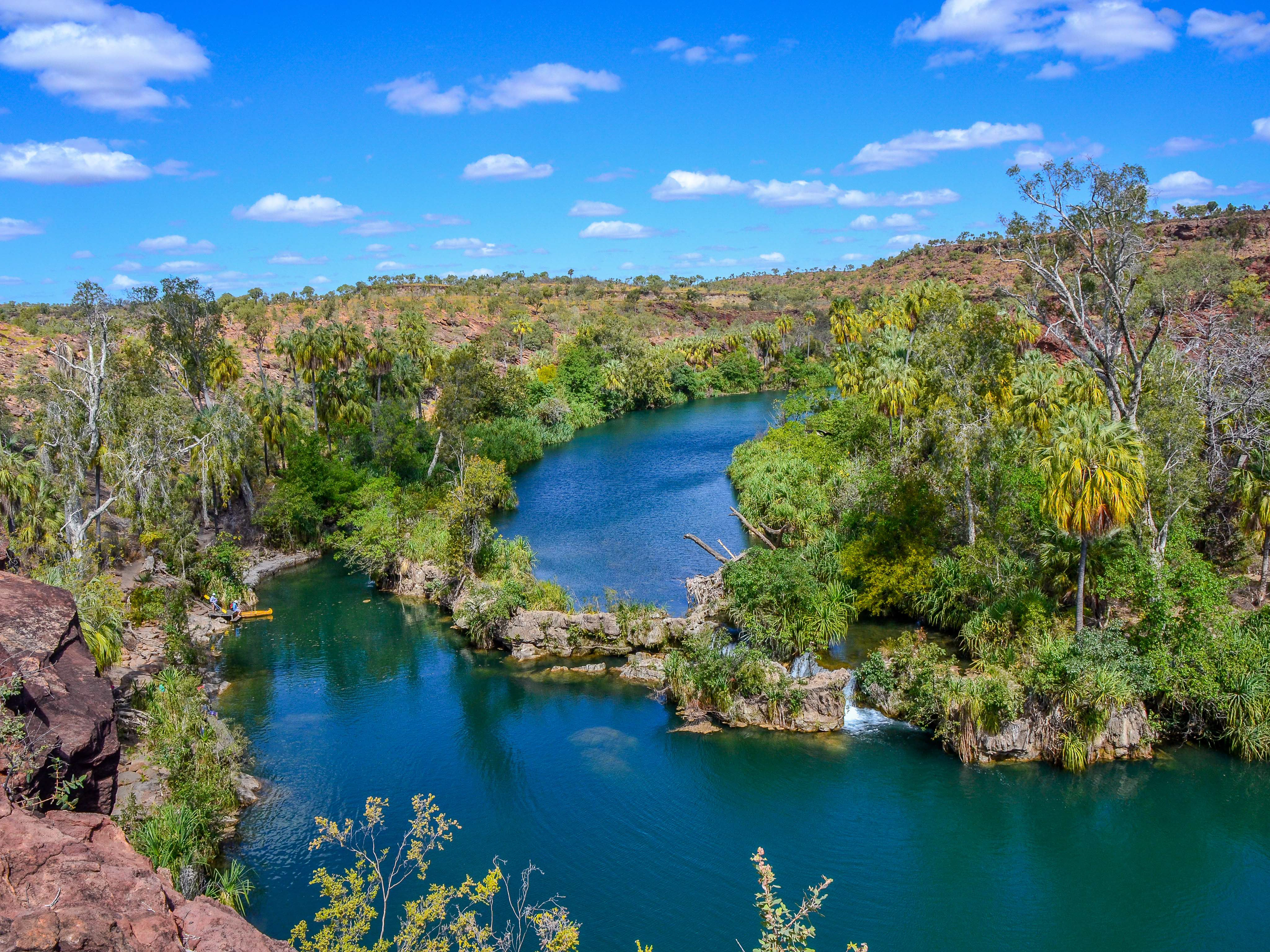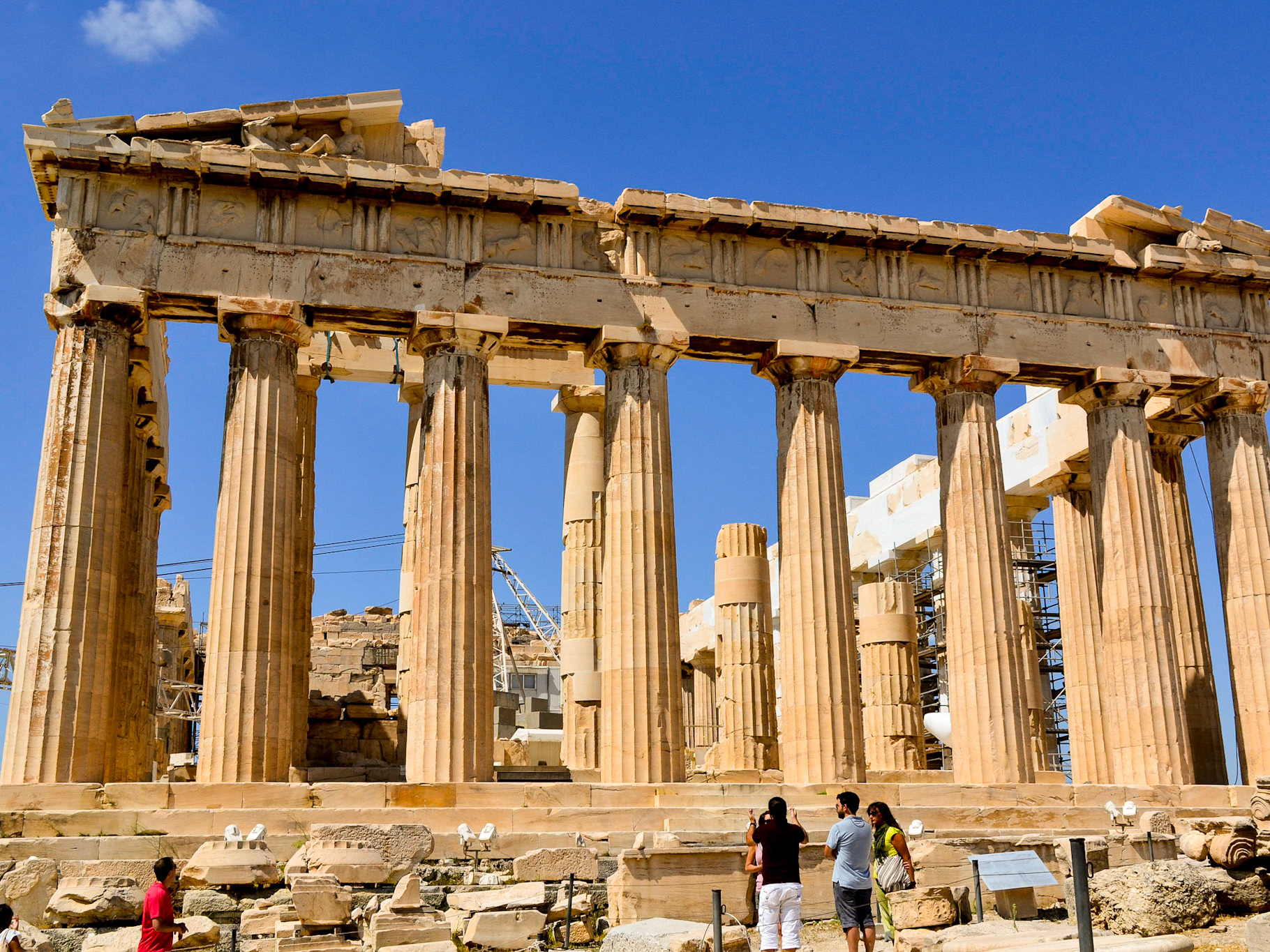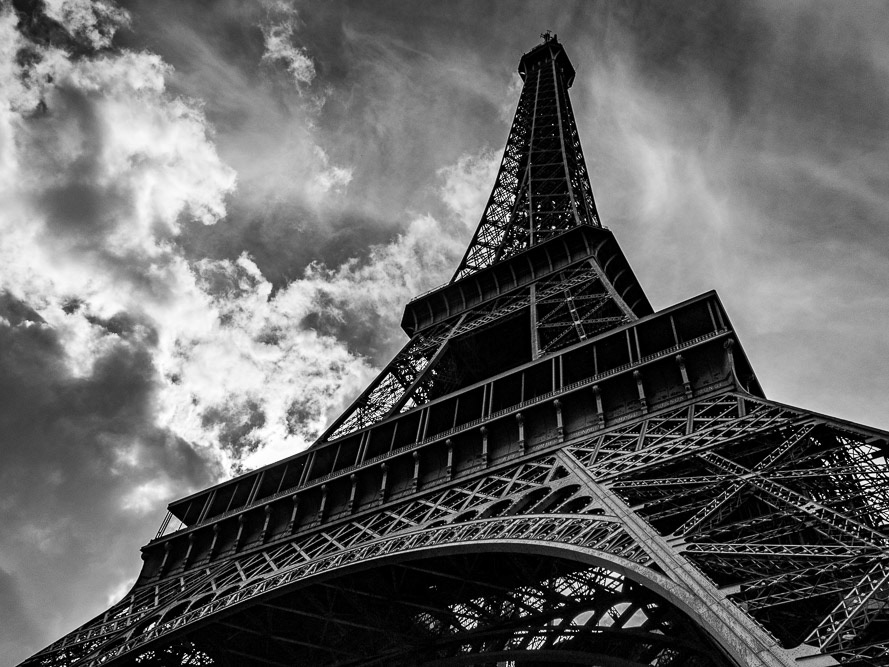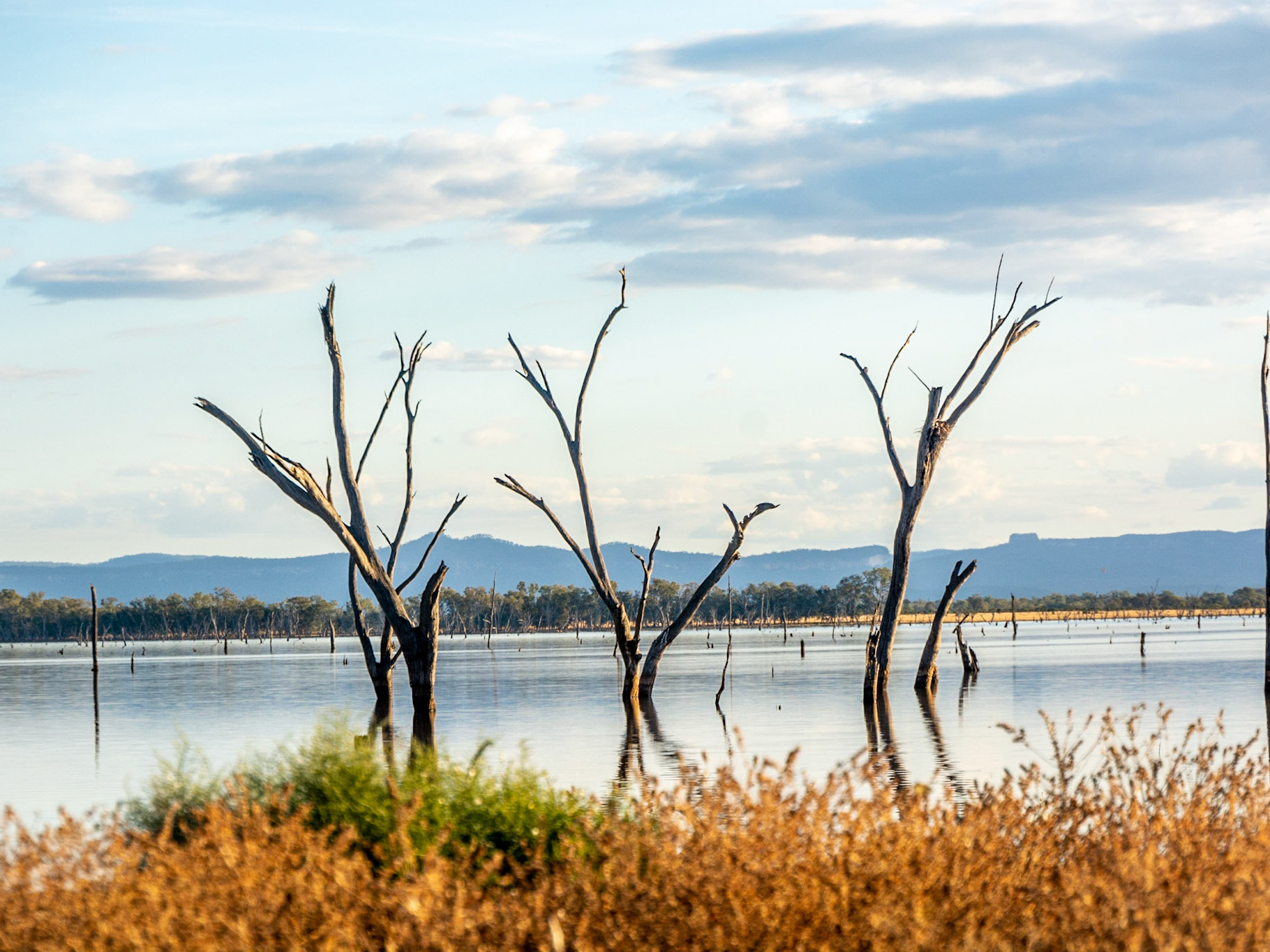PRAGUE
The largest city and the capital of the Czech Republic is our touchdown point for our flight and our base for the next three days. Its main attractions include Prague Castle, Charles Bridge, Old Town Square with its Astronomical Clock, the Jewish Quarter. The historic center of Prague is included in the list of UNESCO World Heritage Sites.
The Charles Bridge, a medieval stone arch bridge that crosses the Vltava river in Prague. The bridge is decorated by a continuous alley of 30 statues, most of them baroque, originally erected around 1700, but now all have been replaced by replicas.
For more images of Prague click on the button below.
BUDAPEST - PEARL OF THE DANUBE
Budapest along with the Danube make one of the most beautiful river cities in Europe. Nine bridges link the former towns of Buda on the hilly right bank and Pest on the flat left bank to unite the formerly independent towns. On either side of the city renowned sights such as Parliament, Castle Hill, Chain Bridge, Matthias Church and Fisherman's Bastion are close proximity to each other.
In Budapest we board the Scenic Ruby to commence our 15 day river journey to Amsterdam.
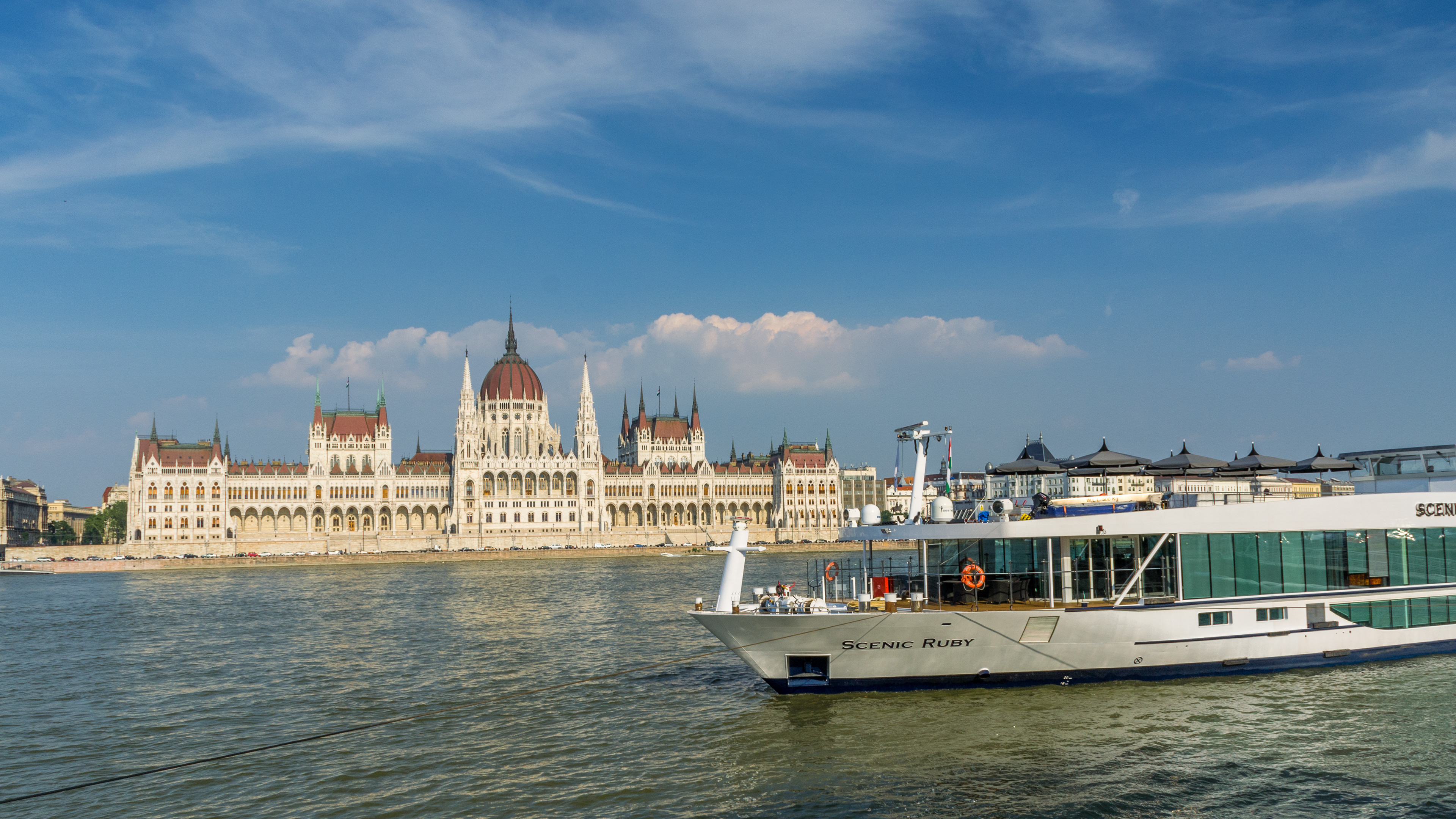
Scenic Ruby, our home for the next 15 days. Behind is the spectacular Gothic Revival building of the Hungarian Parliment.
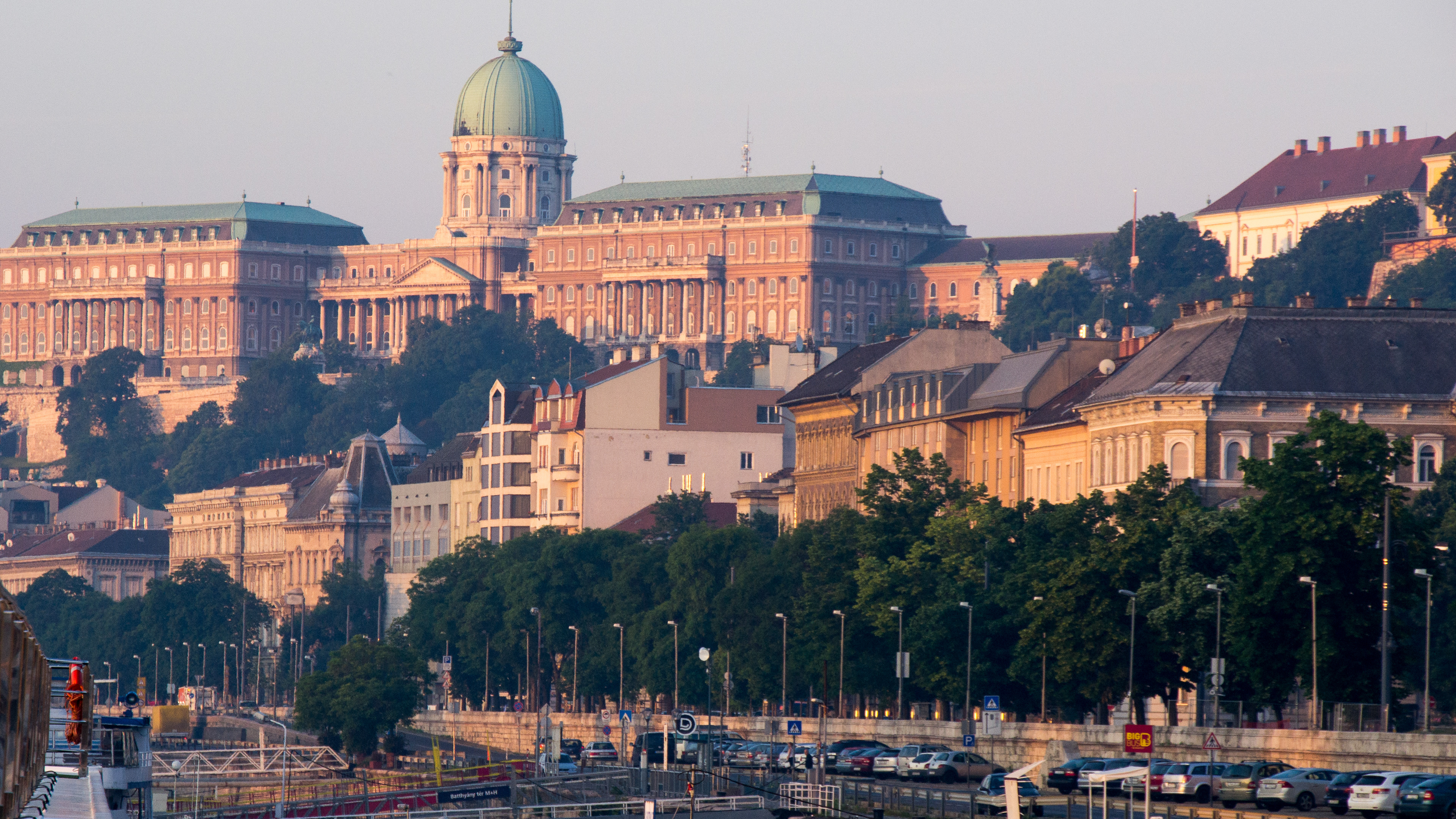
Buda Castle at sunrise.

The Church of the Assumption of the Buda Castle, more commonly known as the Matthias Church.
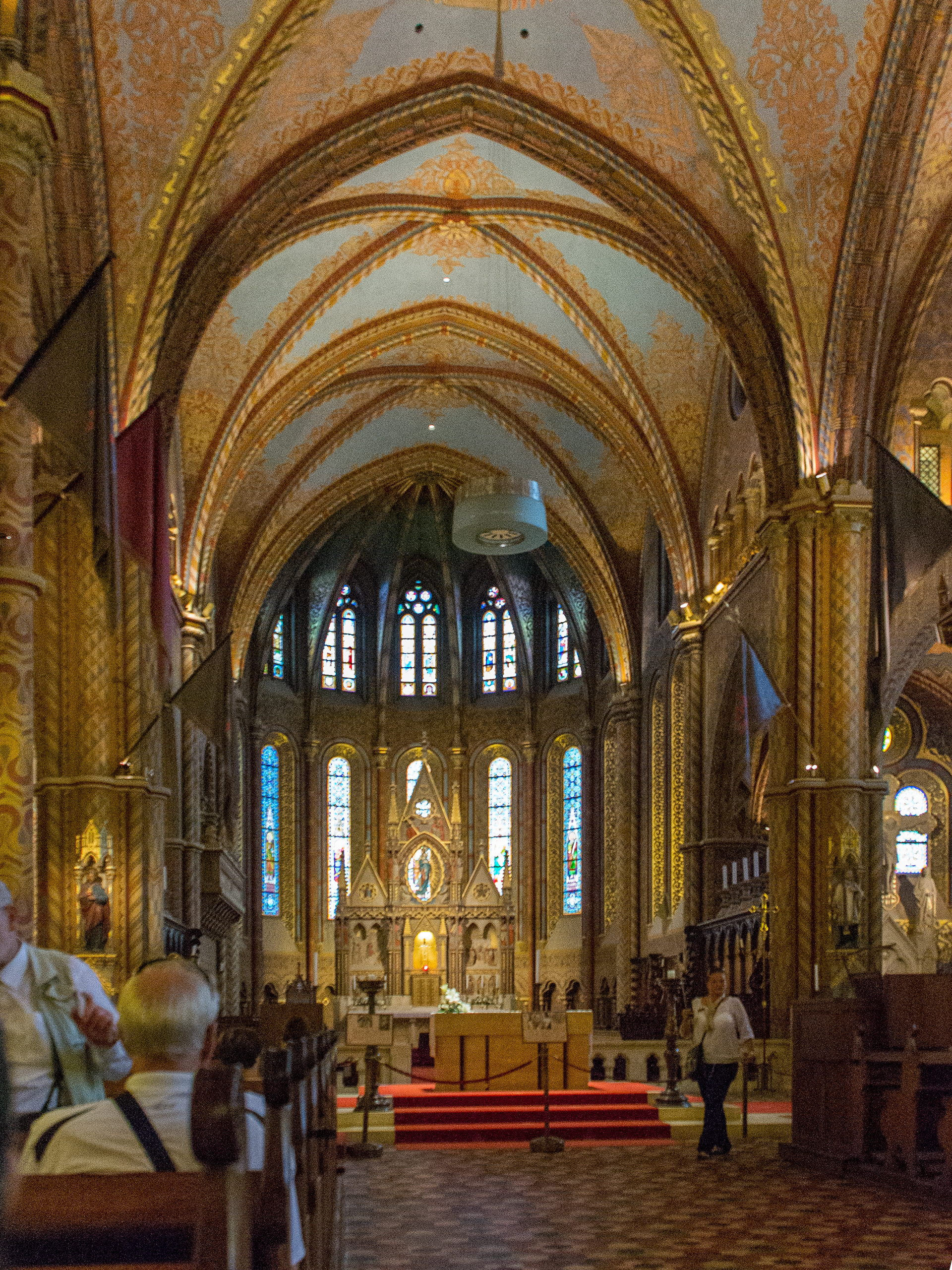
Matthias Church's Altar.

Fisherman's Bastion Terrace behind Matthias Church.
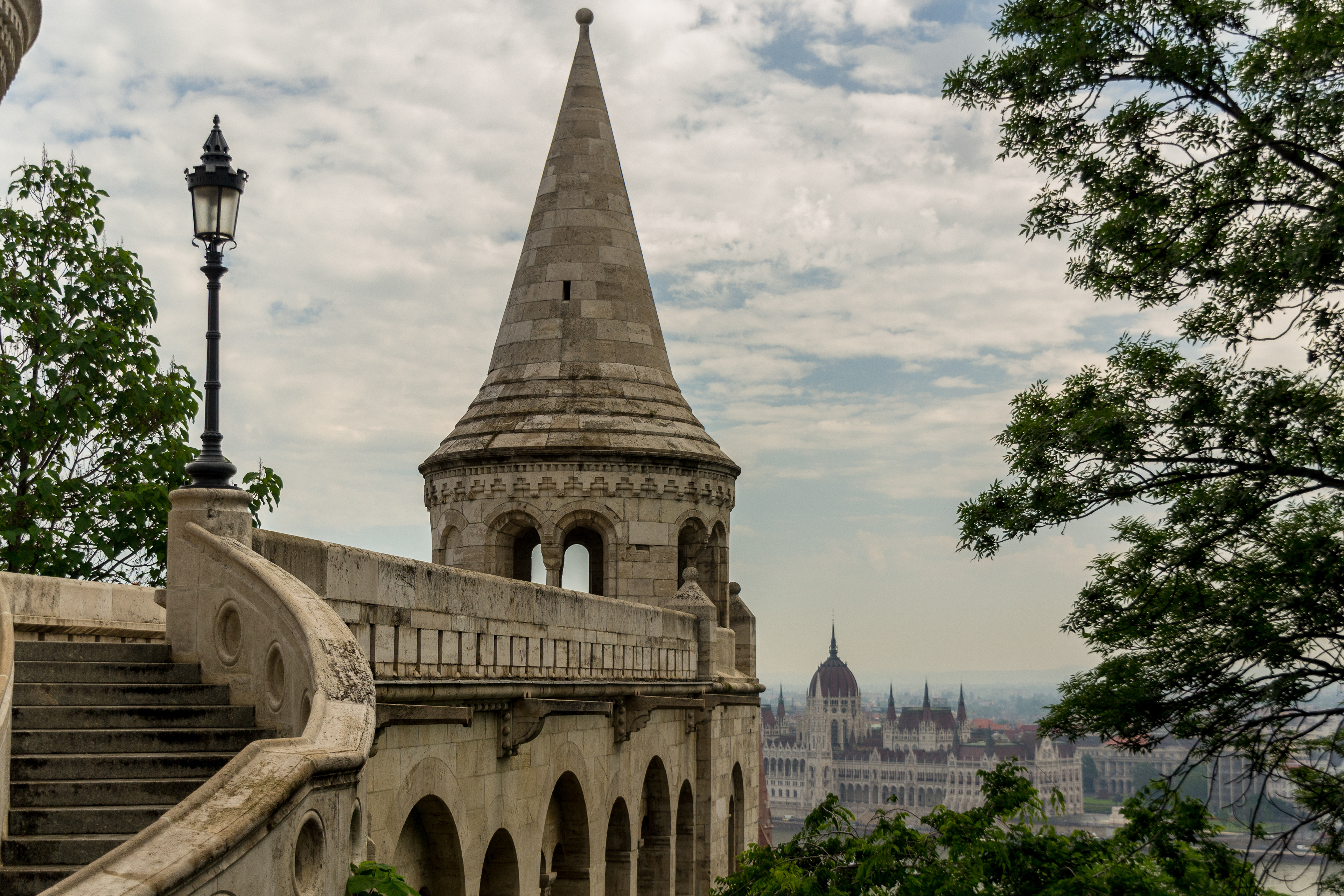
Fisherman's Bastion Tower with Parliament in the background.

The famous Széchenyi Chain Bridge, the first permanent bridge linking Buda and Pest across the Danube.

Old Town Hall borders the southern side of Trinity Square.

Trinity Square, Al Fresco dining by knight.
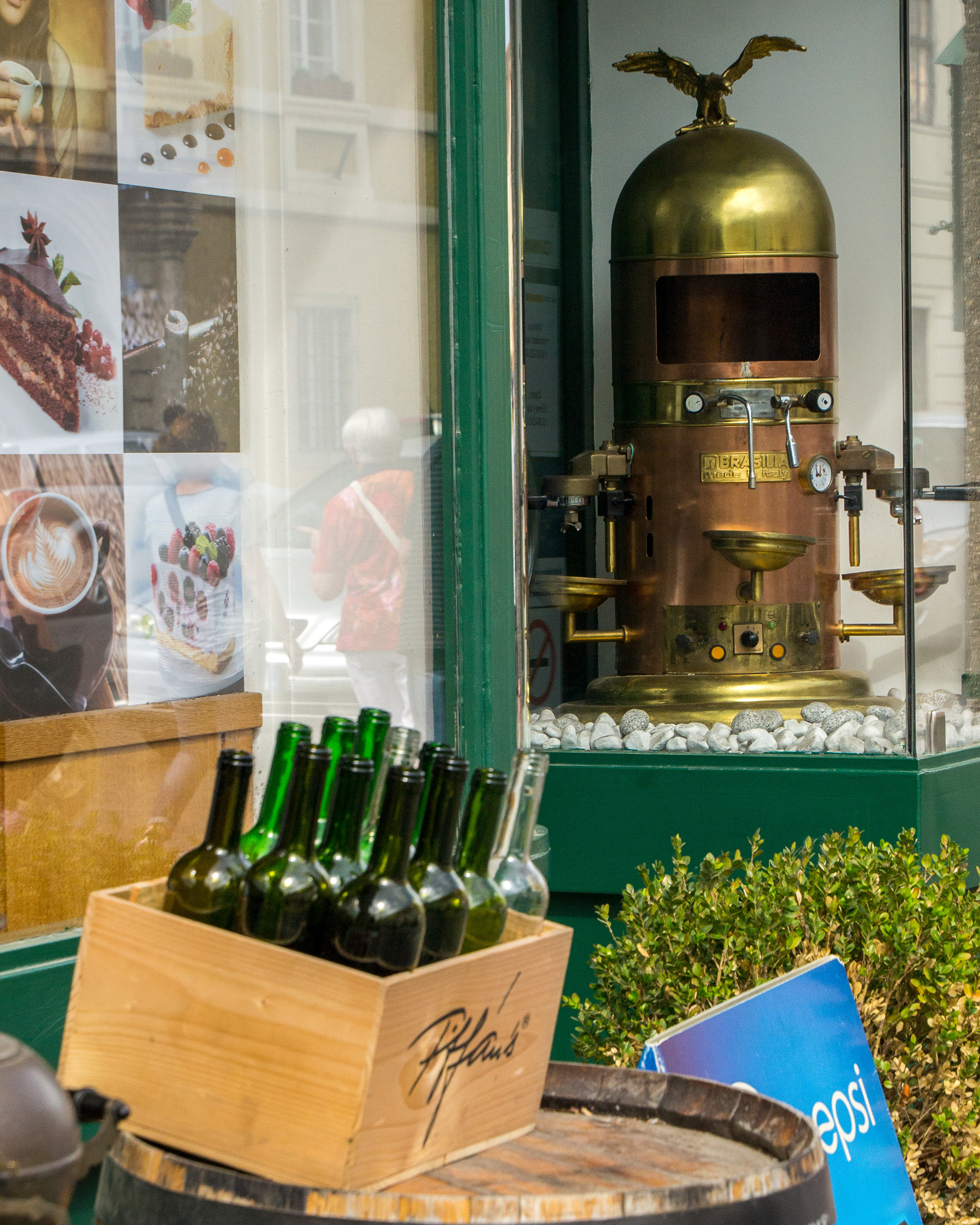
A classic for sale.......Belle Epoque Expresso Machine by Brasilia.

Repilca Miska jugs, painted with the intricately braided and embroidered uniform and mustachioed visage of a “hussar”, a member of the venerable cavalry in the Hungarian army.
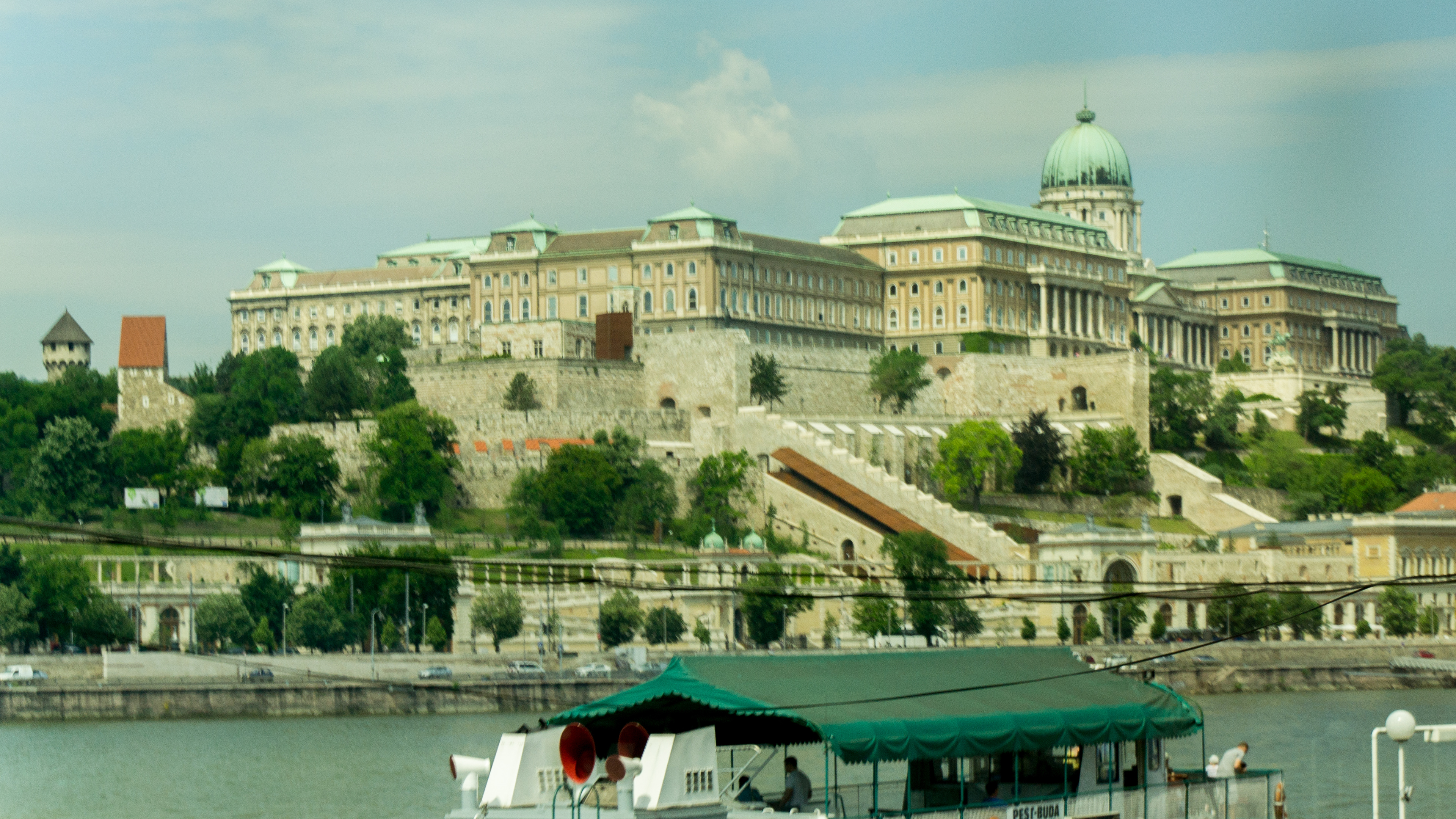
Buda Castle on the southern tip of Castle Hill is the historical palace complex of the Hungarian kings.

Hosok Tere (Hero's Square) noted for its iconic statue complex featuring the Seven Chieftains of the Magyars.
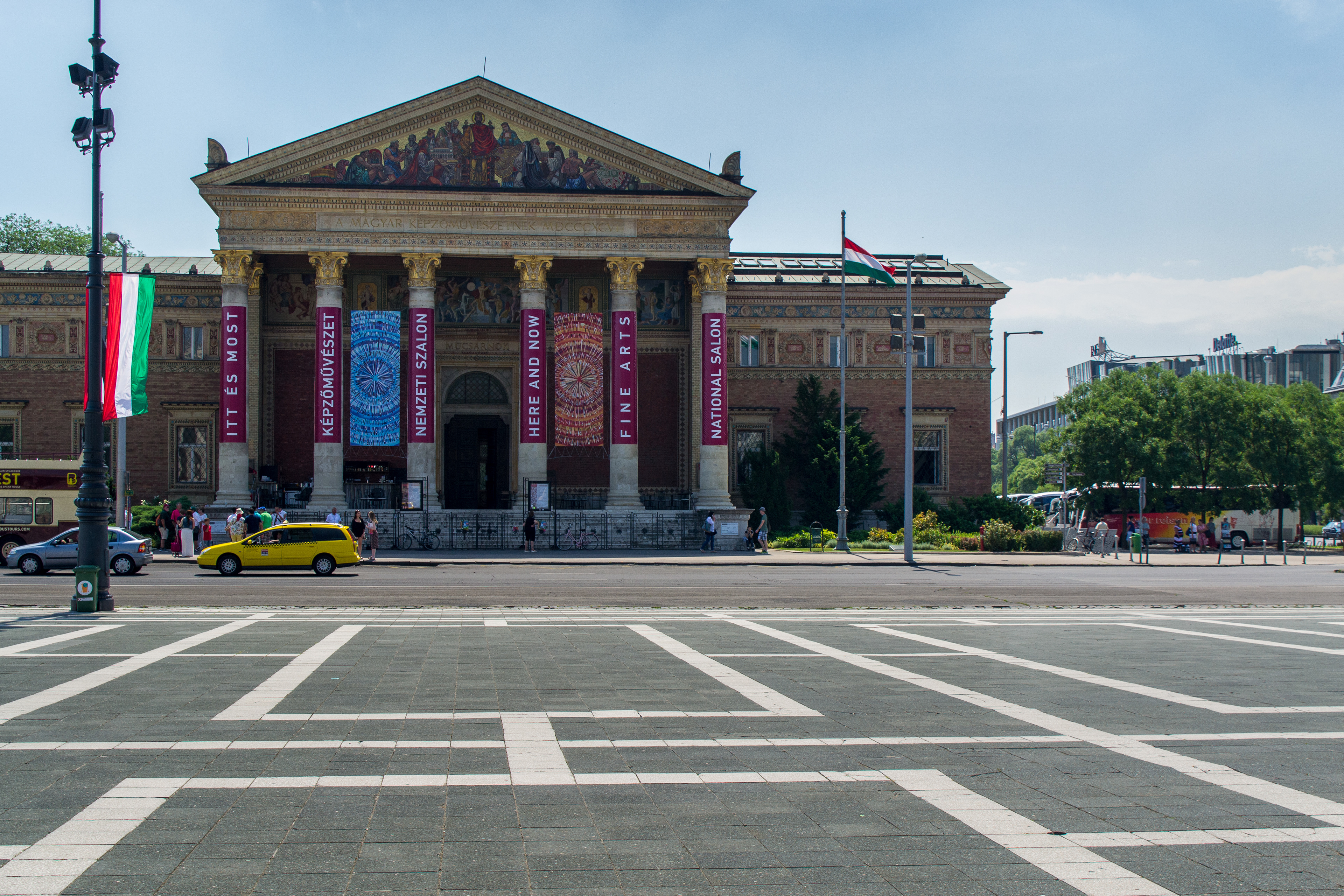
Museum of Fine Arts adjacent Hero's Square.

Parliament house is bathed in light as darkness descends.
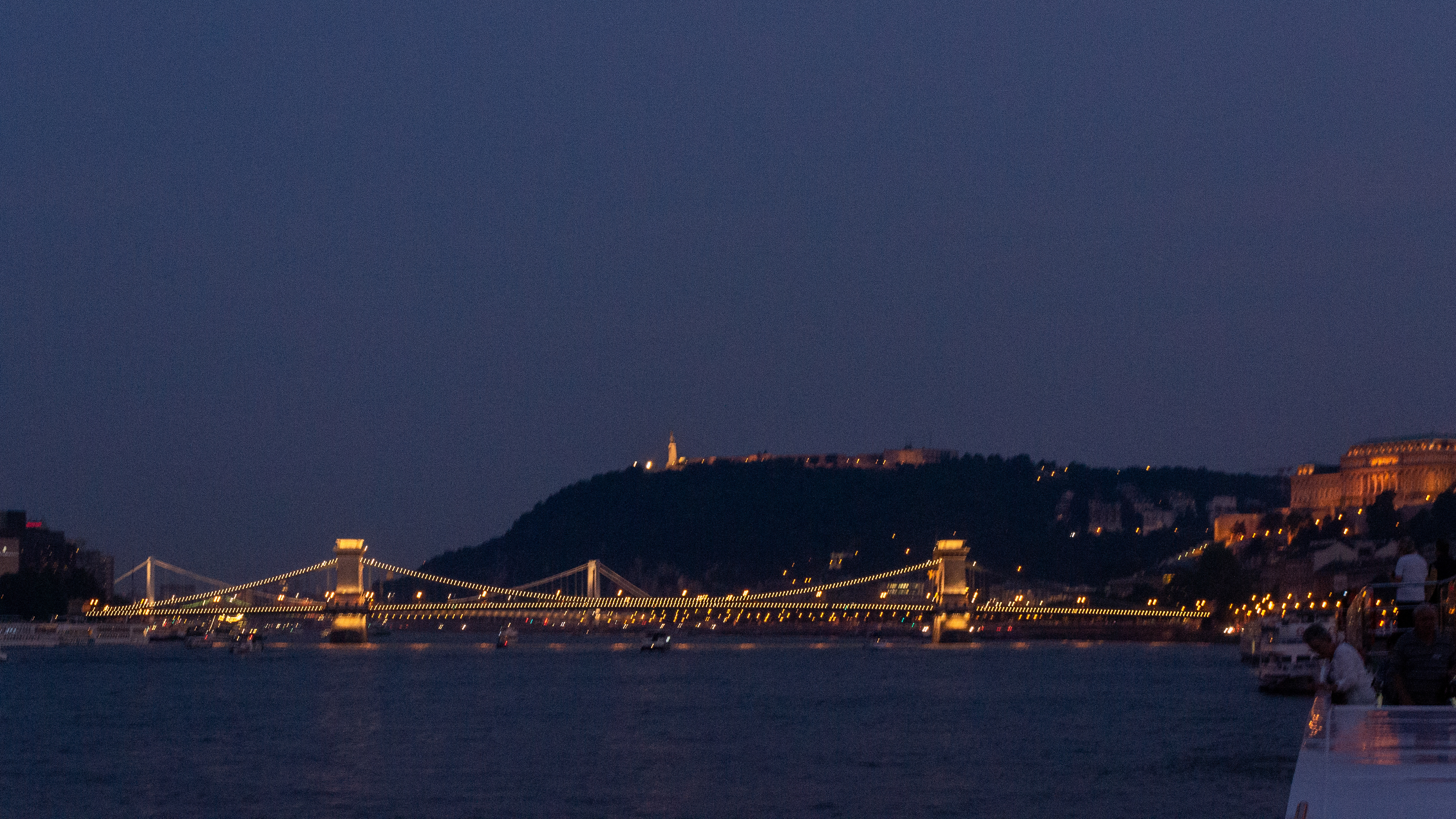
The famous Chain Bridge over the Danube lights up at night.
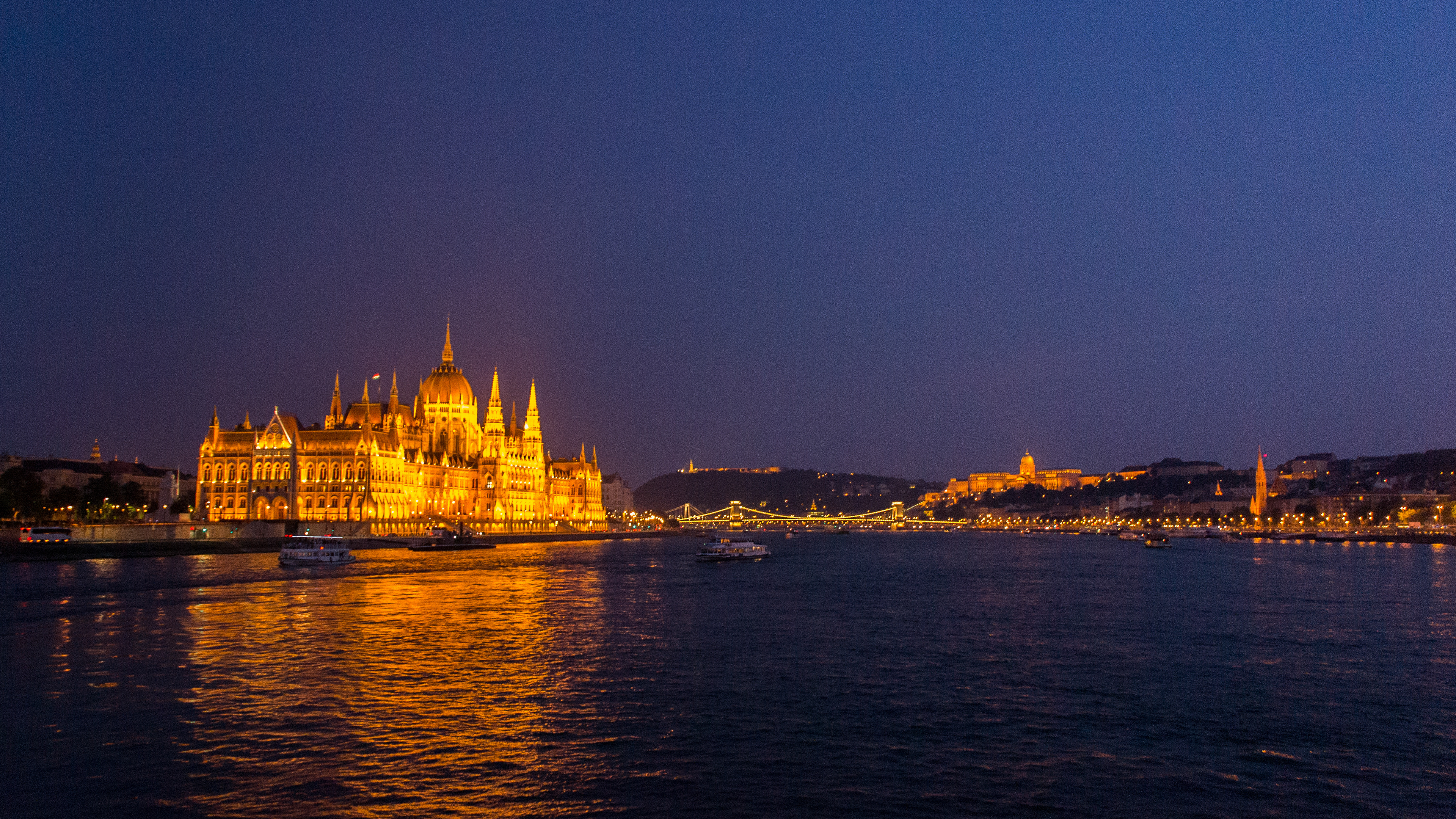
Budapest by night - Parliment House in the foreground with Buda Castle in the background seemingly linked by the Chain Bridge.
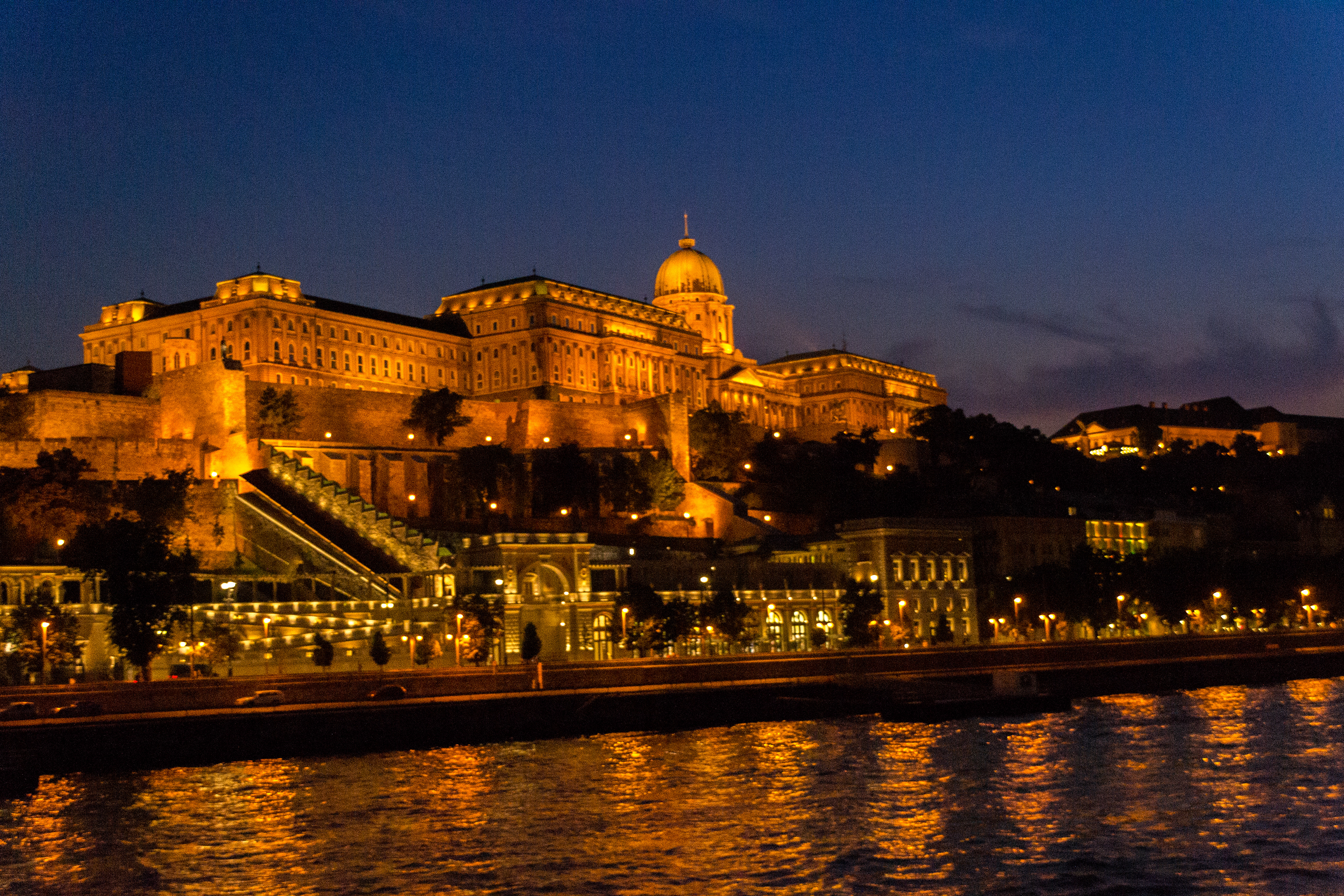
Buda Castle also known as the Royal Castle lit up against the night sky.
BRATISLAVA
The capital and largest city in Slovakia is our first stop on our journey up the River Danube. Bratislava is in southwestern Slovakia at the foot of the Little Carpathians, occupying both banks of the Danube and the left bank of the River Morava.
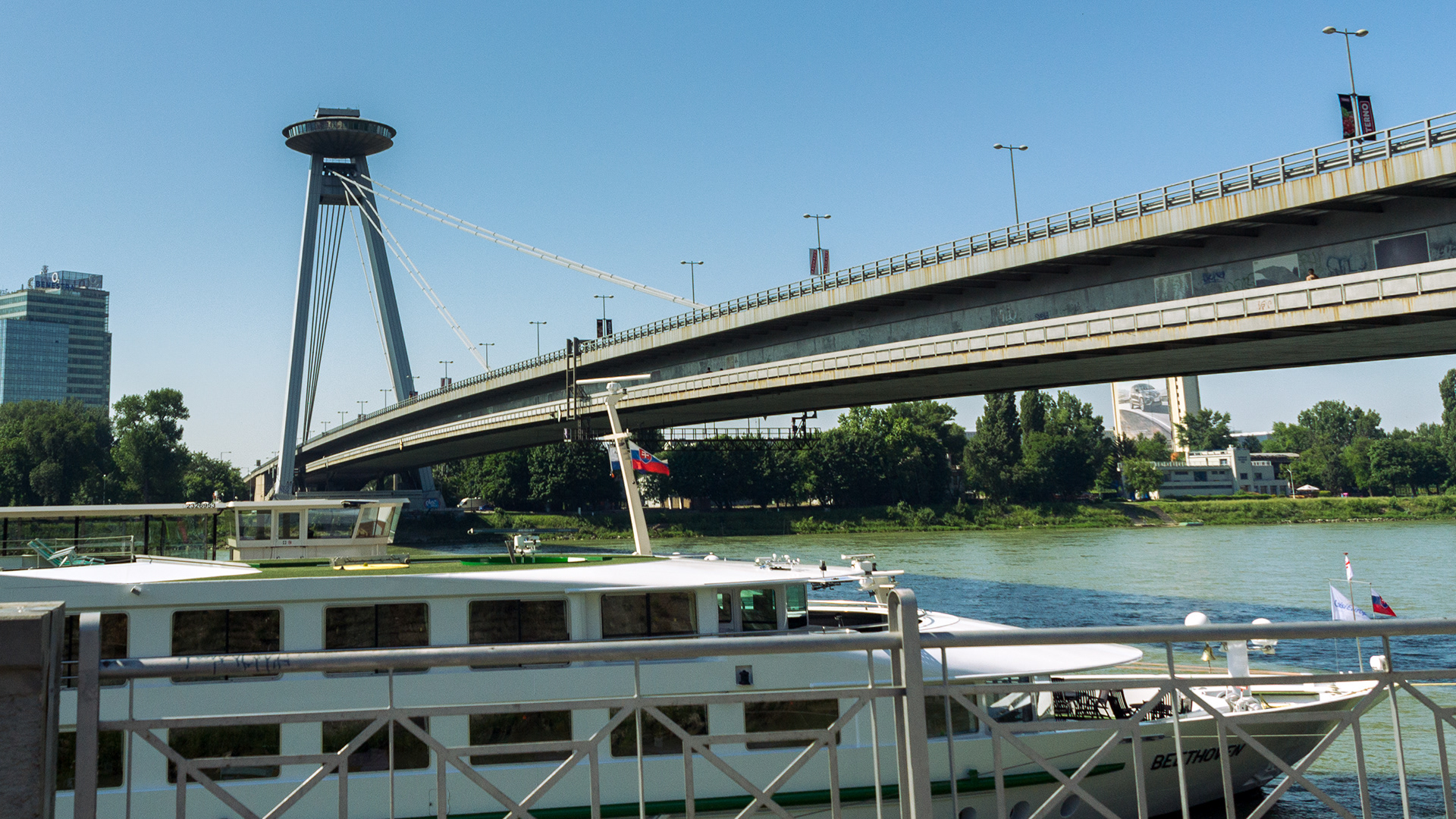
Most SNP ("Bridge of the Slovak National Uprising"), commonly referred to as Most Slovenského or the UFO Bridge over the Danube.

A shopper is reflected in the marble facade as she strolls through Rudnay Square. Cathedral of St Martin in the background is one of the oldest and finest in the city.
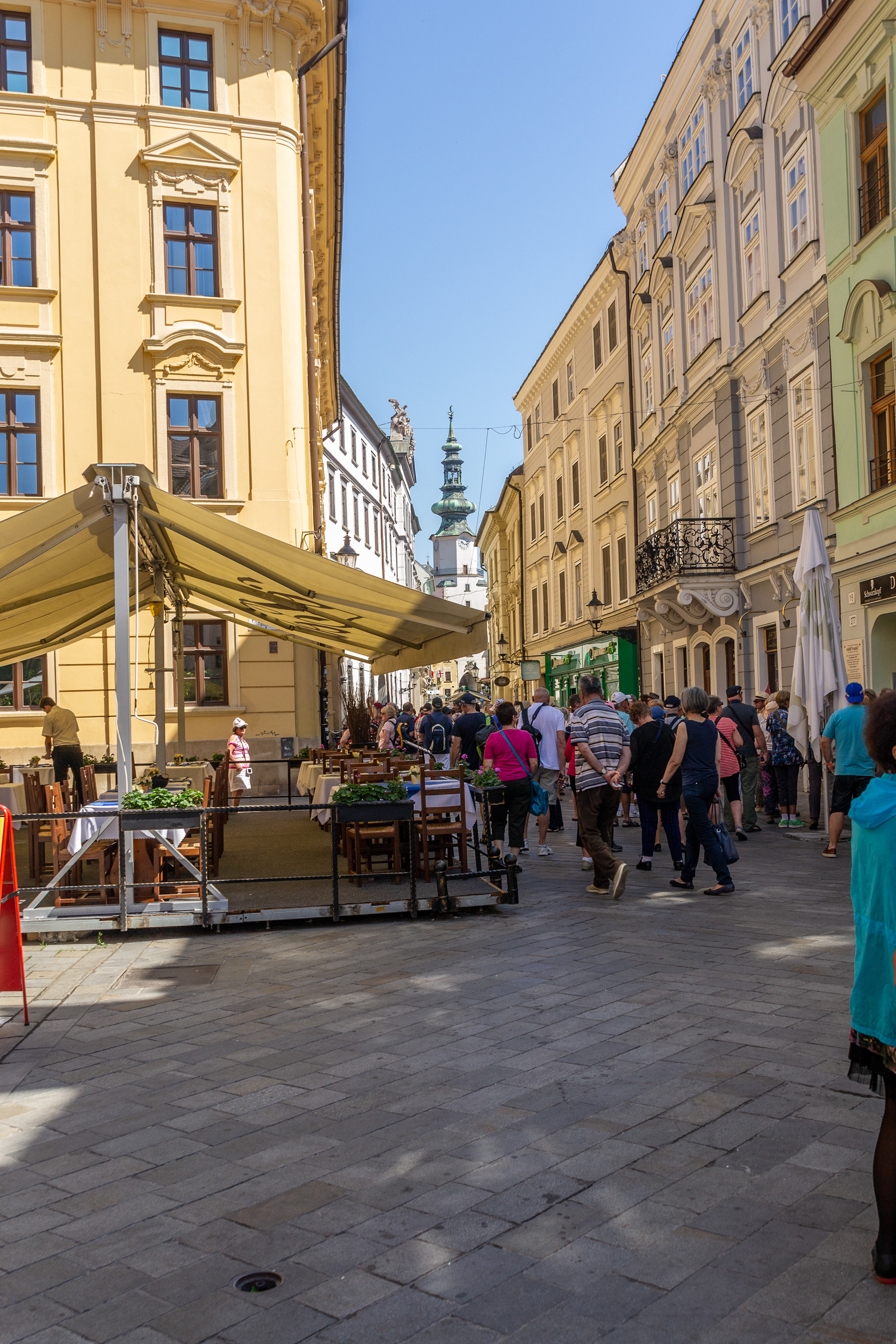
Narrow streets leading us towards Hlavne namestie, Bratislava's main square. The Town Hall's tower looms at the end of the laneway.

A view down one of the typically narrow paved streets of the Old town. In the background perched high on a hill is Bratislava Castle (Hrad Castle).

Historic buildings line the streets of Old Town Bratislava.

Palugyay Palace in Hlavne namestie, an impressive piece of architecture built in 1882
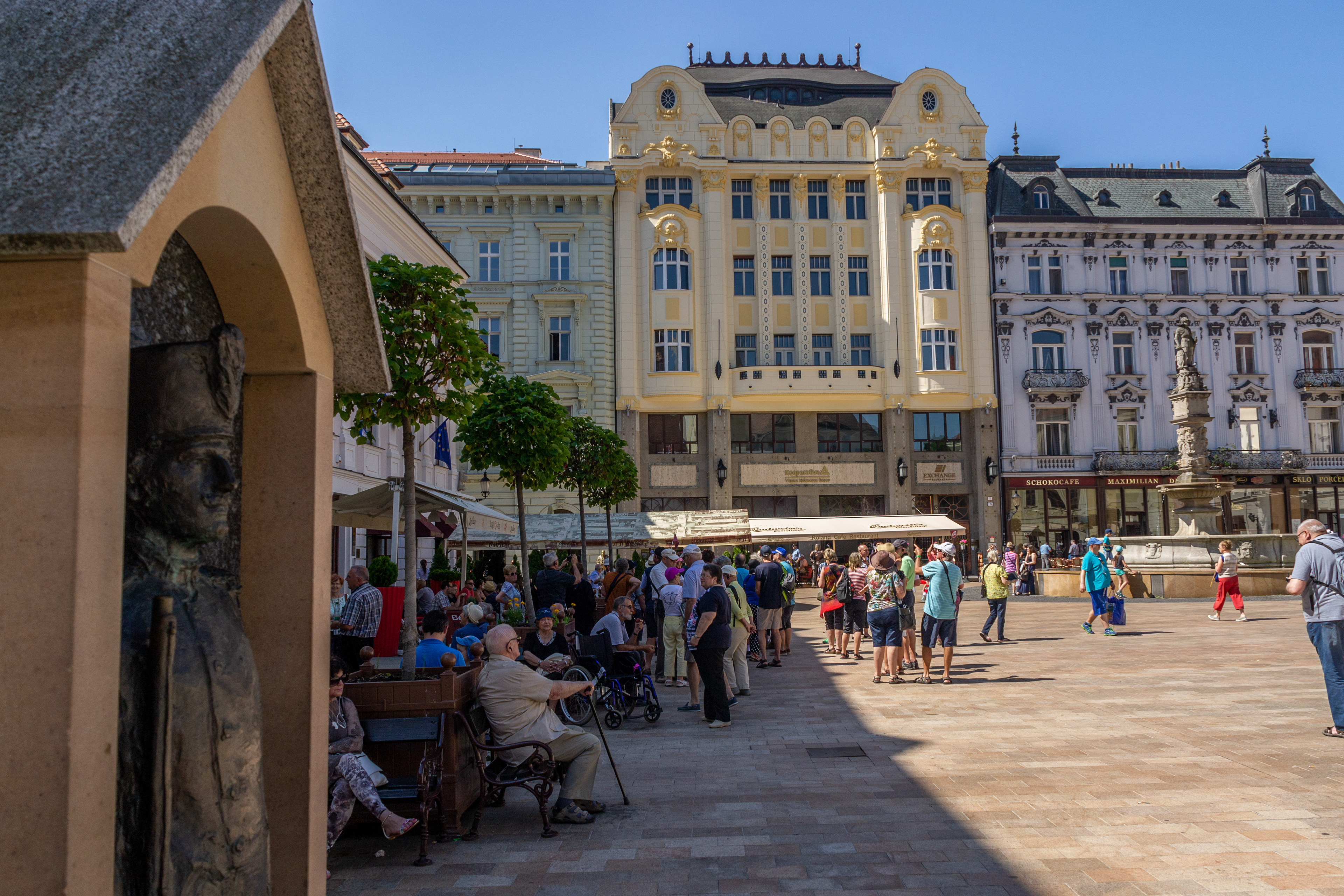
The crowds gather in Hlavne Namestie in front of the Palace of the Hungarian Exchange Bank.

Old Town Hall in Hlavne Namestie.
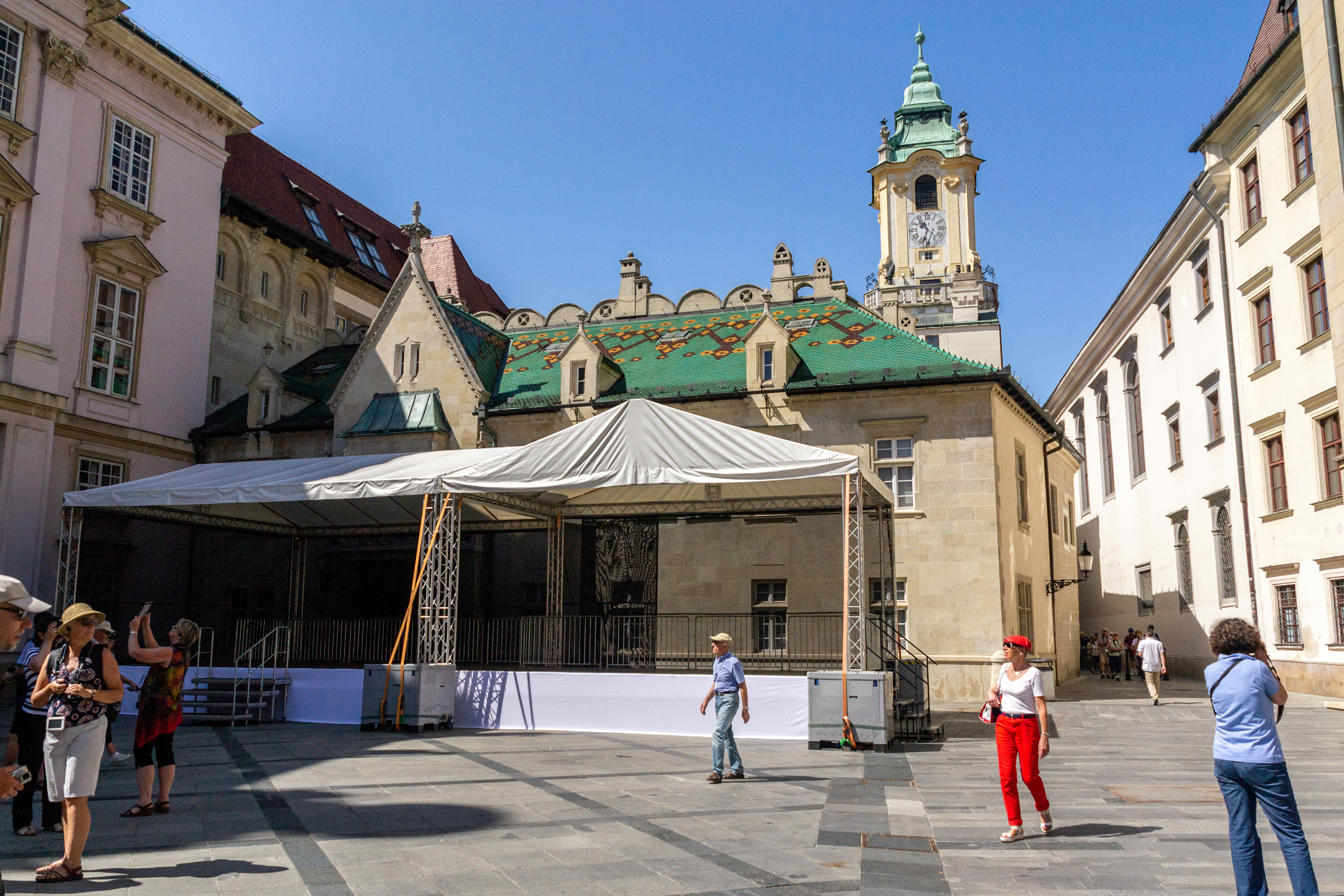
The clocktower looms above the patterned tiled roofline of the Town Hall. It is the oldest city hall in the country and it is one of the oldest stone buildings still standing in Bratislava, with the tower being built approximately in 1370.

Schone Naci - He greets people on the Sedlárska Street.
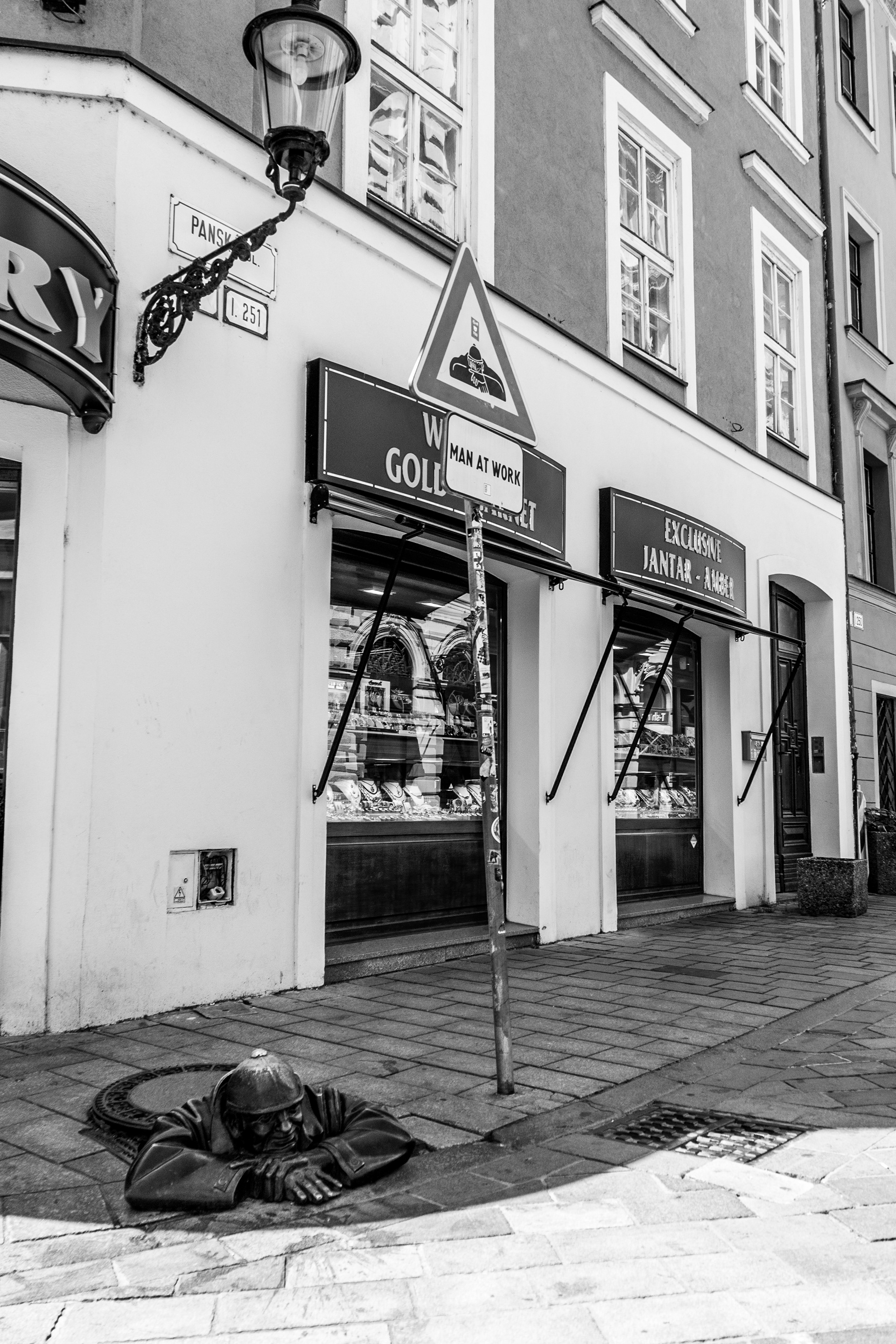
Cumil, the watcher has his own warning sign.
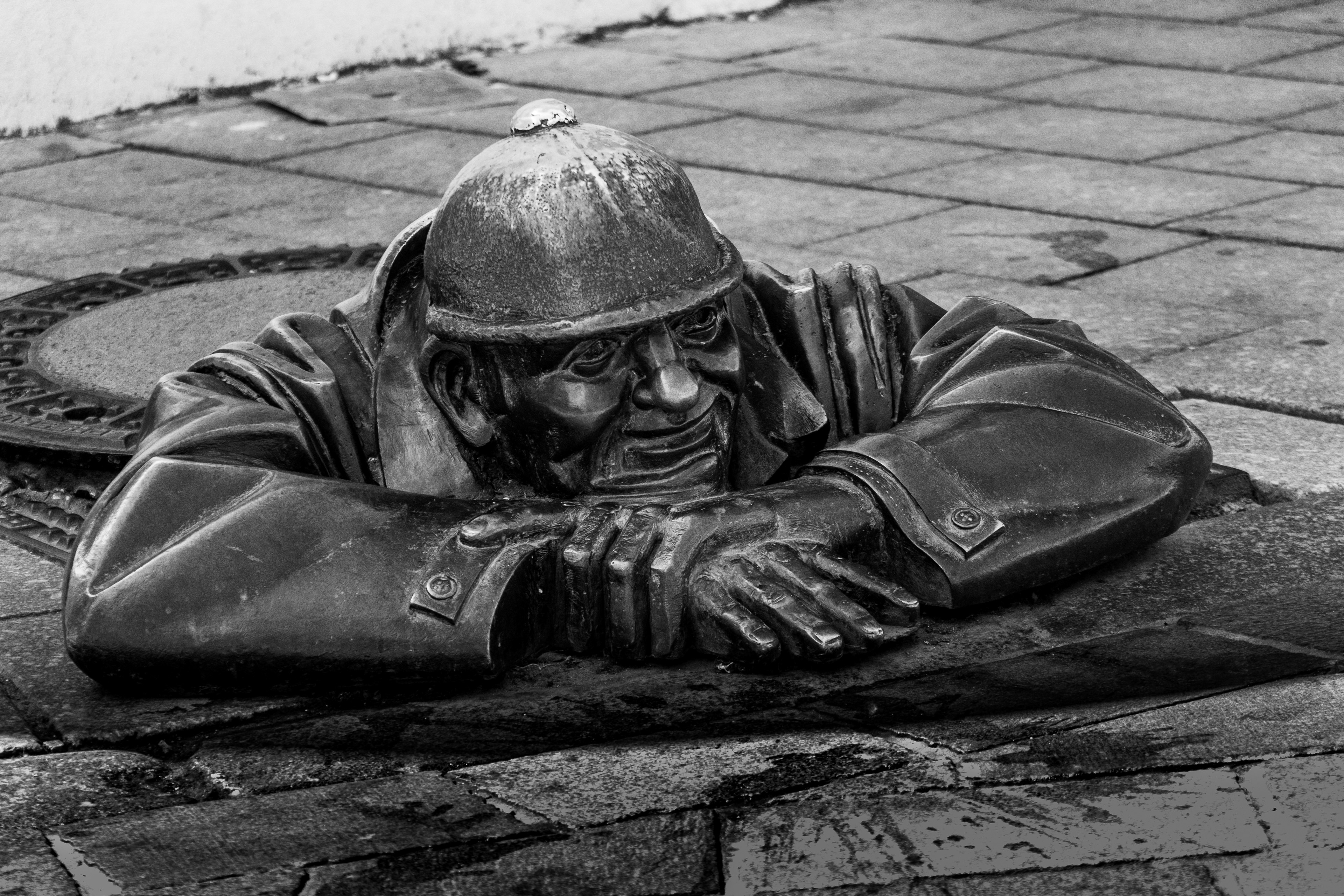
Cumil up close.

An intriguing archeticural feature of this building in the old town area is this figure peering out of an alcove high above the street.

Outdoor dining in the streets of the Old Town Bratislava.
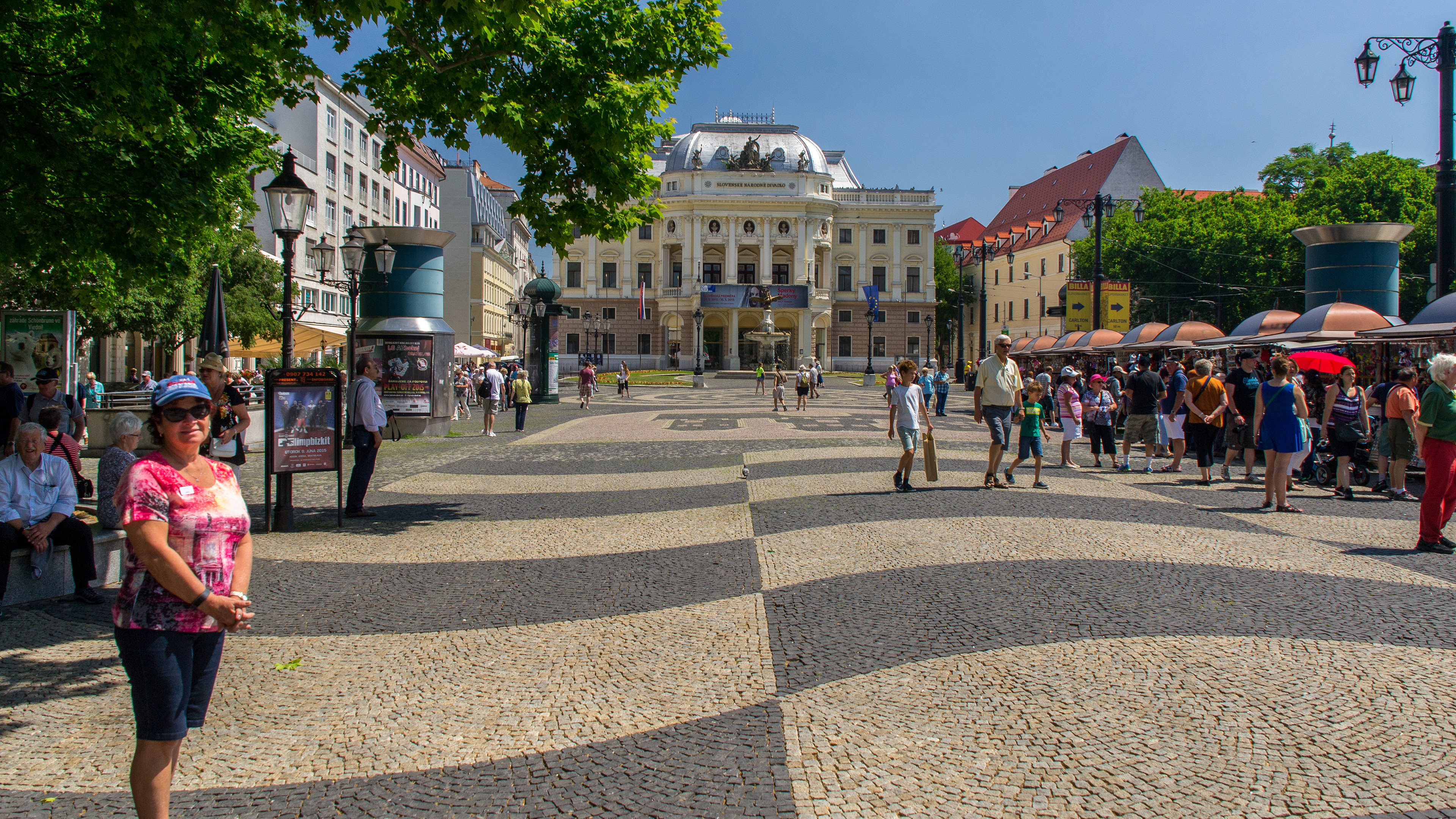
Cher in Hviezdoslav’s Square with the Slovak National Theatre in the background.
DURNSTEIN
Traversing The Wachau valley, the landscapes arguably are the most beautiful and picturesque during our cruise. The best-known town of The Wachau is Durnstein which has retained much of its medieval character. Its symbol is the Augustinian Convent whose Church has a distinctive blue Baroque style bell-tower.
High above Durnstein are the ruins of Kuenringerburg fortress dating from the 12th century. Famous for the imprisonment of Richard the Lionheart following his capture in 1193.
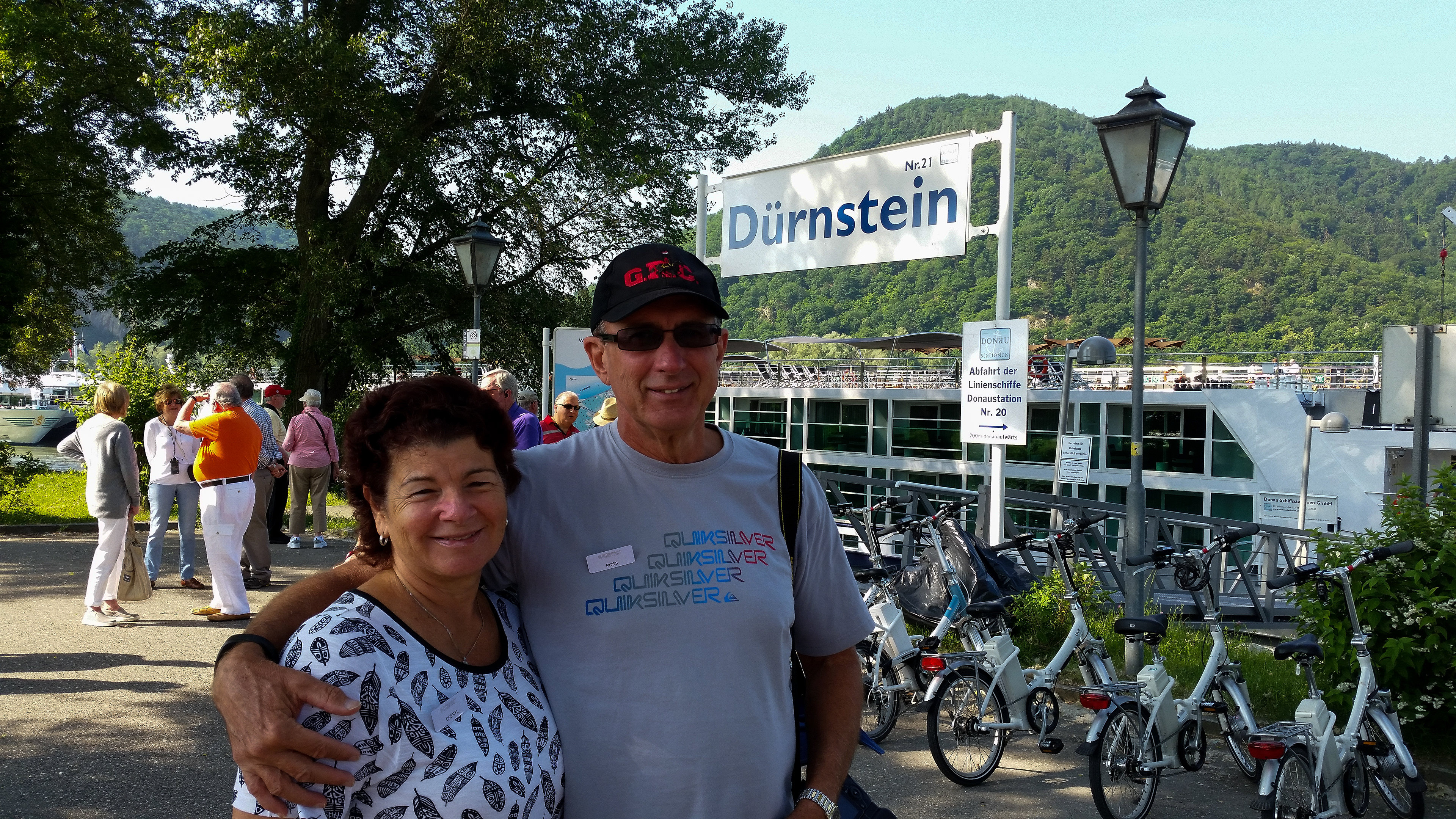
Durnstein in the Wachau valley, we disembark to explore the village.

Ahead the blue Baroque style bell-tower emerges between the verdant landscape to greet us.
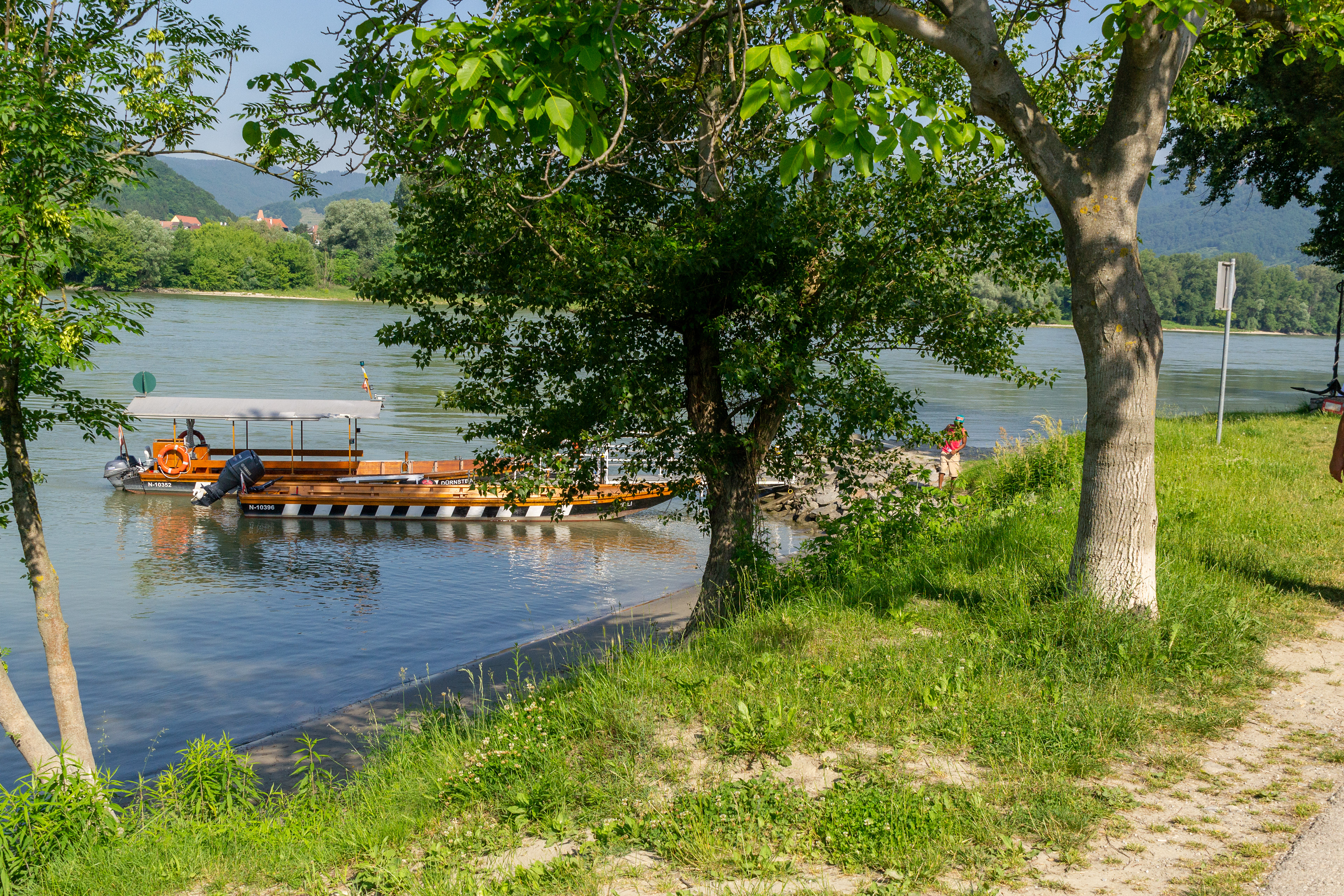
Local river ferries moored on the riverbank.
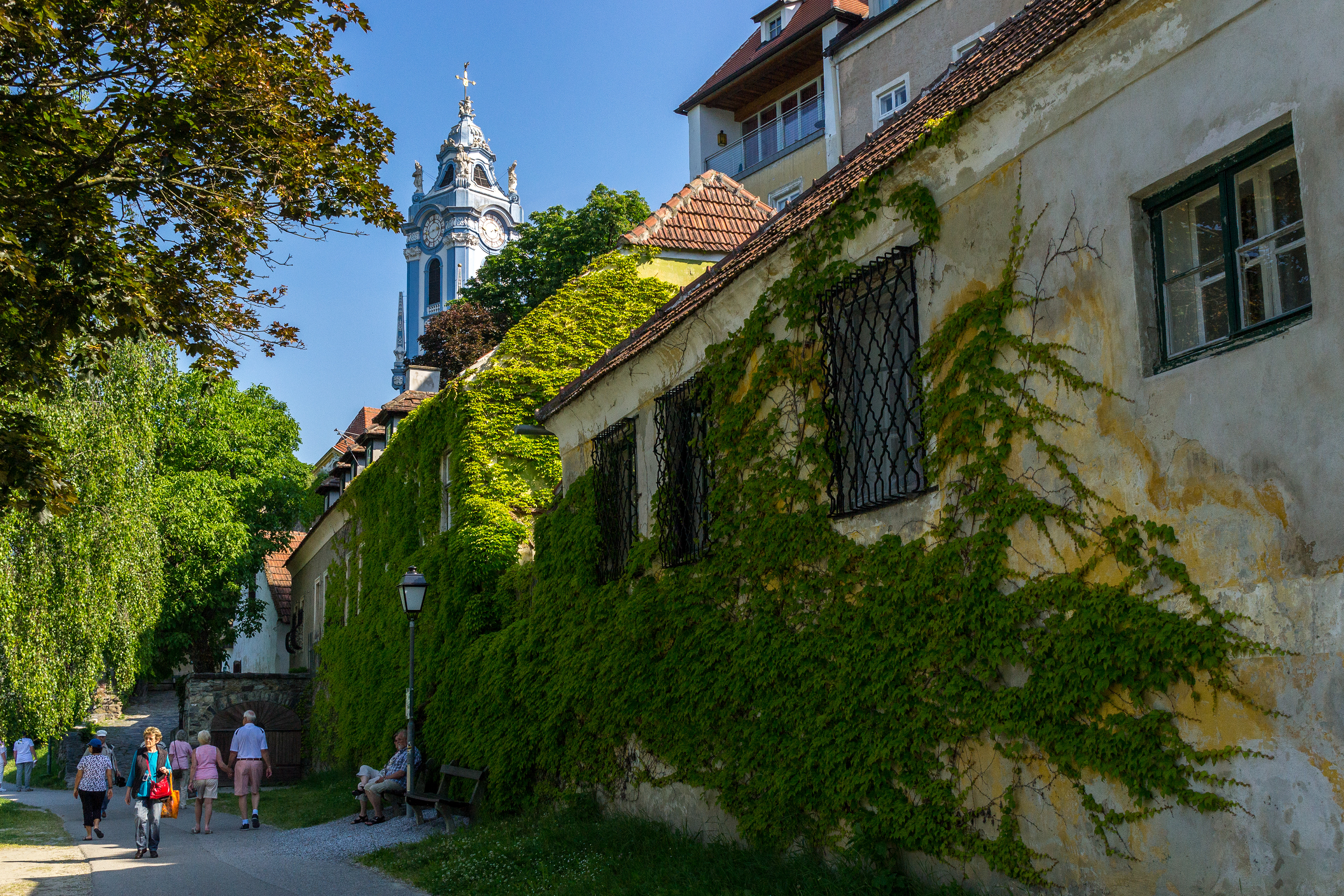
The bell-tower is a visible reference point of the landscape as we enter the village beside ivy covered buildings..

The blue and white tower of the abbey church is a regional landmark.
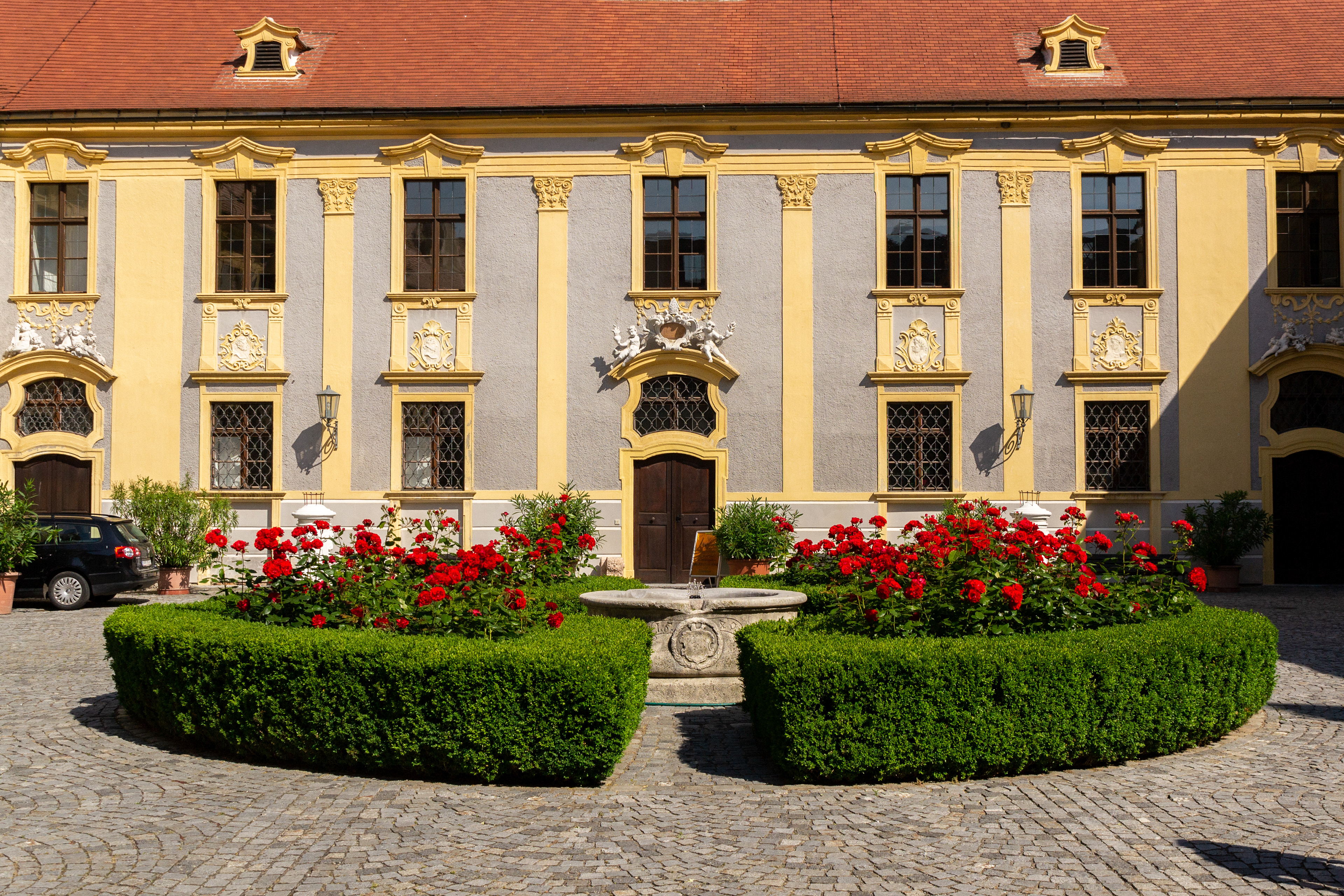
Manicured rose gardens nestle in the central courtyard of the Augustinian Convent.
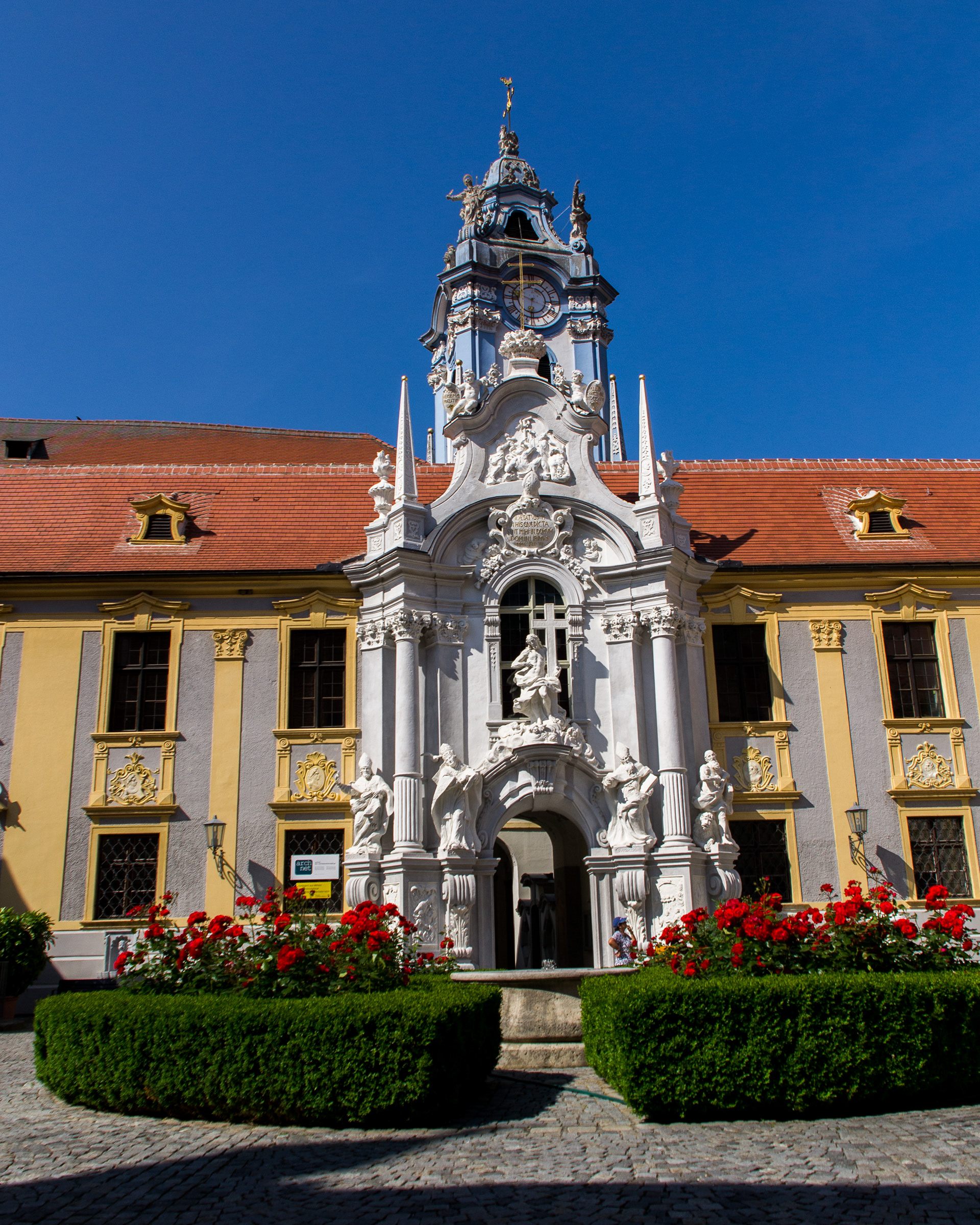
The spectacular Baroque entrance to the Augustine Convent with the Churche's blue bell-tower in the background.
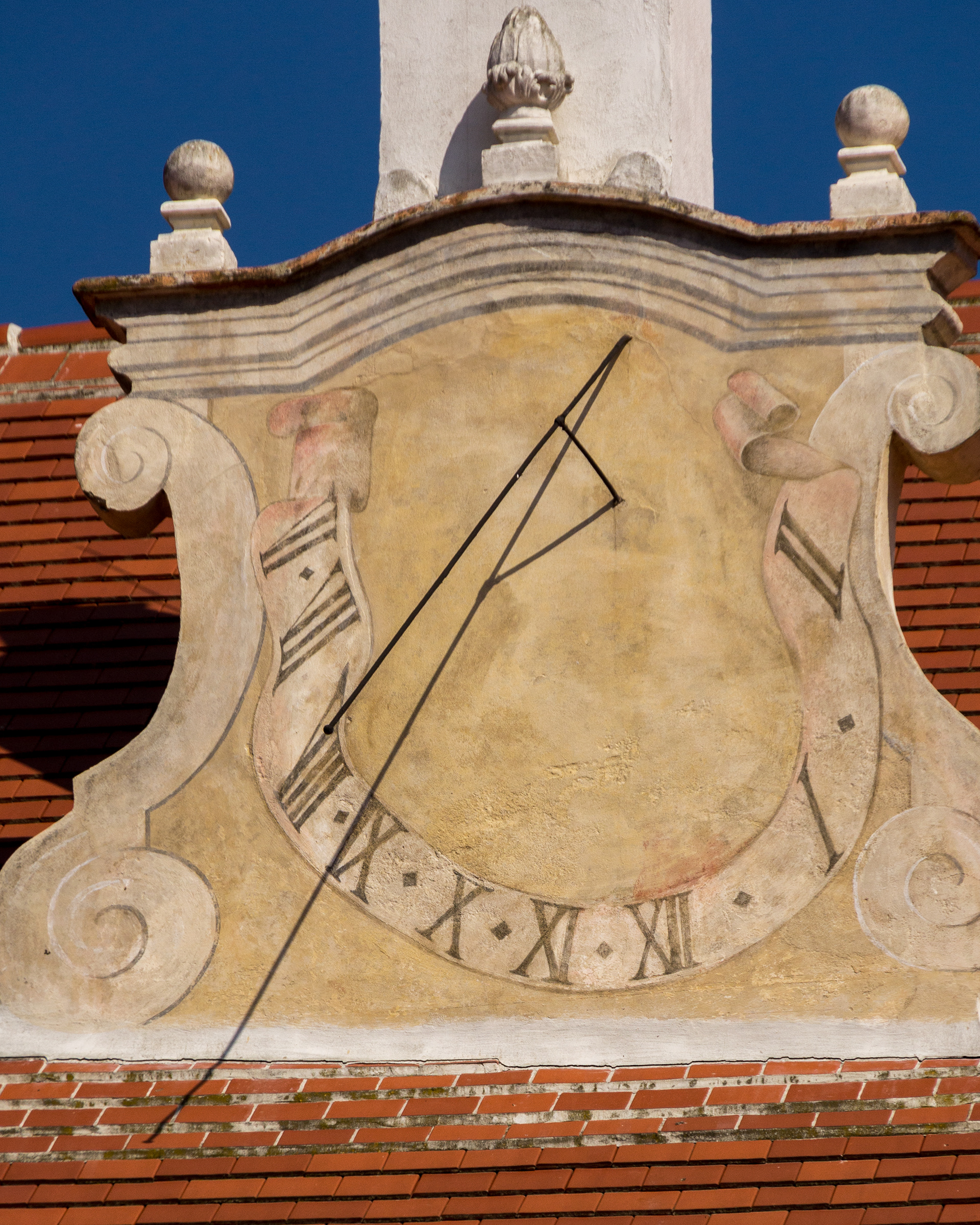
9 O'clock in the morning.

Exploring the narrow cobblestone streets of Durnstein.
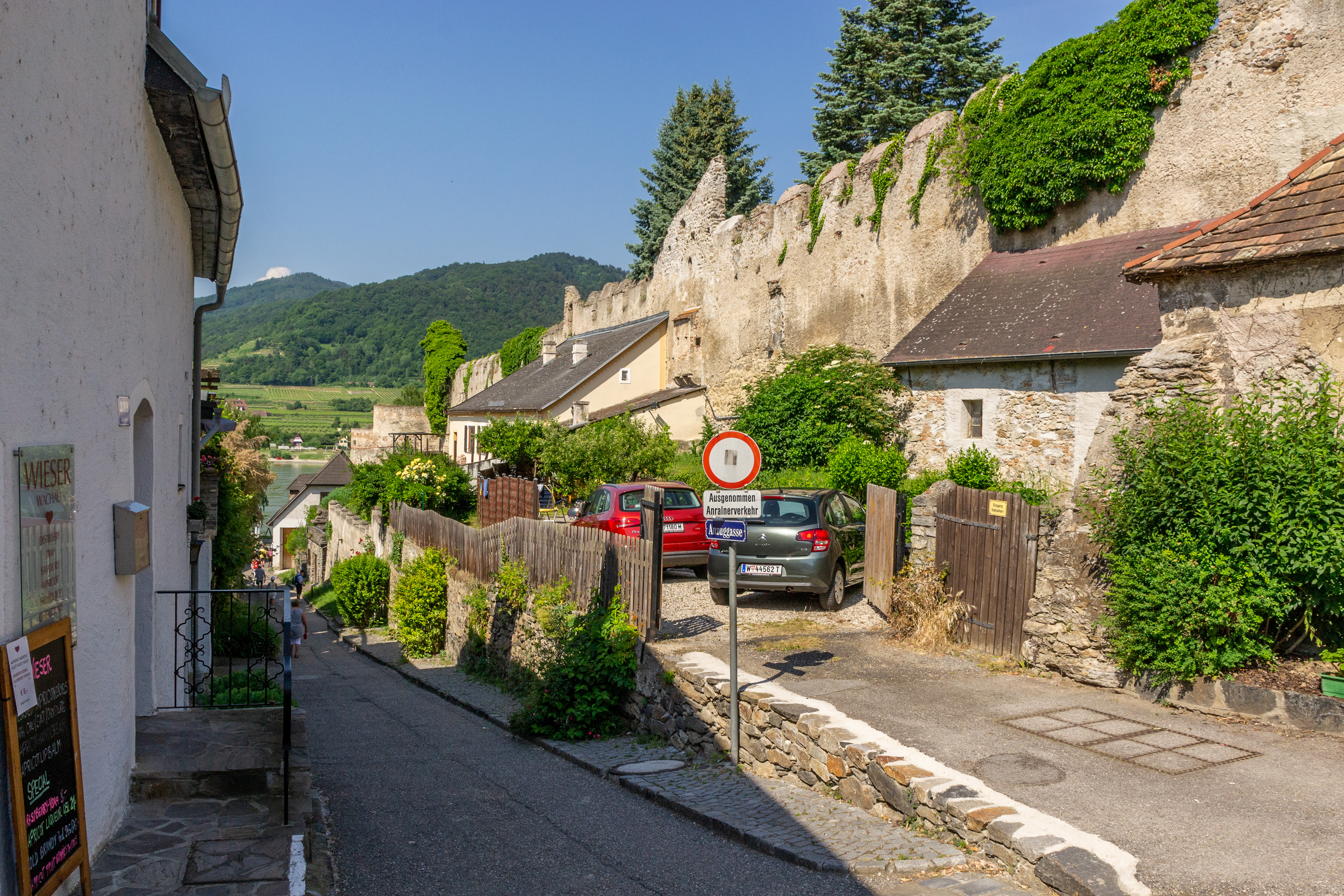
Fortified stone walls help retain the medieval character of Durnstein.

Post-card picture-perfect, vineyards and the medeival stone walls of Durnstein lie in the shadow of the Kuenringerburg fortress ruins.

Vineyards surround the fortified stone walls of the village of Durnstien.
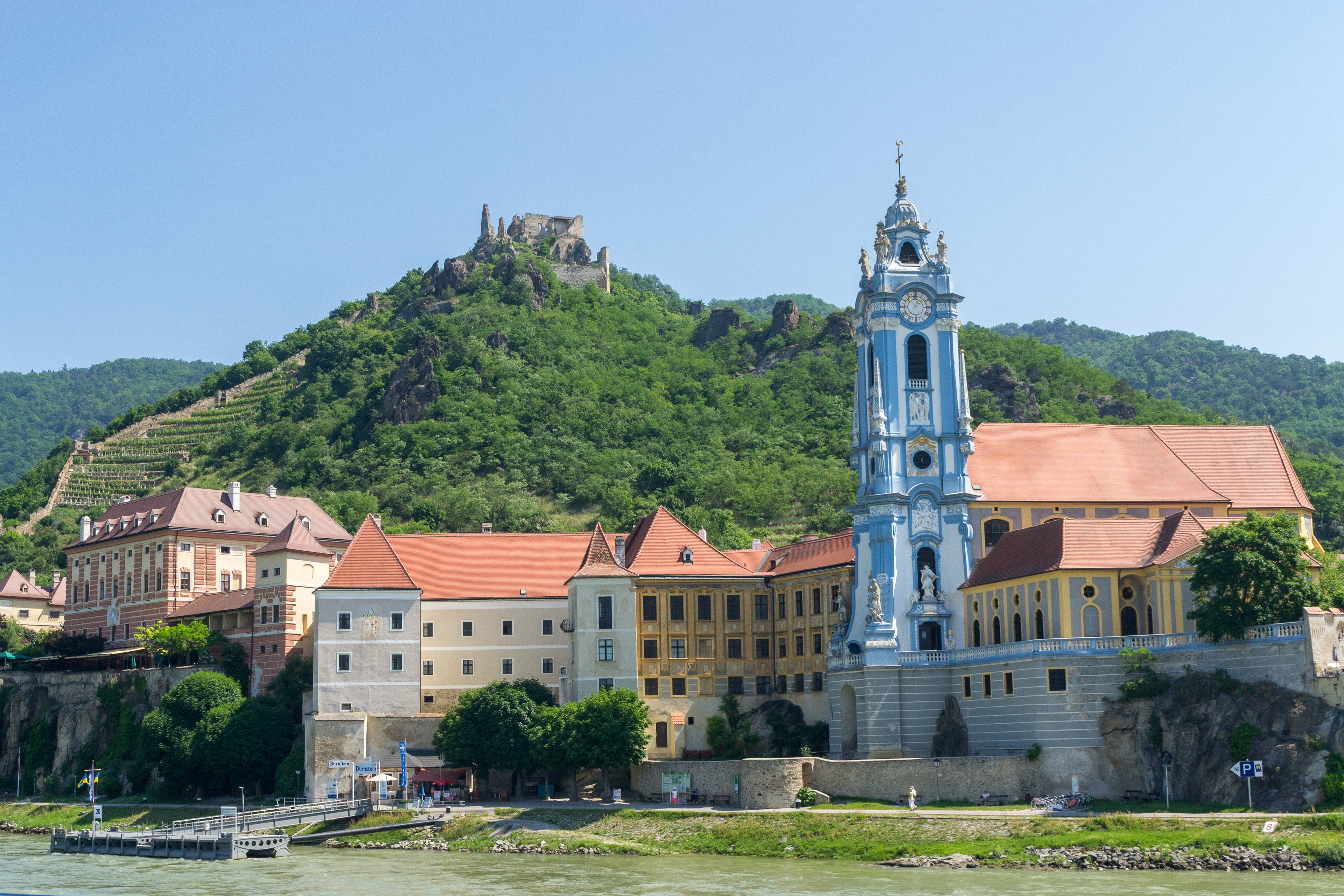
The Augustinian Abbey Church's blue Baroque bell-tower on the bank of the River Danube with the Kuenringerbuig fotress ruins above, arguably one of the most famous of images in the Wachau region of Austria.
WACHAU
The valley of the Wachau only occupies about 32km of the River Danube but it arguably offers some of the most memorable and beautiful scenery along the river as we travel towards Melk. The landscape is dotted with picturesque villages, craggy fortresses, vineyards and it's famous apricots.
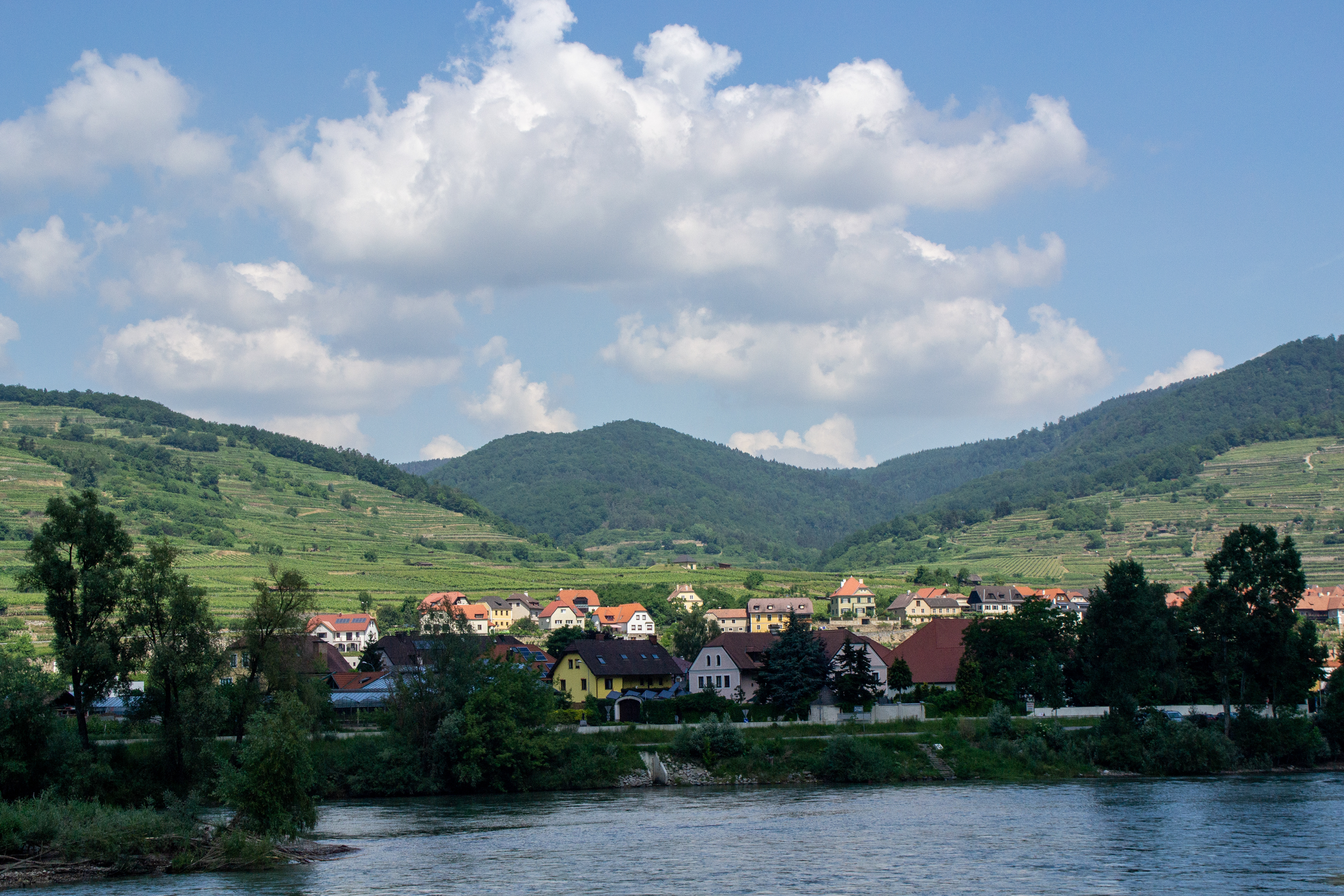
Some of the stunning scenery as we cruise through the Wachau.
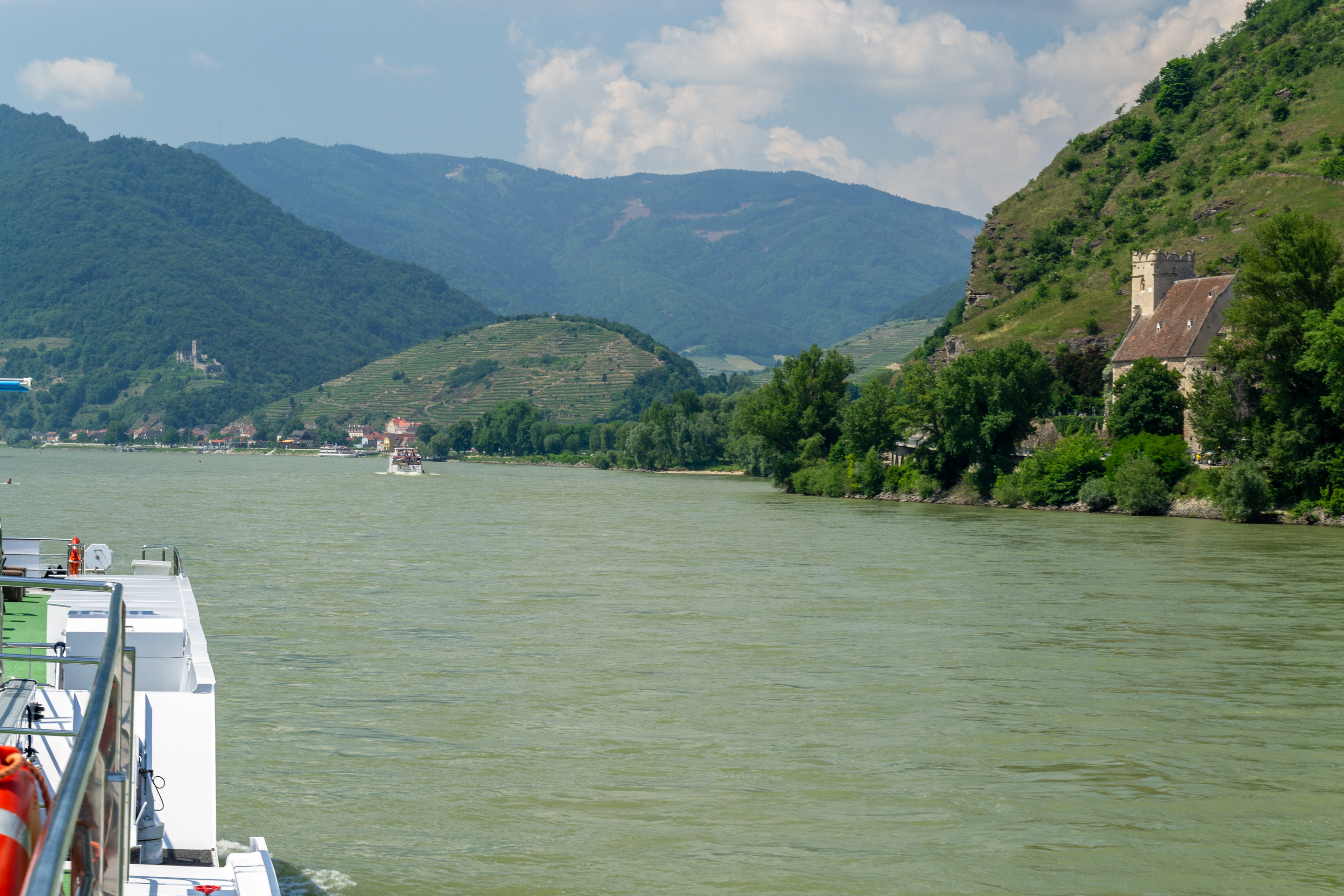
Cruising through the Wachau approaching Spitz, St. Michael church on the right bank.
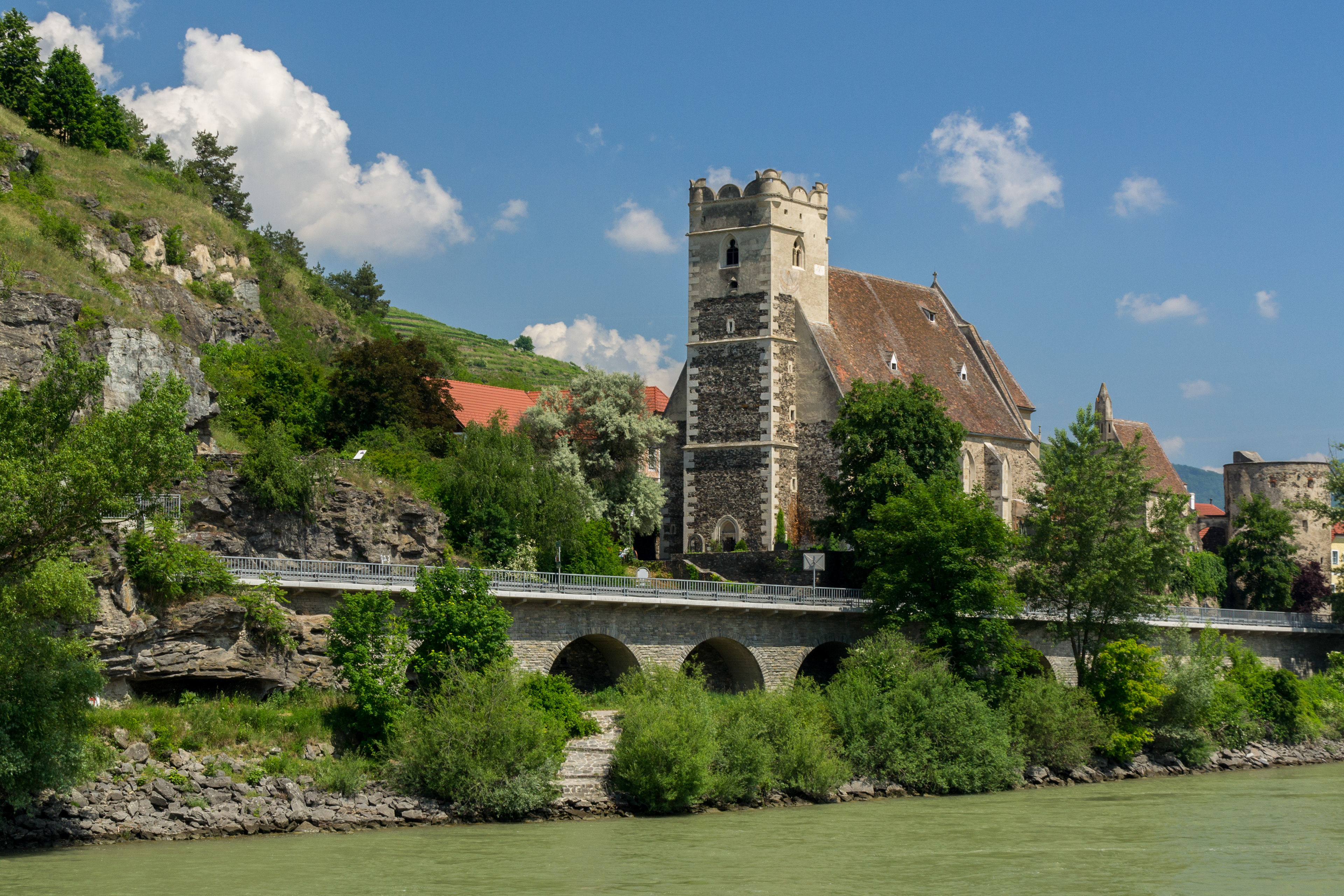
St Michael one of the oldest fortified churches Wachau Valley. The walls were strengthened and the tower built to protect inhabitants from invading Turks.

The town of Spitz with the ruins of the famous fortress of Hinterhaus in the background.

Spitz an der Donau is a market town in the district of Krems-Land. "Tausendeimerberg" (the "Hill of a Thousand Buckets") is so named because of the many grapes that grow there.
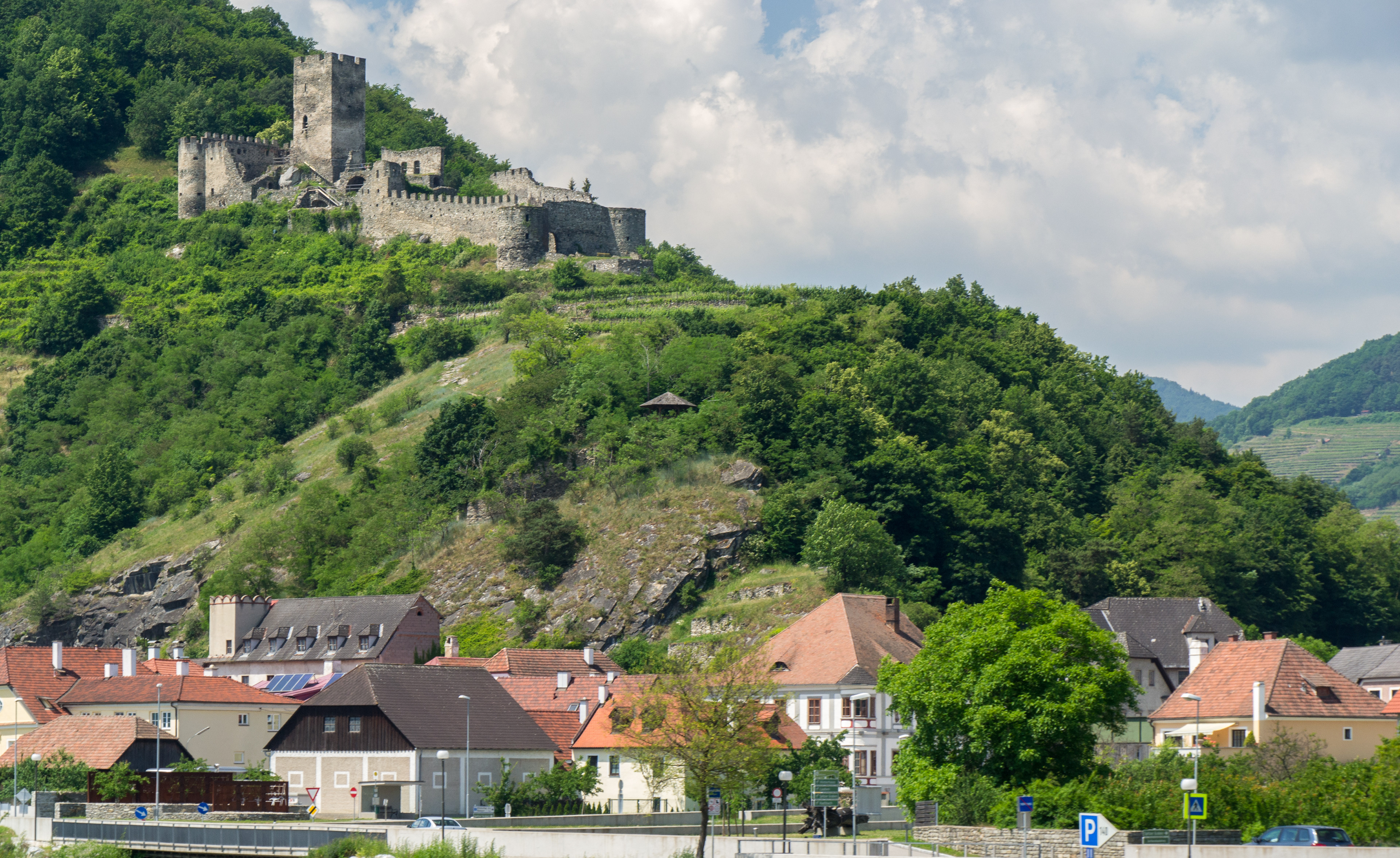
Hinterhaus Castle ruins above Spitz.
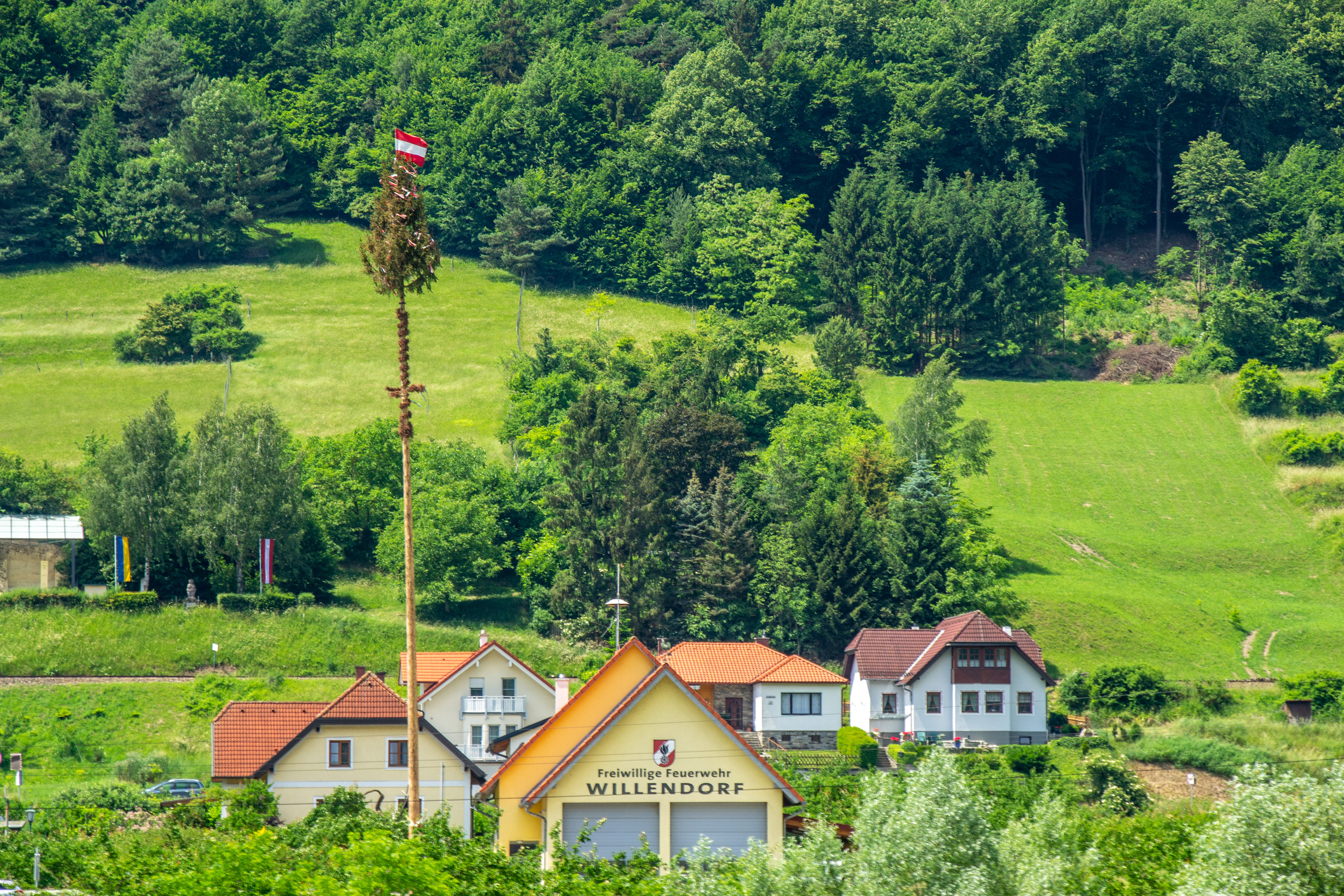
A seemingly unassuming village with an amazing story. The Venus of Willendorf was discovered in Willendorf in 1908 and remains the most important Upper Palaeolithic find in Austria. It is around 30,000 years old.

Around almost every bend in the river the most amazing fortresses appear, perched precariously atop precipitous cliffs.
MELK ABBEY
Melk Abbey is a Benedictine Abbey above the town of Melk, Lower Austria, on a rocky outcrop overlooking the river Danube.
Today's Baroque abbey was built between 1702 and 1736, noteworthy are the abbey church and frescoes. The library with countless medieval manuscripts, including a famed collection of musical manuscripts is world renown.

Overlooking the entry court to the Abbey with its manicured gardens.
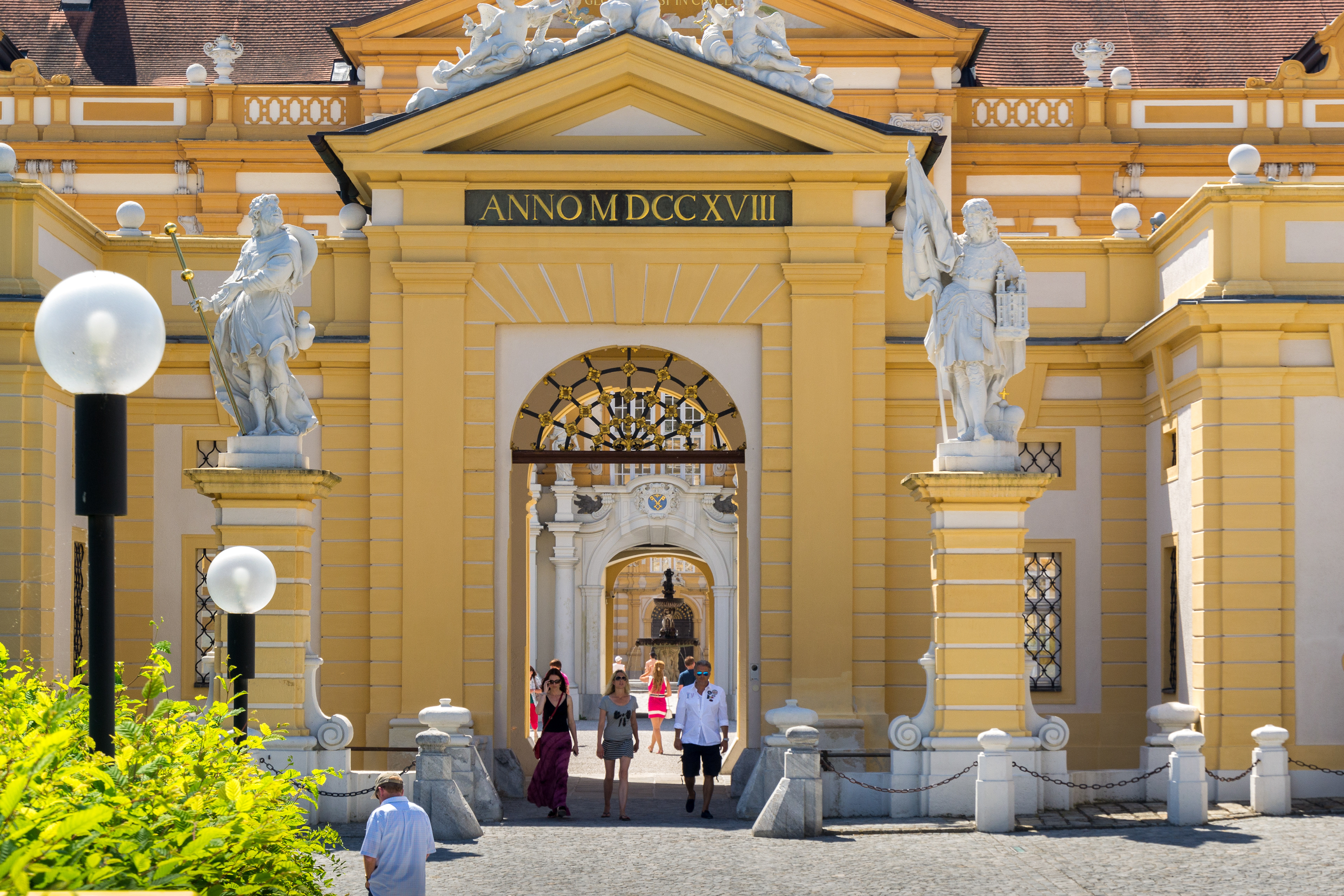
Baroque architecture of the main entrance.
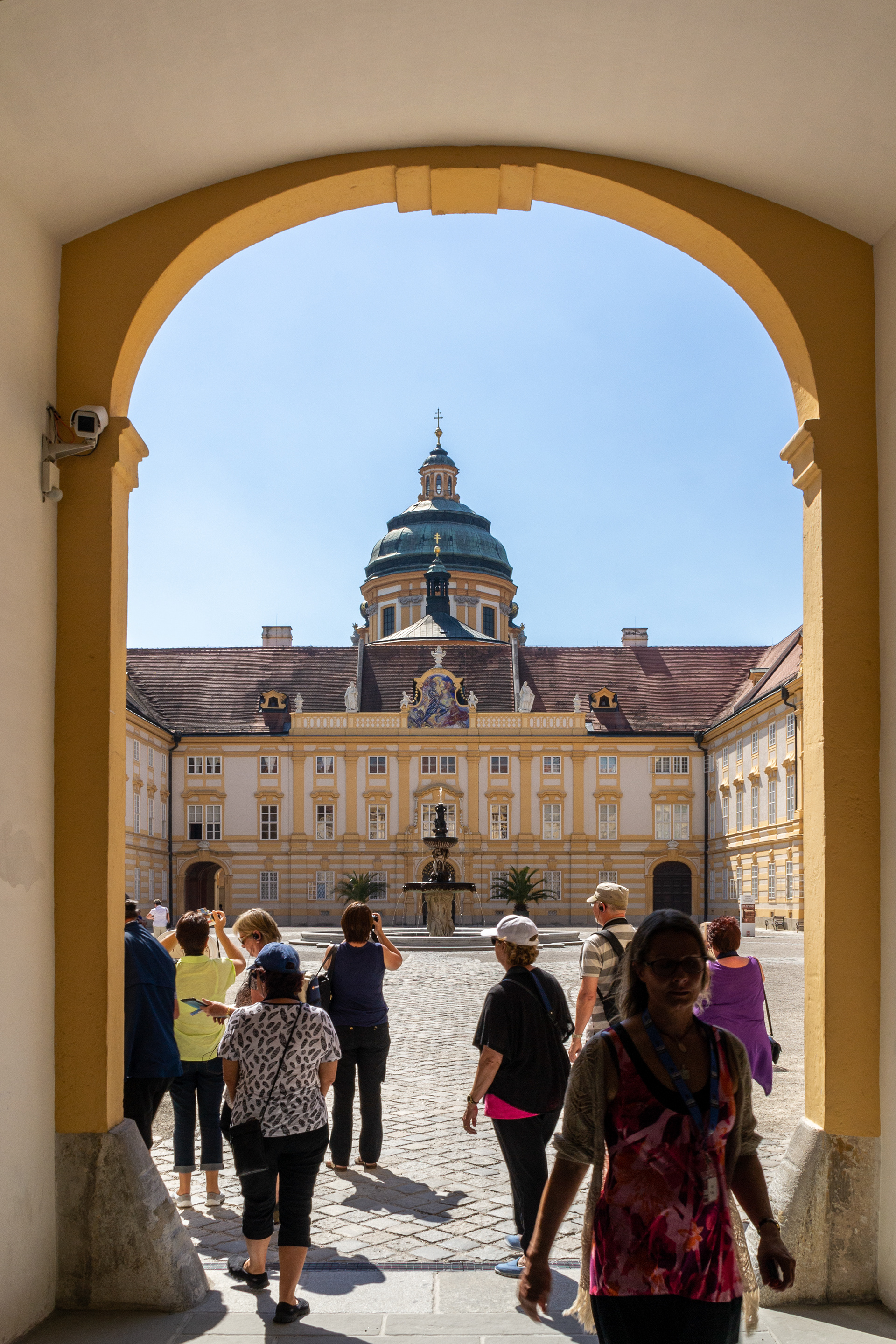
Entering Prelates courtyard.
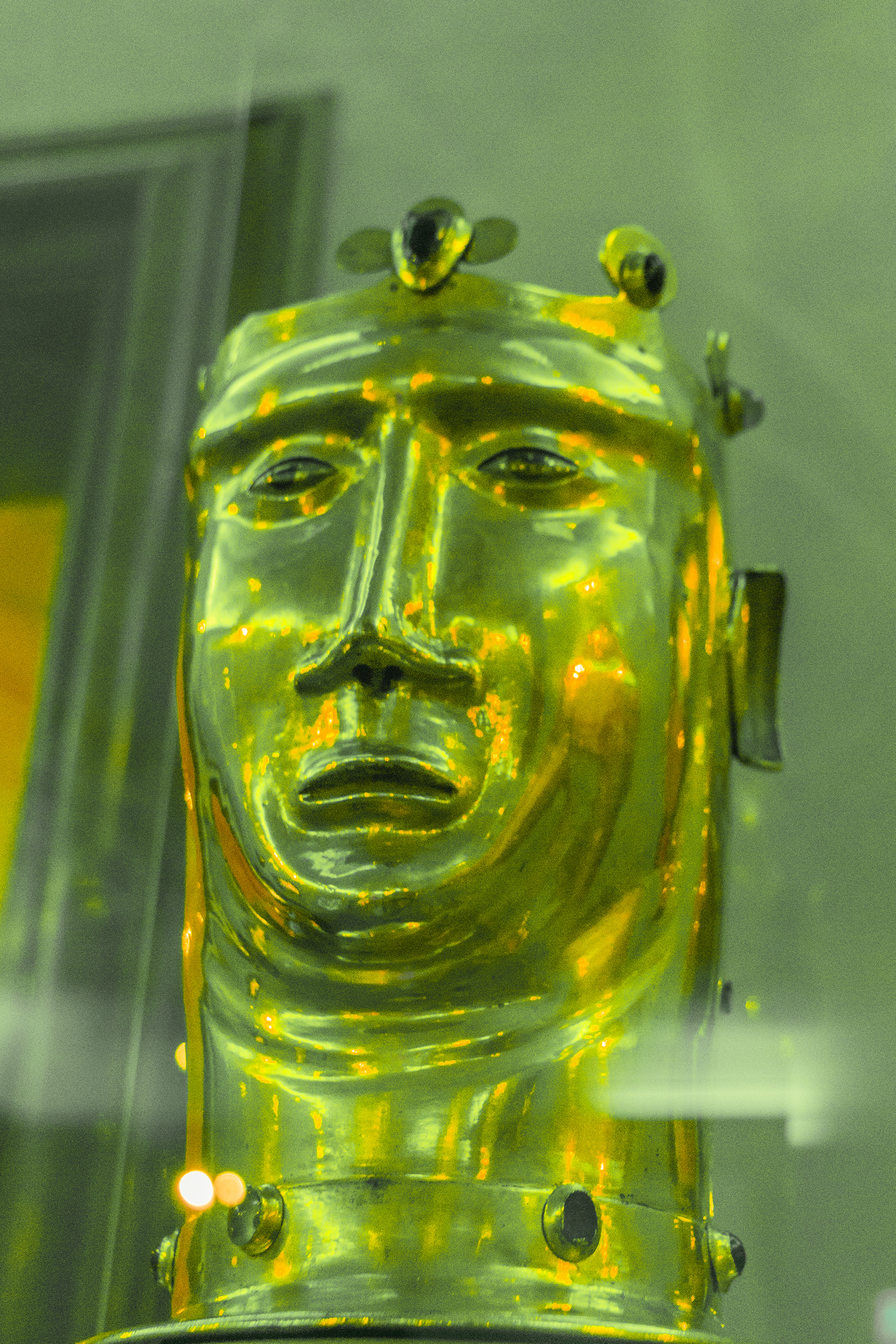
One of the artifacts of Melk Abbey.
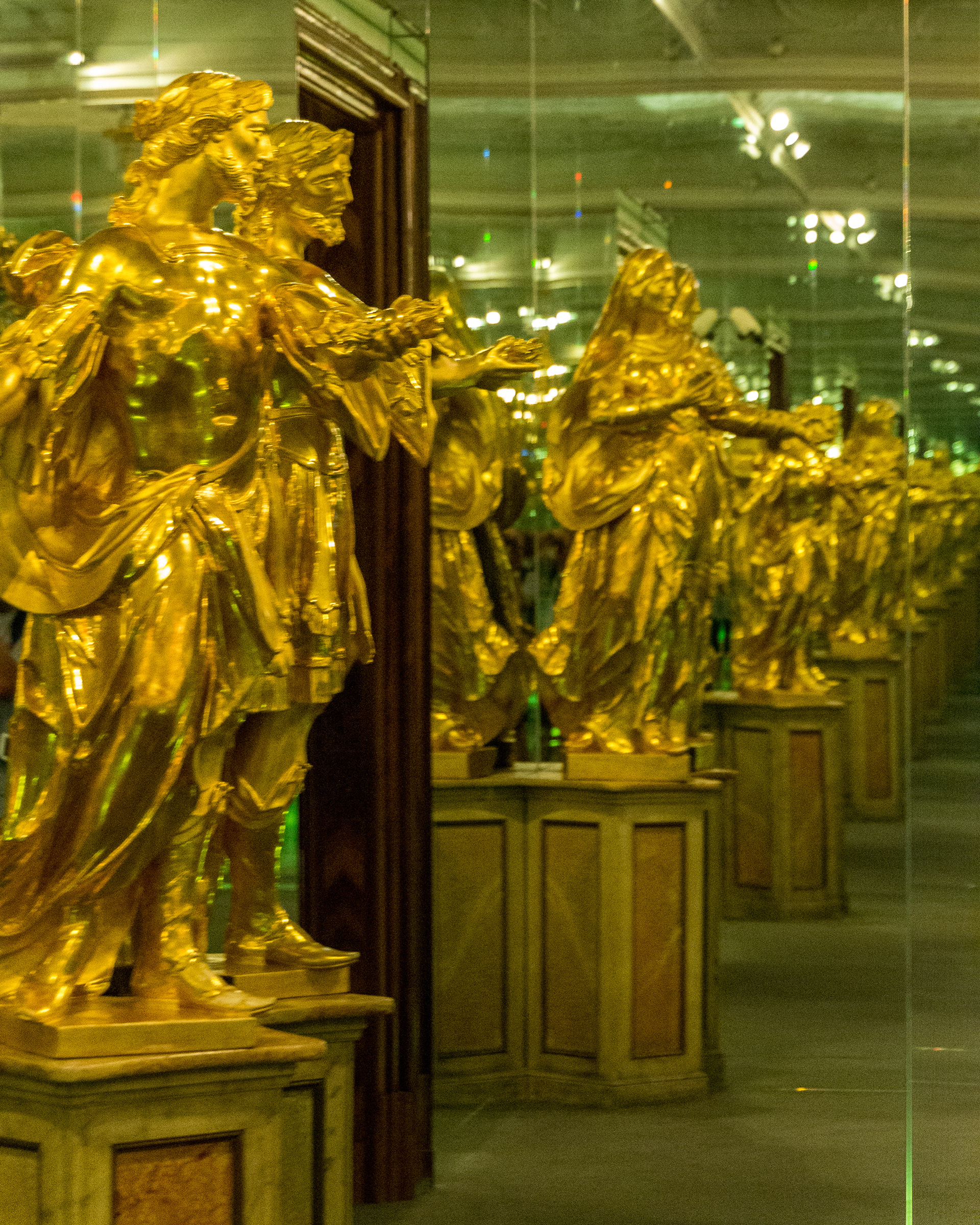
Mirror maze effect multiplies this gilded statue.

Artifacts of the Abbey's green room.
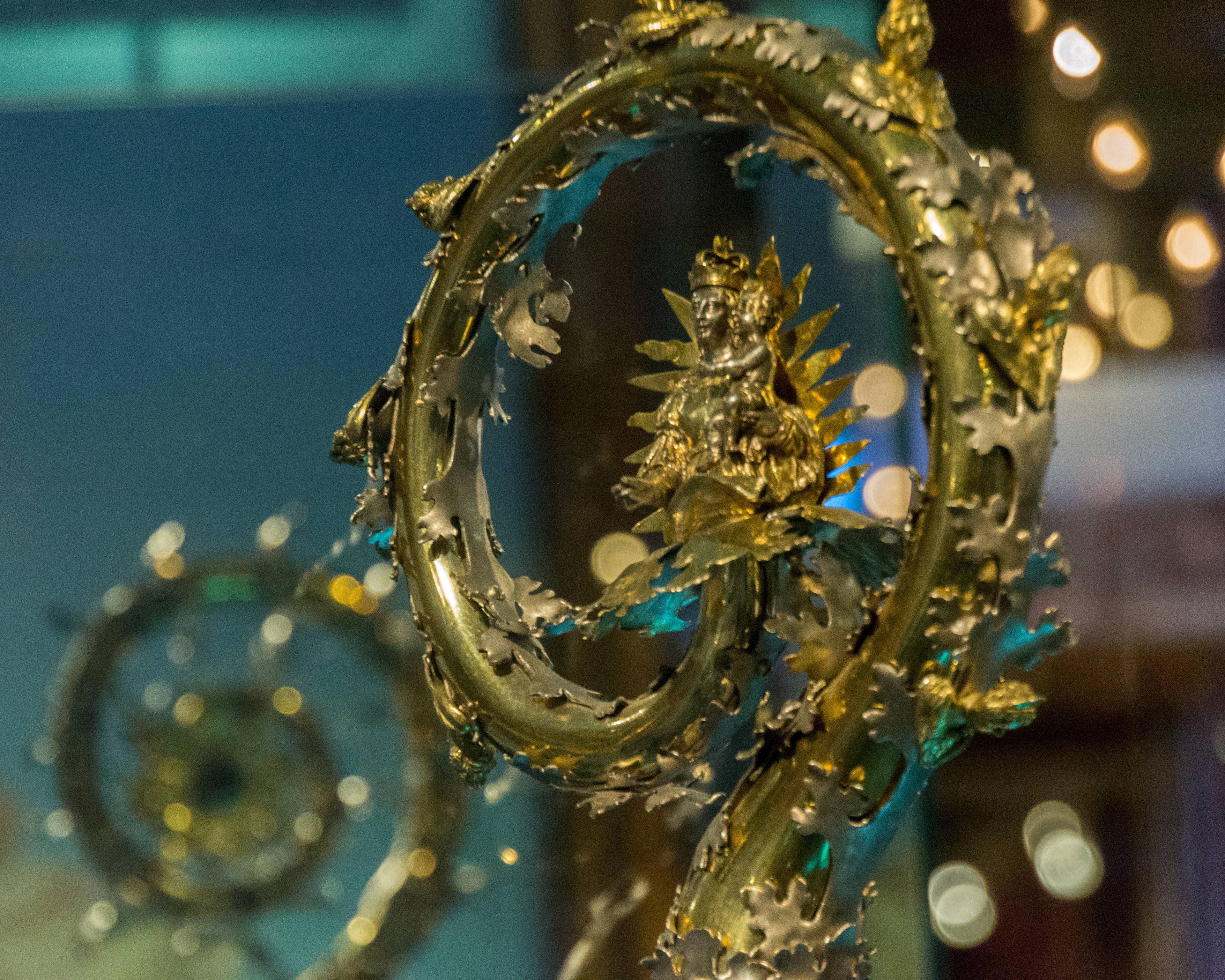
A golden Scepter with ornate decorations.
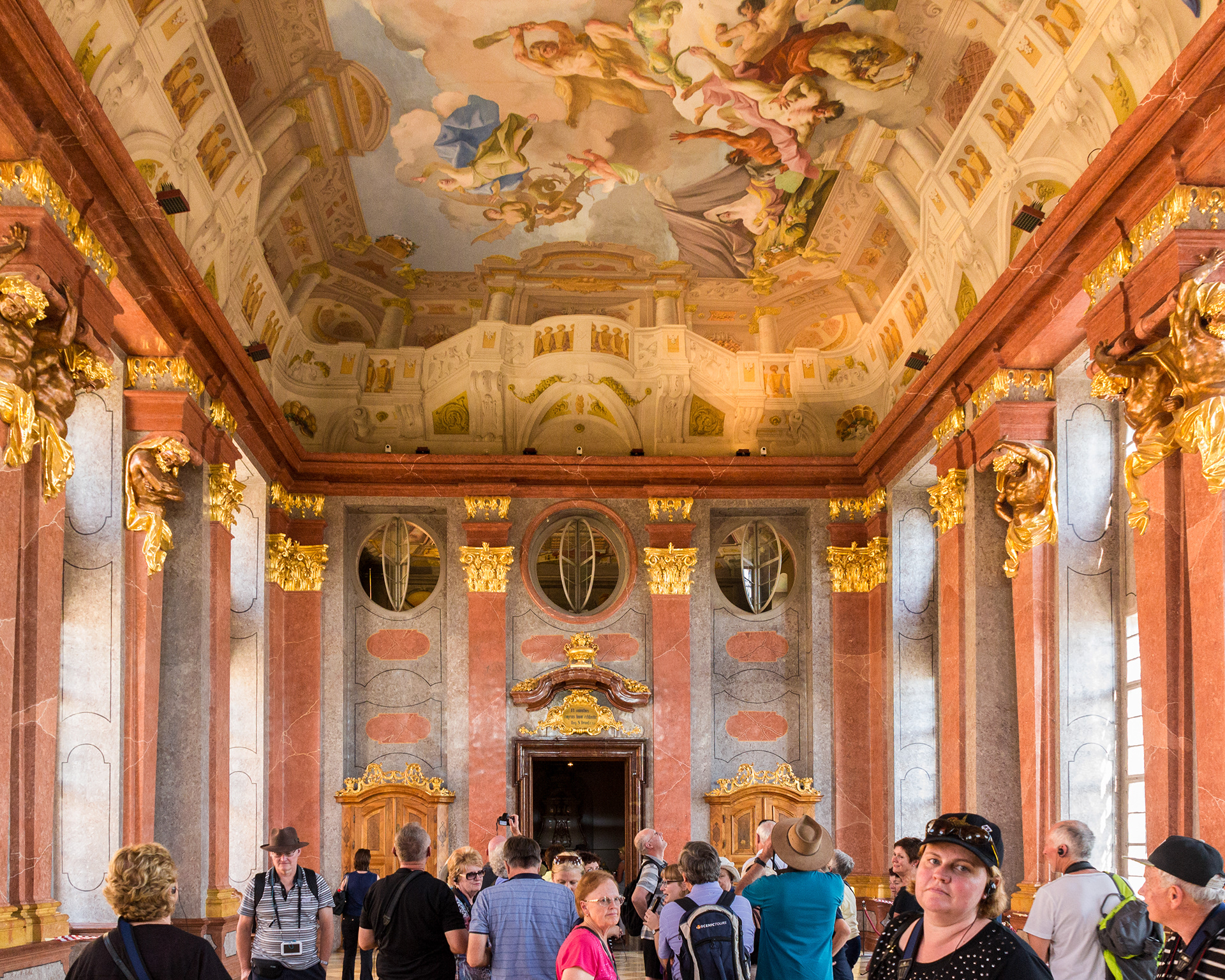
Trogers fresco painted in 1731 adorns the ceiling of the Marble Hall.

Melk Abbey
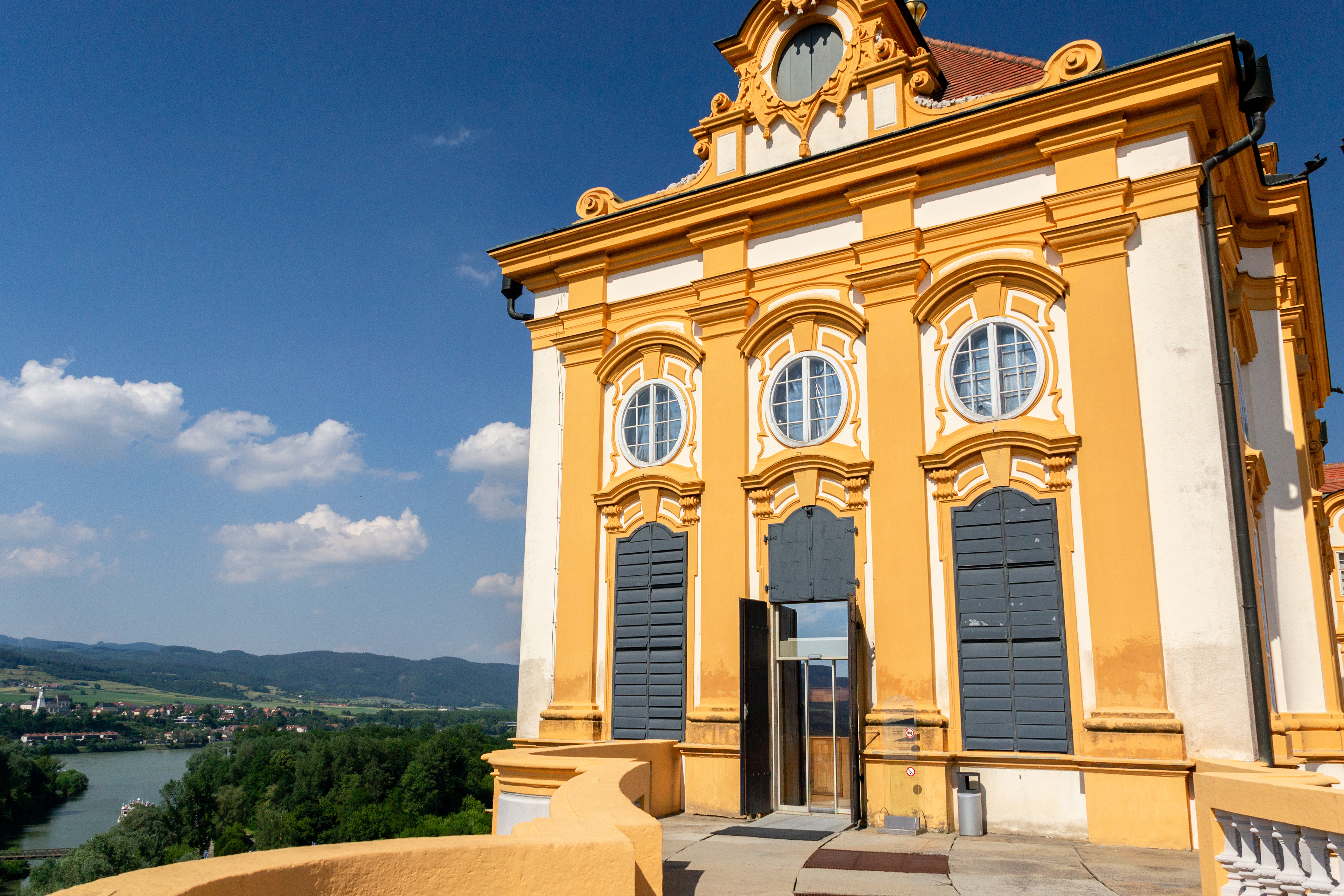
Overlooking the Danube and the Wachau Valley from the Chapel balcony.
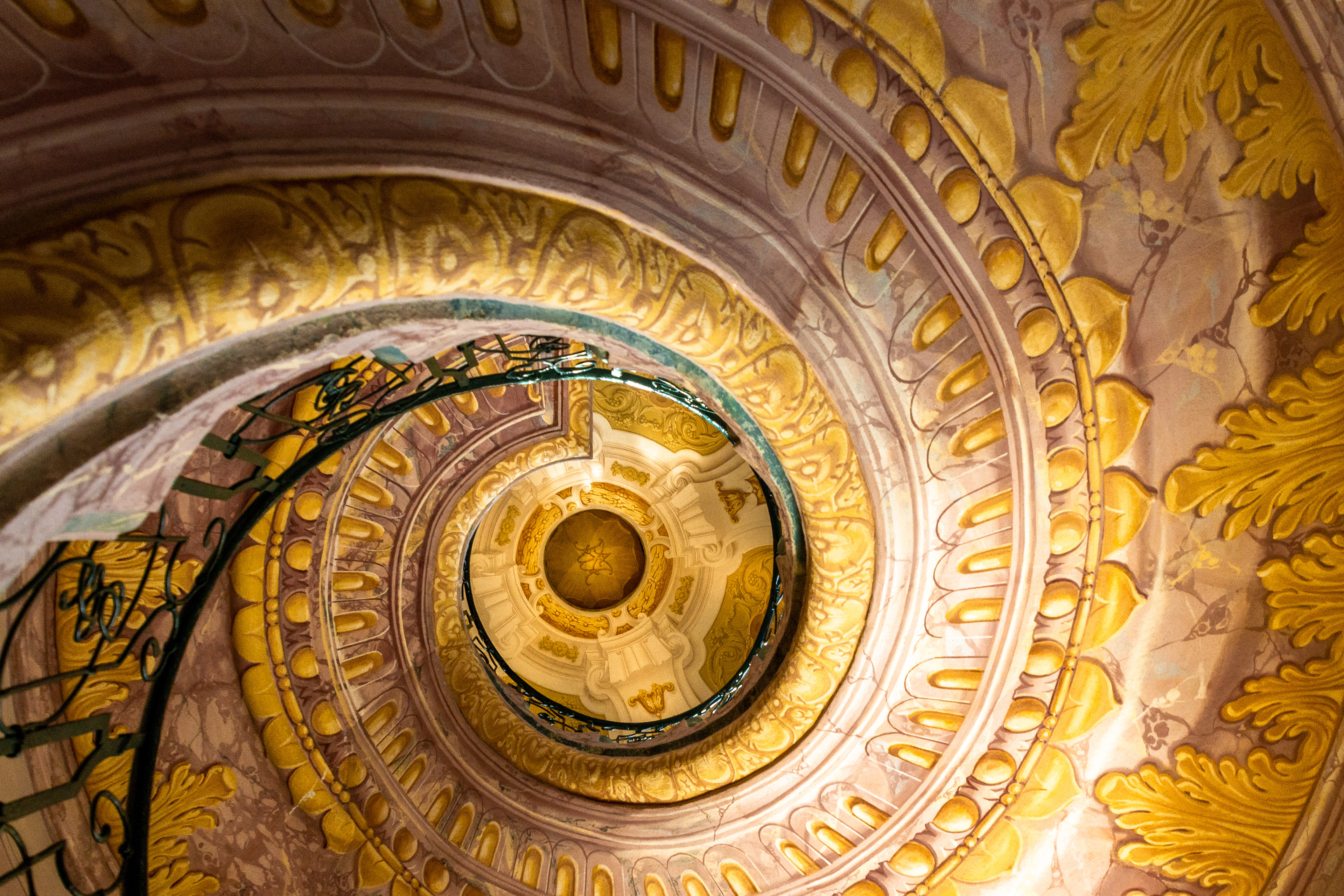
The staircase between the library and the church.
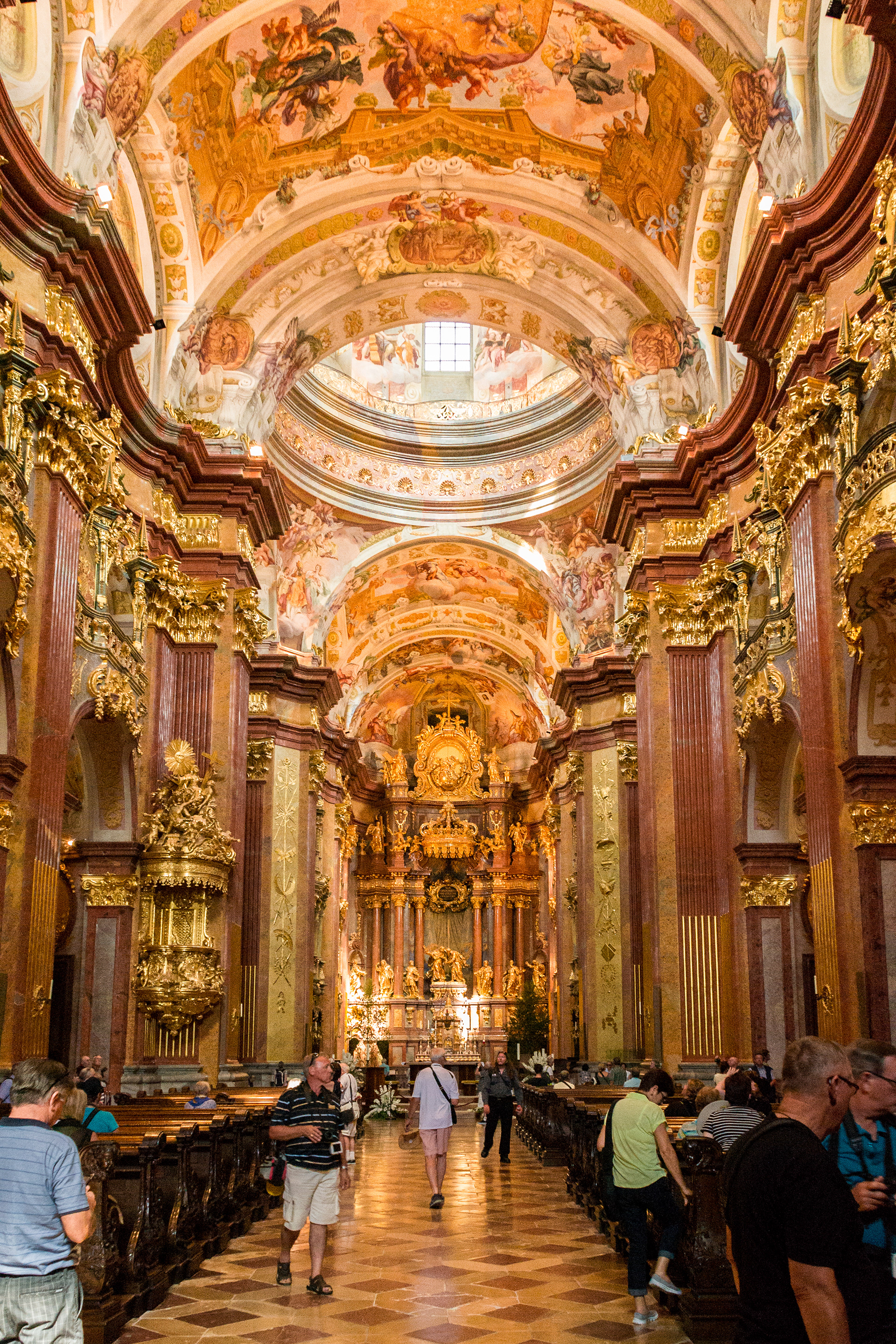
The marble and gilded interior Abbey's of the church is a truly naked display of opulence.

The spectacular Cupola of the church.
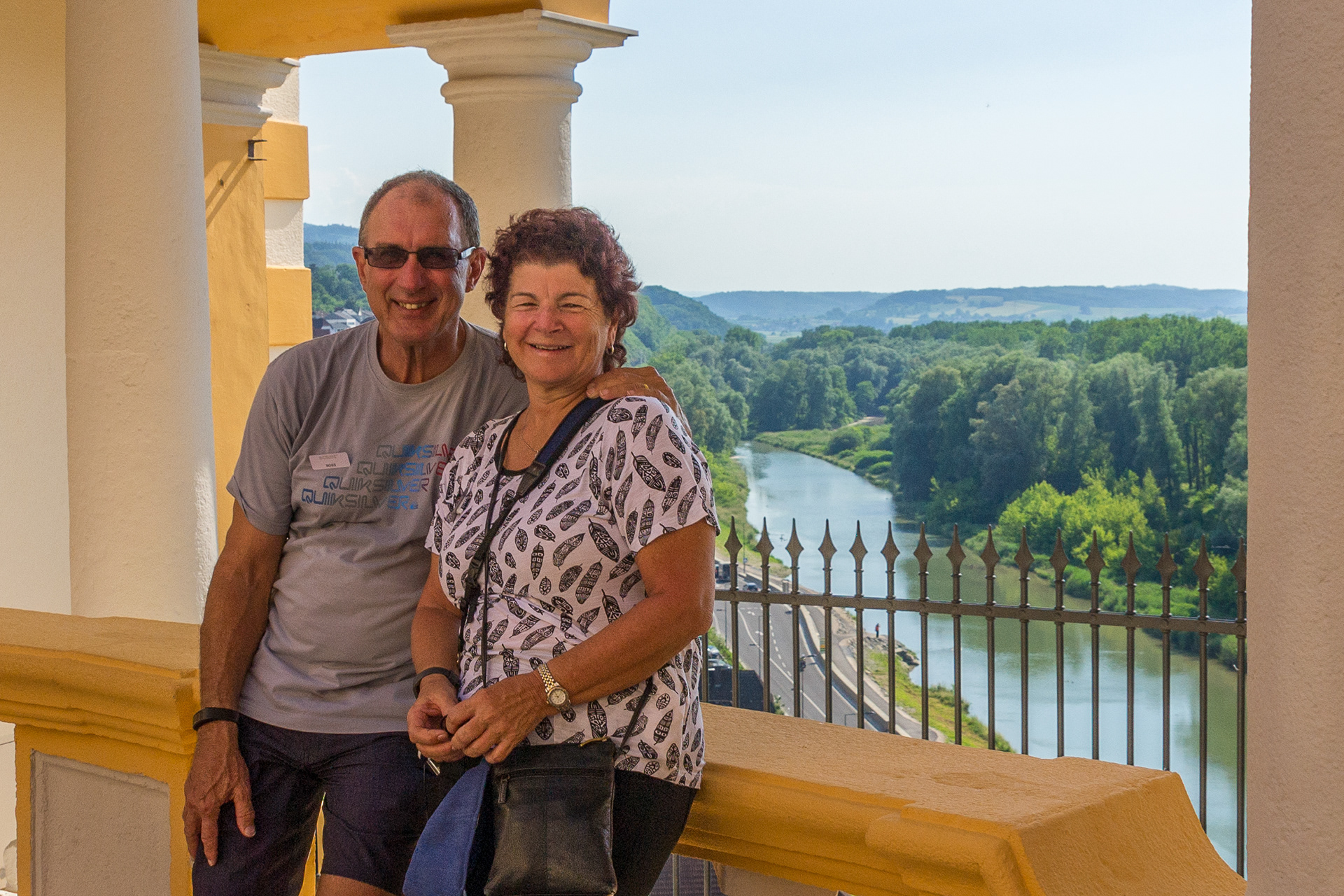
One of the balconies of the Abbey overlooking the Danube.
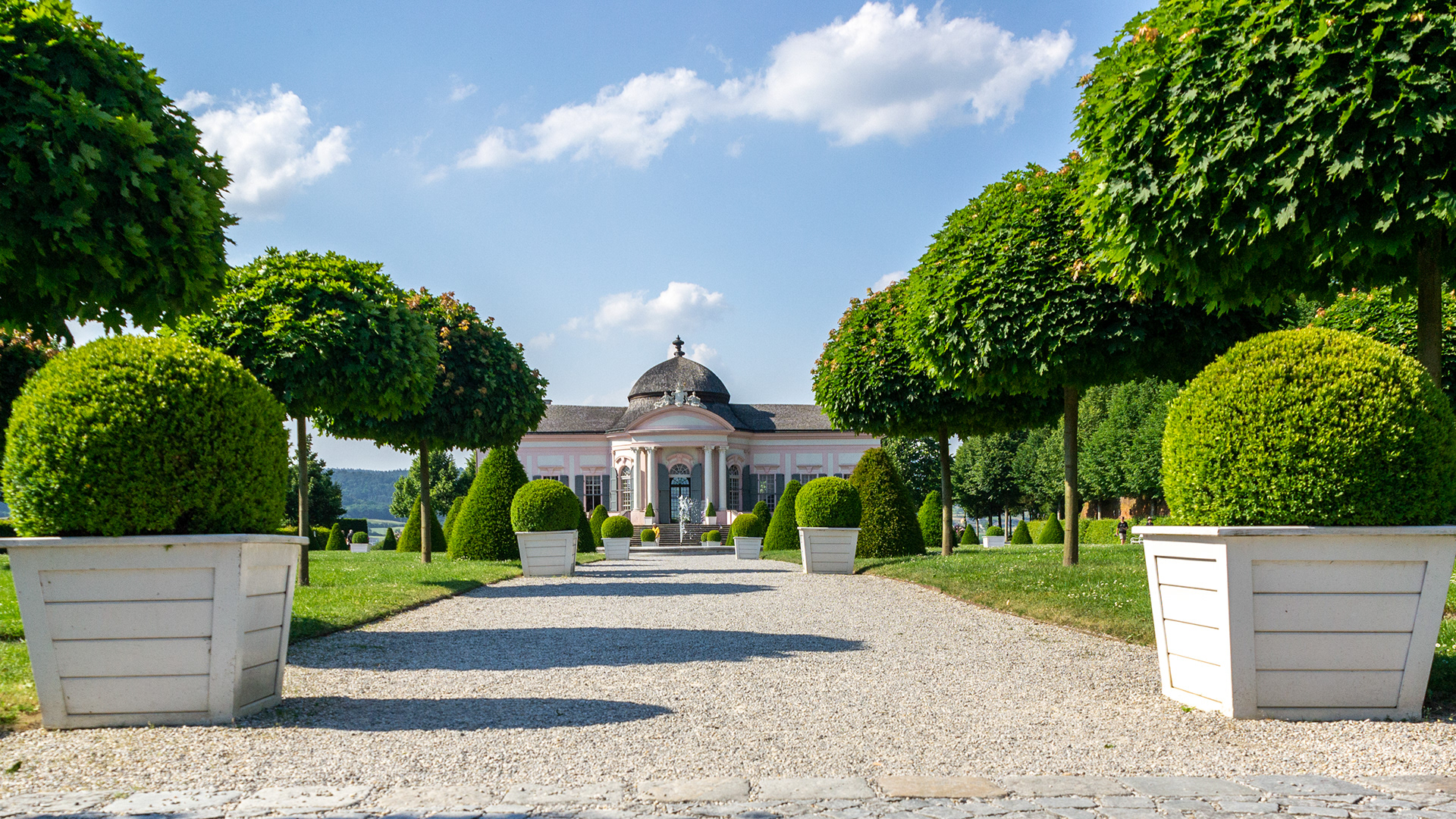
Topiary in the Abbey's extensive gardens.
AGGSTEIN CASTLE
After leaving Melk we enjoy sundowners in the ruins of Aggstein Castle perched high above the Danube. Built at the beginning of the 12th century the castle ruins are situated at about 300 metres above the right bank of the Danube.
In 1438 Scheck von Wald received the right to charge tolls for ships travelling upriver. In return, he had to maintain the towpaths by which the barges were drawn upstream. In addition he built a toll house on the riverbank that now serves as a forestry house. Over time, he became a robber baron, raiding the ships on the Danube.
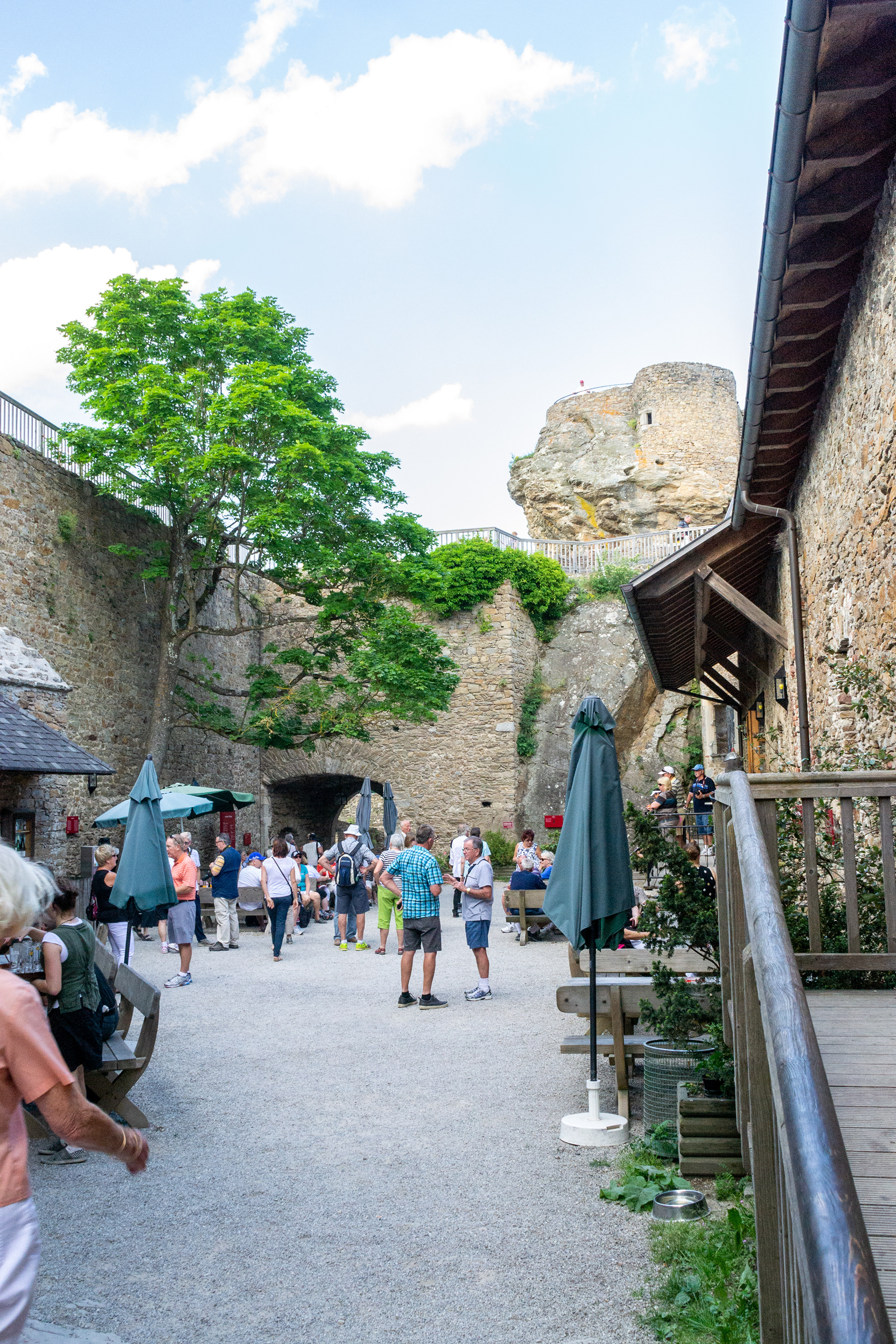
Sundowners in the courtyard of Aggstein Castle
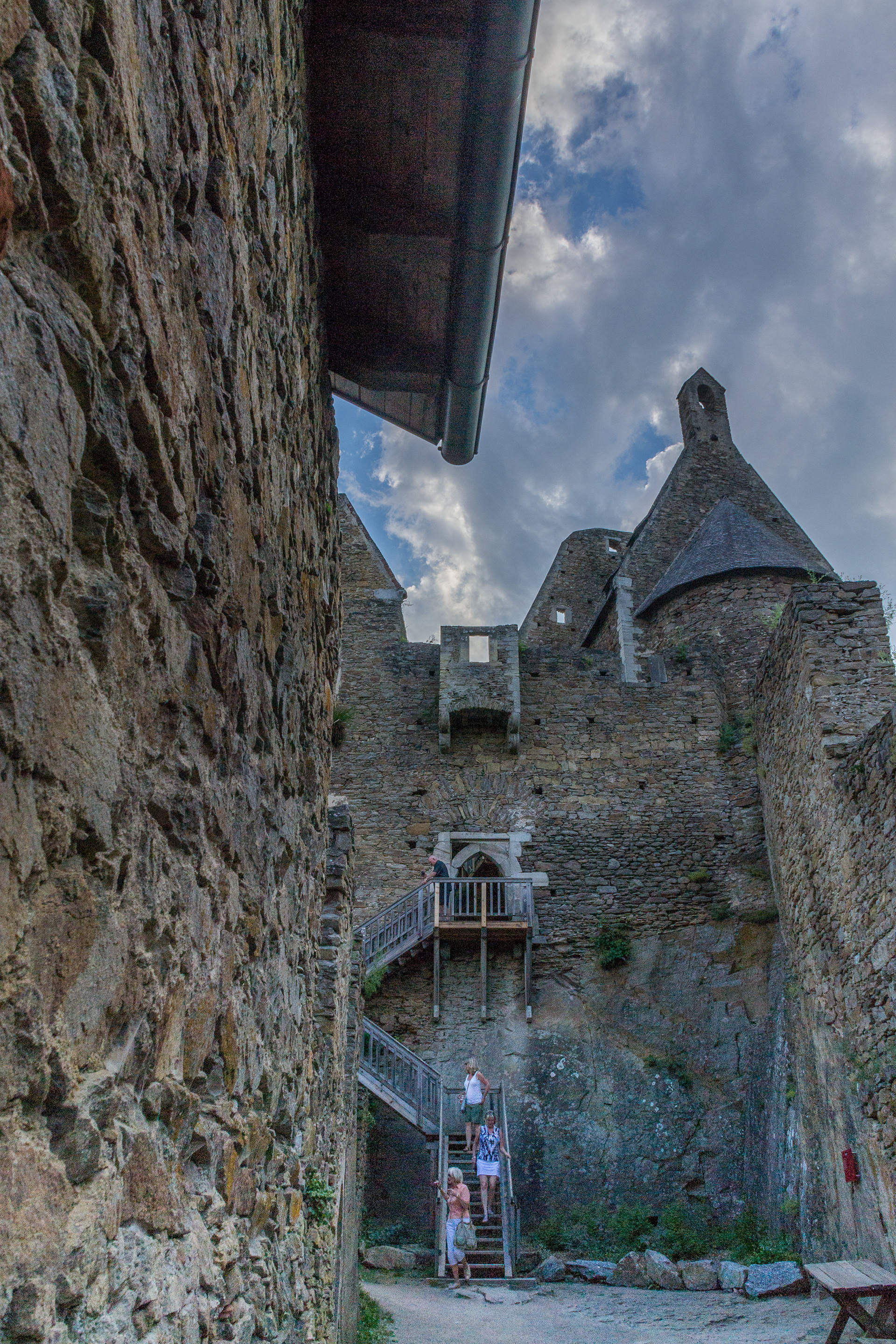
Stairway to the upper ramparts that are still accessable.
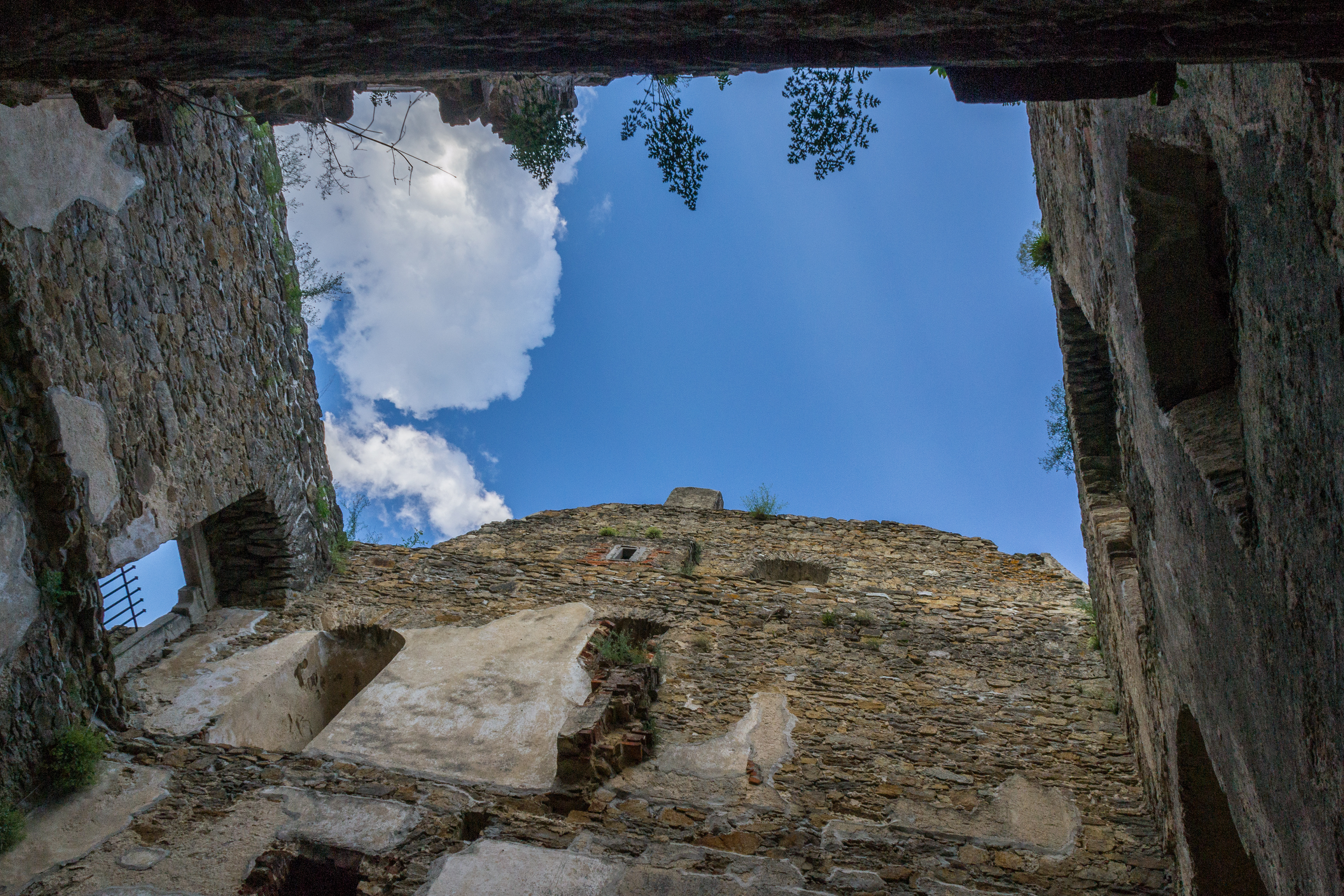
Sections of the castle are in ruins, just the substantial outer walls remain.

Looking out over the courtyard from an upper level window.

A birds eye view over the ruins of Aggstein Castle.

Its hilltop position provides a commanding view over the river Danube, perfect for controlling trade in medieval times.
CESKY KRUMLOV
We leave our Scenic ship and board a coach, destination Cesky Kromlov, a town in the South Bohemian Region of the Czech Republic. Its historic old town is centered around the Cesky Kromlov Castle.
Most of the architecture of the old town and castle dates from the 14th through 17th centuries mostly Gothic, Renaissance and Baroque styles. The core of the old town is within a horseshoe bend of the river Vltava, with the castle on the opposite side.
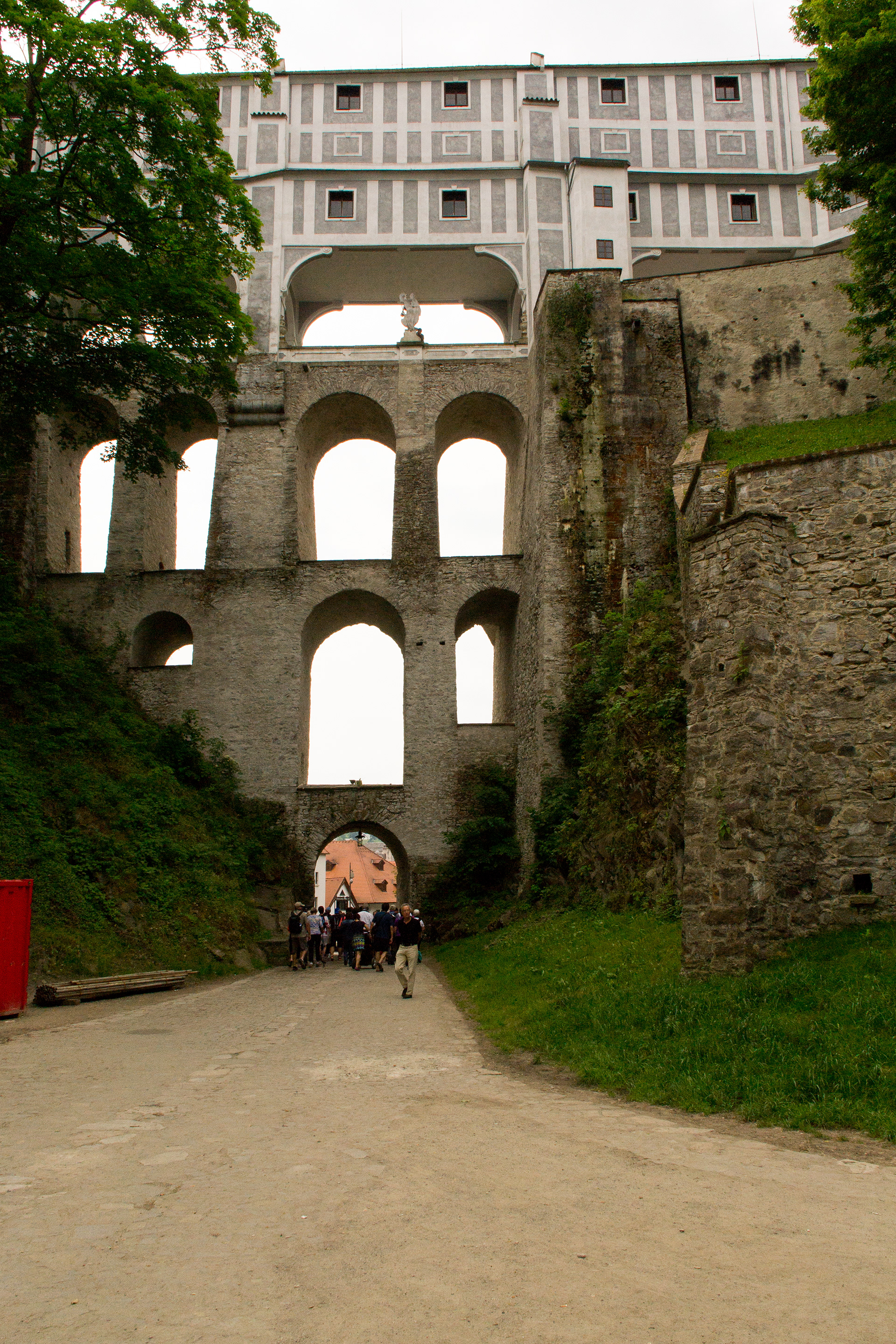
The Cloak bridge over a deep ravine in the rock upon which Krumlov castle is built. The castle itself consists of many defined parts dating from different periods.
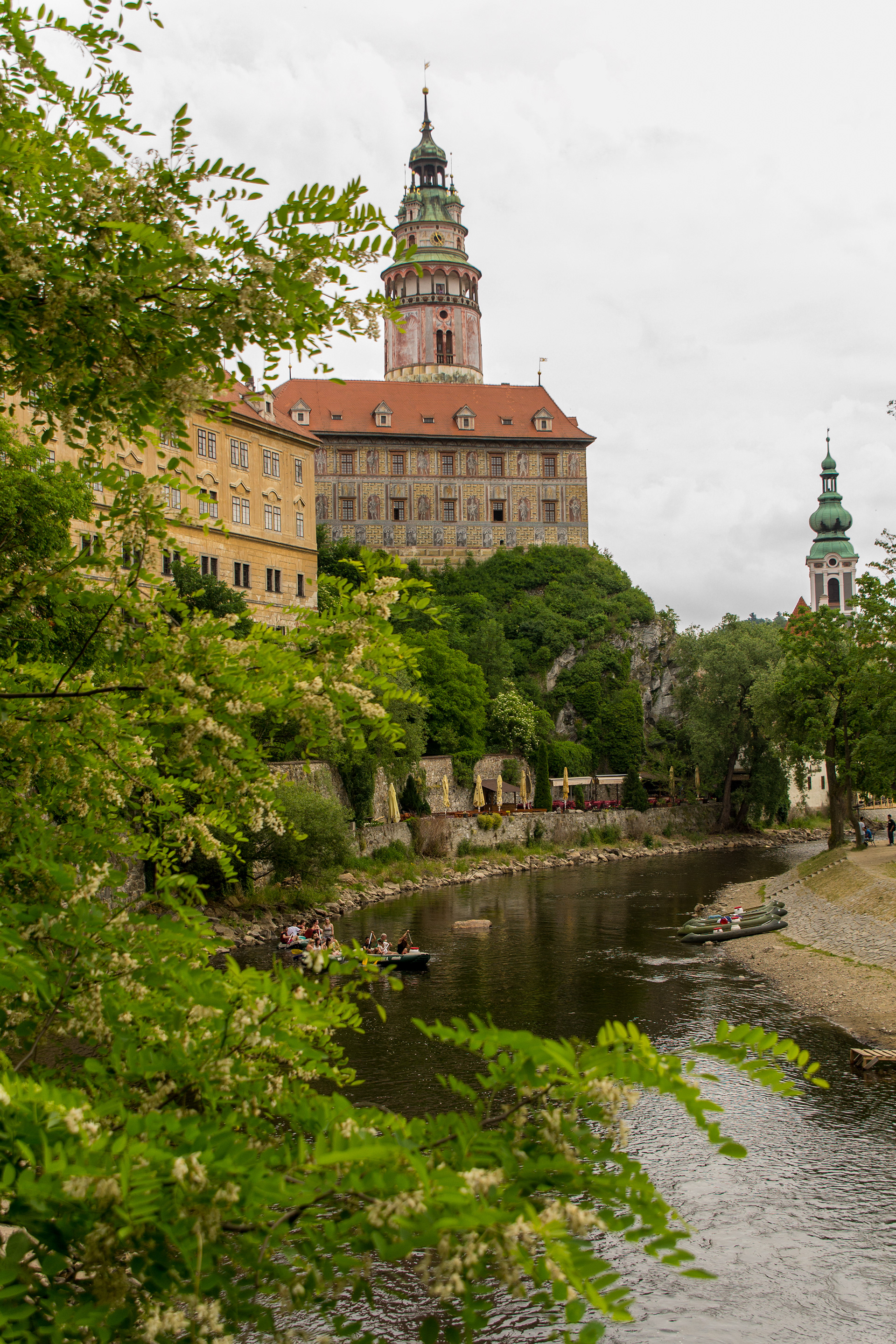
Krumlov Castle above the Vltava River. On the left side is the oldest part of the castle (Hrádek), an old palace with a tower from the 13th century.
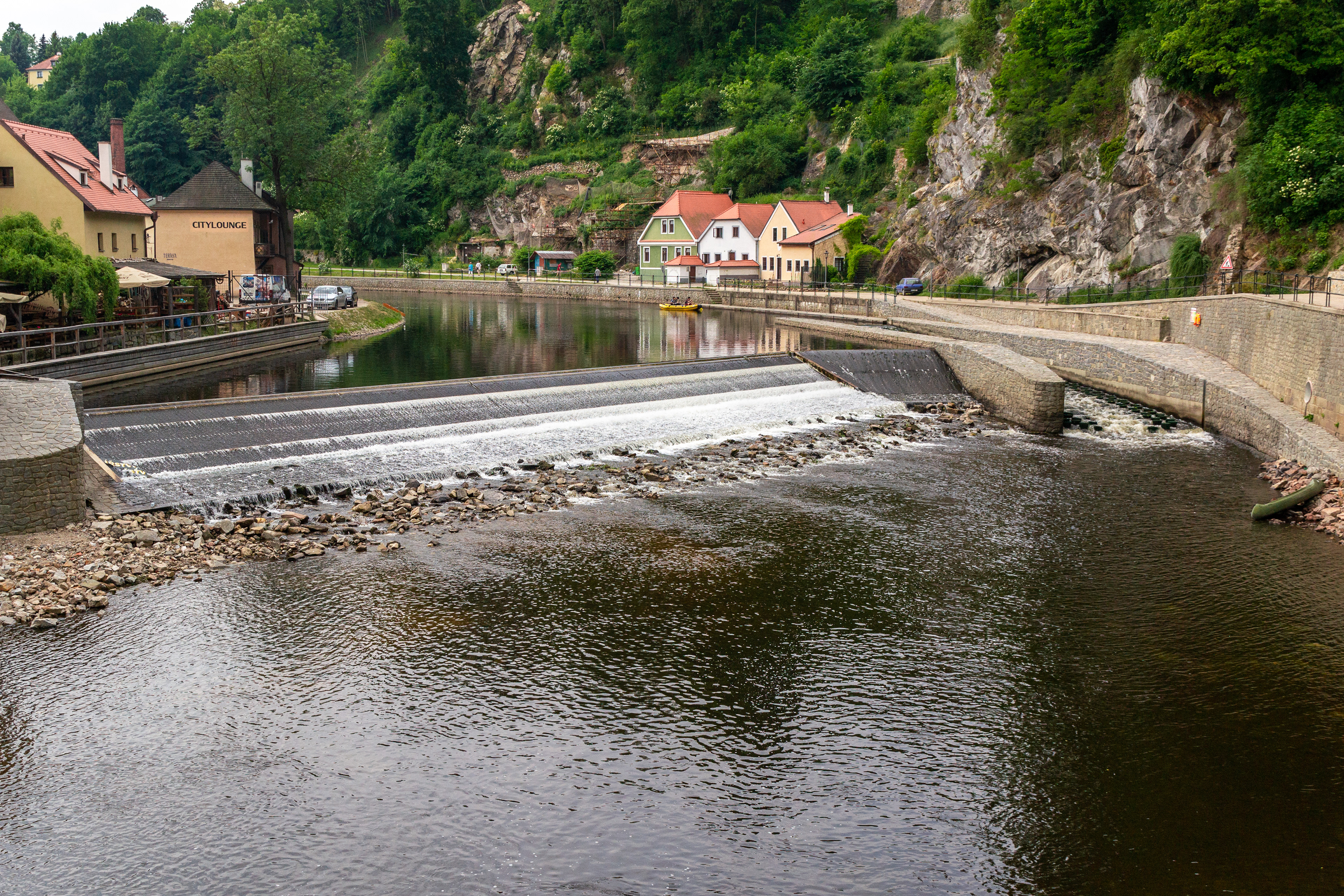
The Vltava river's horseshoe bend flowing around the old town area.
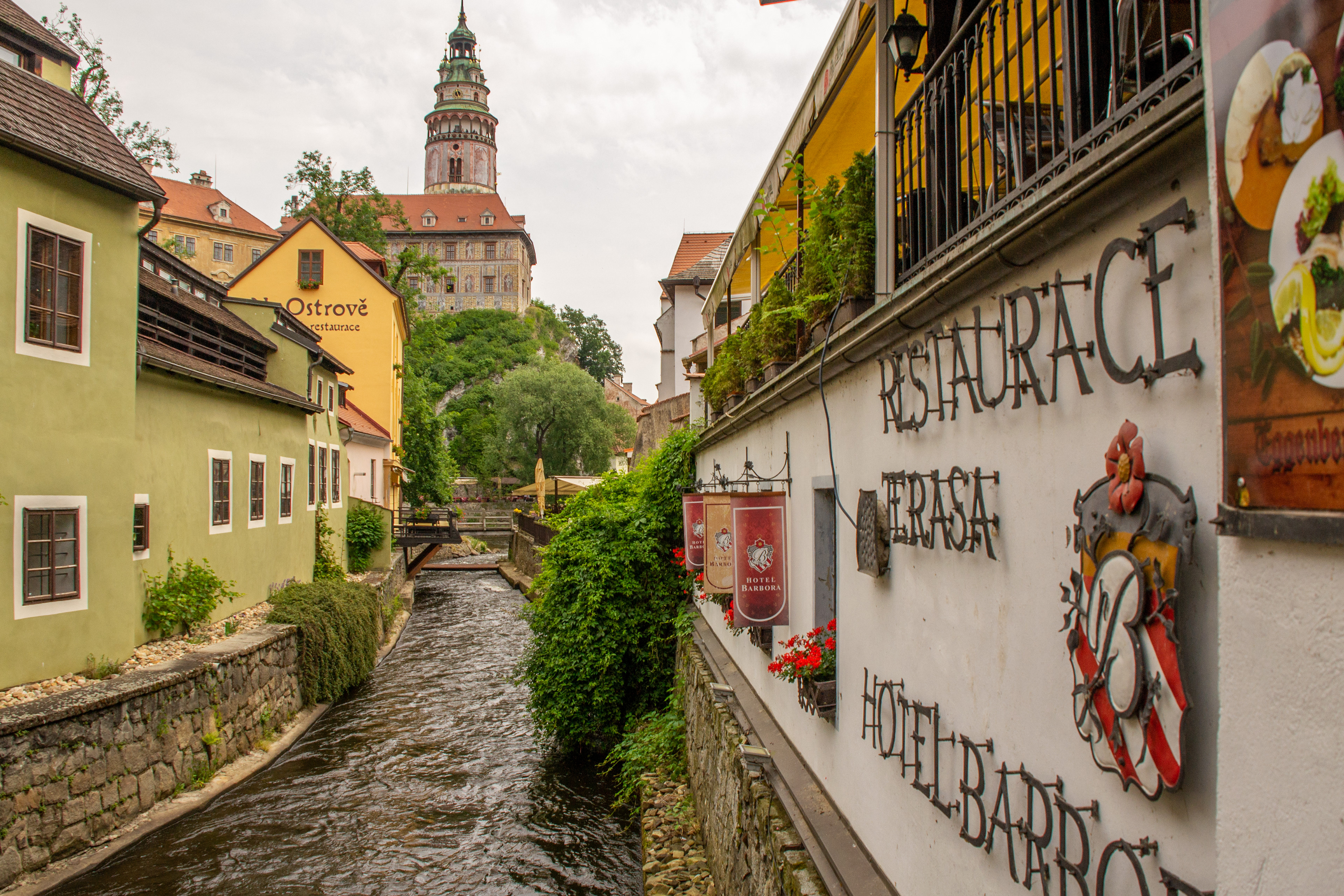
Castle Tower The Castle Tower is probably the most famous symbol of Český Krumlov. At a height of 86 m above the Vltava River it dominates the skyline over the old town.
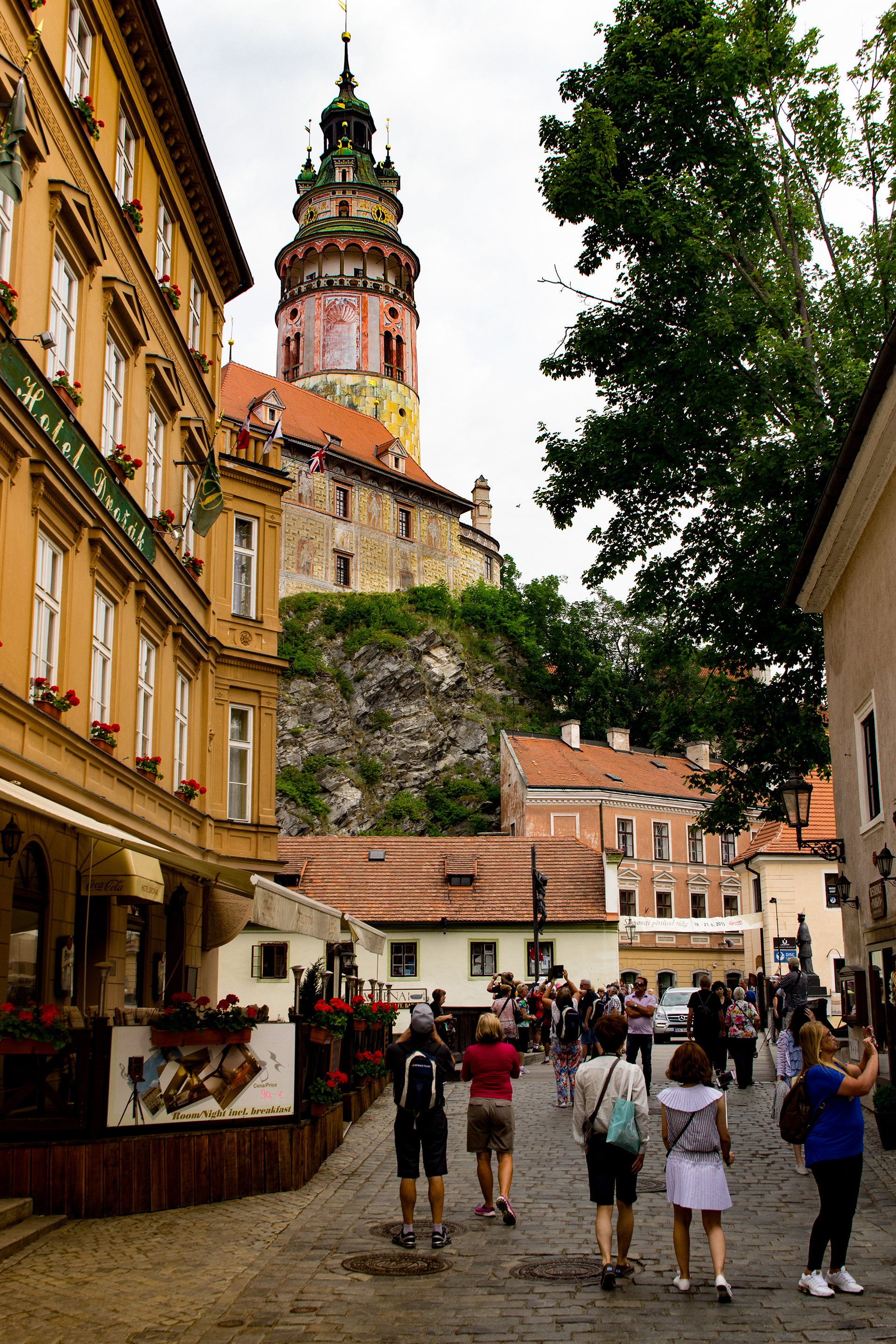
Krumlov Castle's tower above the streets of the Old Town.
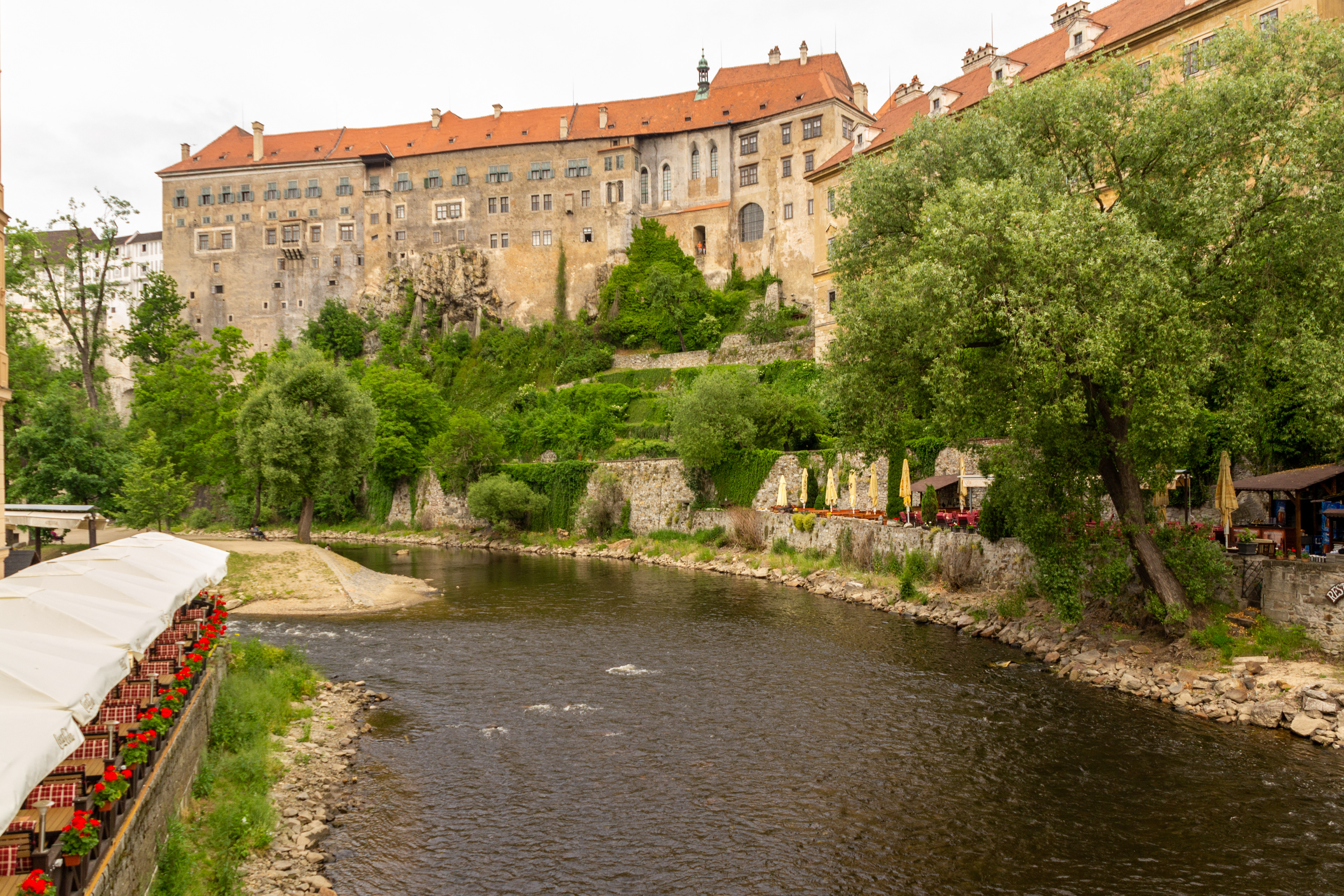
Kromlov castle on the left bank above the Vltava.
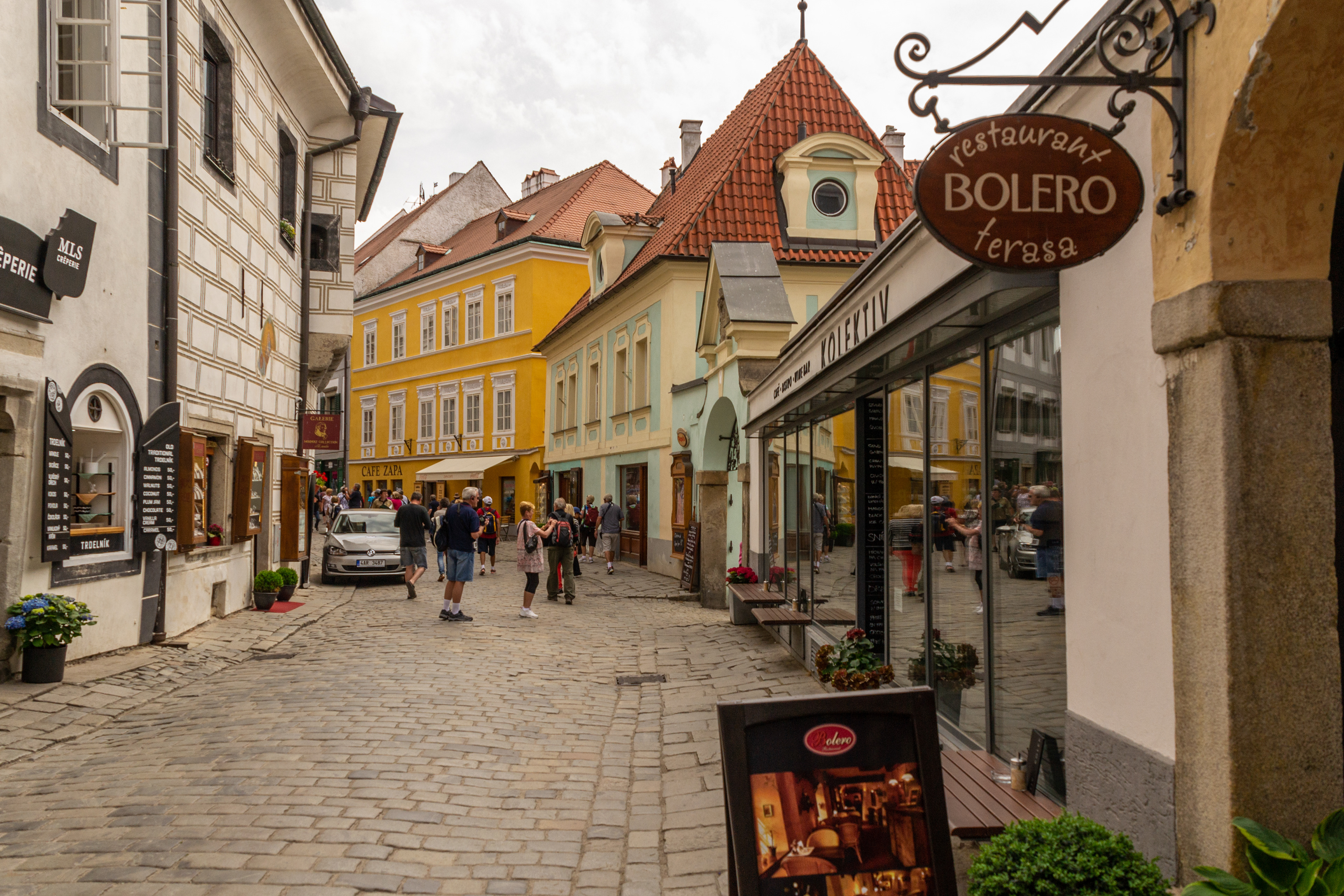
Exploring the cobbled streets and the well-preserved Gothic, Renaissance and Baroque architecture of the Old Town.
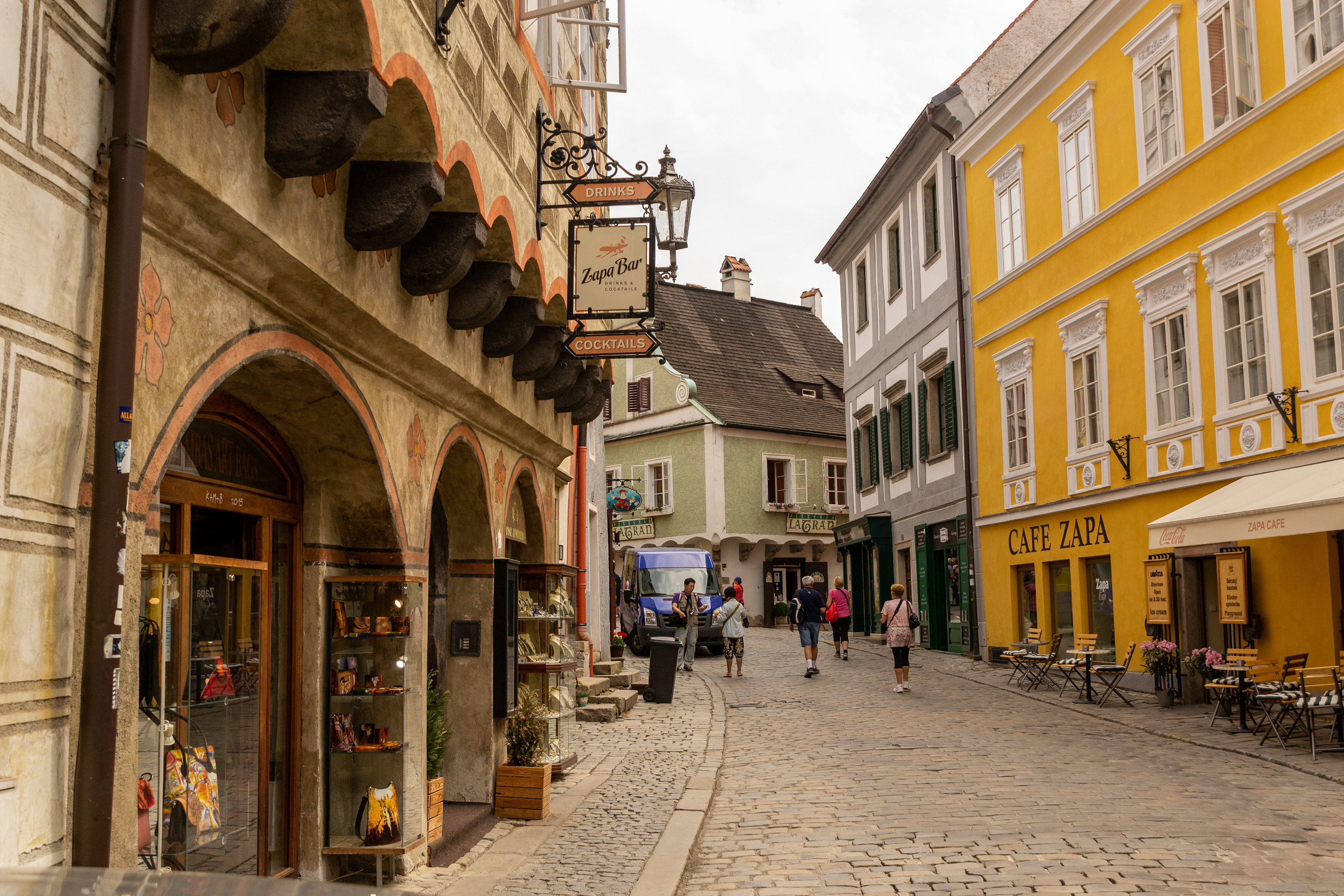
The Gothic, Renaissance and Baroque architecture of the Old Town.
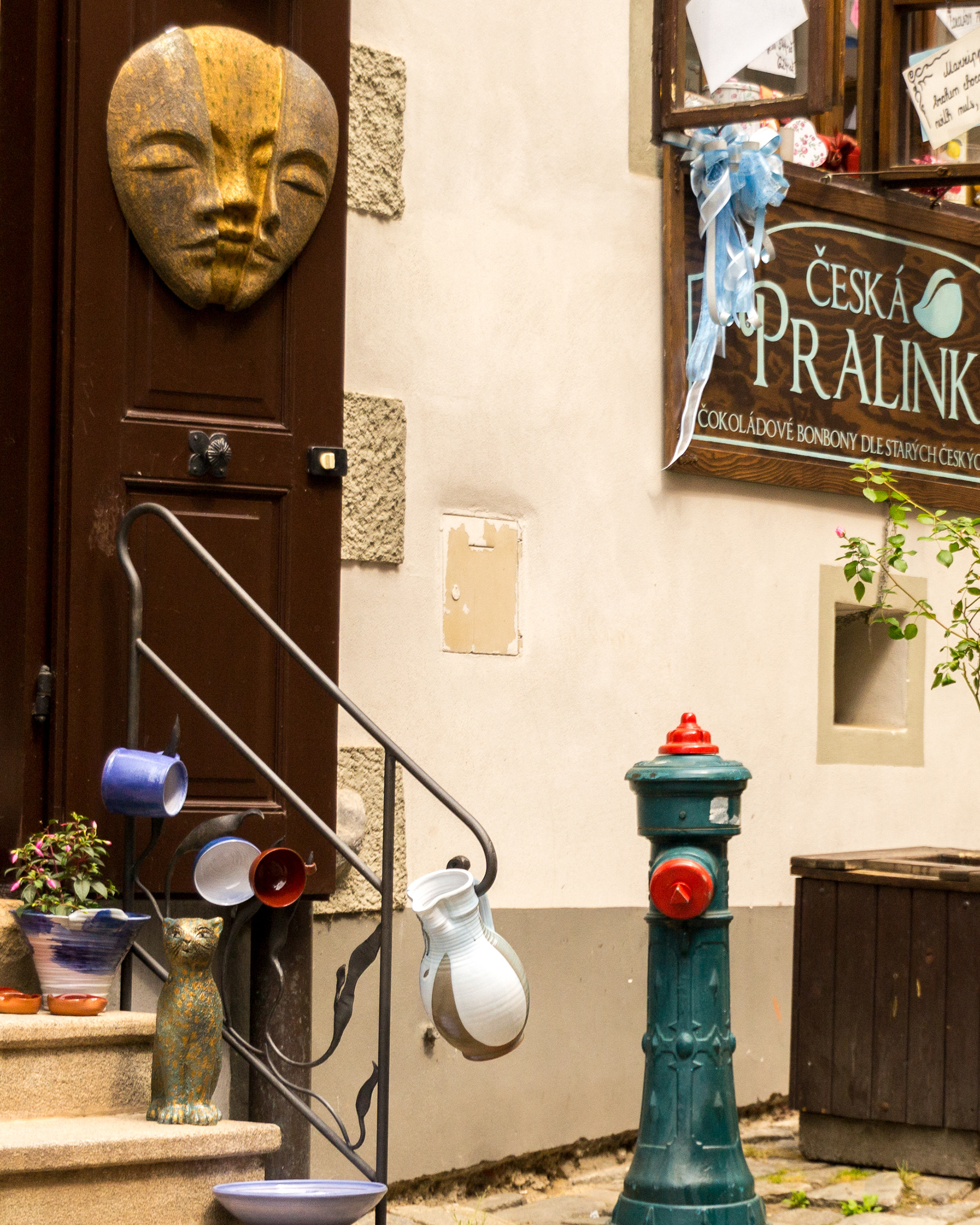
Eclectic displays of souvenirs on display.
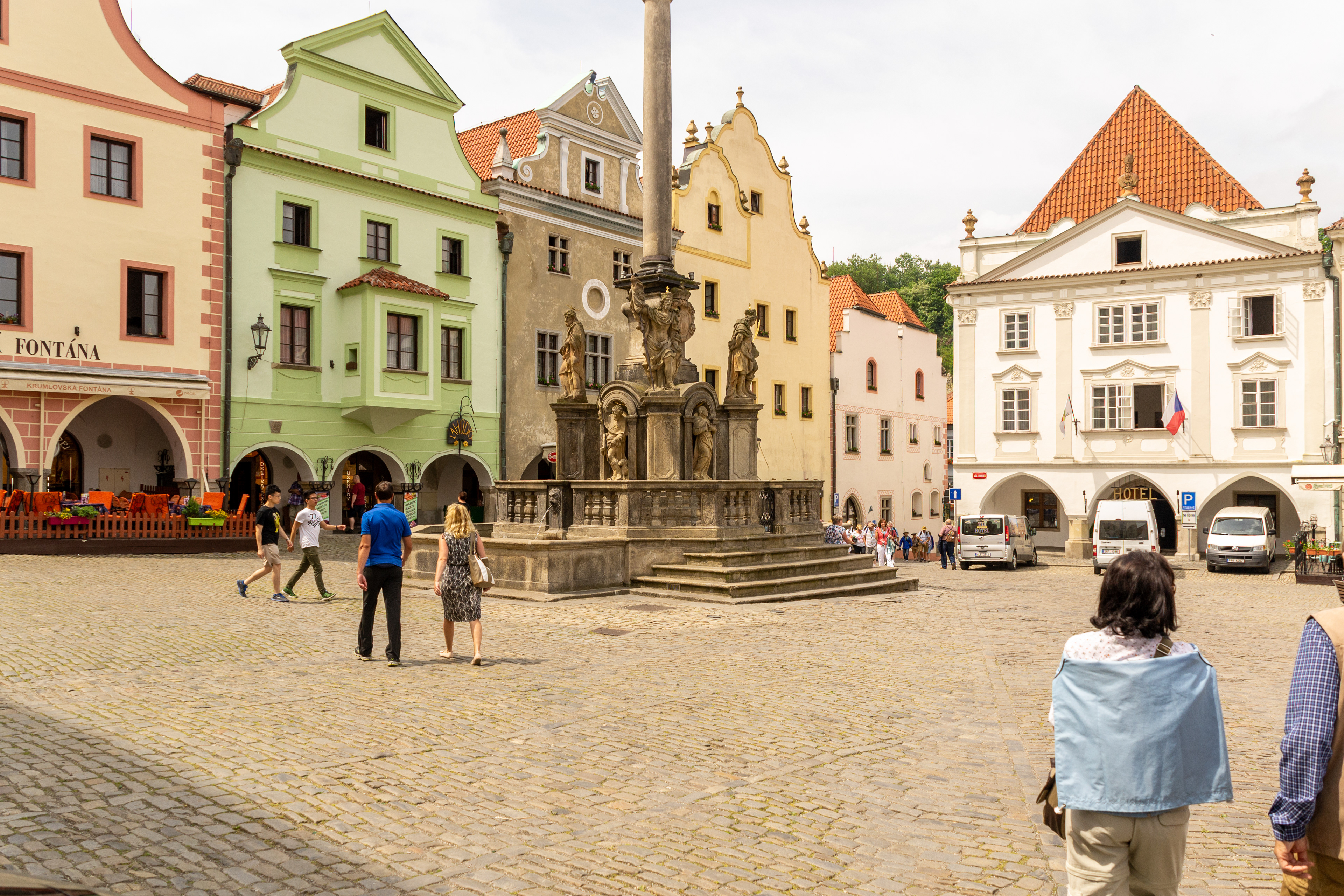
Fountain and plague column on Svornoti Square.

An age old question is posed......

Ancient fortifications in the 2nd courtyard of Kromlov Castle.

Looking down into the 2nd courtyard from the bridge over the Bear Moat.
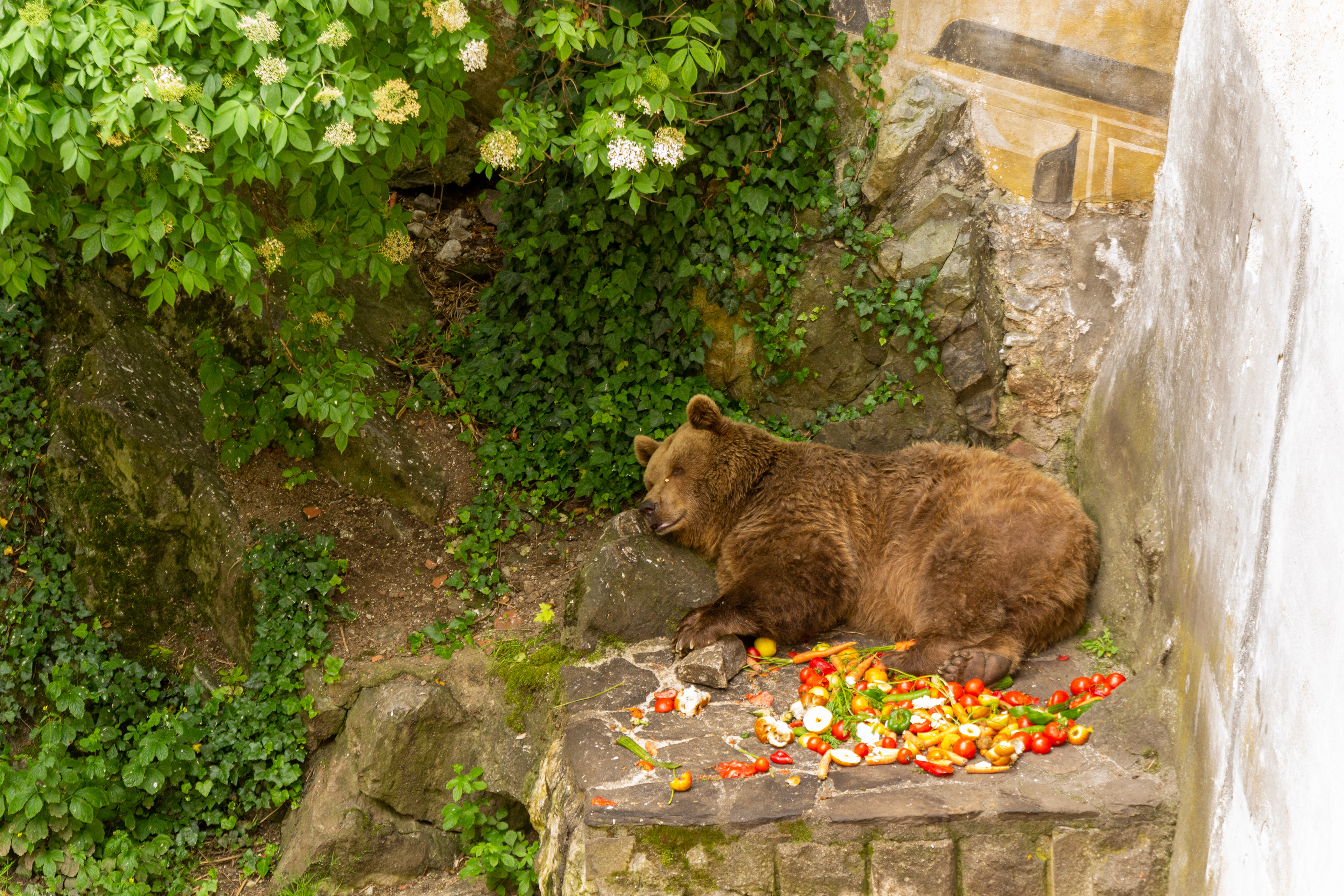
Bears are kept in the Bear Moat at Český Krumlov Castle as living proof of a presumed relation between the Lords of Rosenberg and Italian family of Orsini.
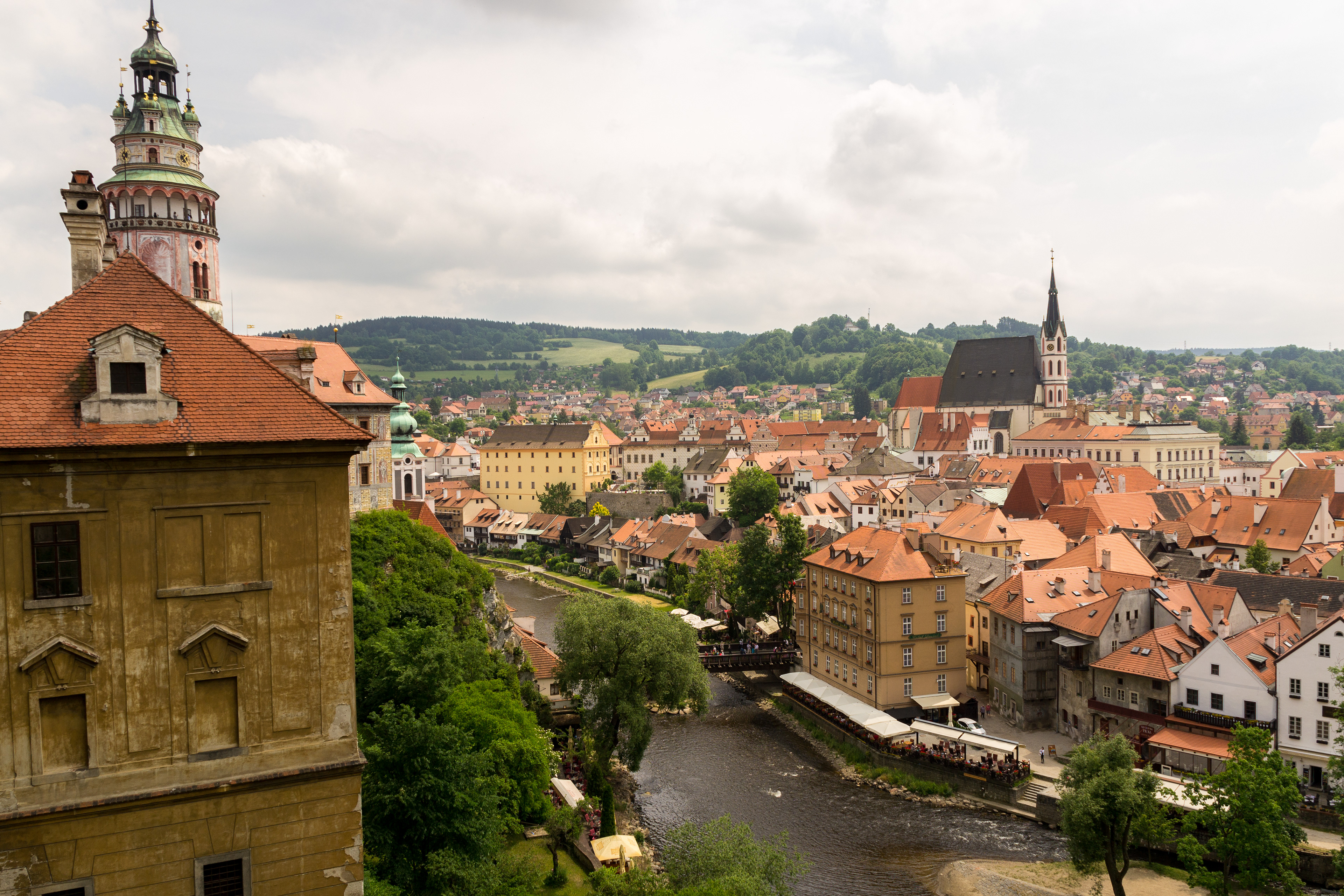
Looking over the Old Town, Cesky Kromlov from the 5th courtyard.
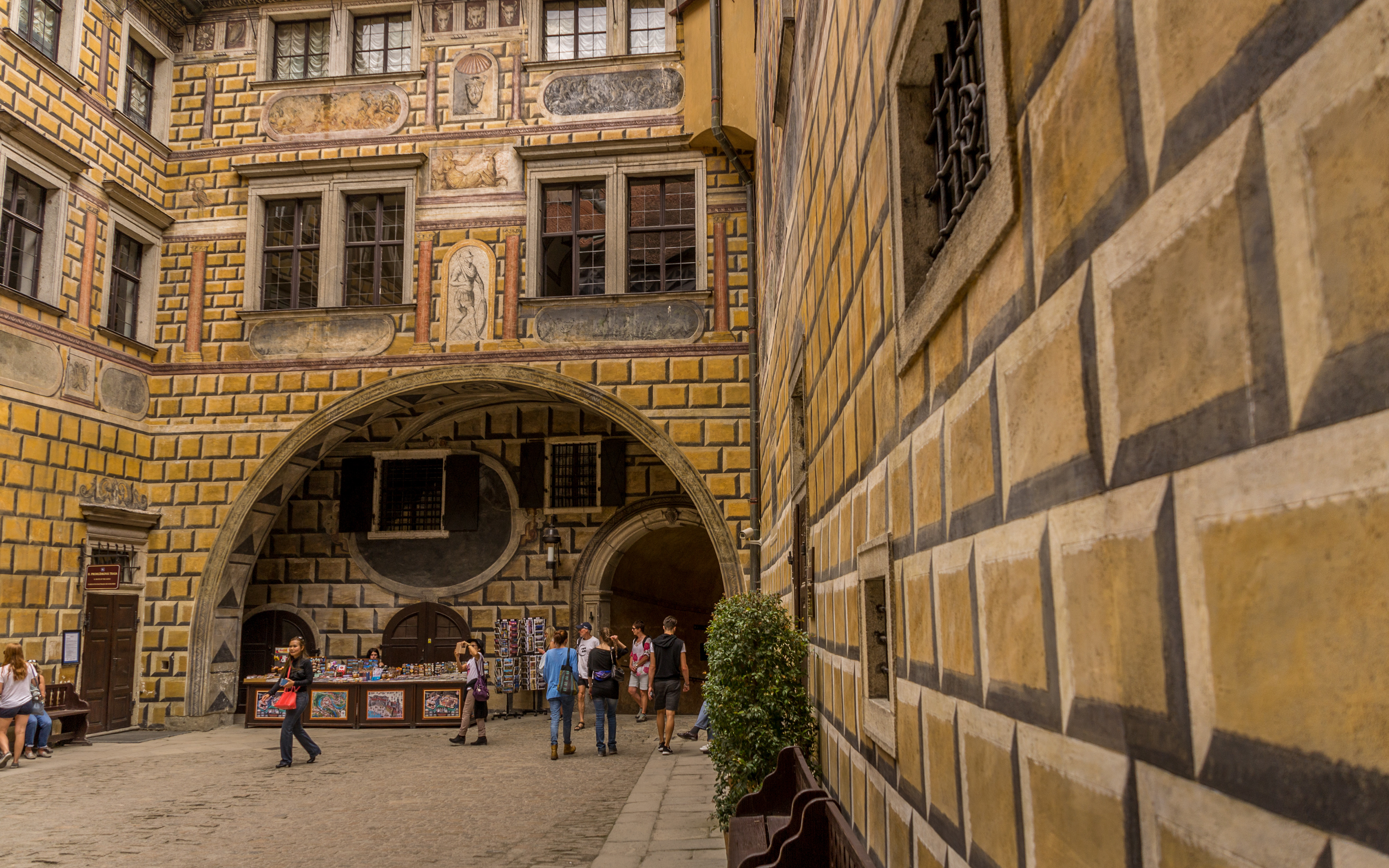
The 3rd & 4th courtyards of Kromlov castle features facade paintings representing scenes and figures from the Greek and Roman history.

Famous view of St Vitas from one of the portals of the 5th courtyard Krumlov Castle.
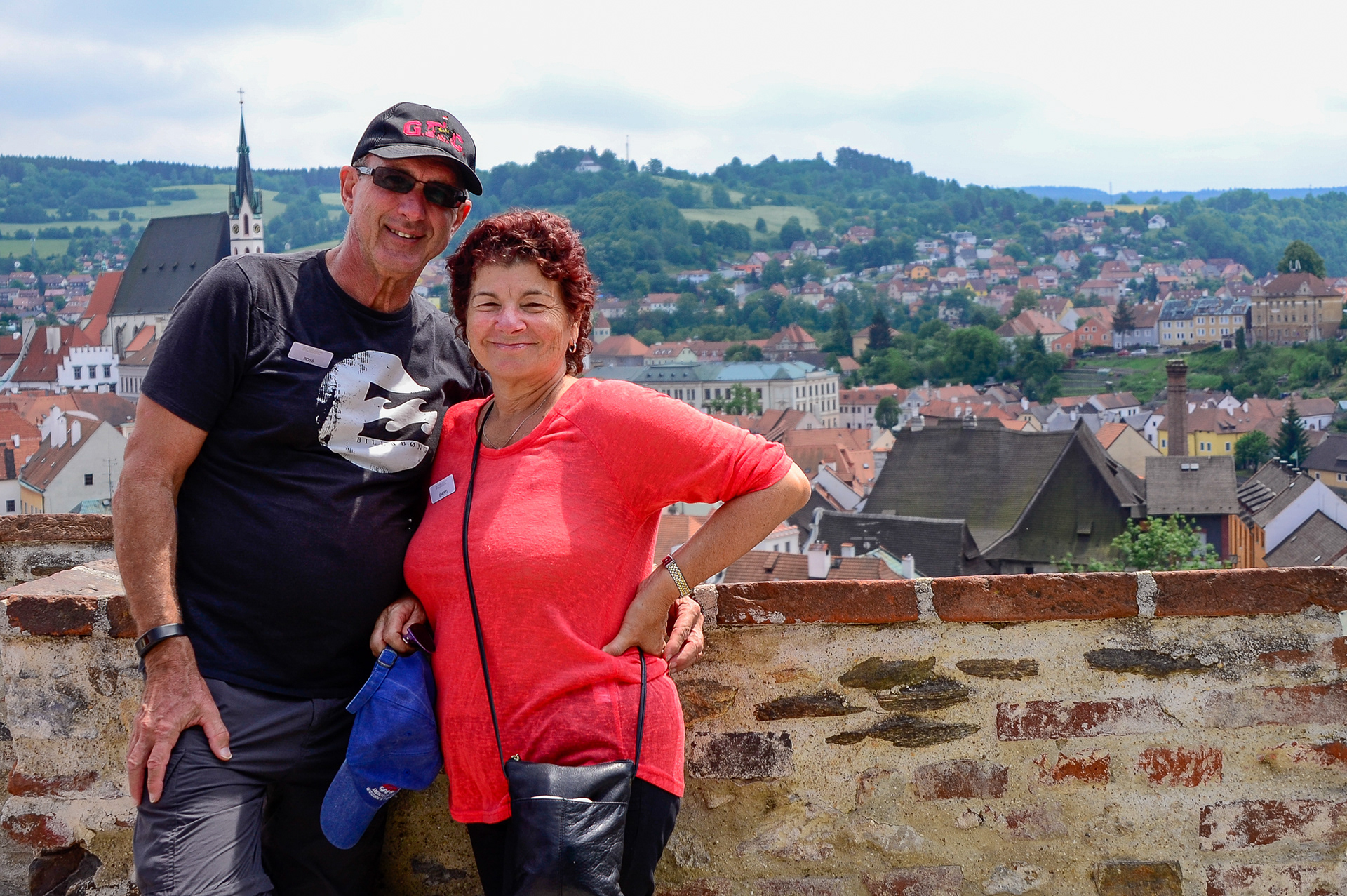
Capturing the memories of Cesky Kromlov.
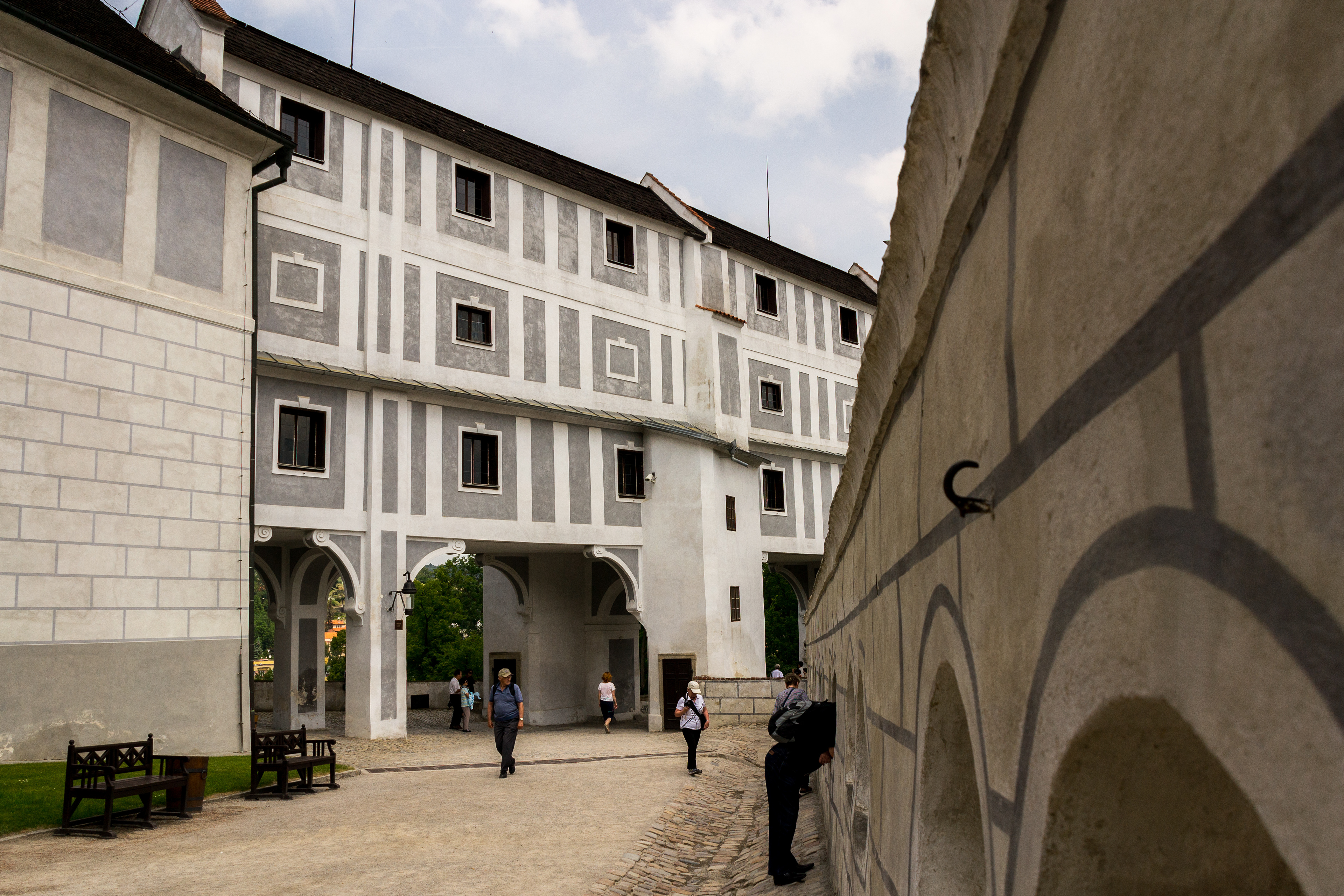
The Cloak Bridge at the 5th courtyard level.

The Little Castle with its Castle Tower above the river Vltava from the 5th courtyard.
DANUBE GORGE
After leaving Cesky Krumlov by coach we join our Scenic ship in Regensburg, Germany and from here we take a trip through the Danube Gorge to Weltenburg Abbey believed to be the oldest abbey in Barvaria.

Regensburg, our scenic ship now flying the German flag - Schwarz-Rot-Gold.

Riverside scenery as we cruise the Danube Gorge.

Einsiedelei Klosterl, an ancient hermitage hewn from a cliff-side cave in 1450. A few years later the abbey was appropriated by the Franciscans, who expanded the small chapel and abbey. It was entirely rebuilt 1603.

Befreiungshalle (Hall of Liberation), a cylindrical monument on Mount Michelsberg near the town of Kilheim.
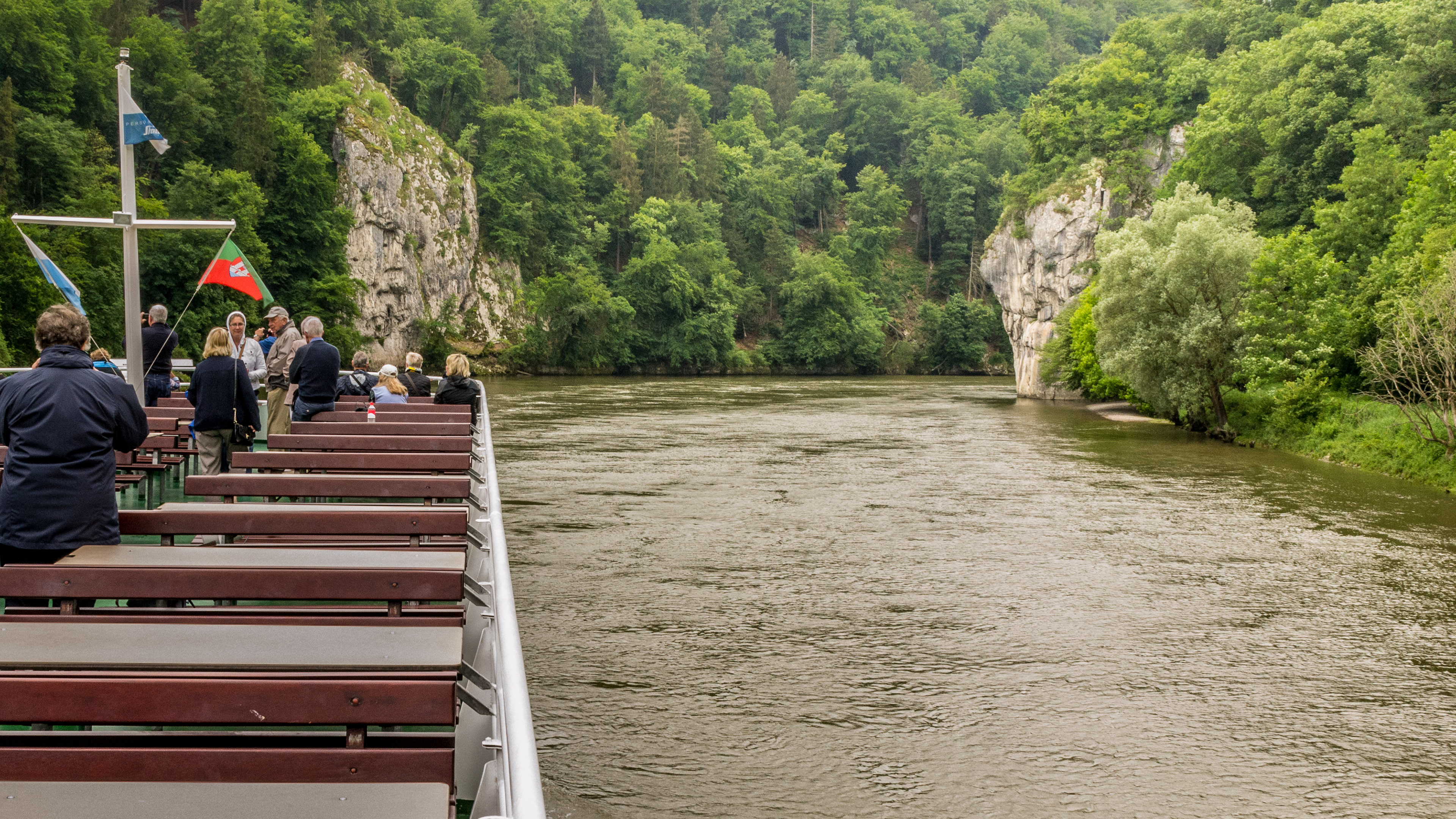
The white cliffs ahead mark the narrowest point on the Danube.
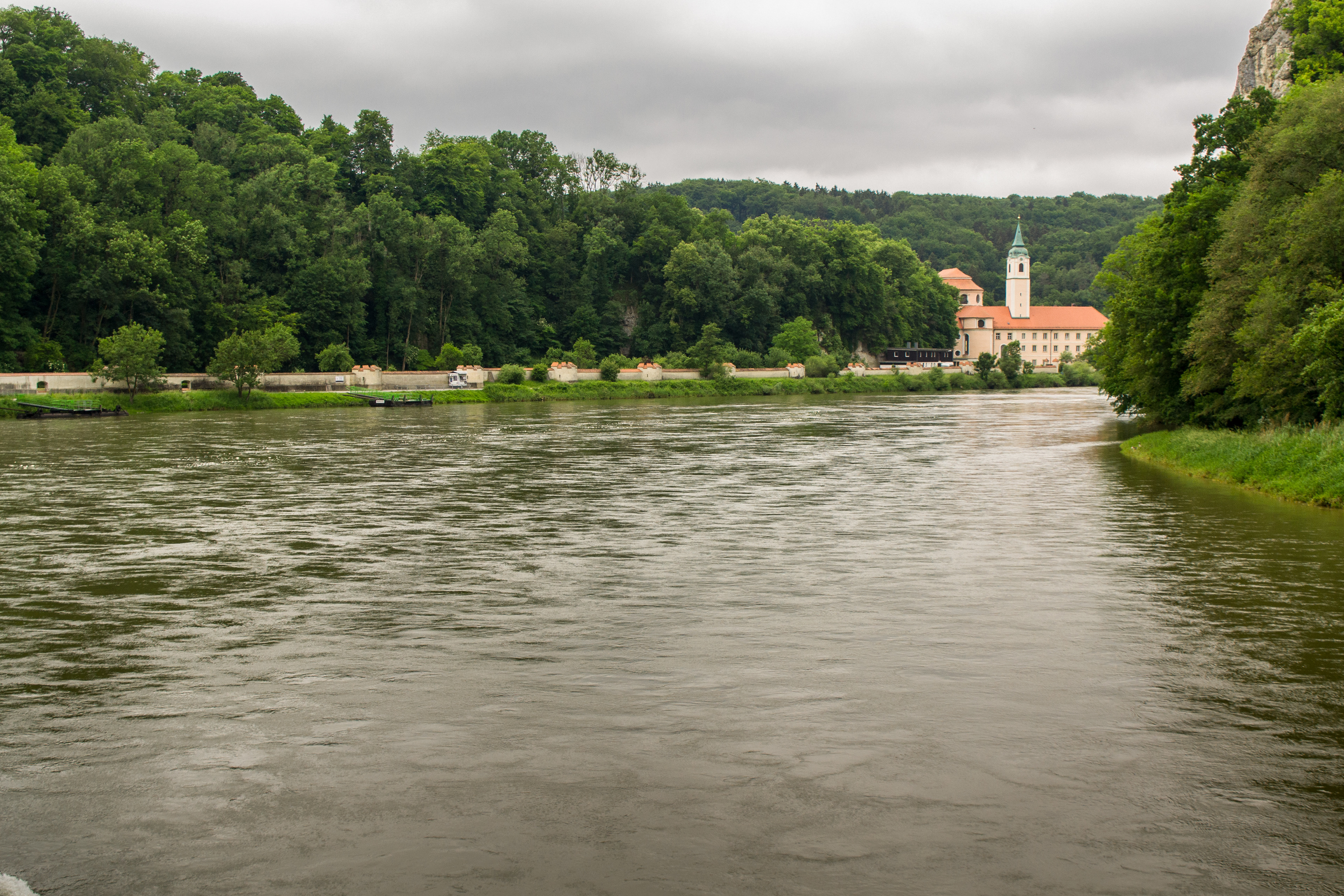
Weltenberg Abbey appears ahead on a peninsula in the Danube.
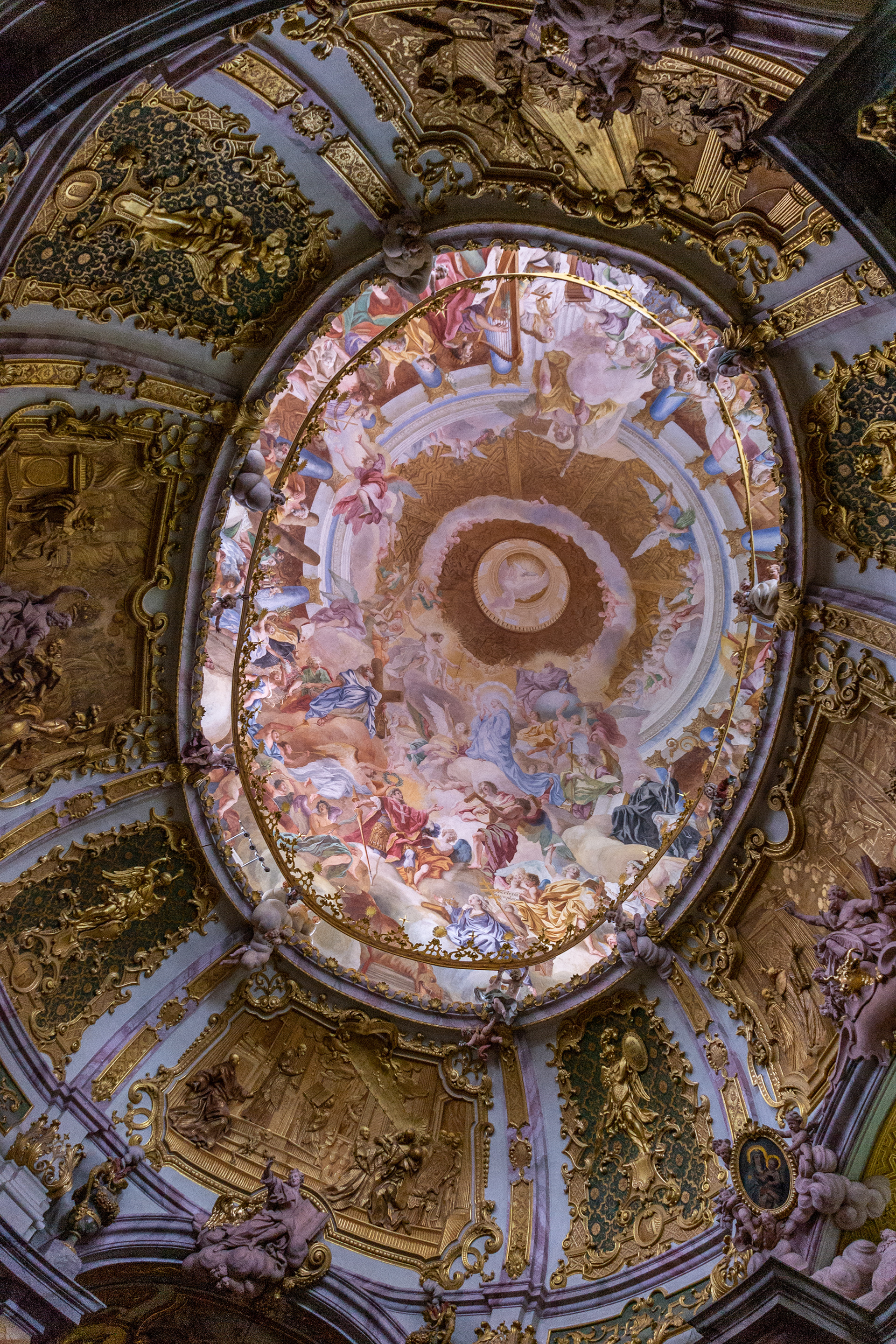
In 1721 the large ceiling fresco of the church was completed and signed by Cosmas Damian Asam.
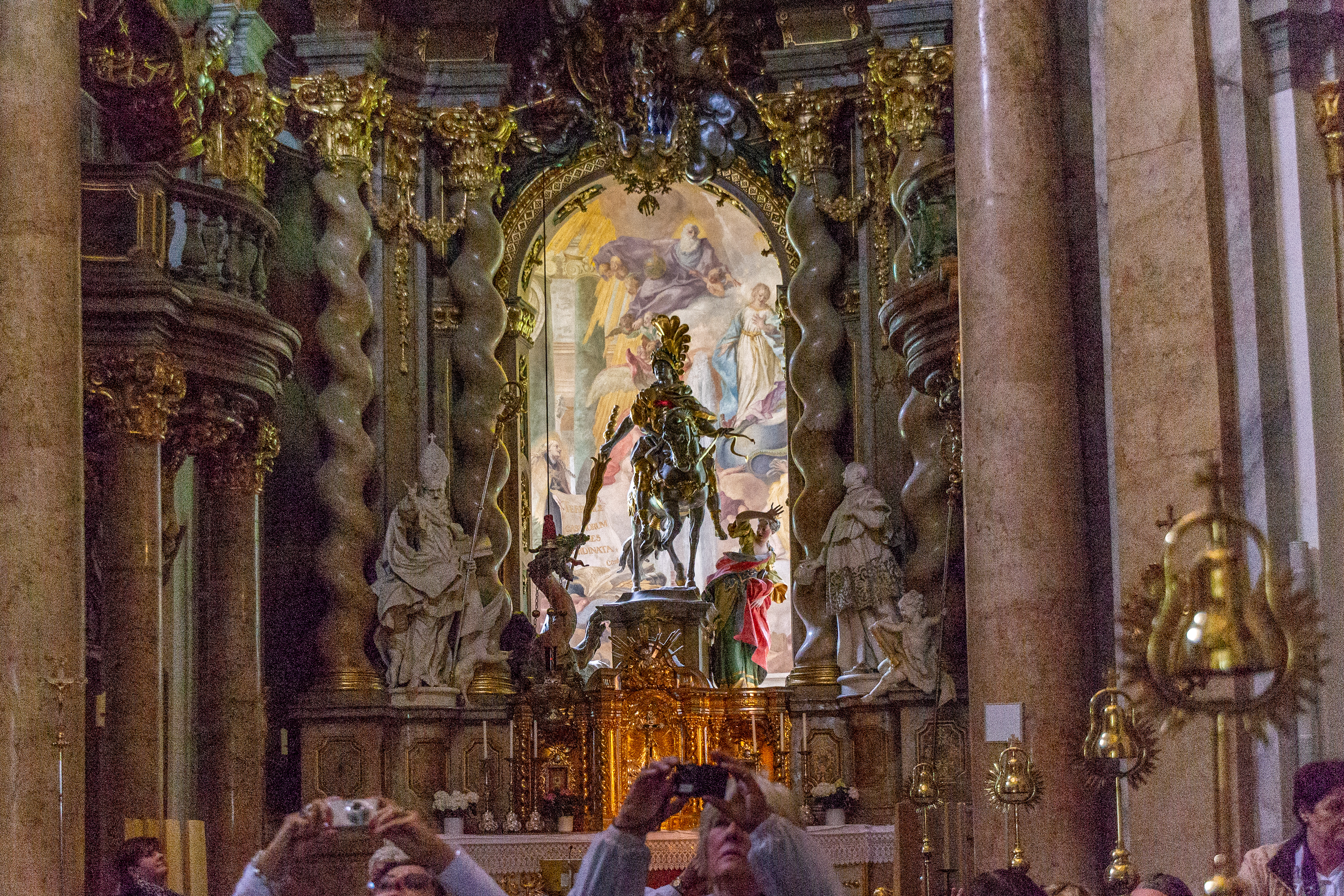
St George on top of the main altar of the Abbey.

The Abbey courtyard. Weltenburg Abbey also has a brewery, by some reckonings the oldest monastic brewery in the world, in operation since 1050.
BAMBERG
Bamberg is situated in Upper Franconia on the river Regnitz close to its confluence with the river Main. The town dates back to the 9th century, when its name was derived from the nearby Babenberch castle. It is said to be one of Germany's most beautiful medieval towns.
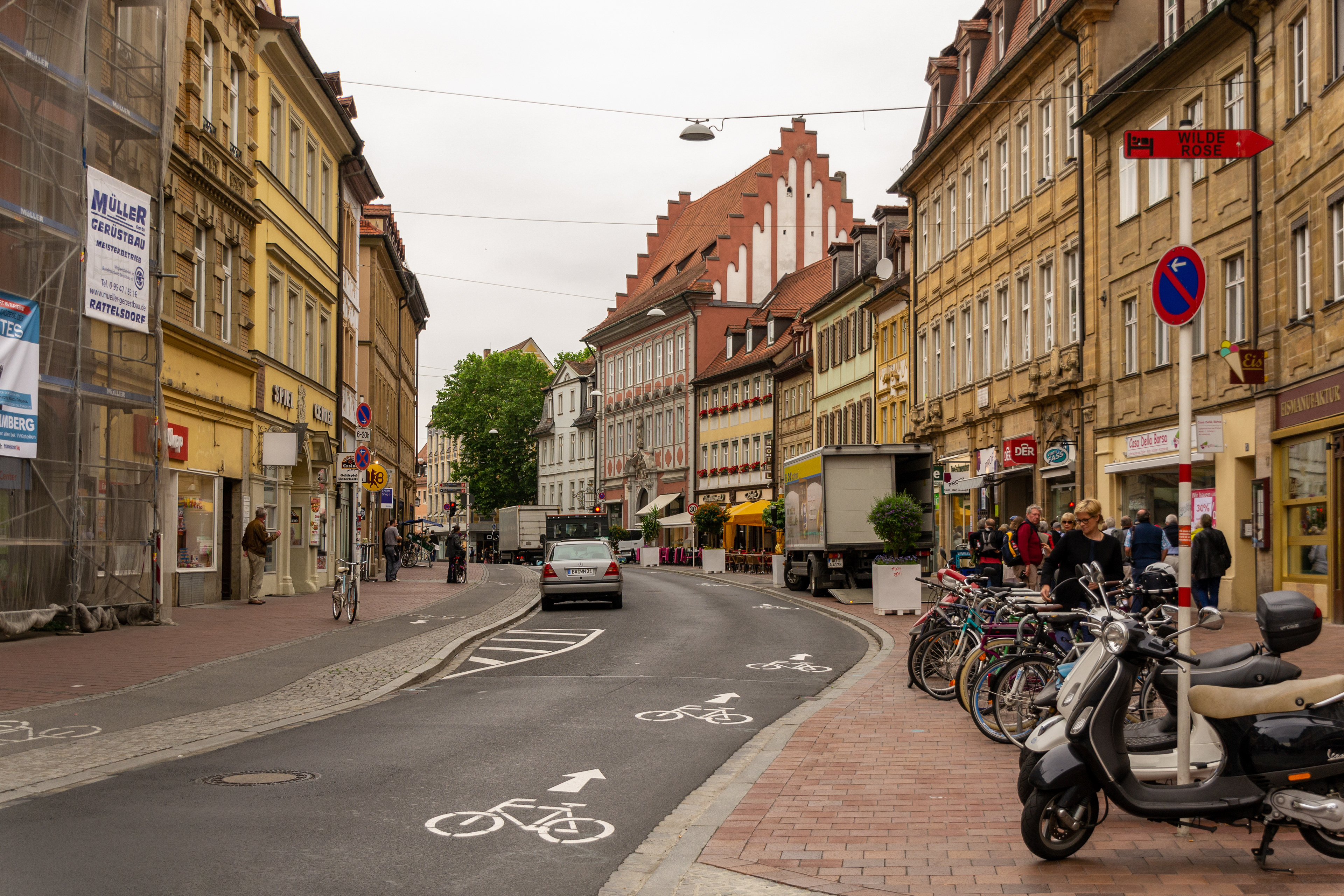
Medieval buildings line the streets of Bamberg juxtaposed to modern day vehicles.
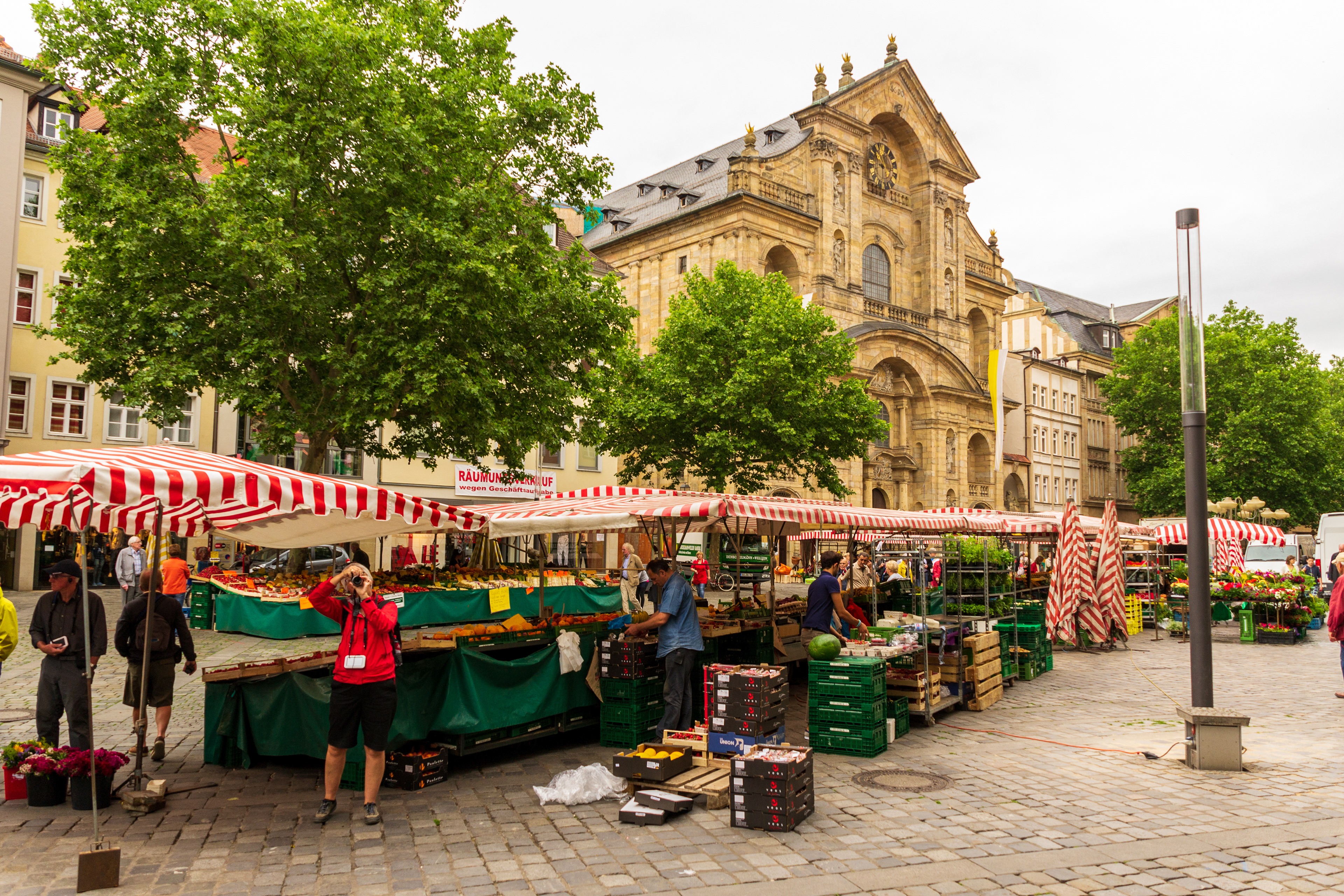
The Gruner Markt (Green Market).
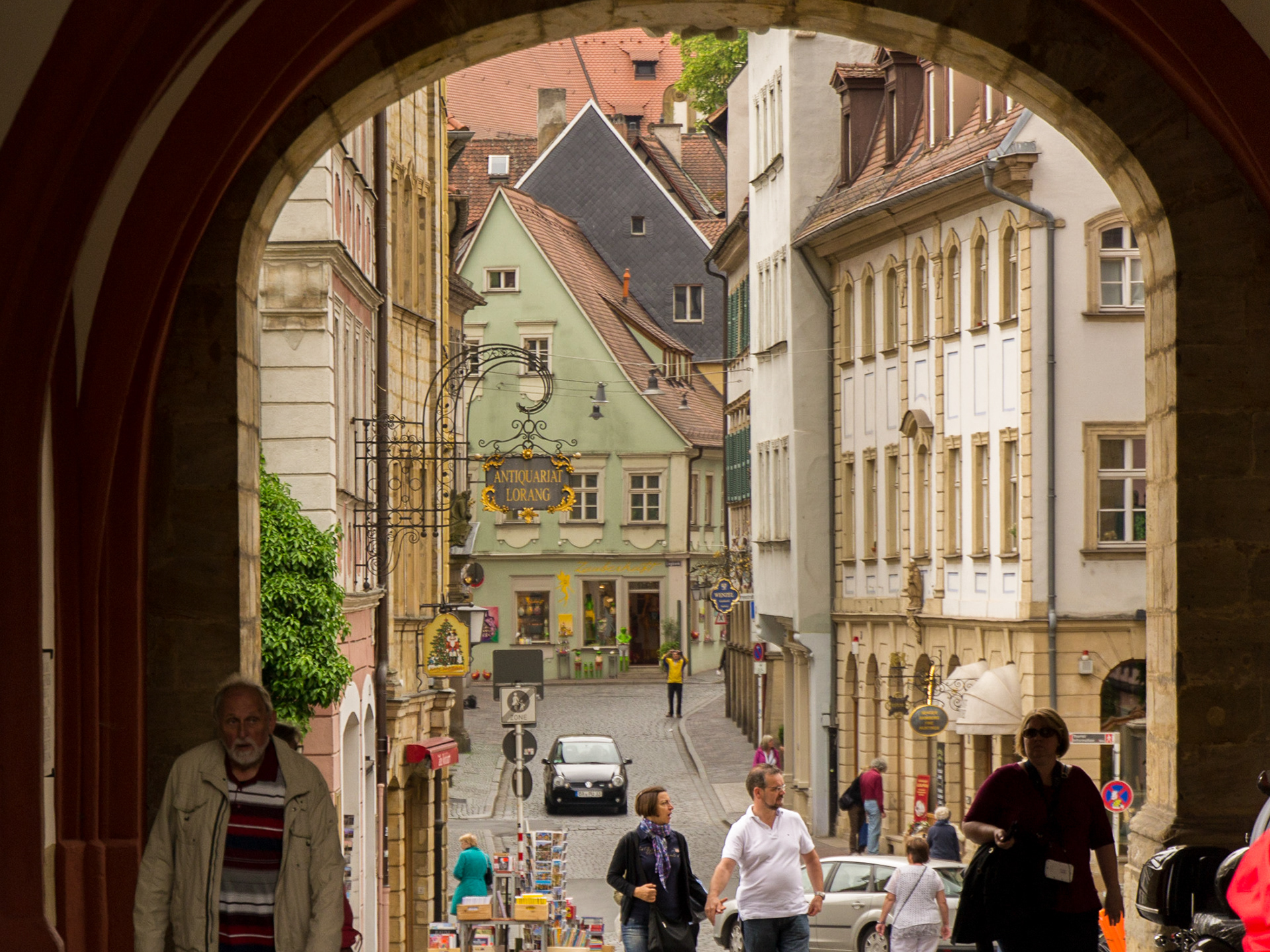
Entering the Old Town area through gates of the intact Old Town Walls.

Klein Venedig Waterfront (Little Venice) - a former fisherman's settlement built 17th century.
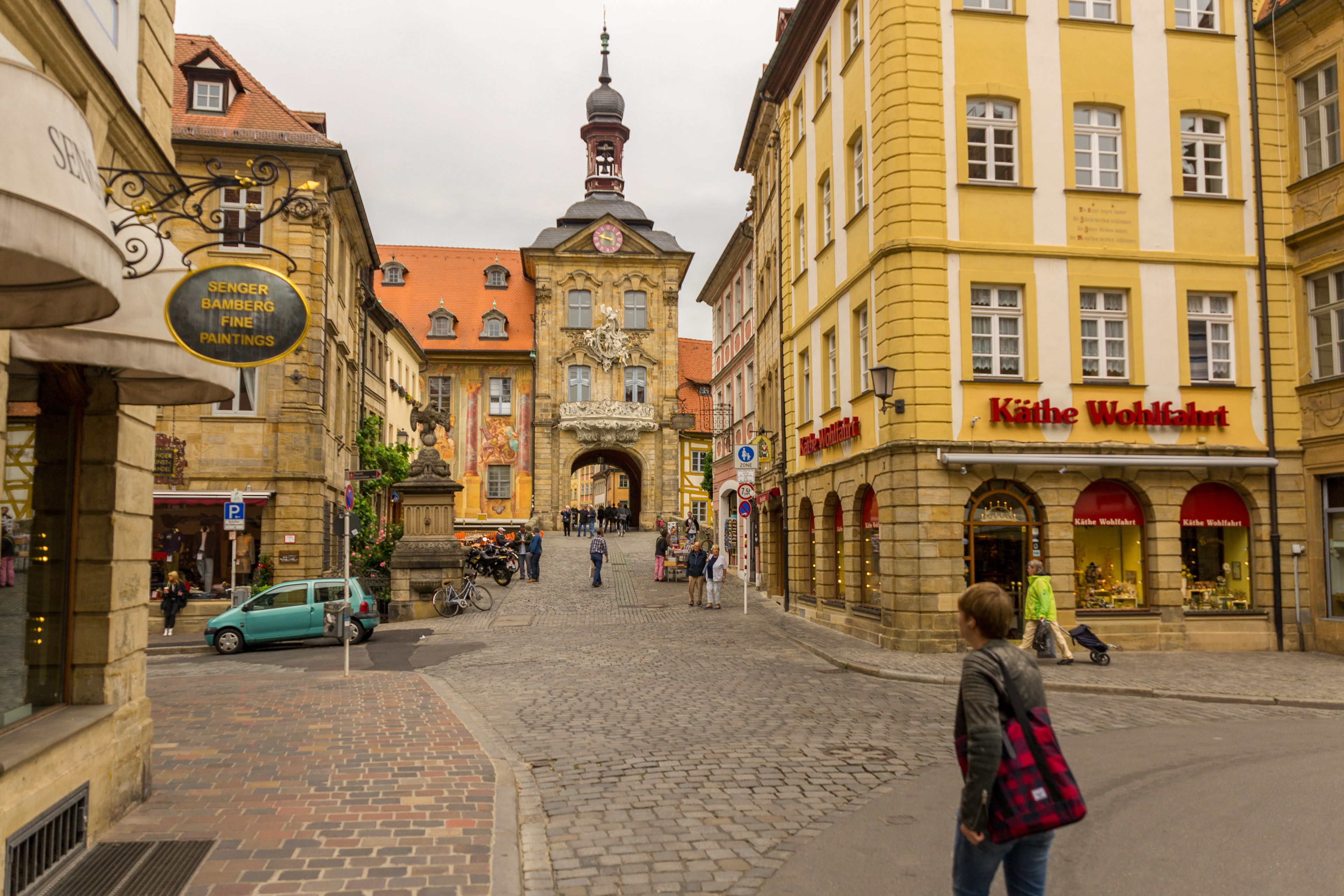
Old town center with the Altes Rathaus in the background.

Rathaus (City Hall) built 1467, originally influenced by Gothic, the building received Baroque and Rococo touches in 1756.

Frescoes adorn the walls of the Old City Hall which was built in two stages. The half-timbered part built in 1440, the remainder in 1668.
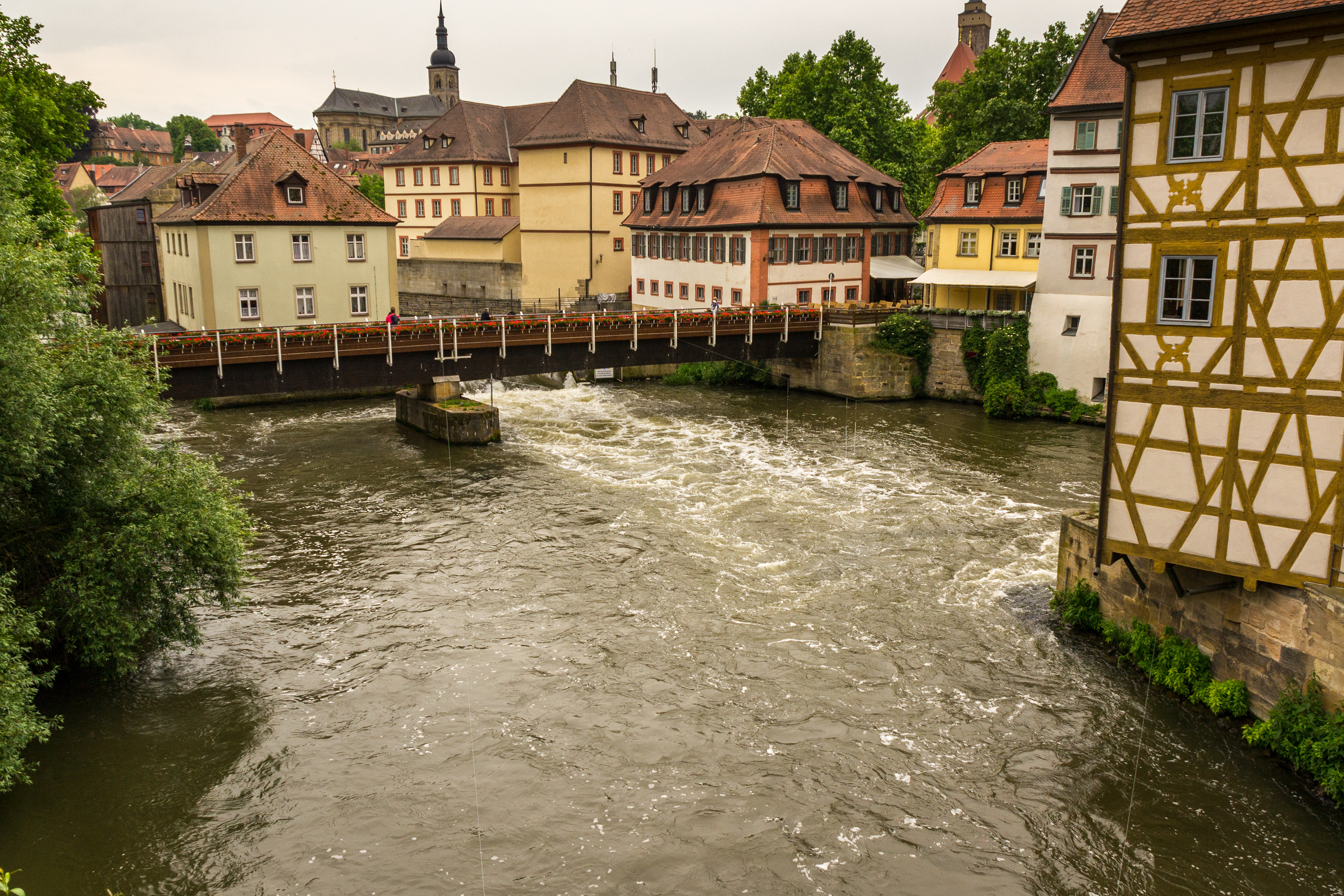
The River Regnitz, the half-timbered building on the right is the Old City Hall, unique that it is built on a bridge in the center of the river.
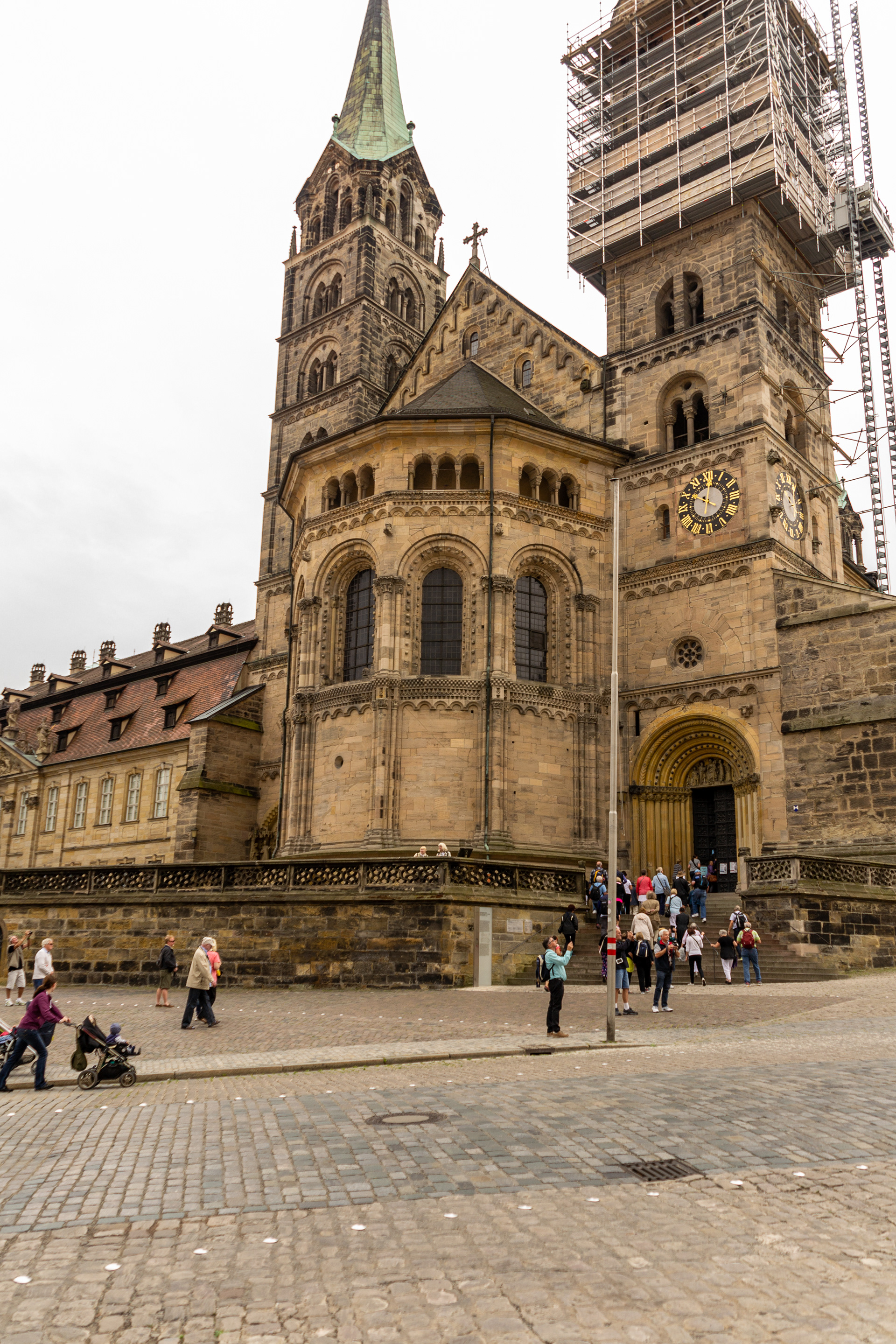
Bamberg Cathedral of St. Peter and St. George. It is also called the Kaiserdom (“Imperial Cathedral”).
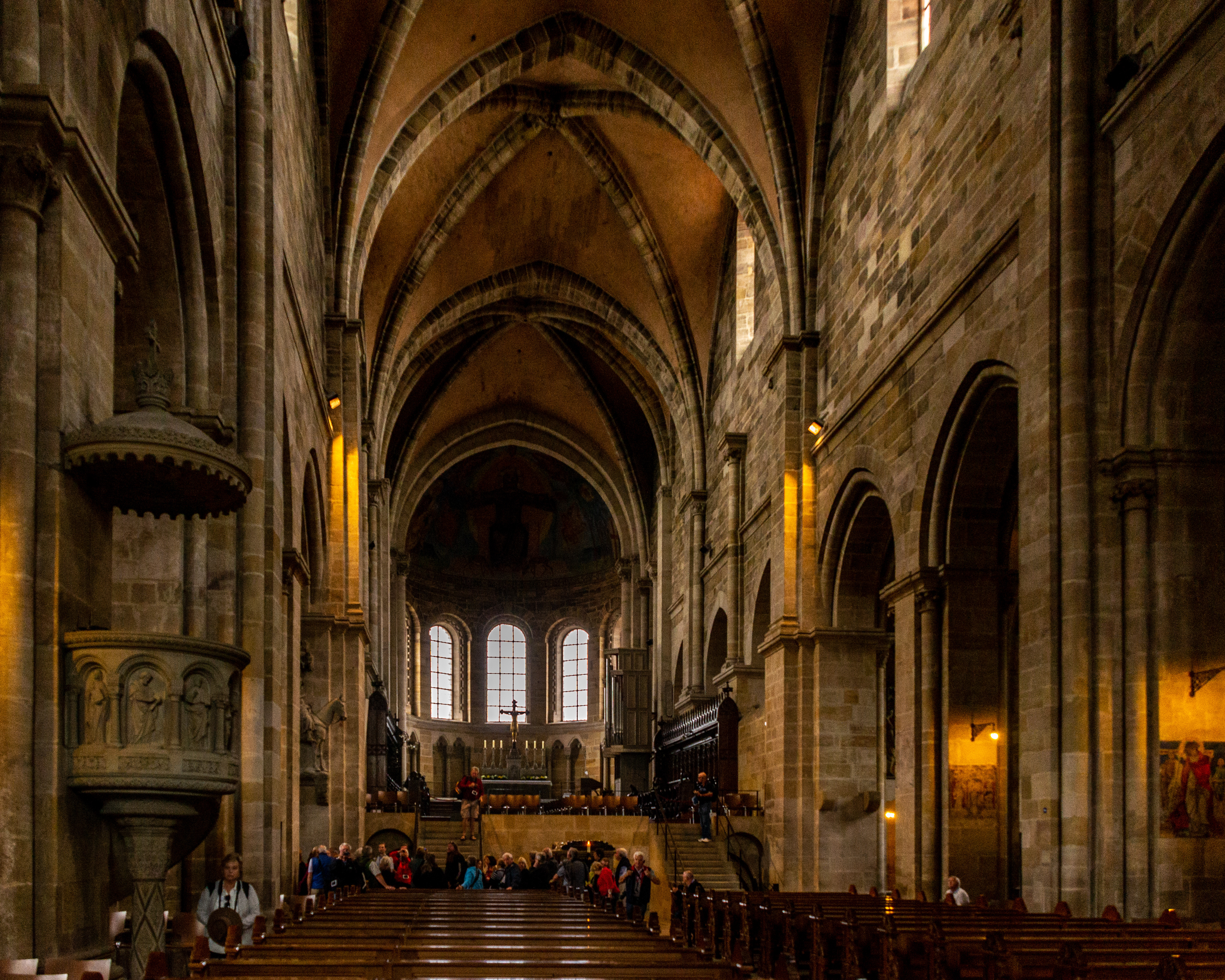
The chapel of St Peter and St George.

The portal of Adam. On the left statues of Saint Stephen, Cunegonde and Henry II and on the right Saint Peter, Adam and Eve.
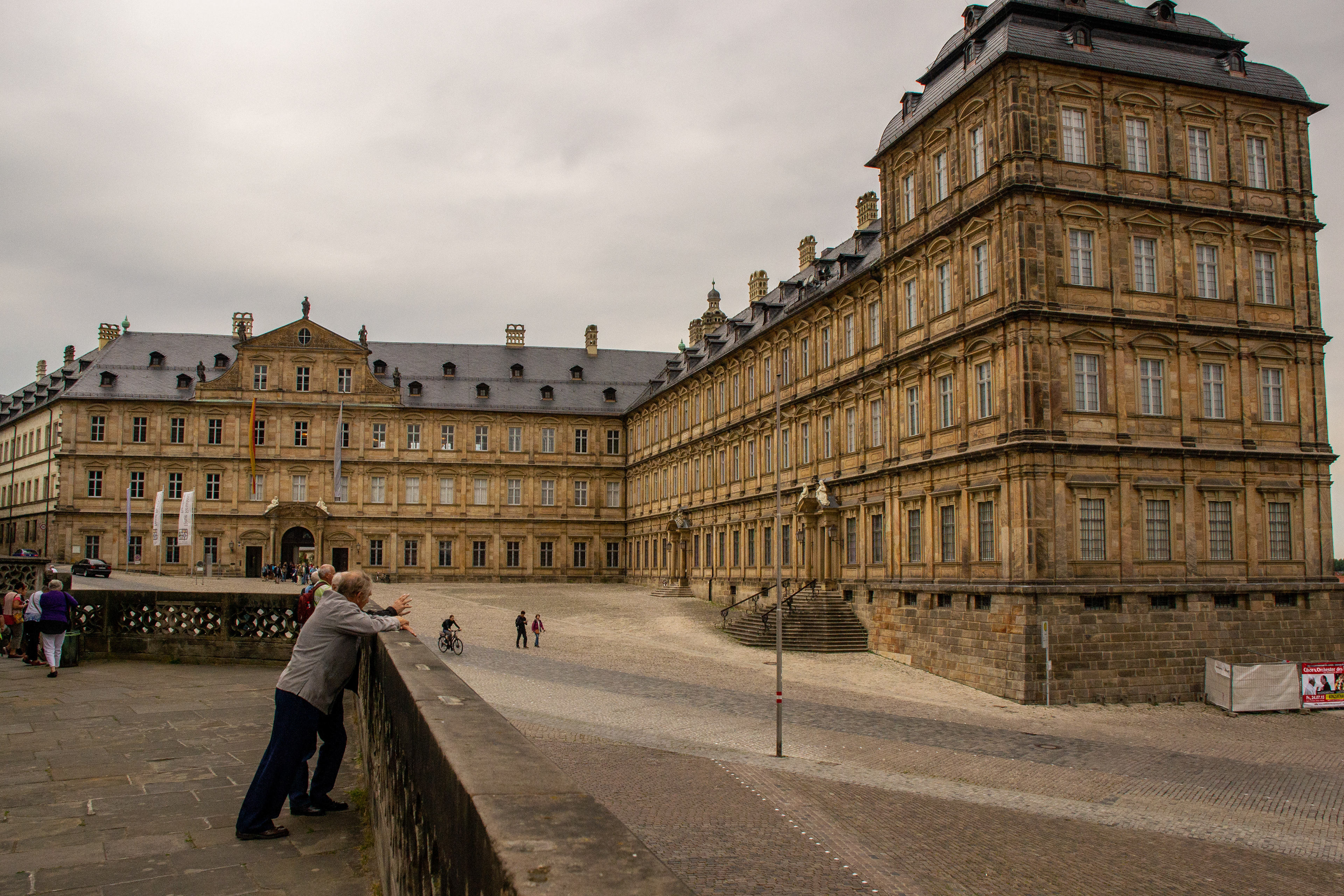
The Neue Residenz (Bishop's new residence) 17th century. It has four Renaissance wings and then Baroque extensions built a century later.

The magnificent rose gardens of the Neue Residenz.

Michaelsberg Abbey
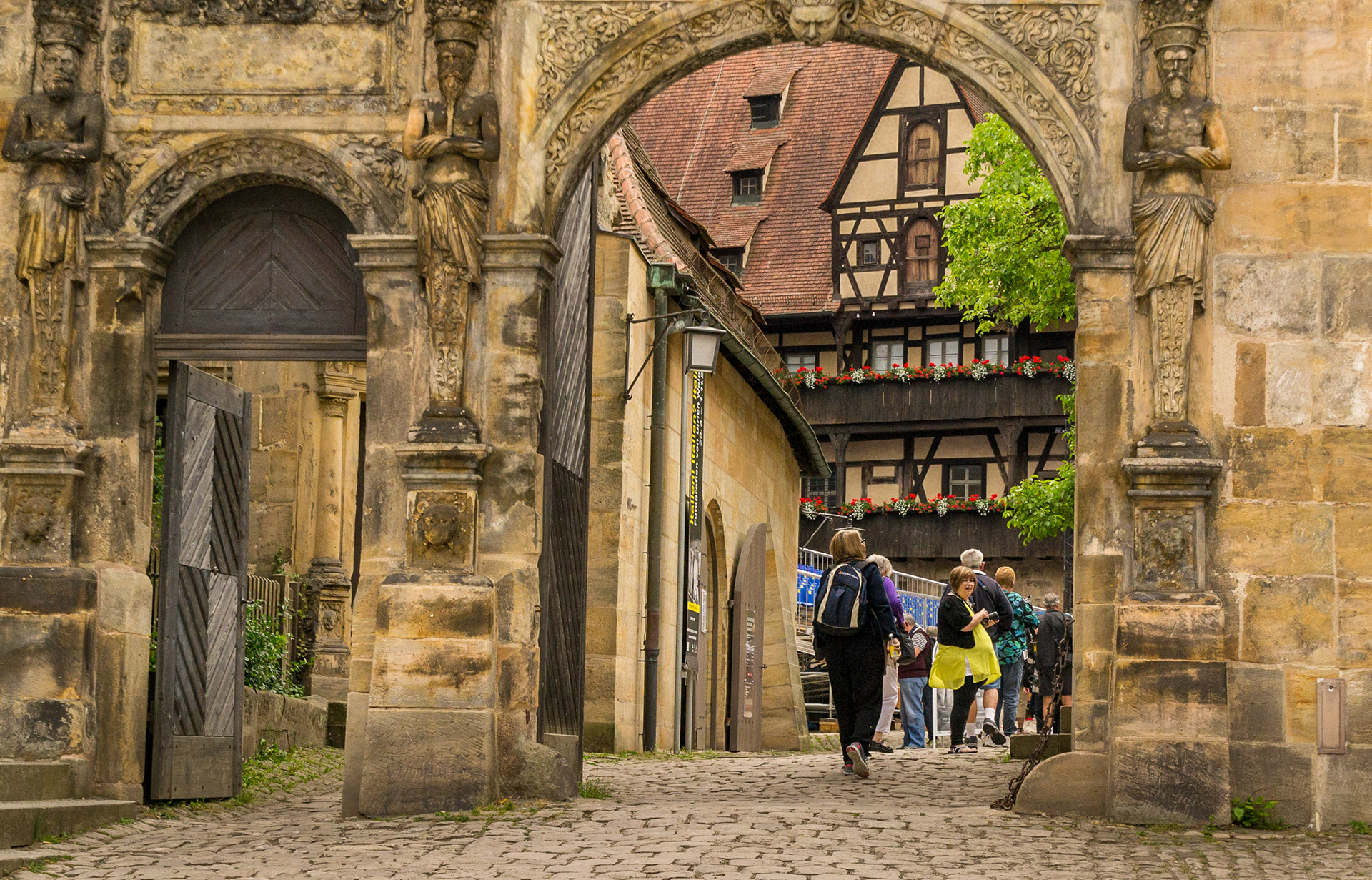
Entry gates to the Old Palace (Alte Hofhaltung, the former residential and farm buildings of the episcopal court, which were built from the 15th century on the site of the palace of Emperor Heinrich II.
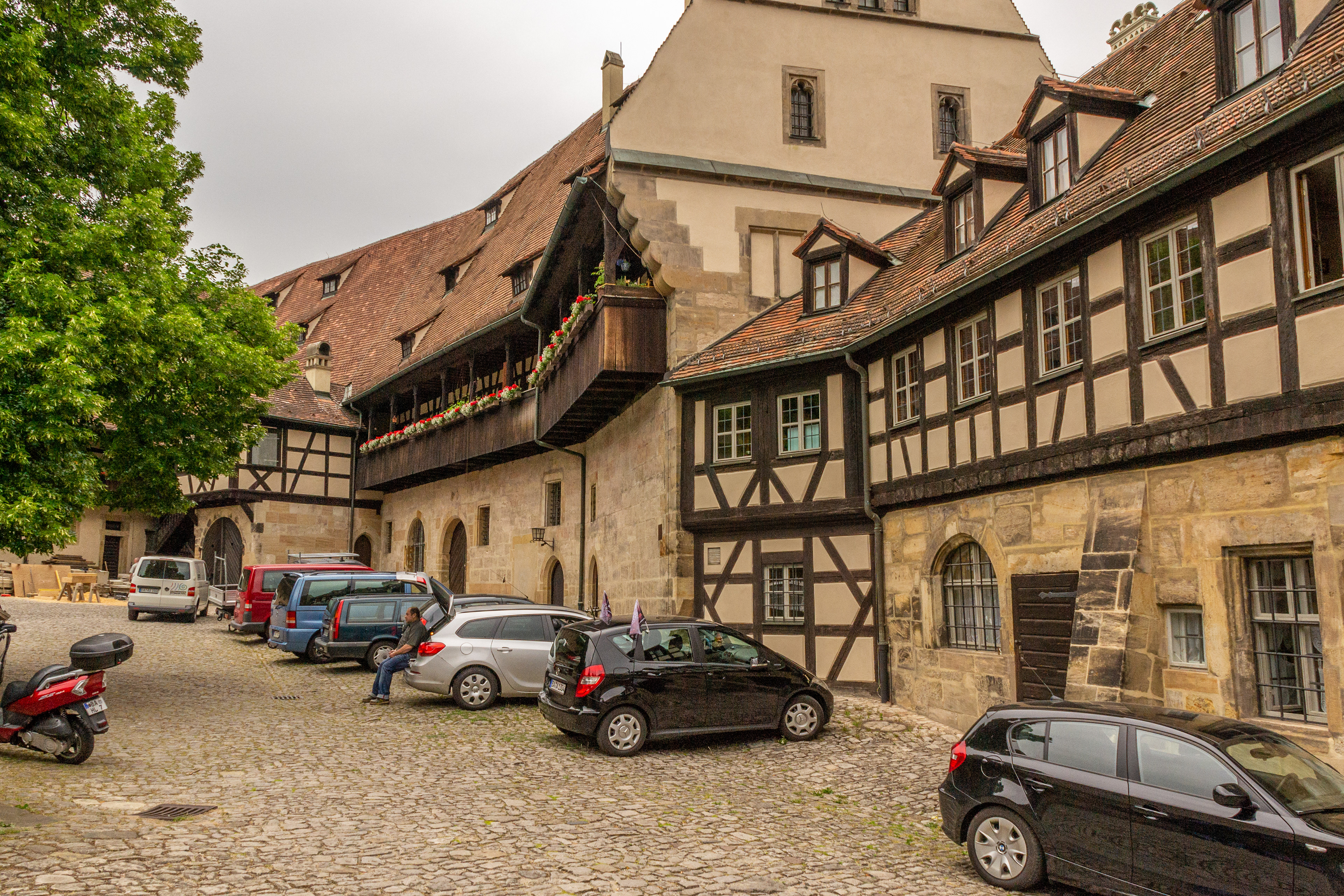
Inside the grounds of the former residential and farm buildings of the episcopal court, which were built from the 15th century on the site of the palace of Emperor Heinrich II.
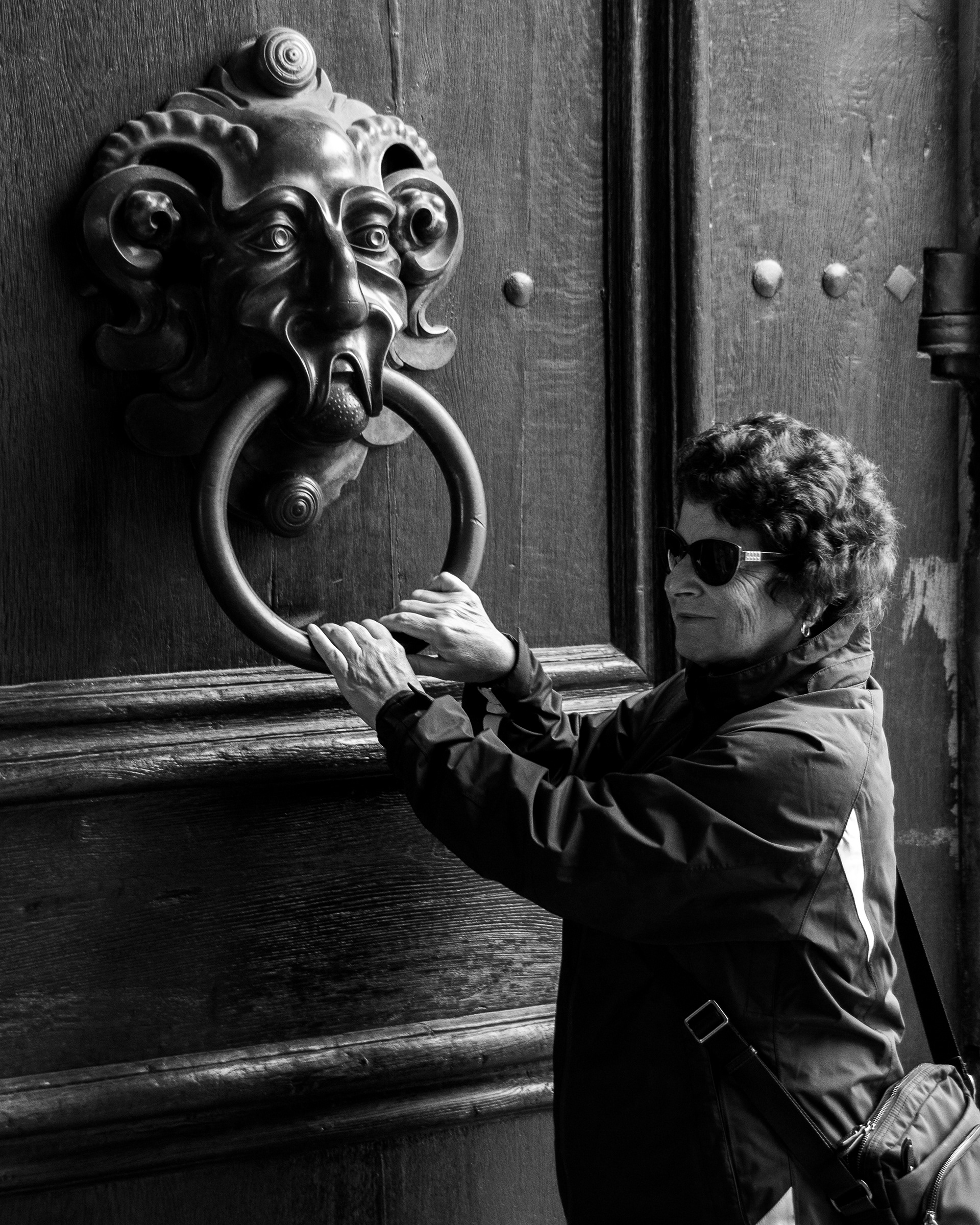
Knock-knock ....Who's there?

Modern sculpture, Centurione by Igor Mitoraj .....a face much loved by pigeons.
ROTHENBURG
Rothenburg ob der Tauber (Red Castle above the Tauber River) is considered the most perfect walled city in Germany.
We leave our ship, the Scenic Ruby in Wurzburg and travel by coach to Rothenburg via the Romantic Road, a "theme route" devised by travel agents in the 1950s.
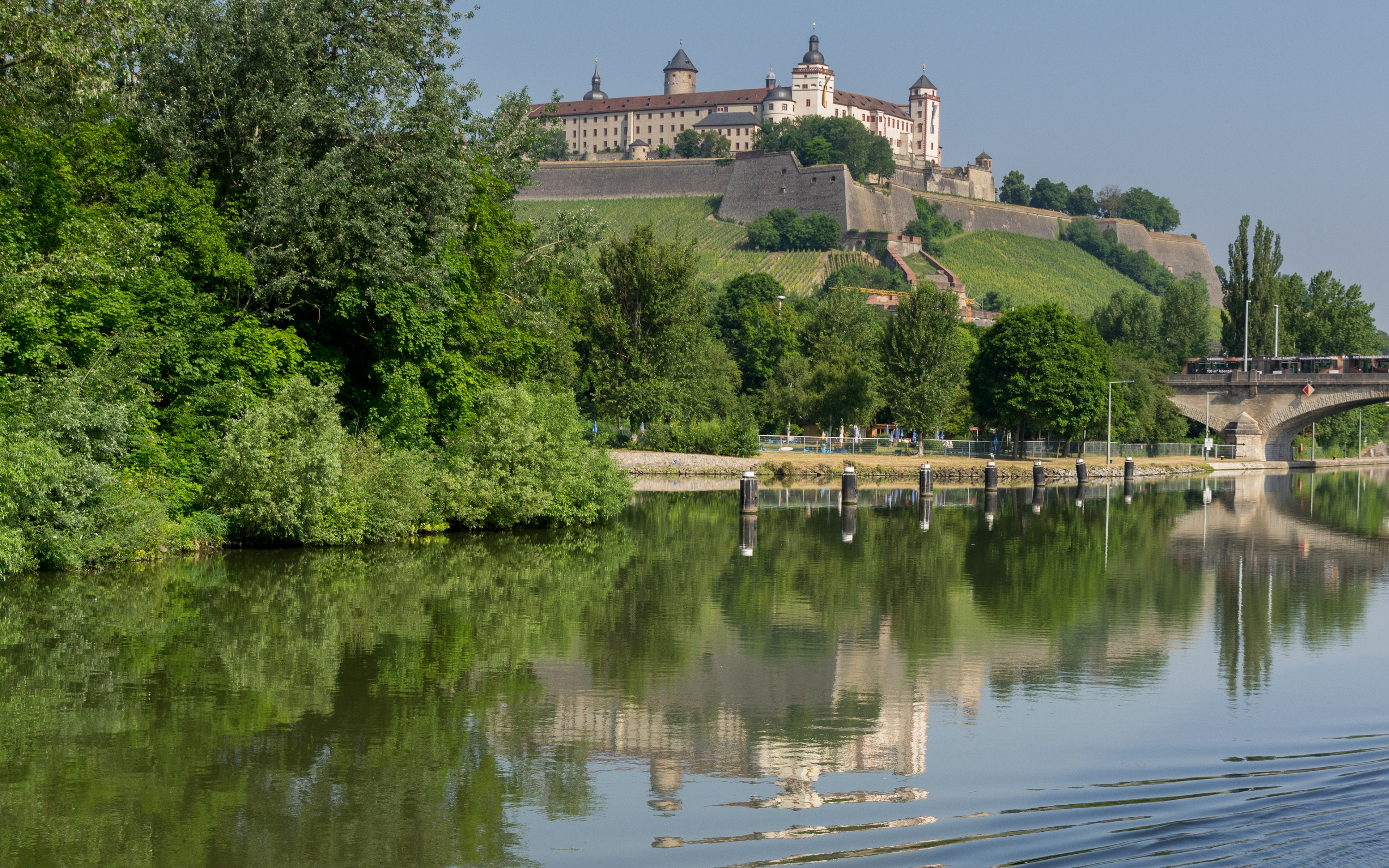
Marienberg Fortress, Wurzburg overlooking the River Main dates back over five centuries.
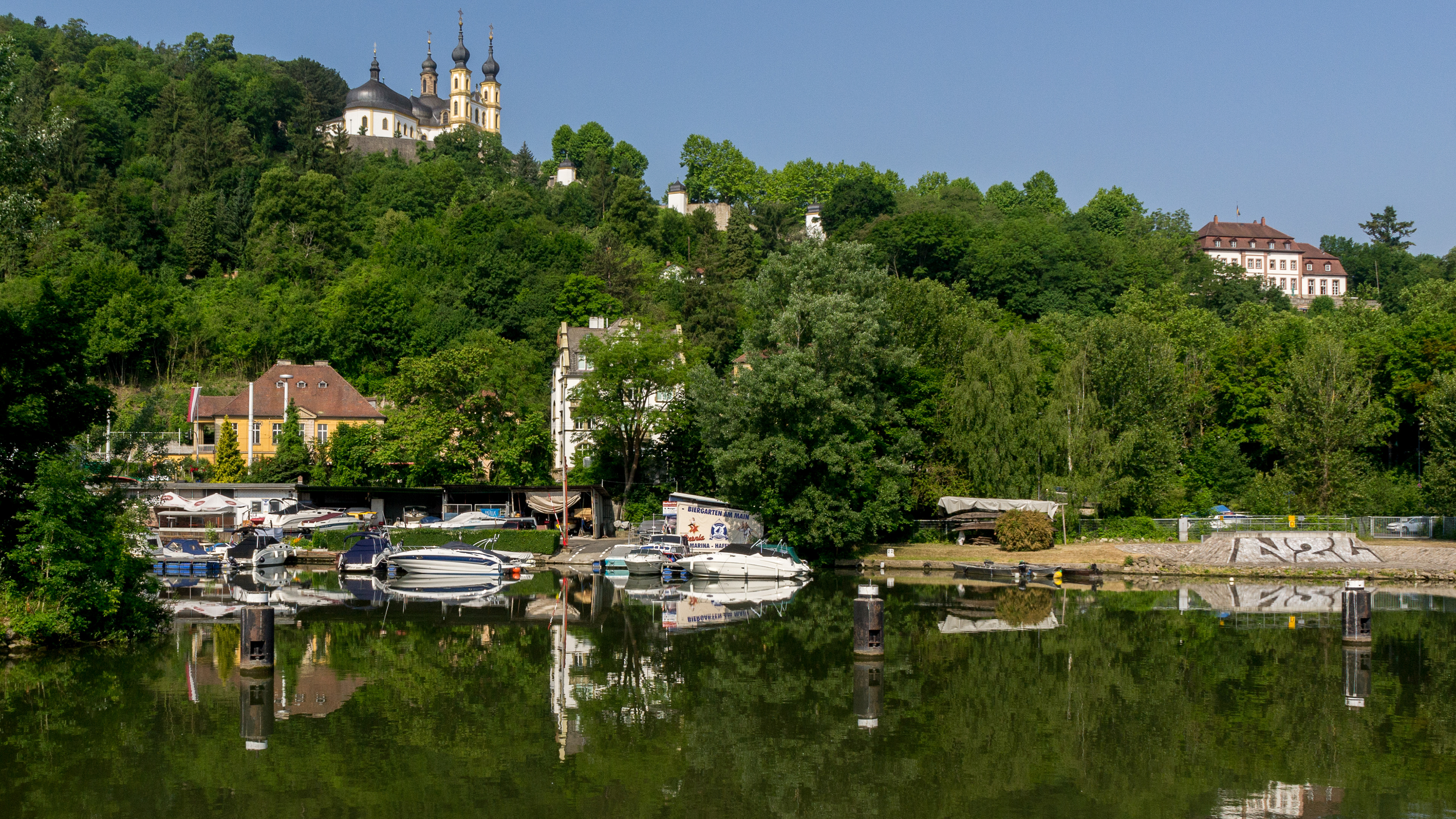
Reflections inthe River Main. Above on the hill is The Käppele ('Little Chapel'), the commonly used name for the Wallfahrtskirche Mariä Heimsuchung.
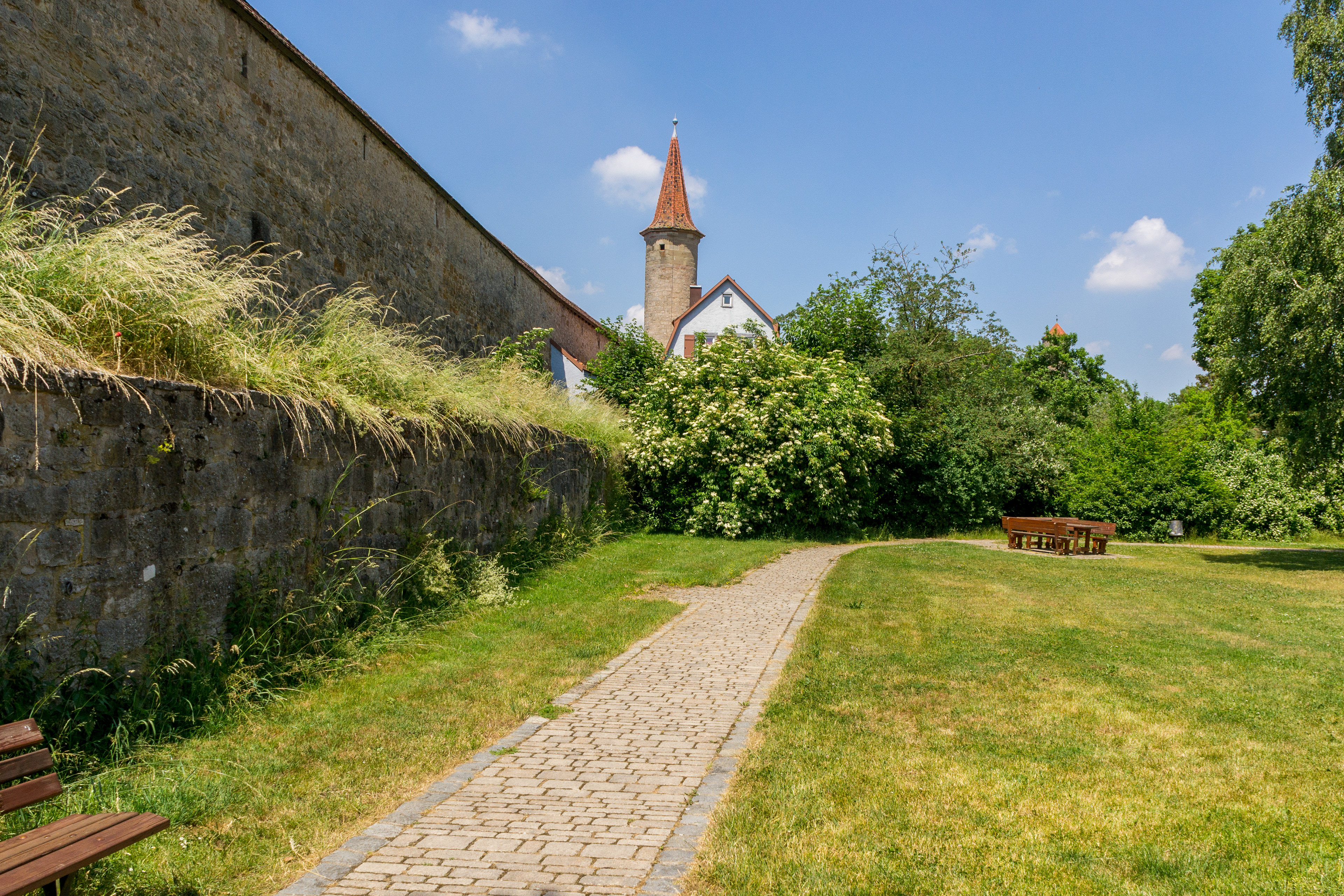
Rothenburg, Medieval walls and fortifications still surround the old town.

The Gallow-Gate, convicted criminals were brought out of the city through this gate to the gallows.
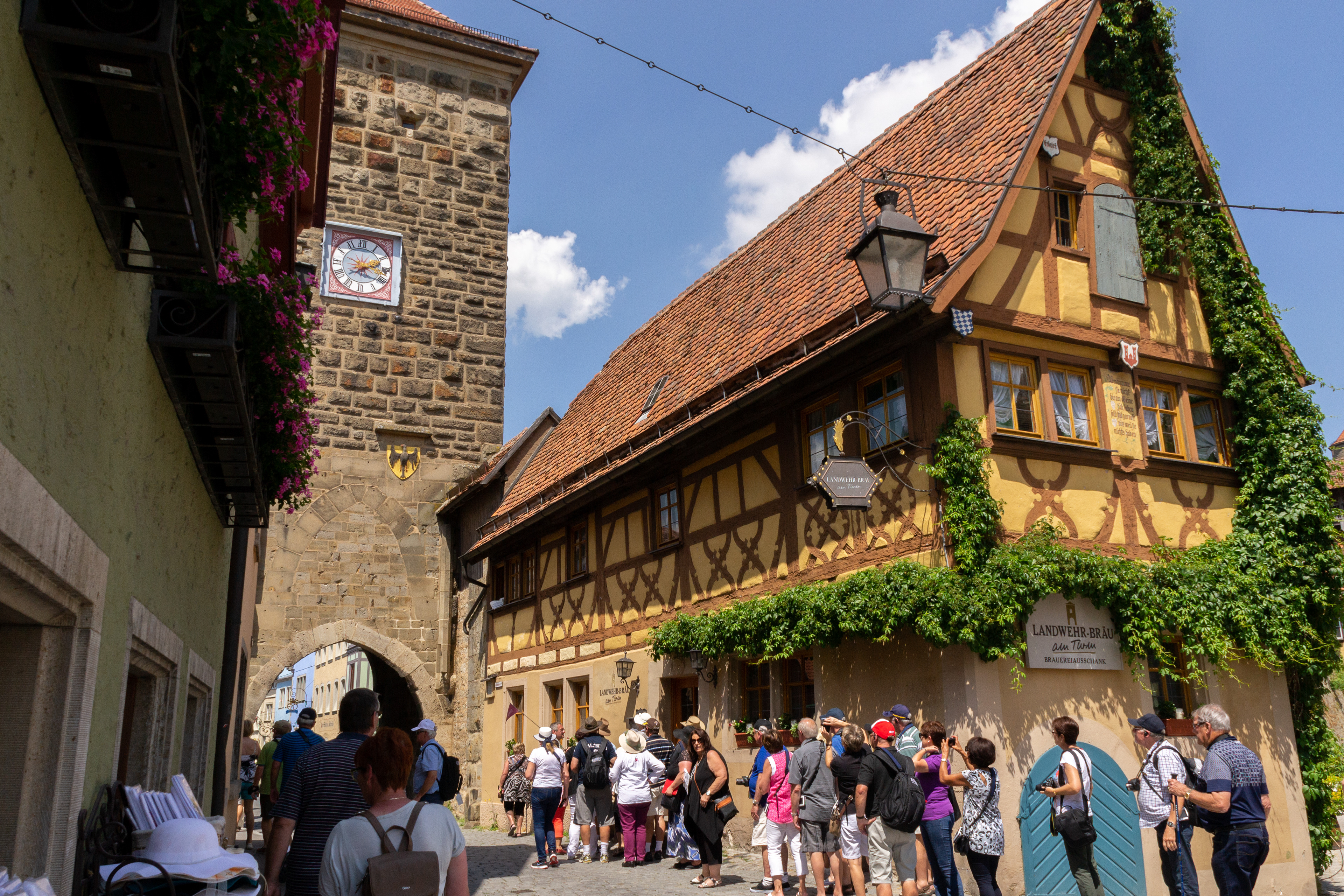
The Sifter Maker’s Tower (Siebersturm) which was added in 1385 as part of the new fortifications.
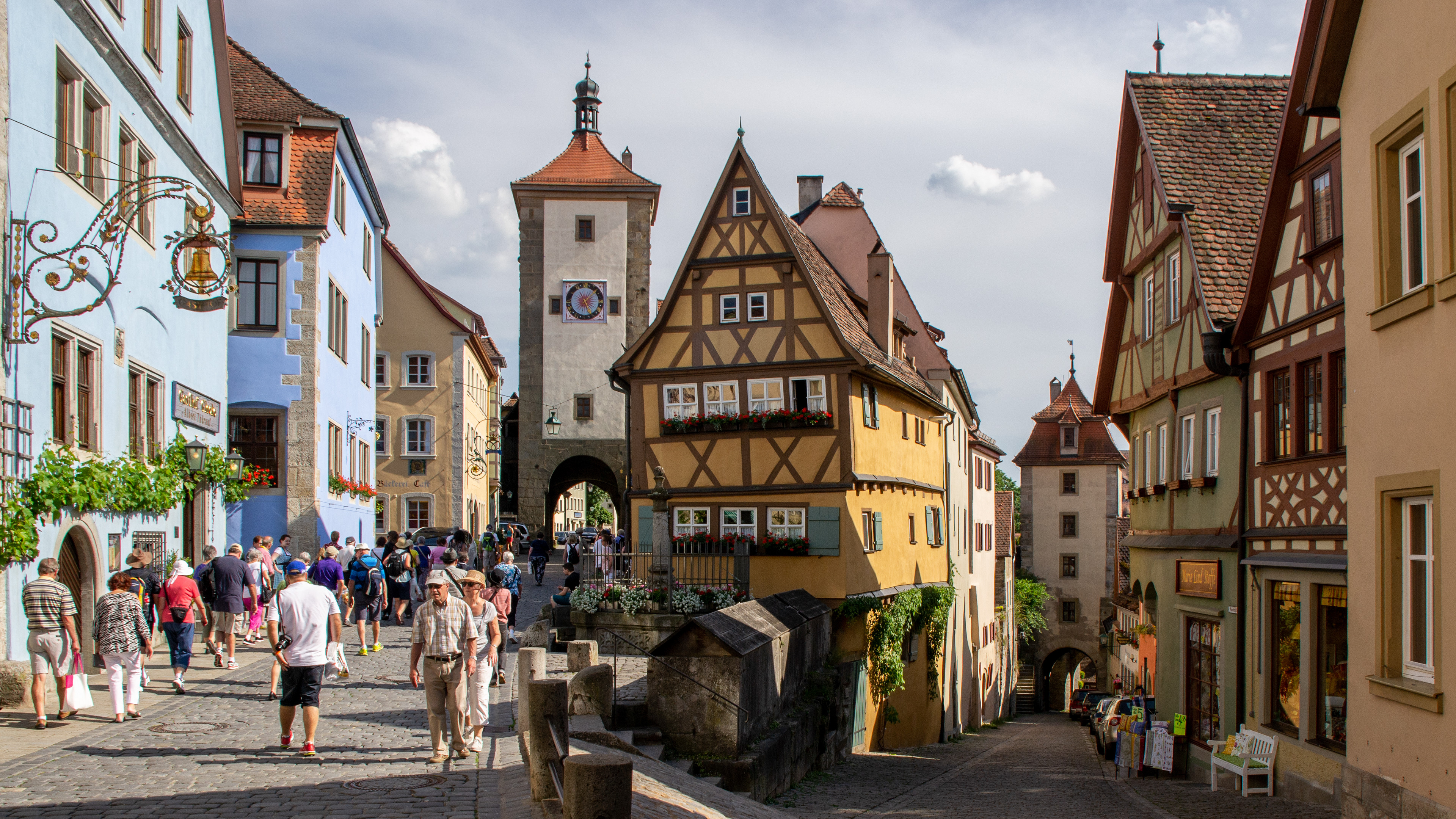
Plönlein with Kobolzeller Steige and Spitalgasse, one of the most famous and most photographed locations in Rothenburg.
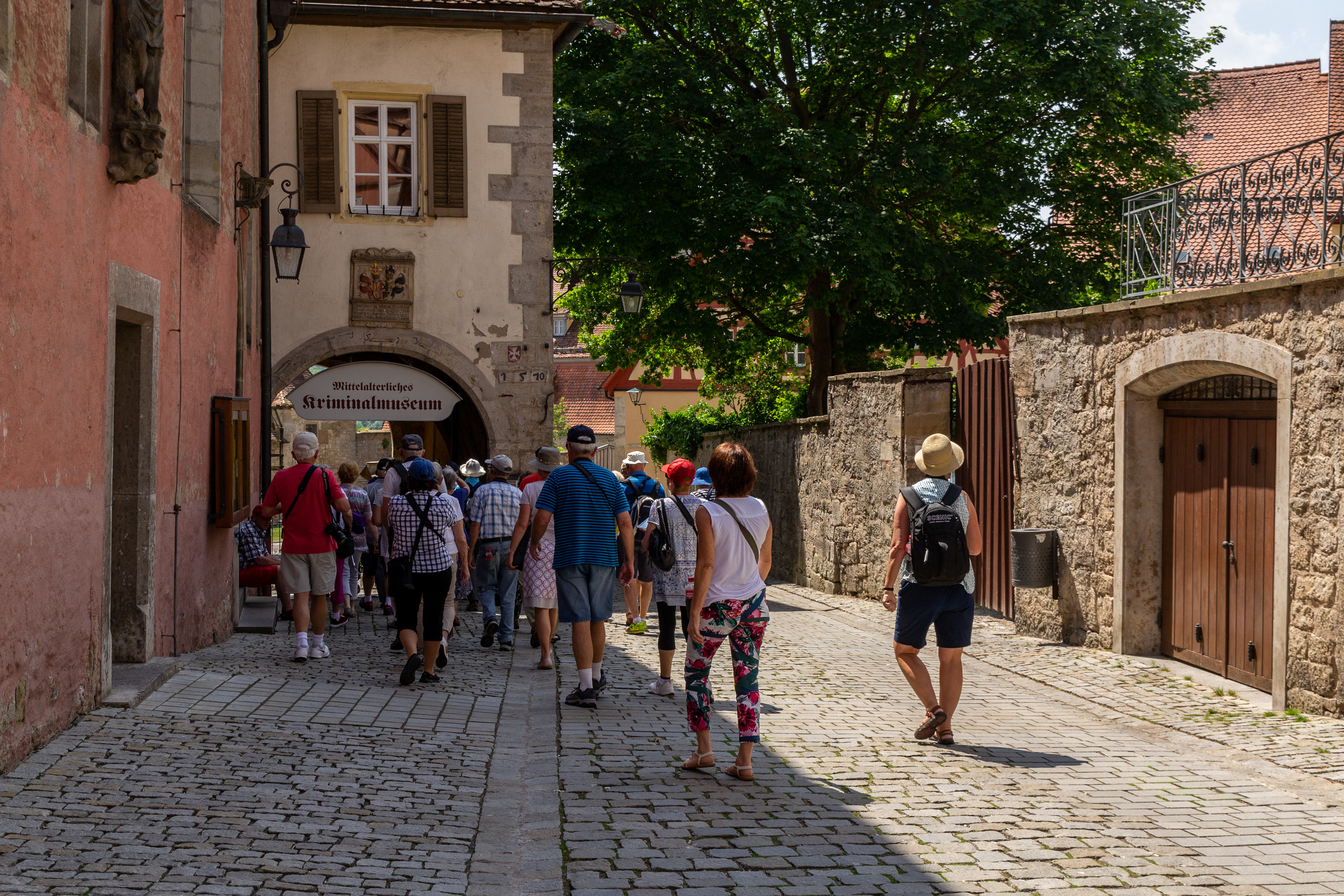
Ahead the Kriminalmuseum (Medieval crime museum).
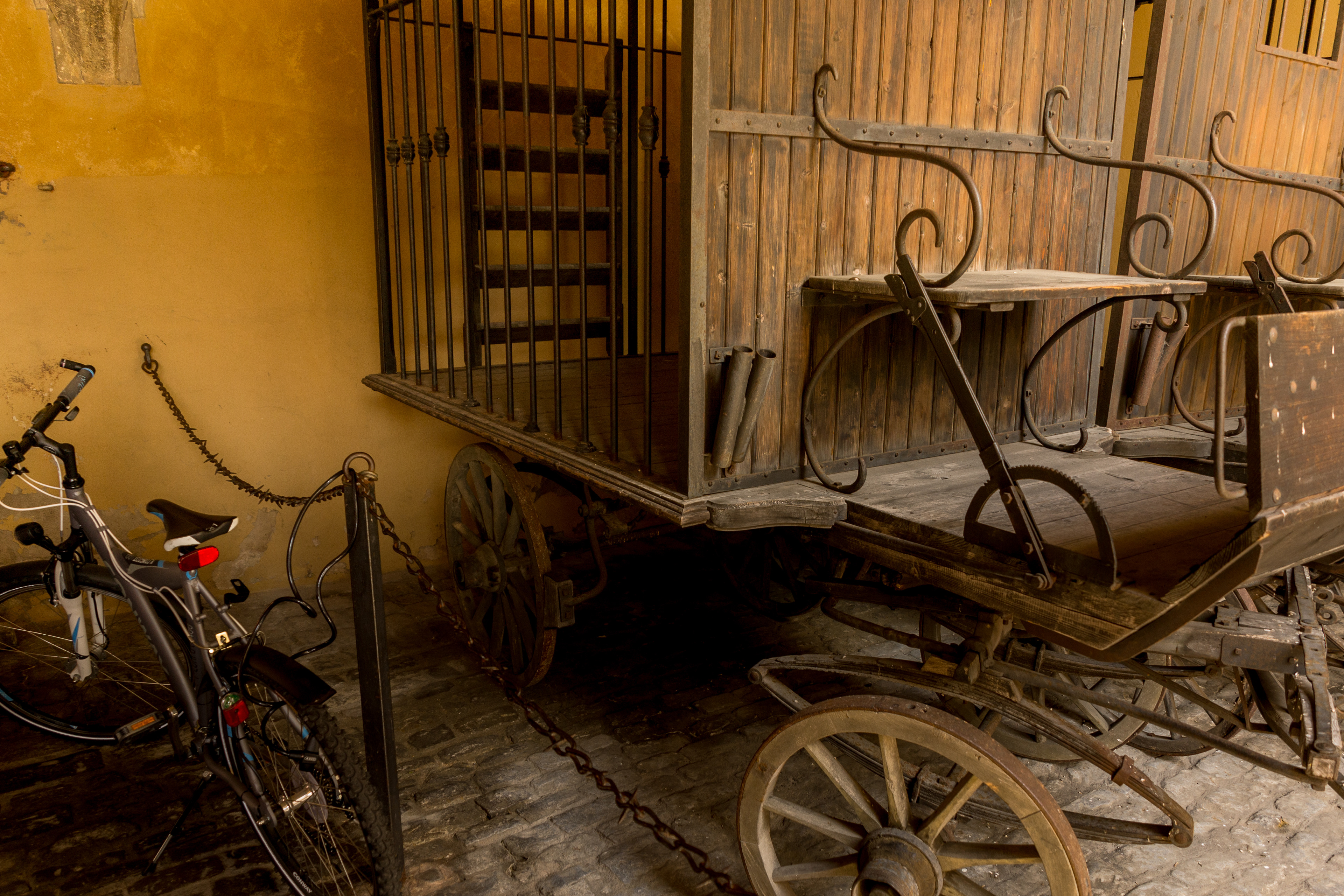
Medieval jailers wagon in the museum.
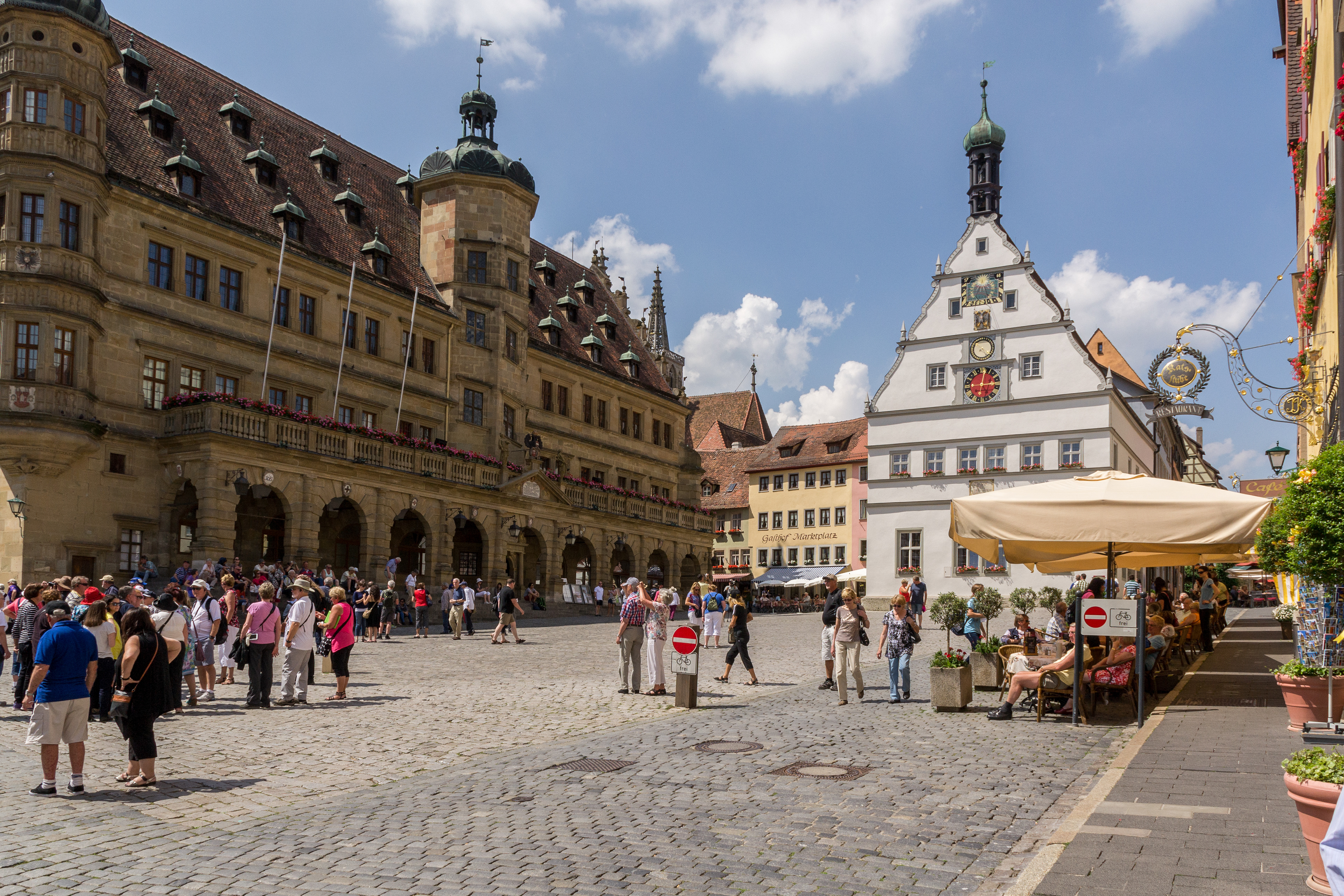
The Rathaus or Town Hall (left) dominates the Markt square.

The Meistertrunk of the astronomical clock of the Ratstrinkstube. The clock chimes on the hour and doors open on either side of the clock reenacting the legendary story of the mayor who drank 3l jar of wine to save his city.
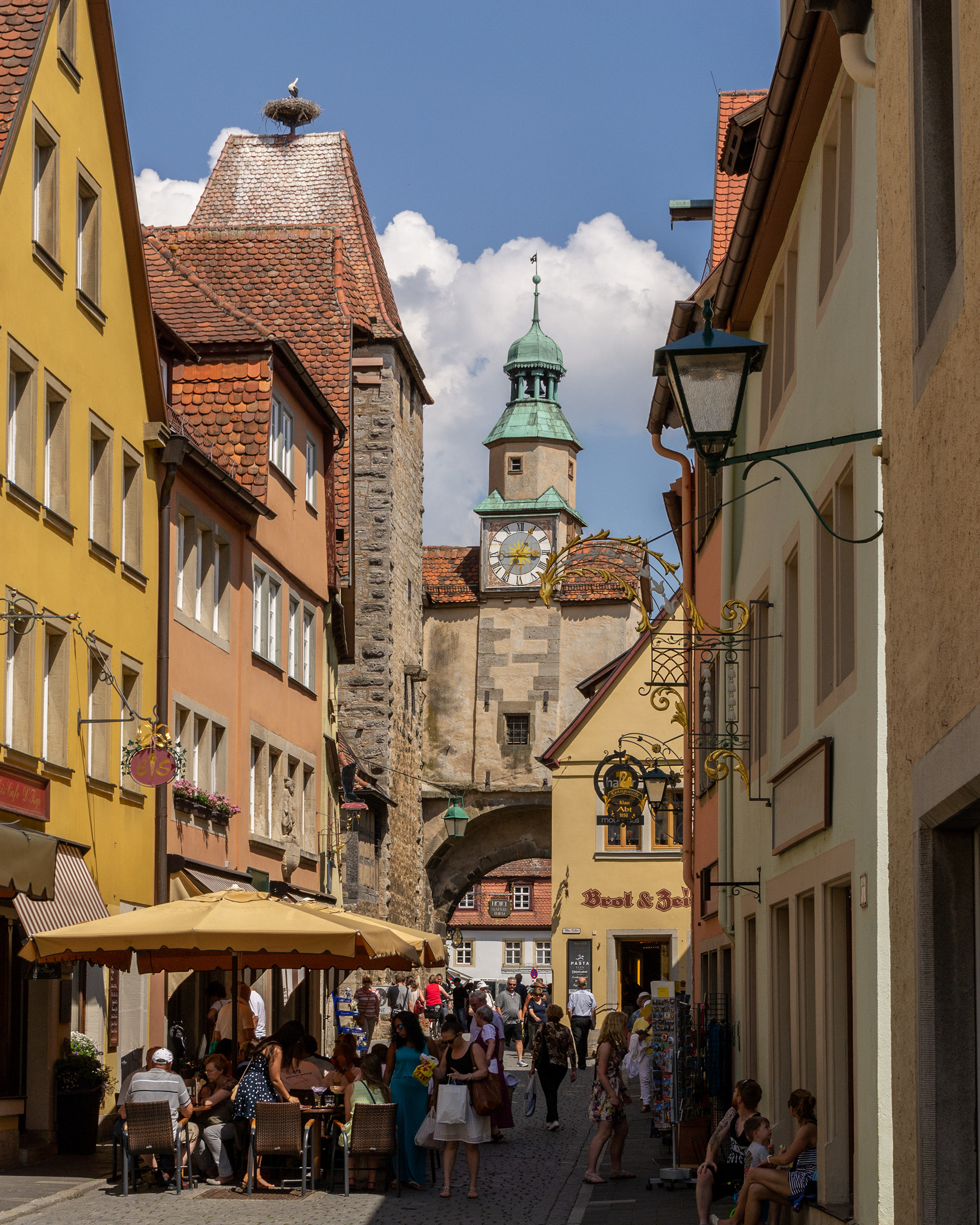
The Markus Tower and the Röderbogen are part of the oldest wall (no longer exists) around Rothenburg. exist.. The storks arrive annually to nest on on top of Marcus Tower.
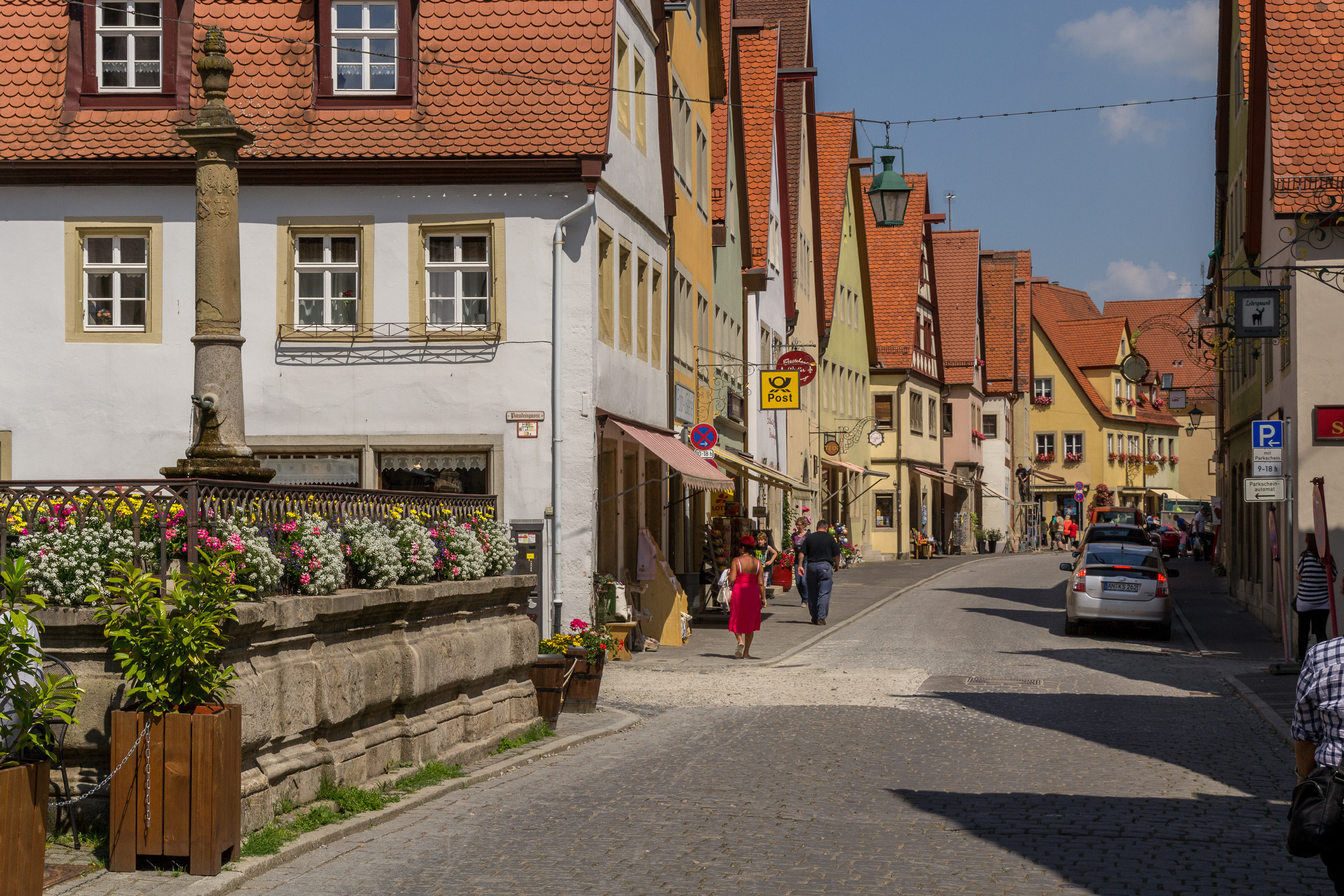
The Roder Fountain was in medieval times one of the town population's main sources of water supply.
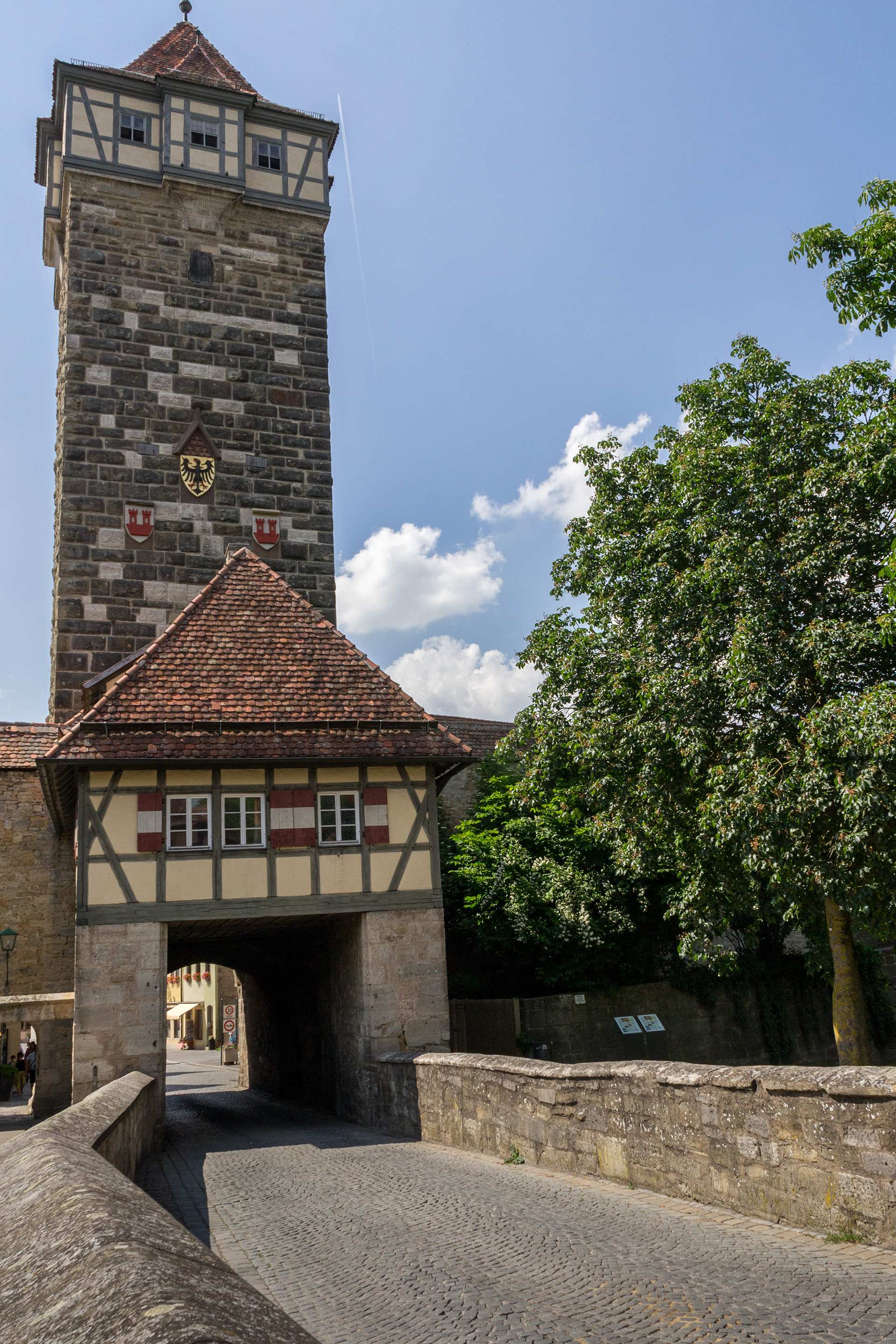
The Rödertor, one of the five main gates of the outer city fortifications of Rothenburg.

The dry moat outside the medieval walls of Rothenburg are now tranquil parklands.

Pedestrian access paths at the Roderturm take you outside the fortified walls of the old city.
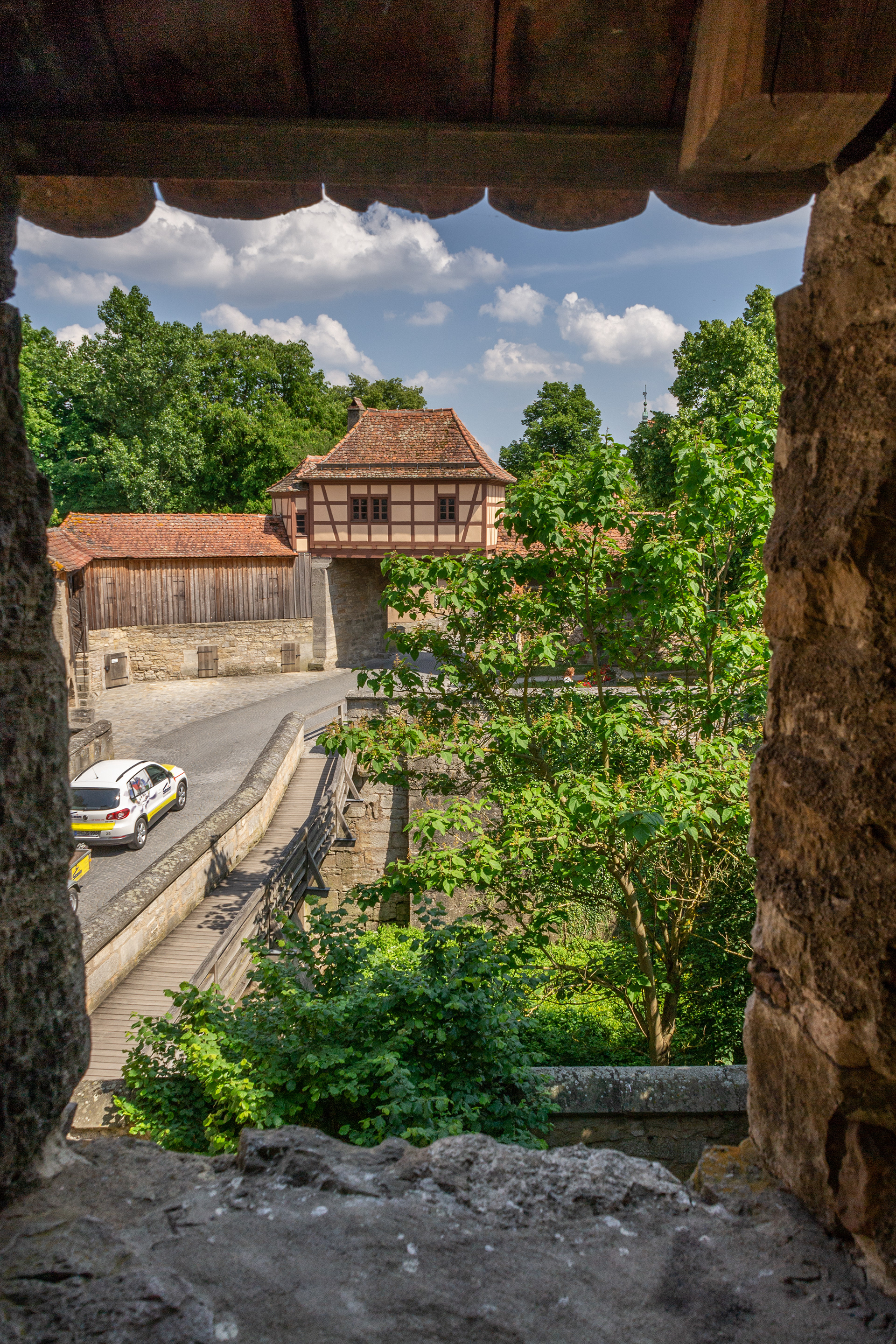
Looking from The Rödertor. Beyond the moat is the front gate with its customs and guard houses.
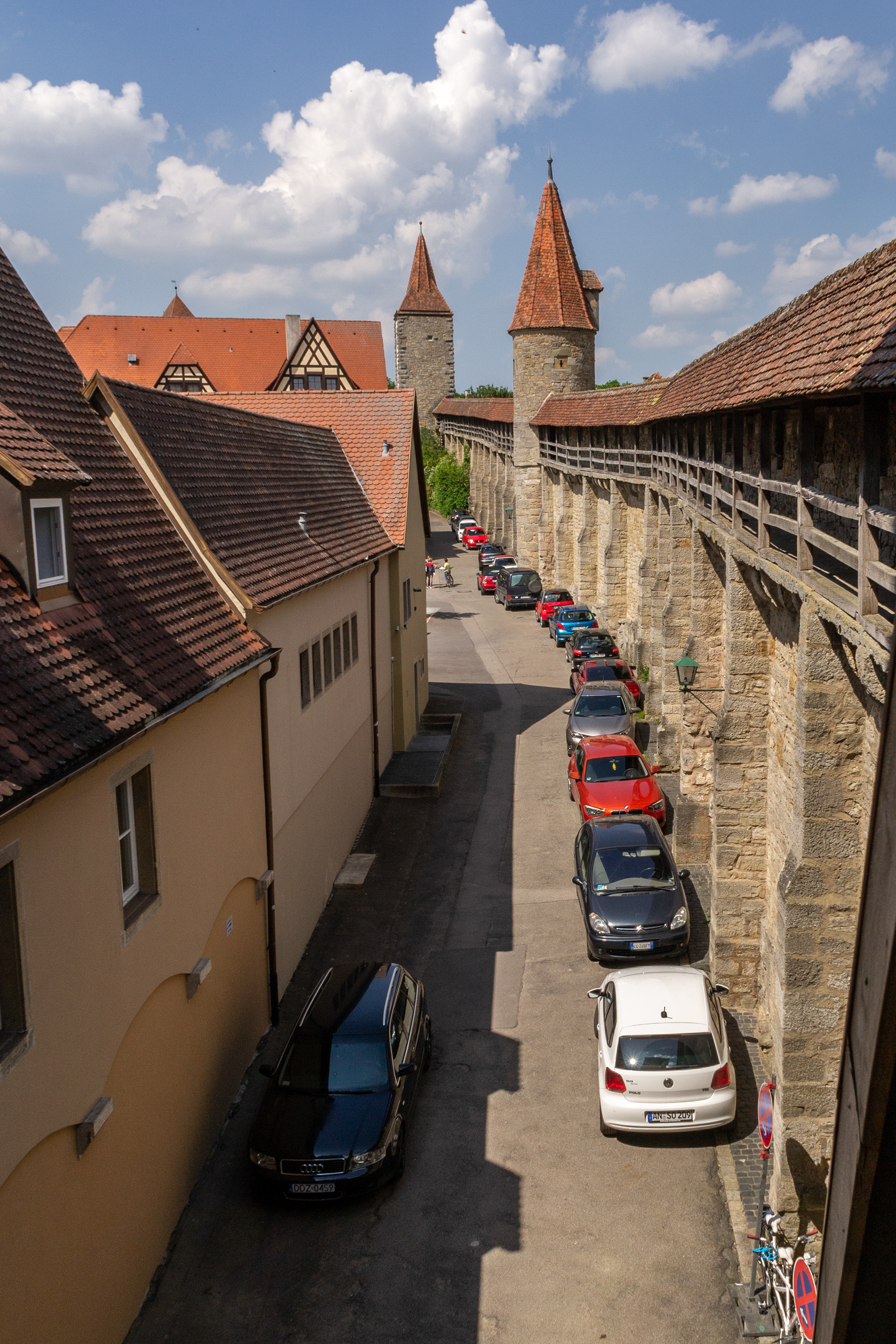

The old city walls looking south-west from Roderturm. In the distance is The RottenTower, built in 1385-1400 to house serious criminals and is one of the only round towers in town.
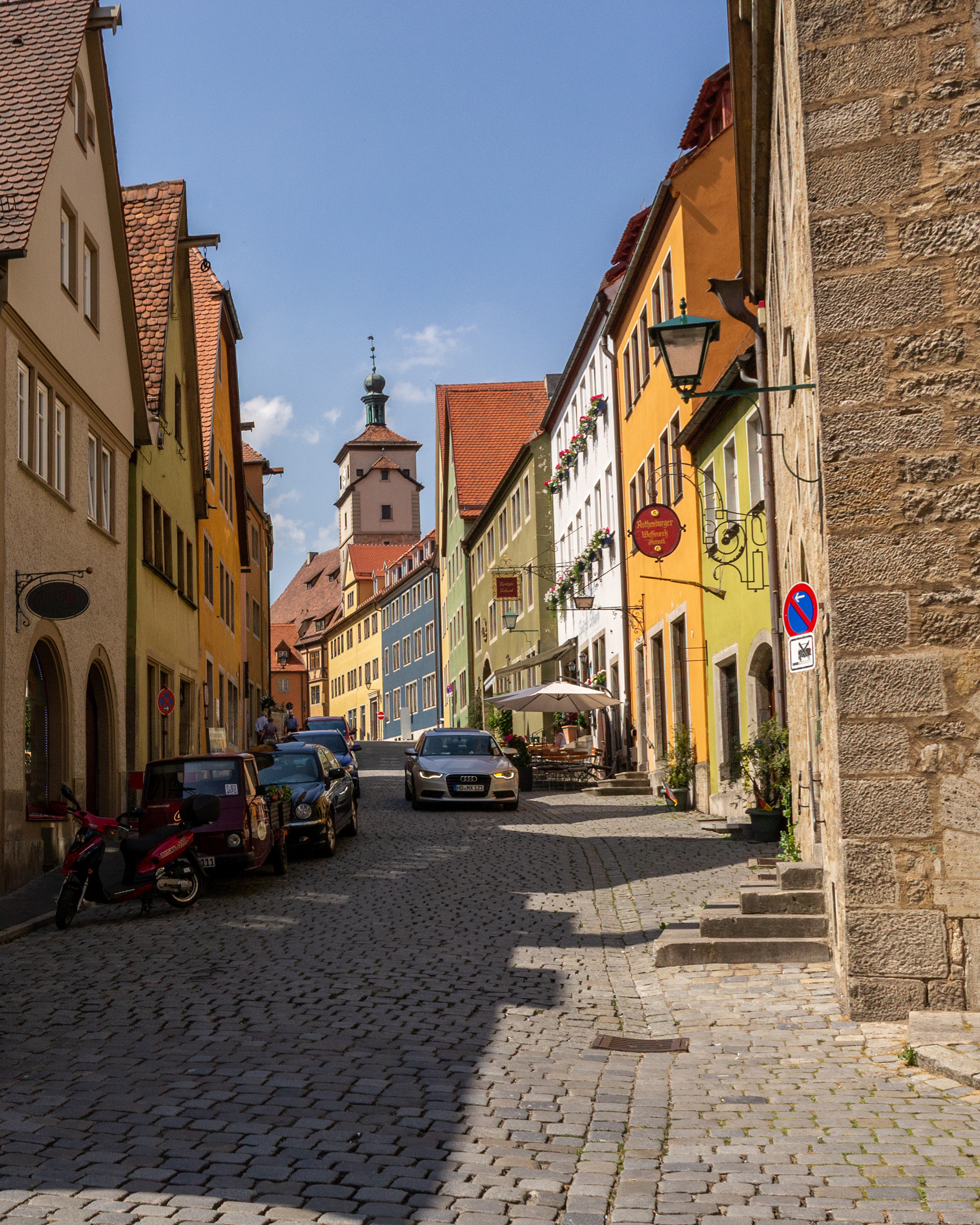
Medieval-style shop signs displayed above buildings typically depict examples of their product. In the foreground a gunsmith shop.
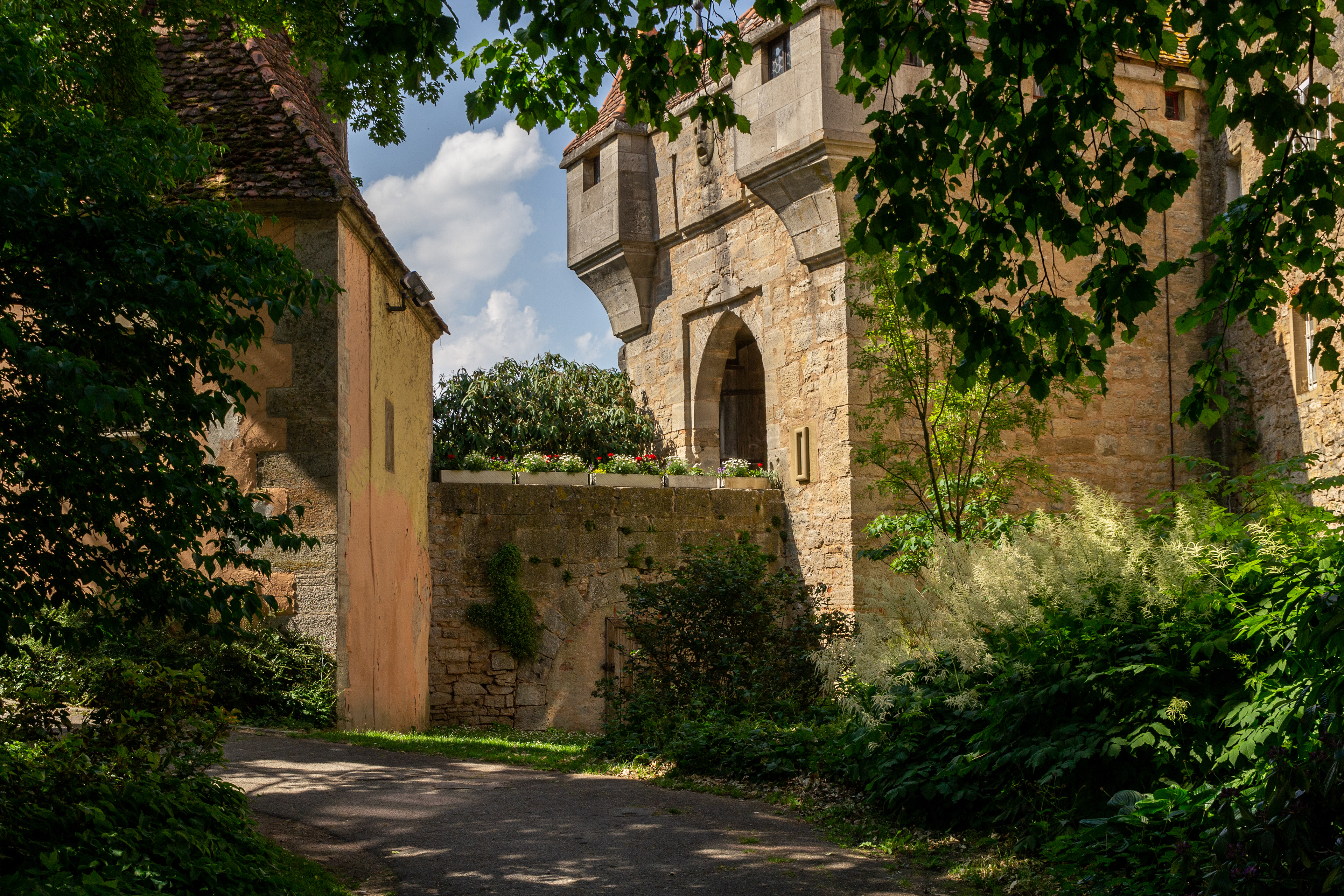
Approacing the gates of the Burgtor and Burg. Built in 1356 it served as the city's main gate and fortification.
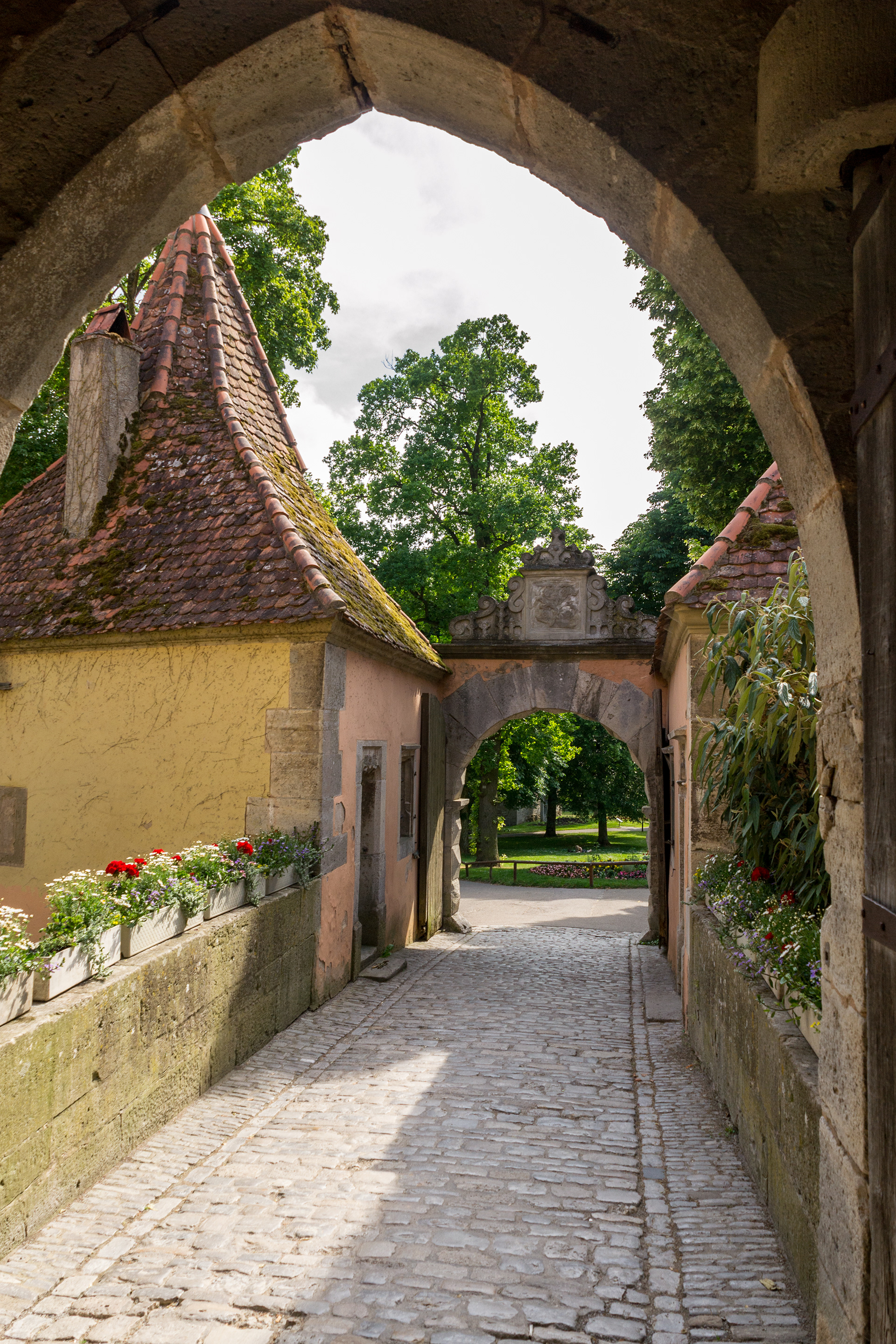
The outer gates of the Burgtor leads to the Castle Gardens.
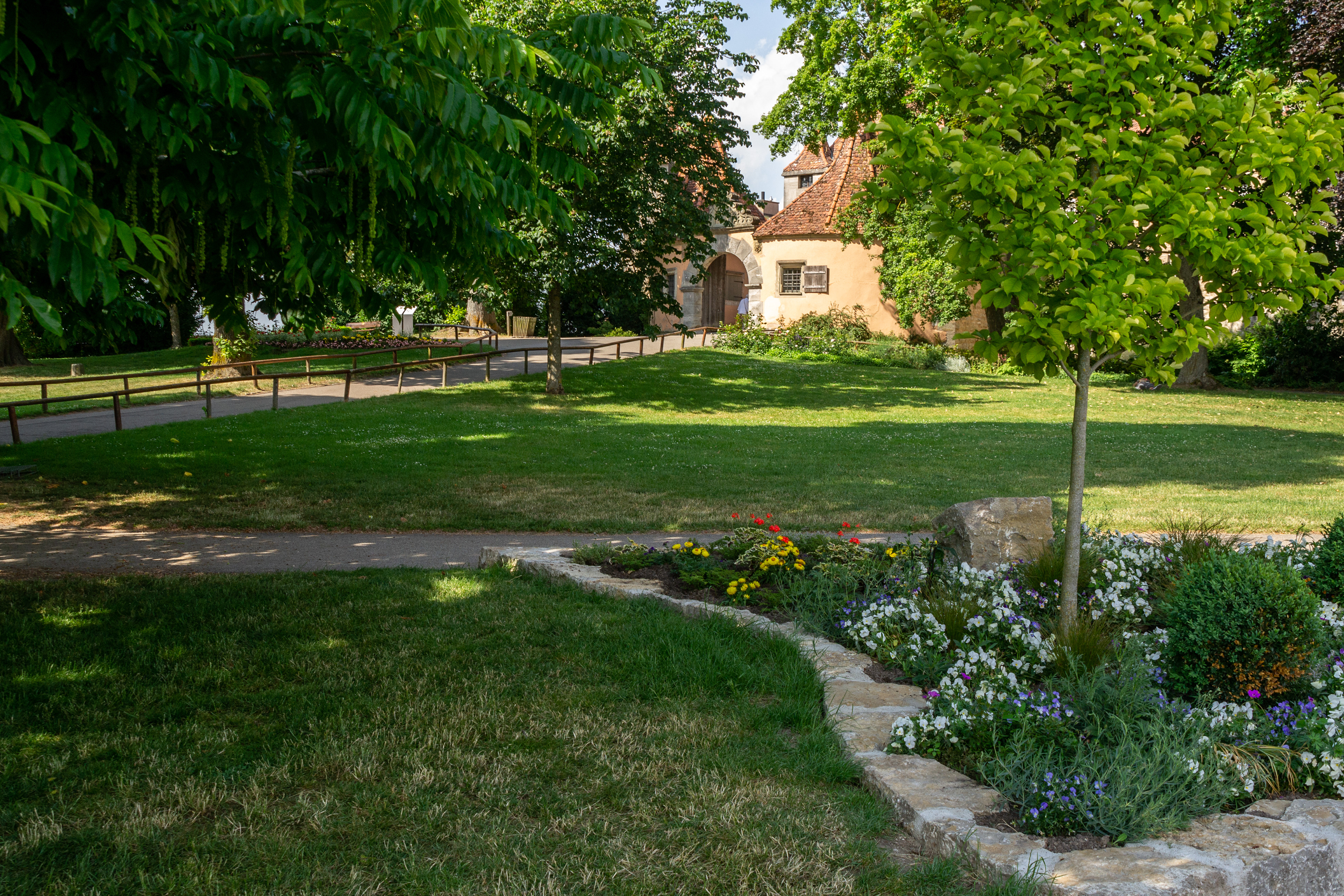
Looking towards the gates of the Burgtor and Burg from the Castle Gardens.

The formal section of the Castle Gardens with its manicured border hedges and statues looks out over Rothenburg and the Tauber Valley.
At the end of our day as we are leaving Rothenburg an unusual sight greets us. What appears to be a Medieval Pageant of some kind with participants in period costume comes marching into town.
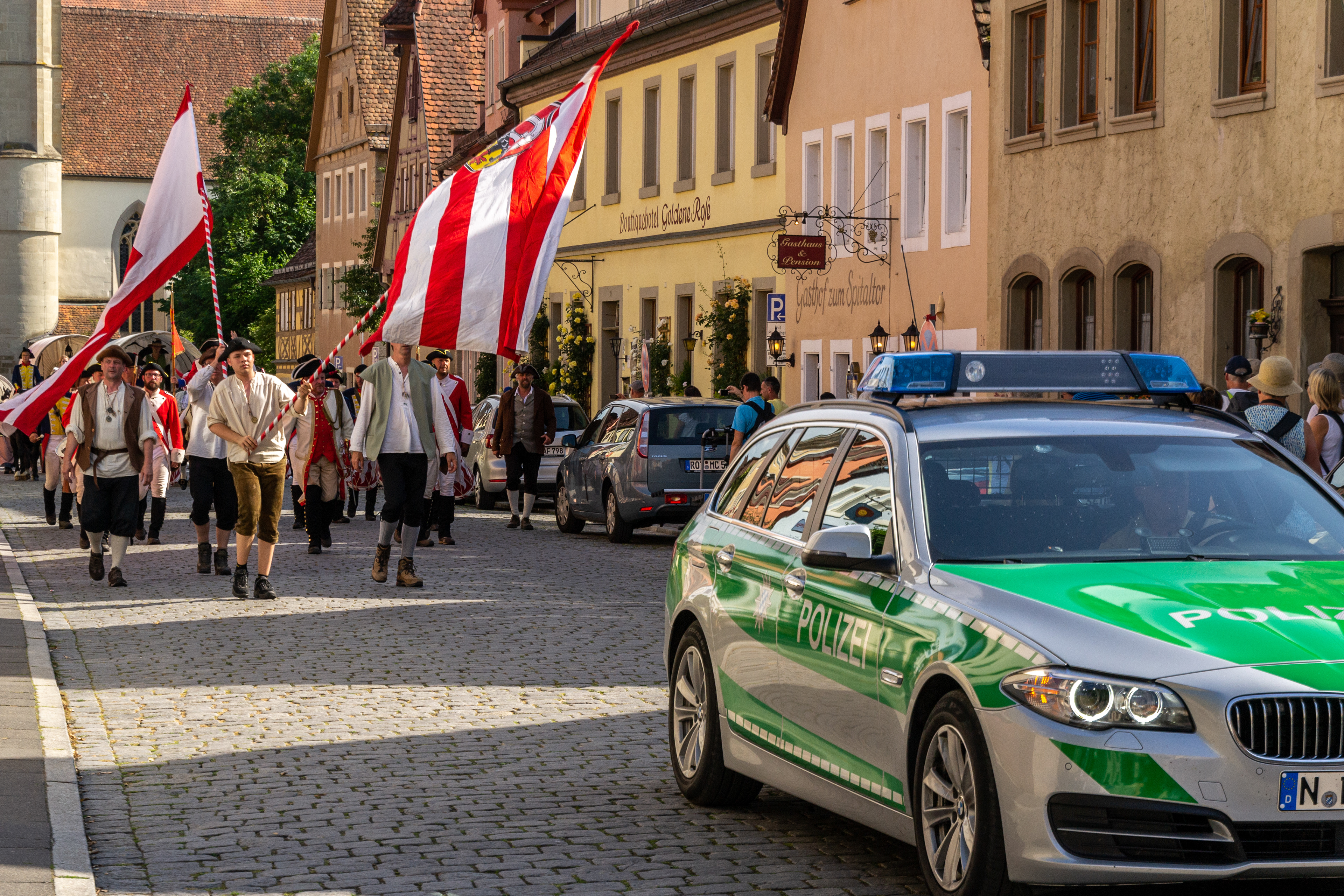
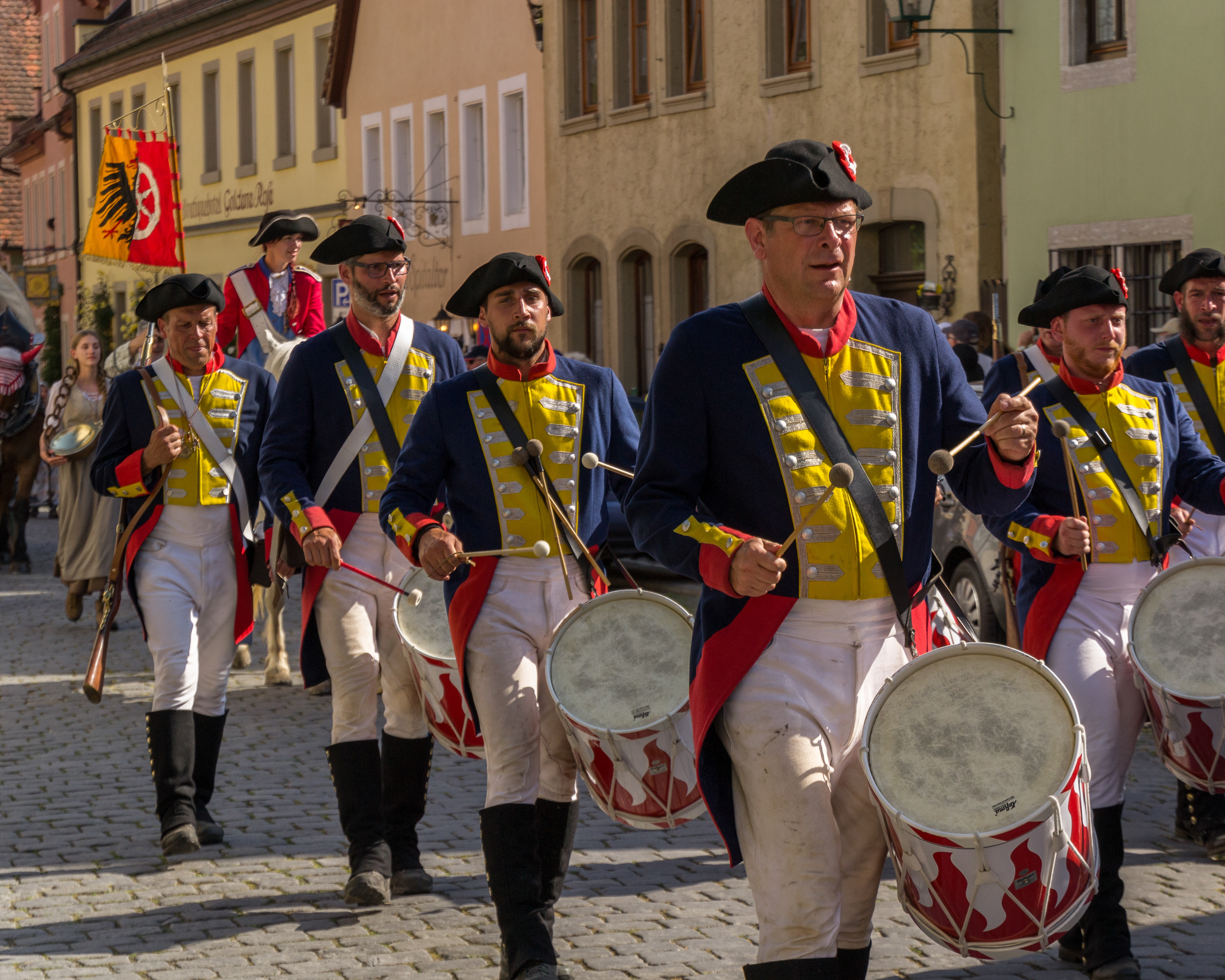
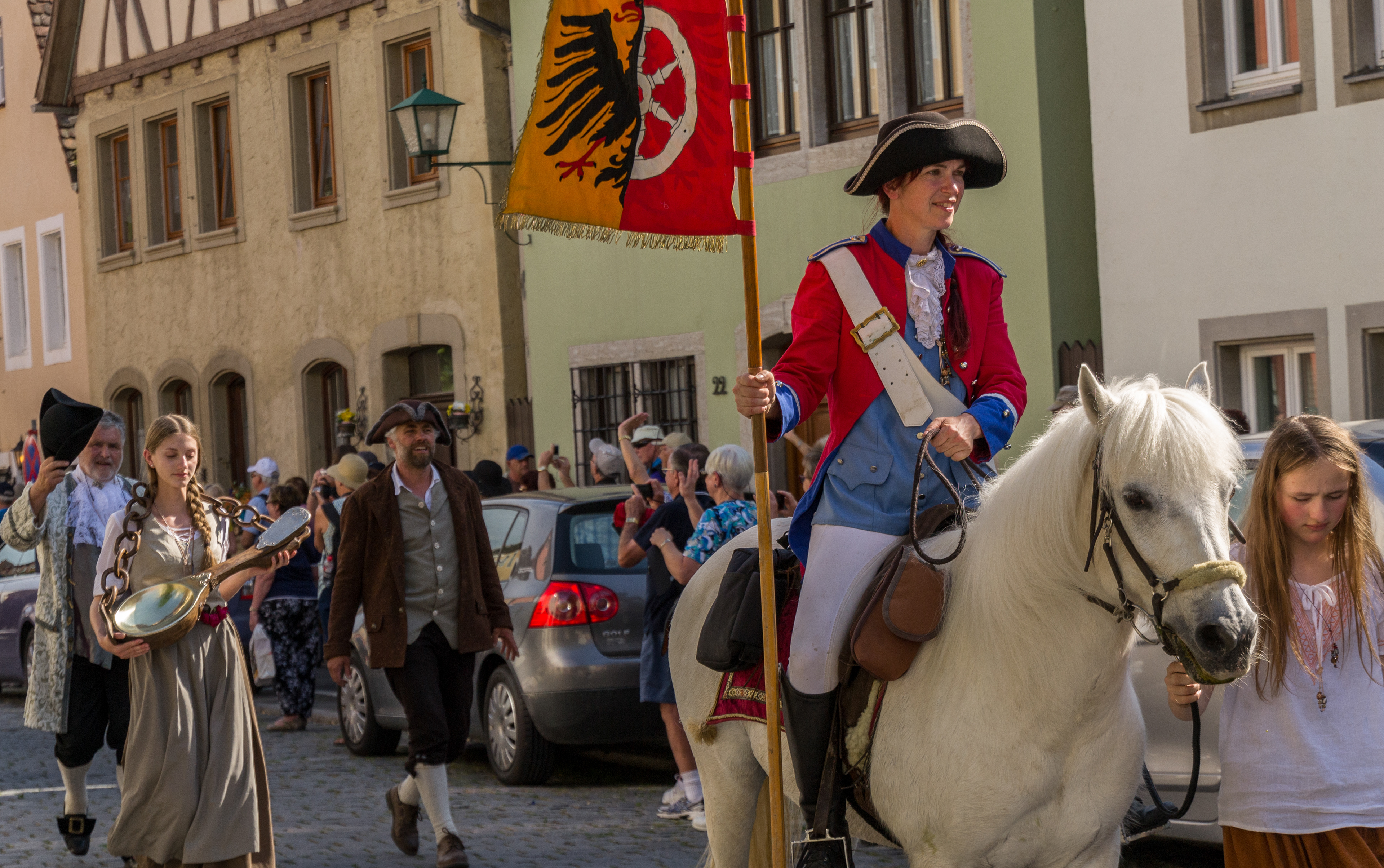
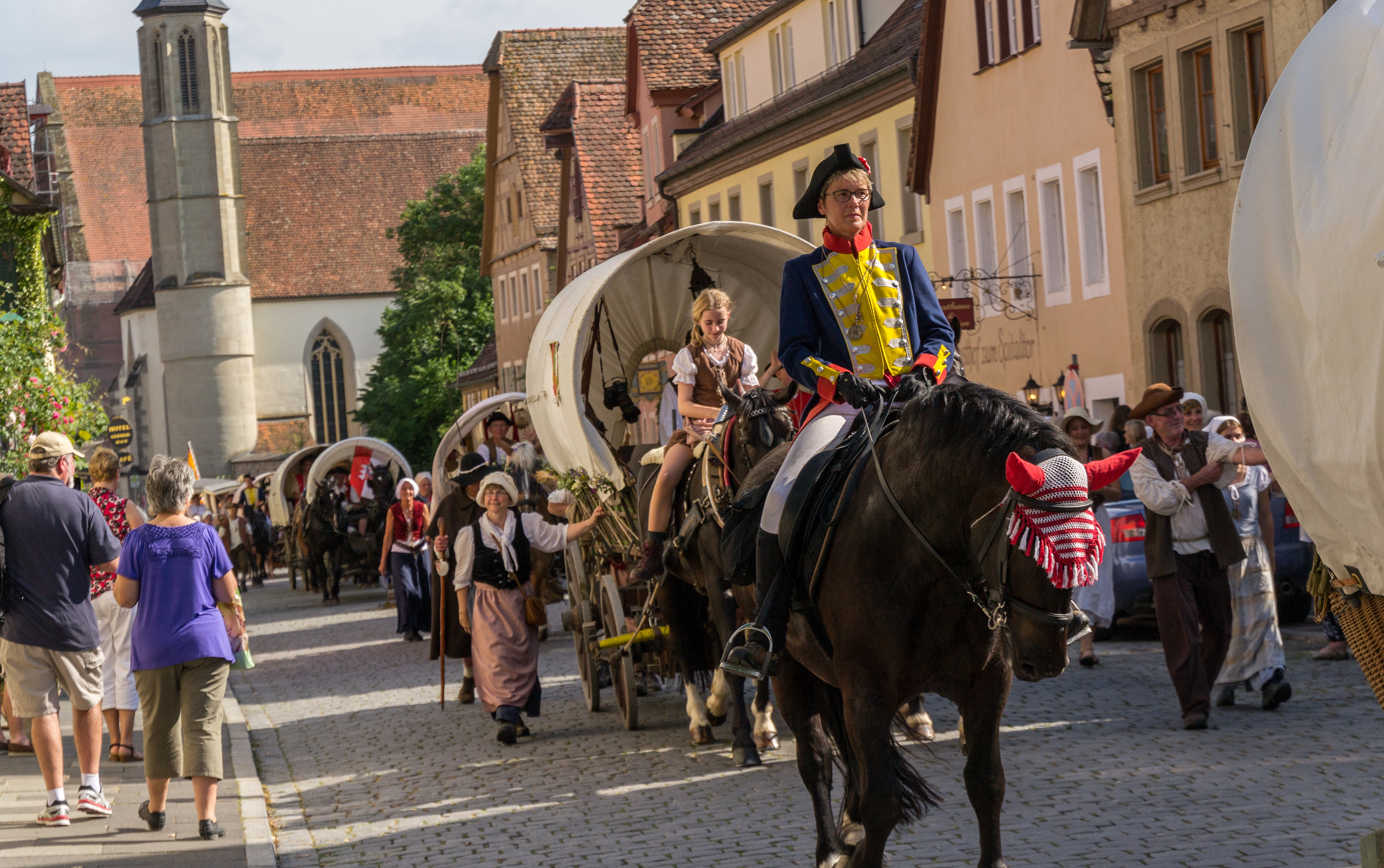
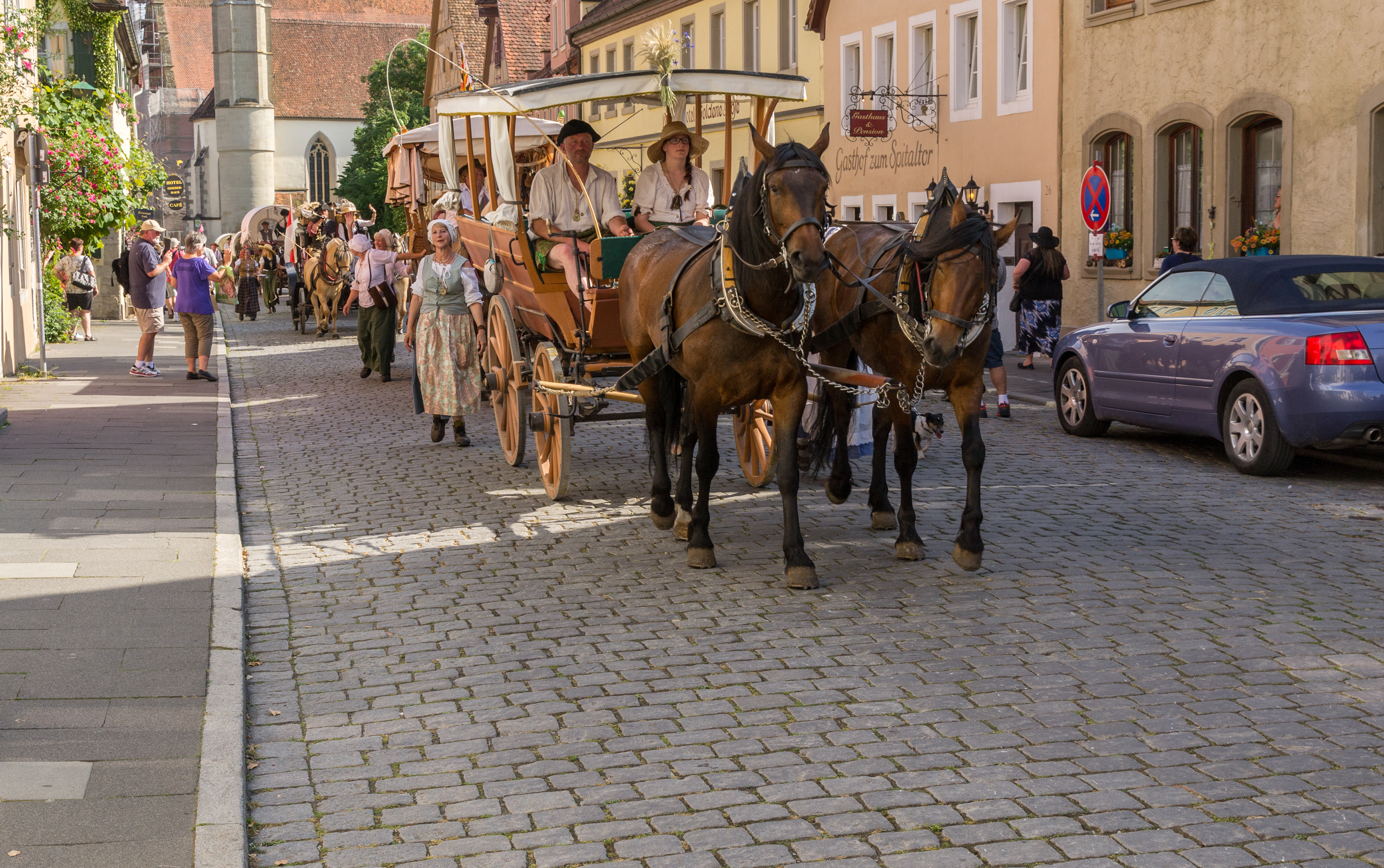

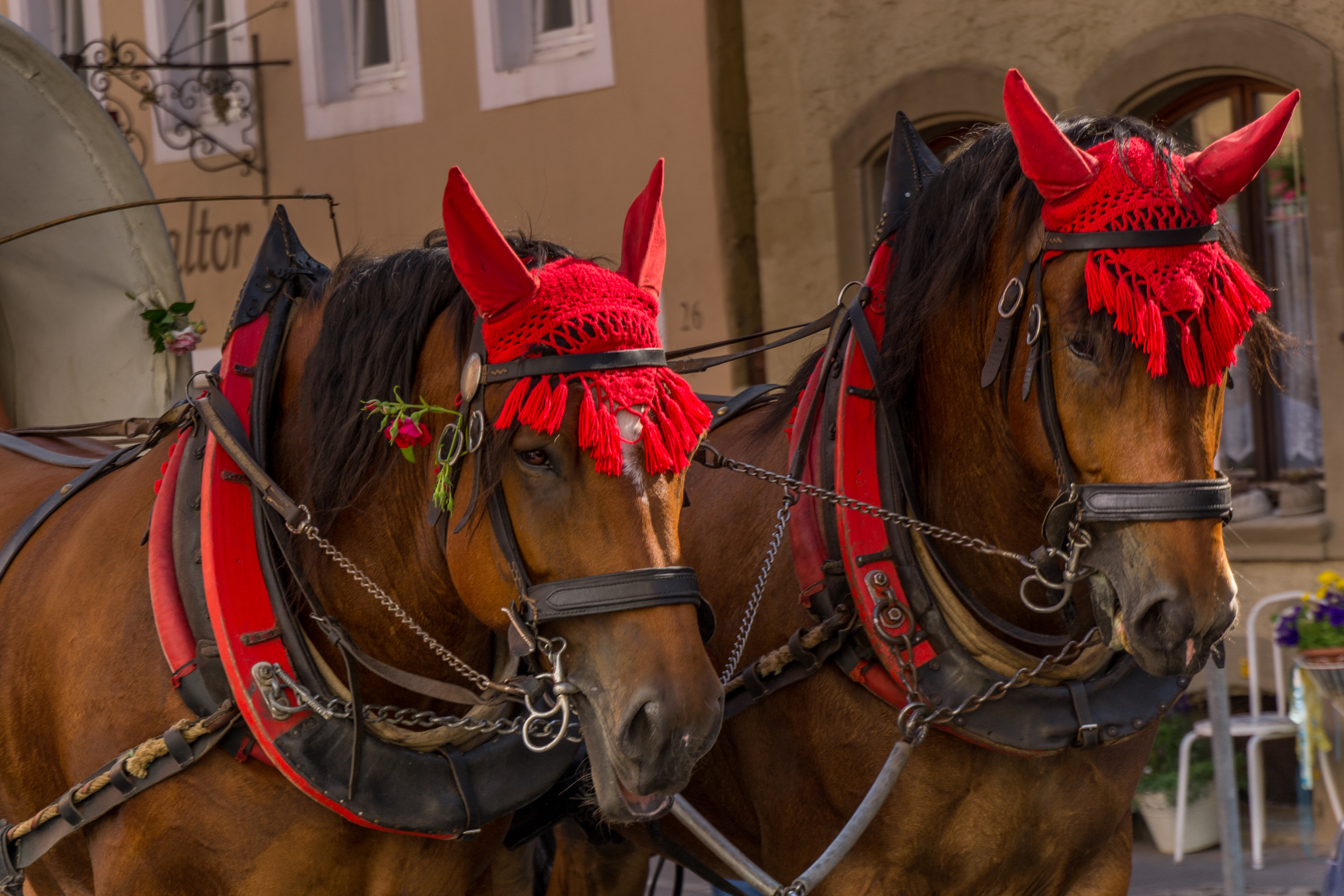
MILTENBERG
It's early in the morning when we arrive in one of the prettiest and well preserved medieval towns on the River Main, Miltenberg and stop off to explore and sample some of the local produce.

The Medieval Bridge Gate still stands at the end of the modern Three-hinged Arch Bridge.
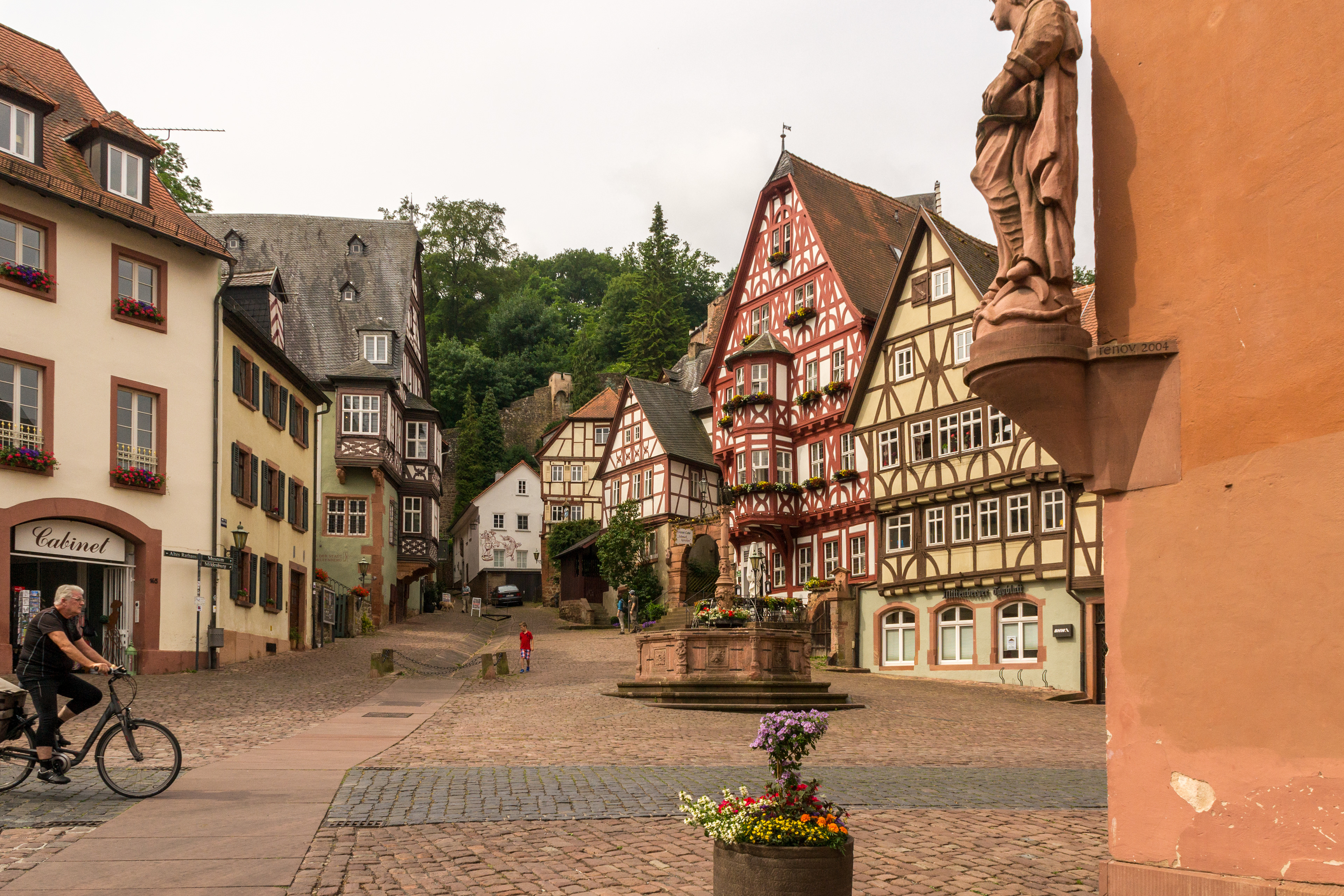
The Market Square (Markt-platz) of Miltenberg.
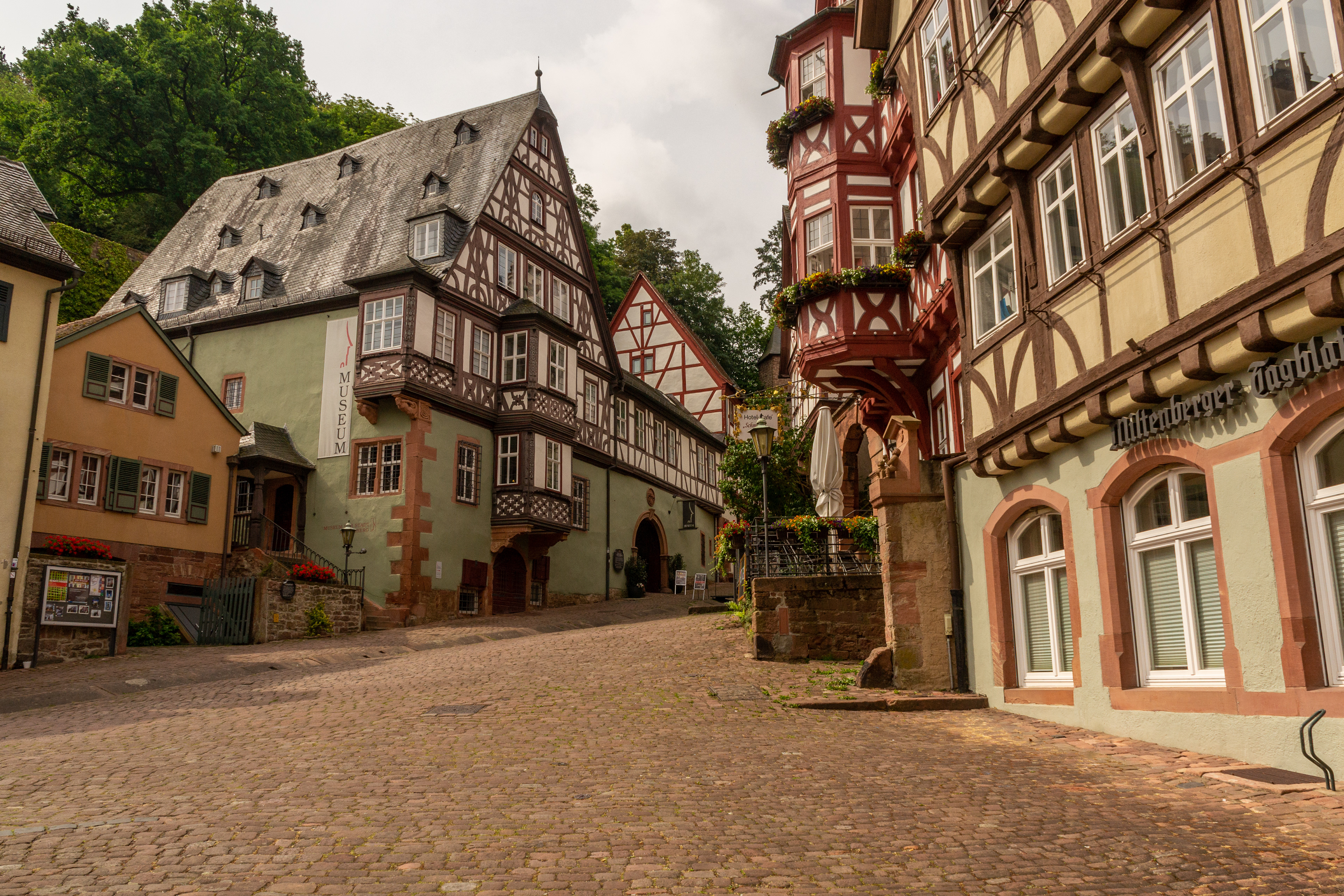
Markt-platz (Market Square) with its well preserved half-timber houses dating back to between 1400 -1700.

Schnatterloch fountain built in 1583, sculpted from red sandstone.

Hauptstrasse historic taverns with St Jakobus Church in the background.

An old vine clings to this half-timbered house in Hauptstrasse.
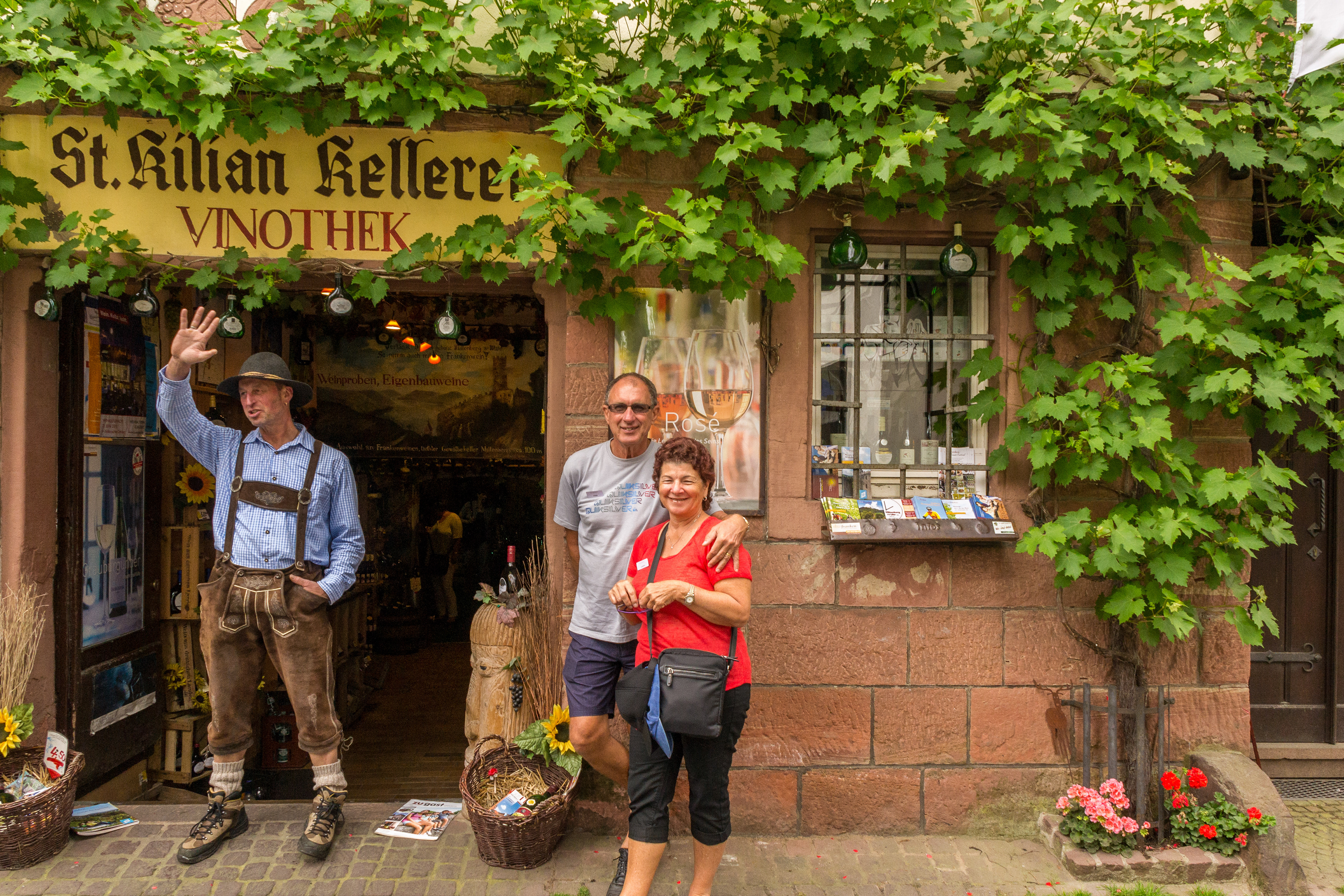
Our St Kilian Kellerei Vinothek host Johann, bids our group auf wiedershen.
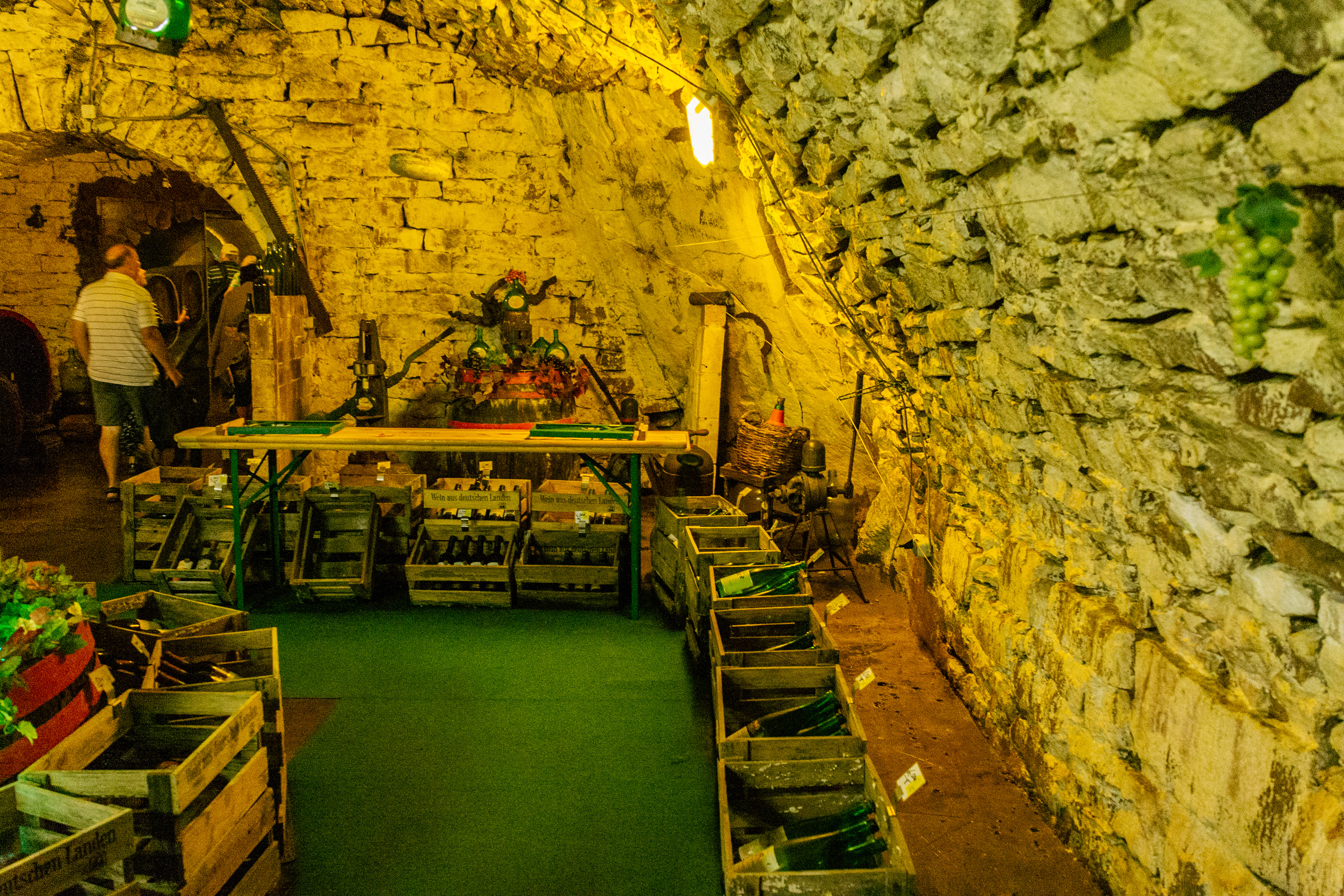
This Vaulted Ice Cellar dates back to 1482 hacked out of the sandstone hill. Internal temperature in summer and winter did not exceed 10° Celcius, the conditions were optimal to take ice from the frozen Main in winter and store it deep in the rock. The cellar was cooled down to around 0° Celcius and the population could be supplied with ice throughout the year.
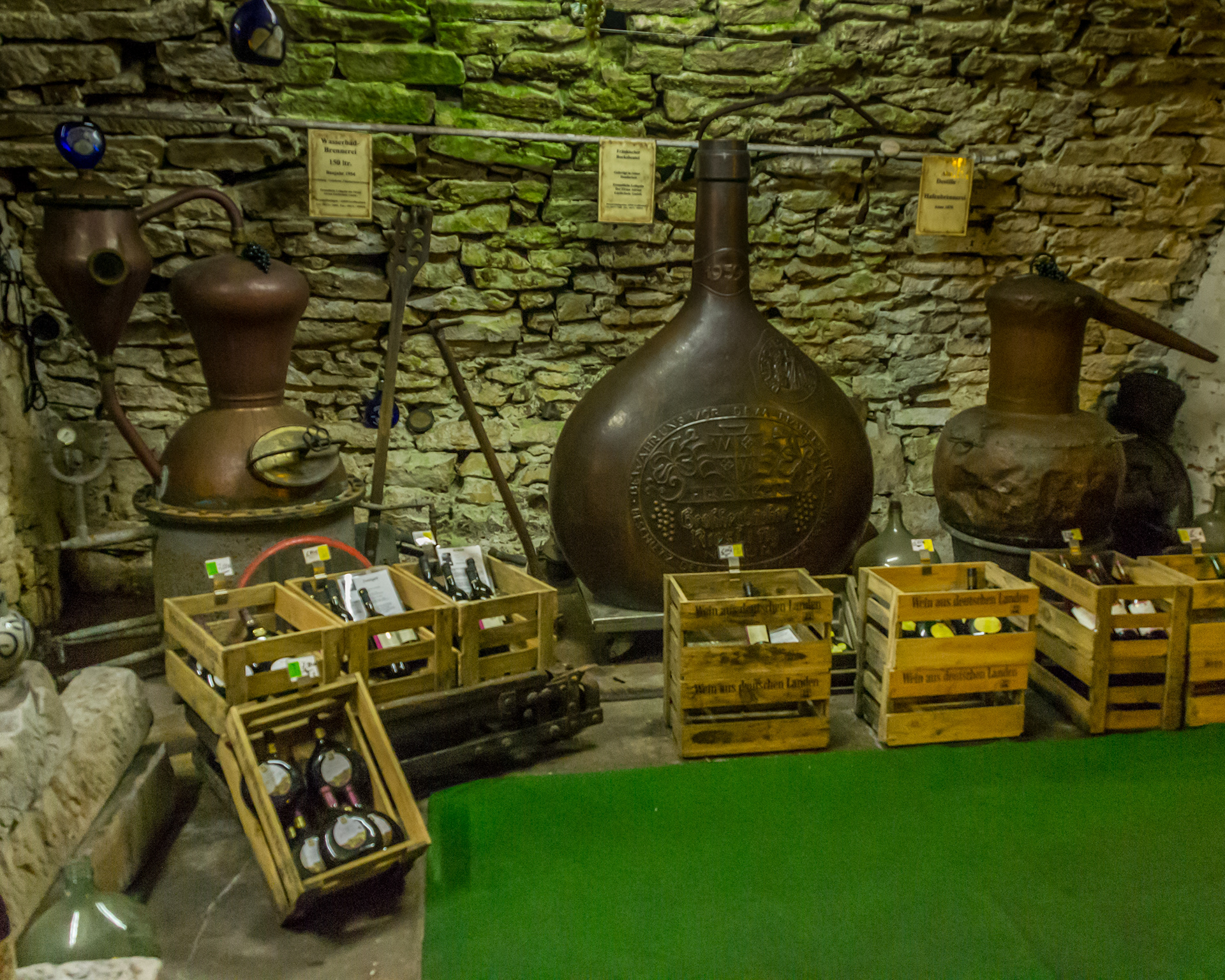
Ancient distillery equipment and storage urns.
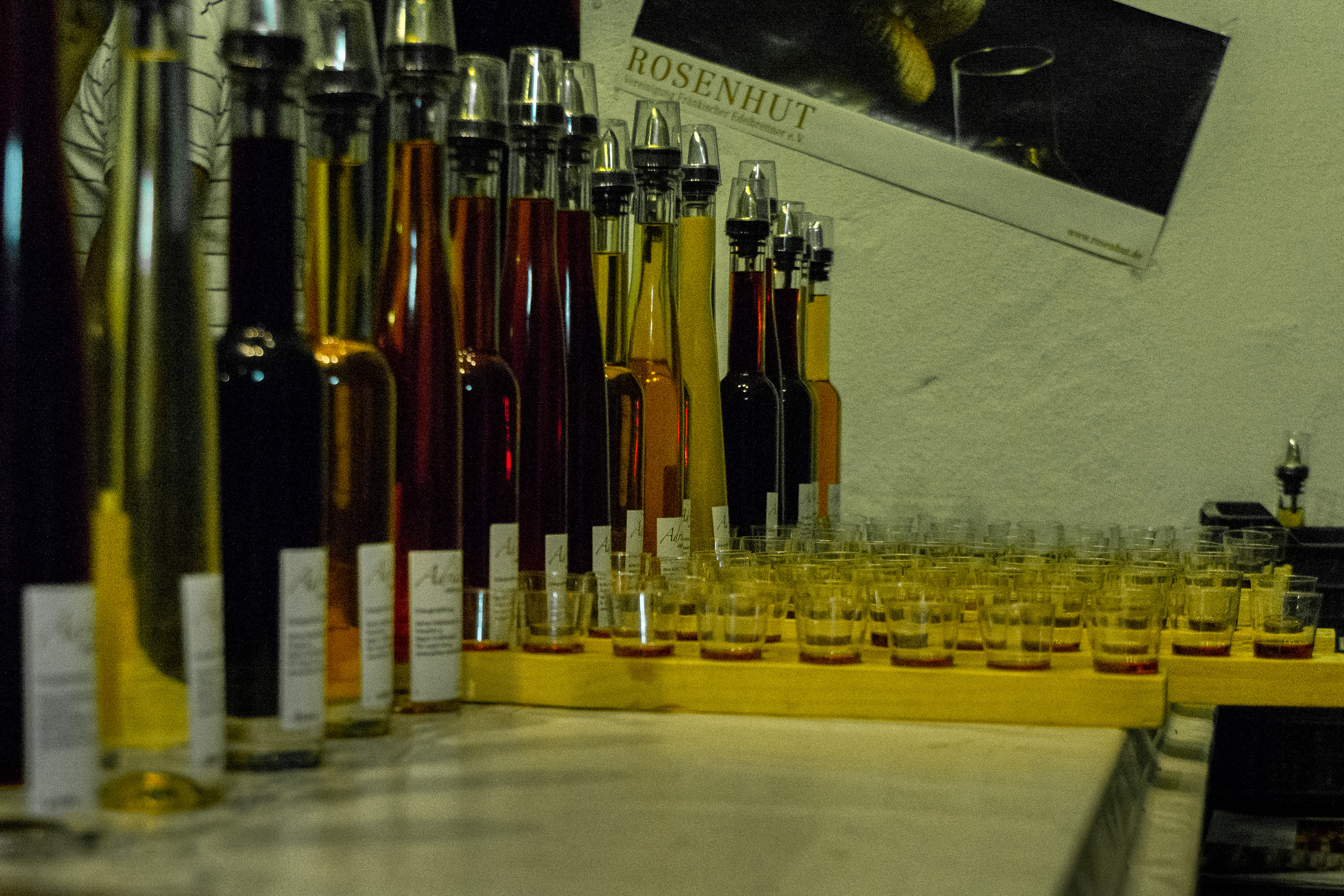
It's 10 o'clock somewhere in the world so we're about to sample a variety of the locally produced Schnapps.
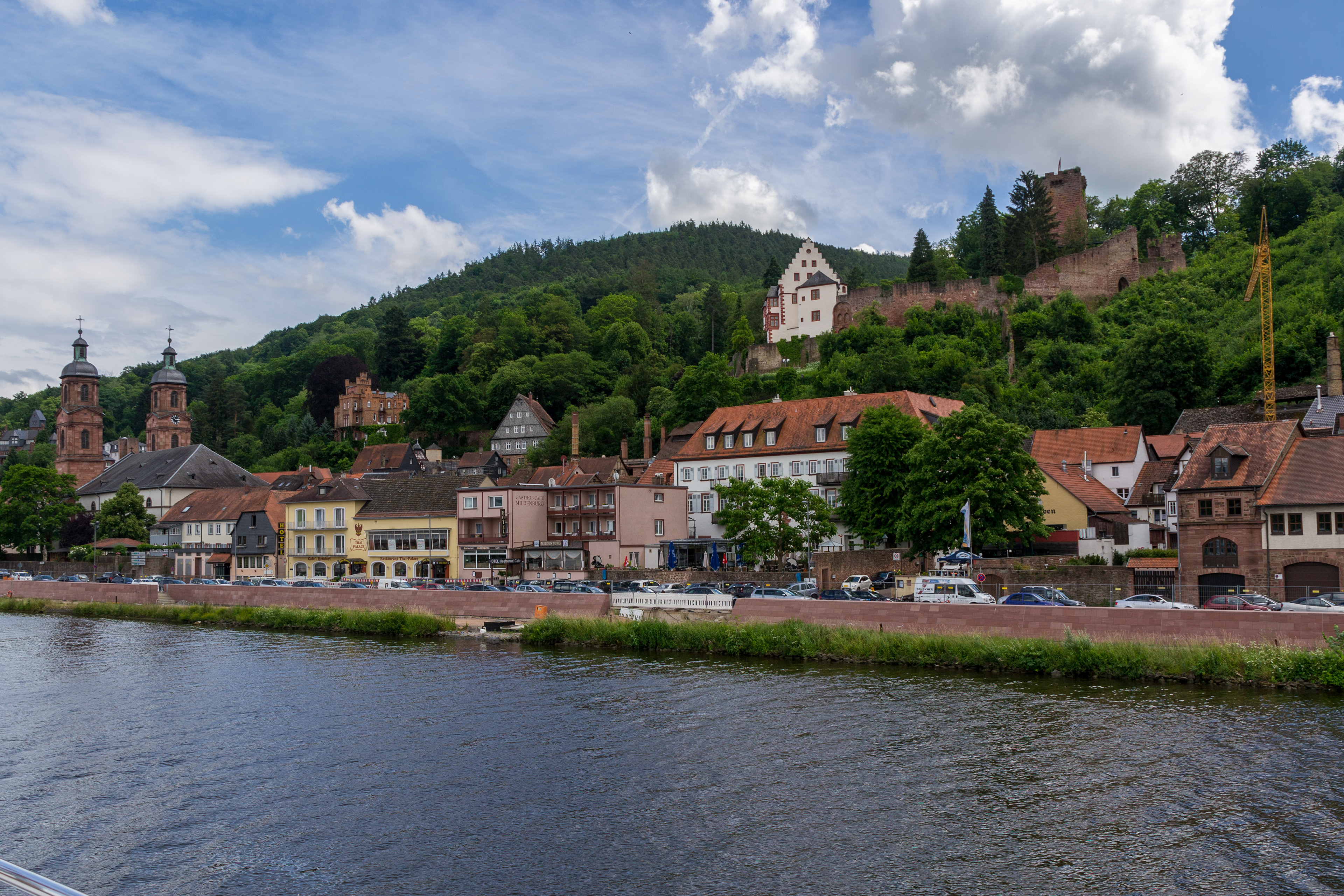
A view of Miltenberg from the Main River. St Jakobus church on the left and castle ruins above the town.
RUDESHEIM
Rudesheim is at the start of the Middle Rhine Valley and is the heart of a well known wine growing region. We have another short stopover here to explore the sights including Seigfried's Mechanical Music Museum.
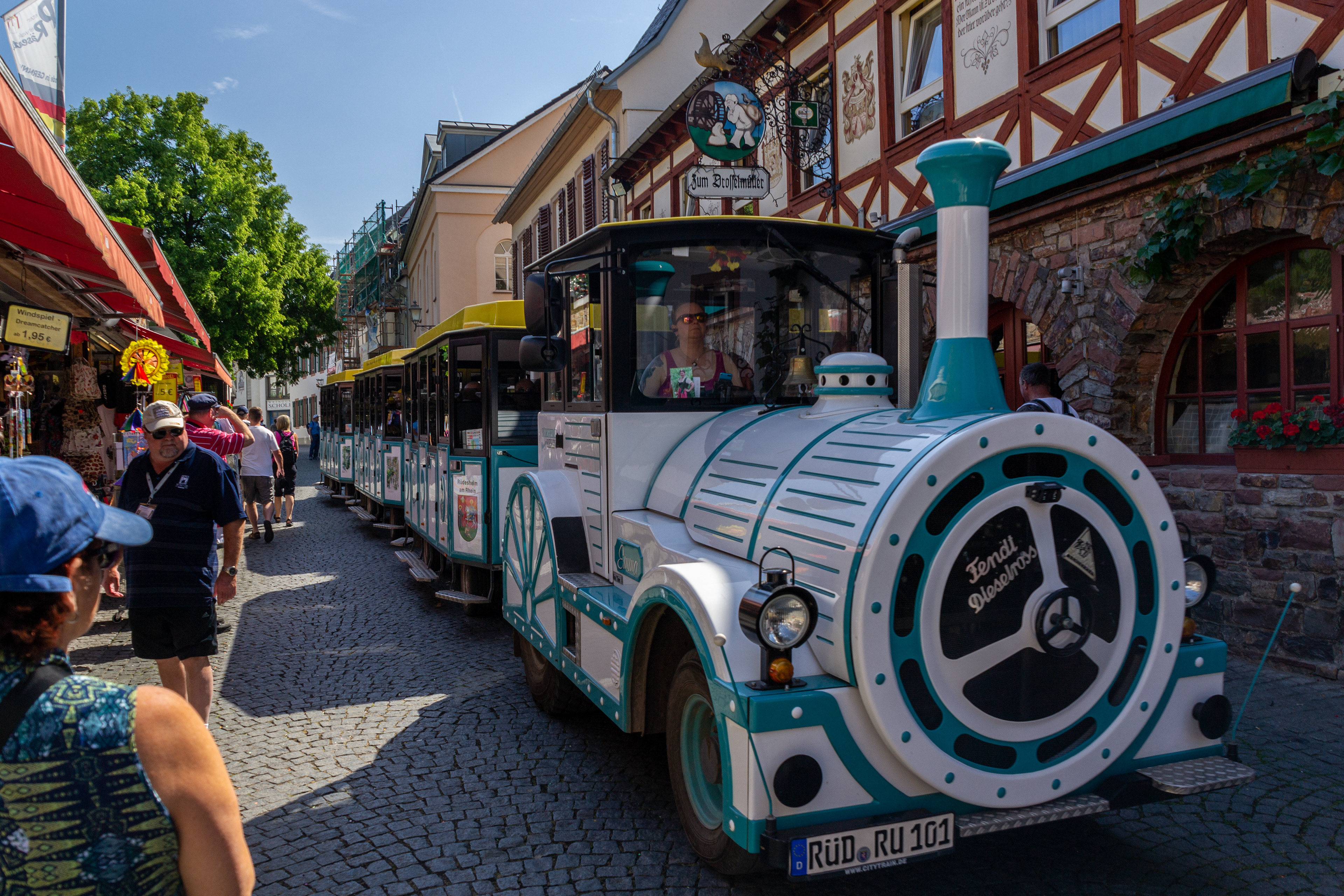
The tourist train on the narrow Drosselgasse.
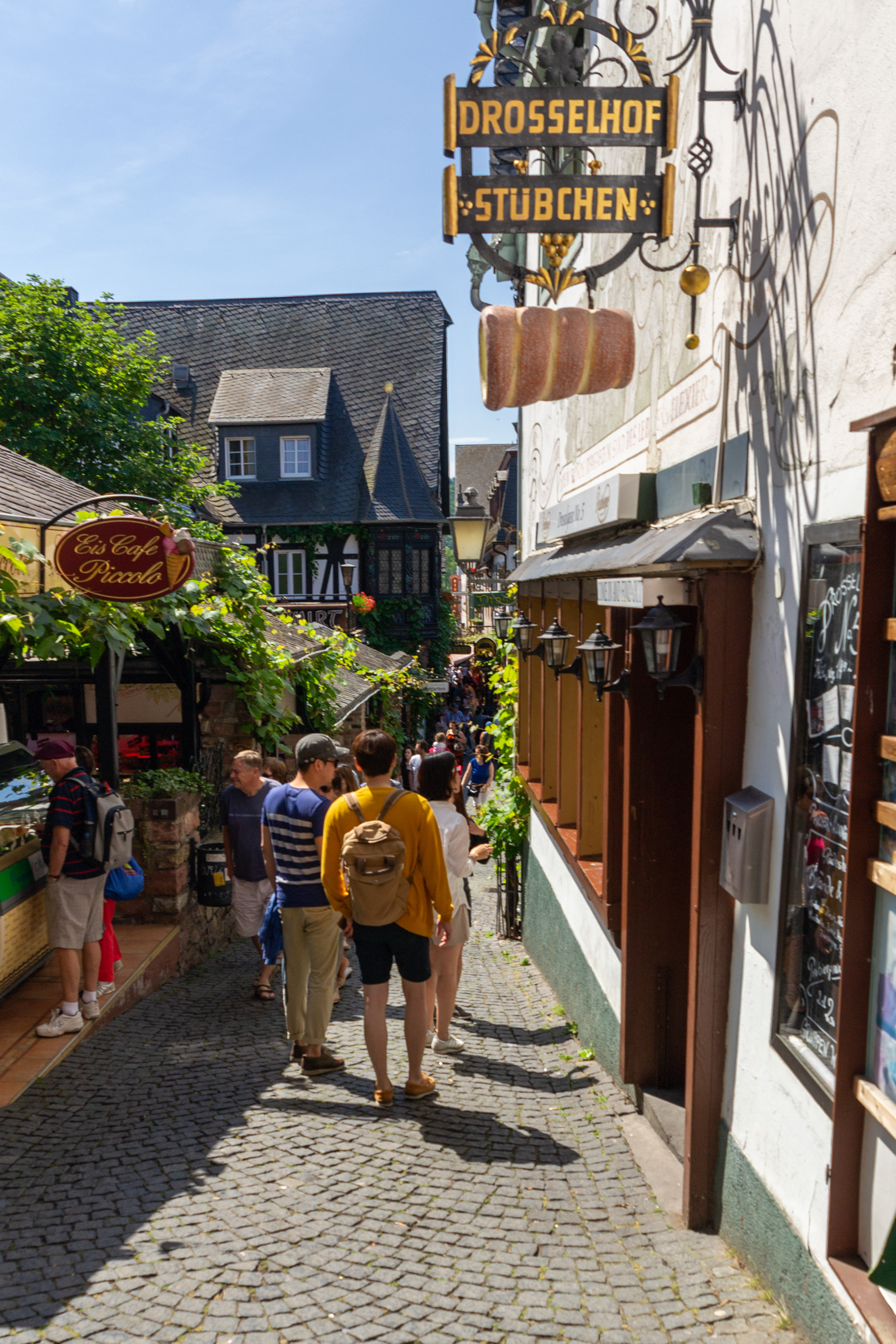
Tourists exploring the Drosselgasse.

Drosselgasse lined with restaurants, wine bars and souvineer shops is one of the best known streets of Germany.
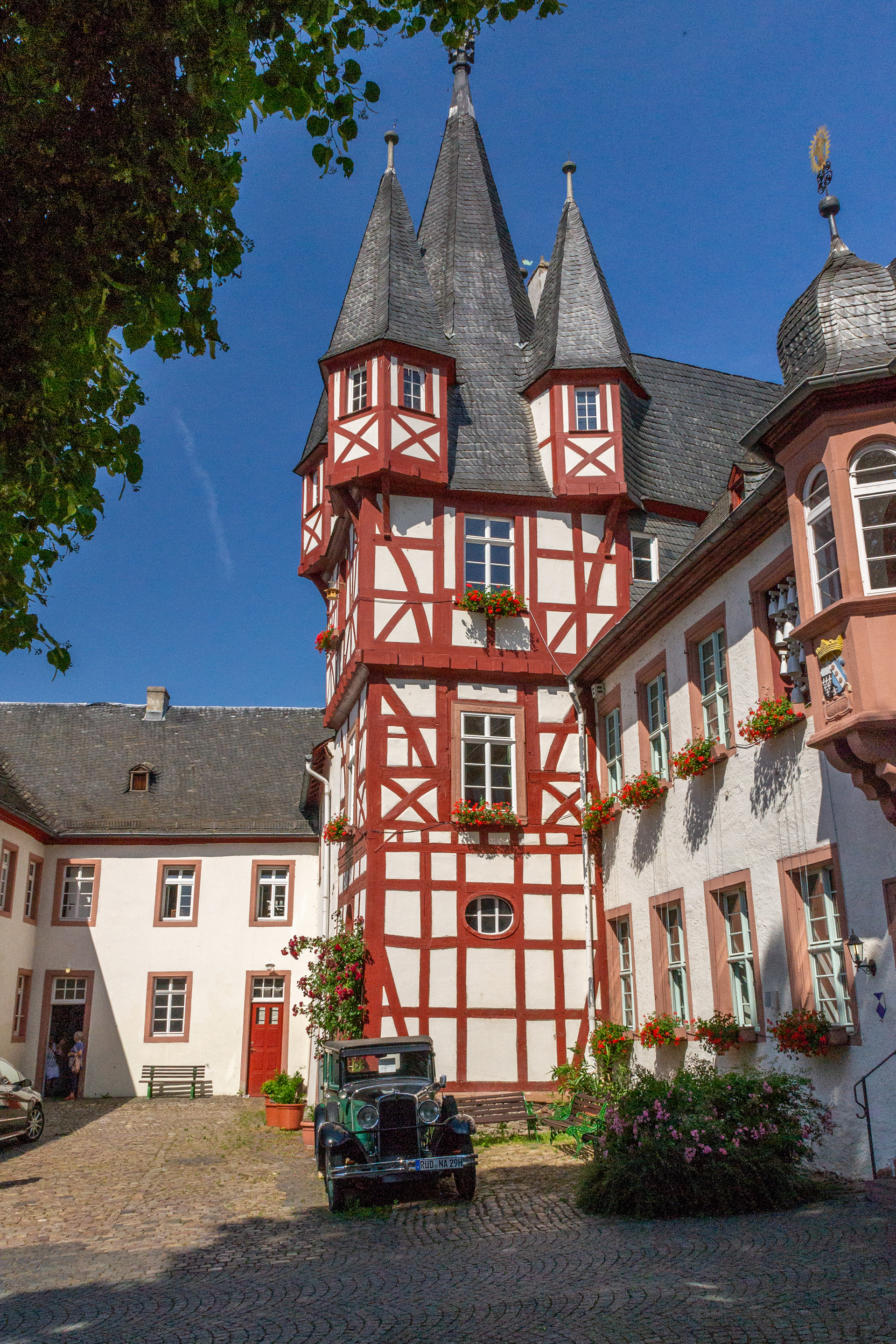
Siegfried's Mechanisches Musikkabinett Museum.
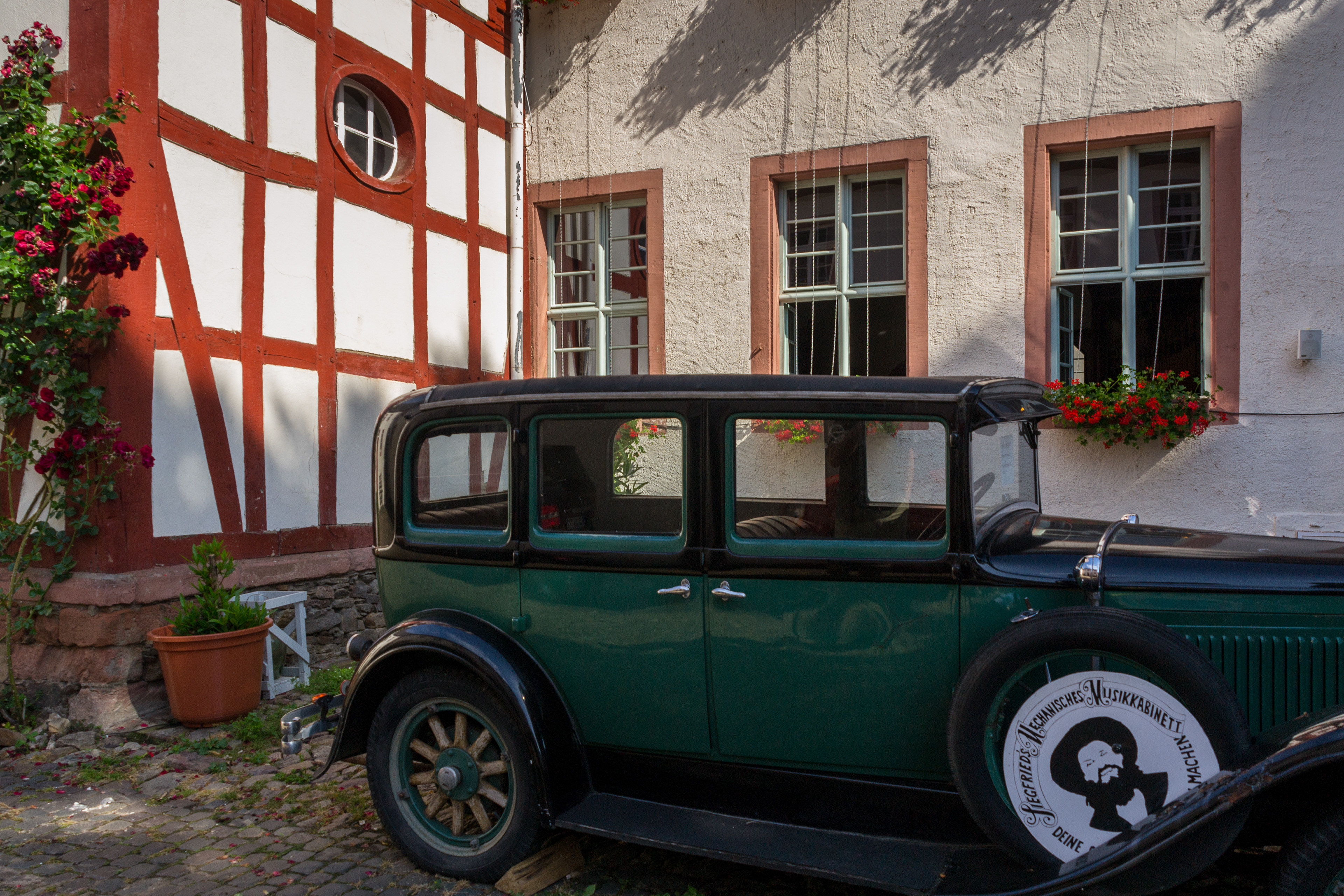
Siegfreids Mechanical Music Museum - the vintage car sets the scene.
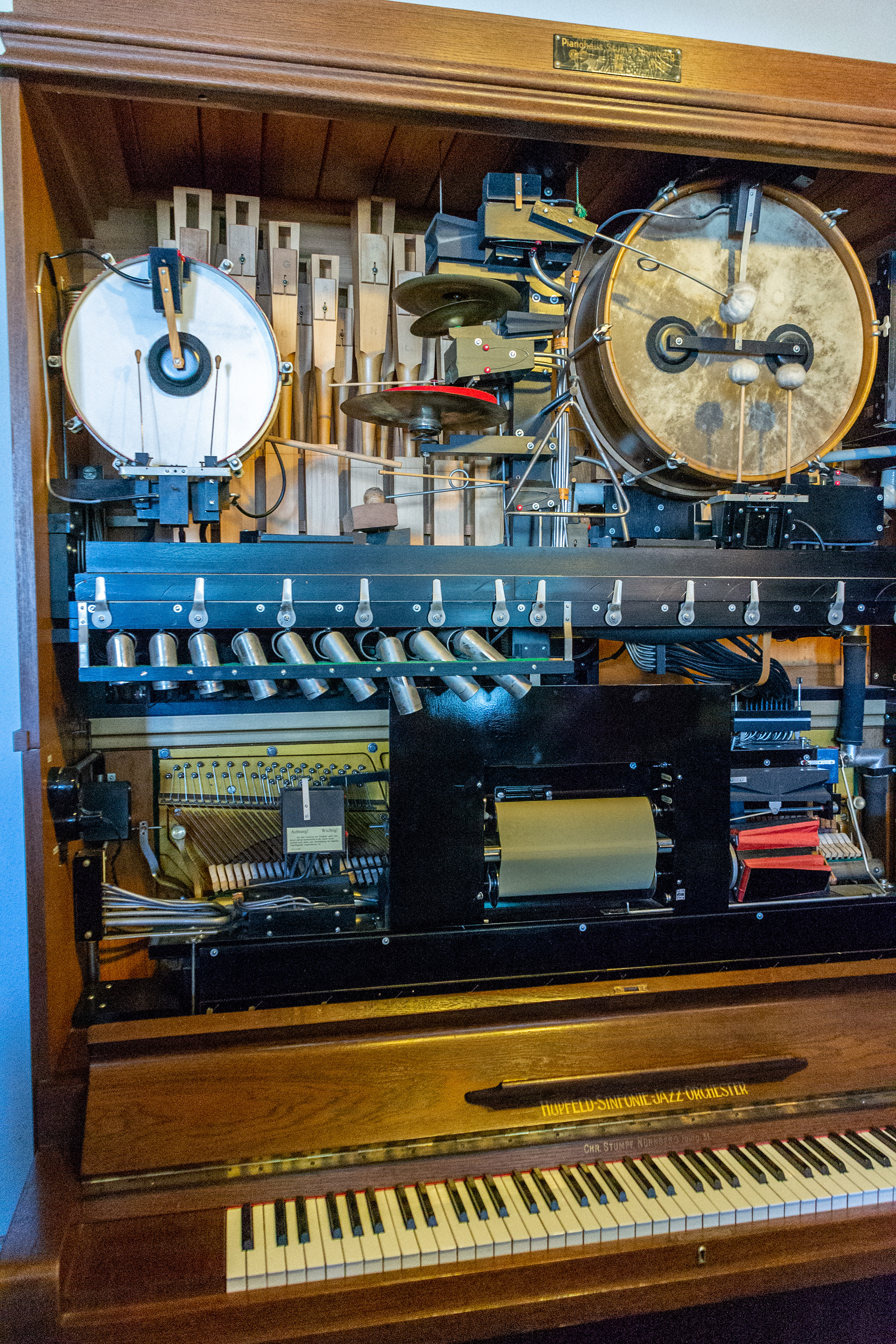
One of the many amazing mechanised music machines, this one plays the drums.
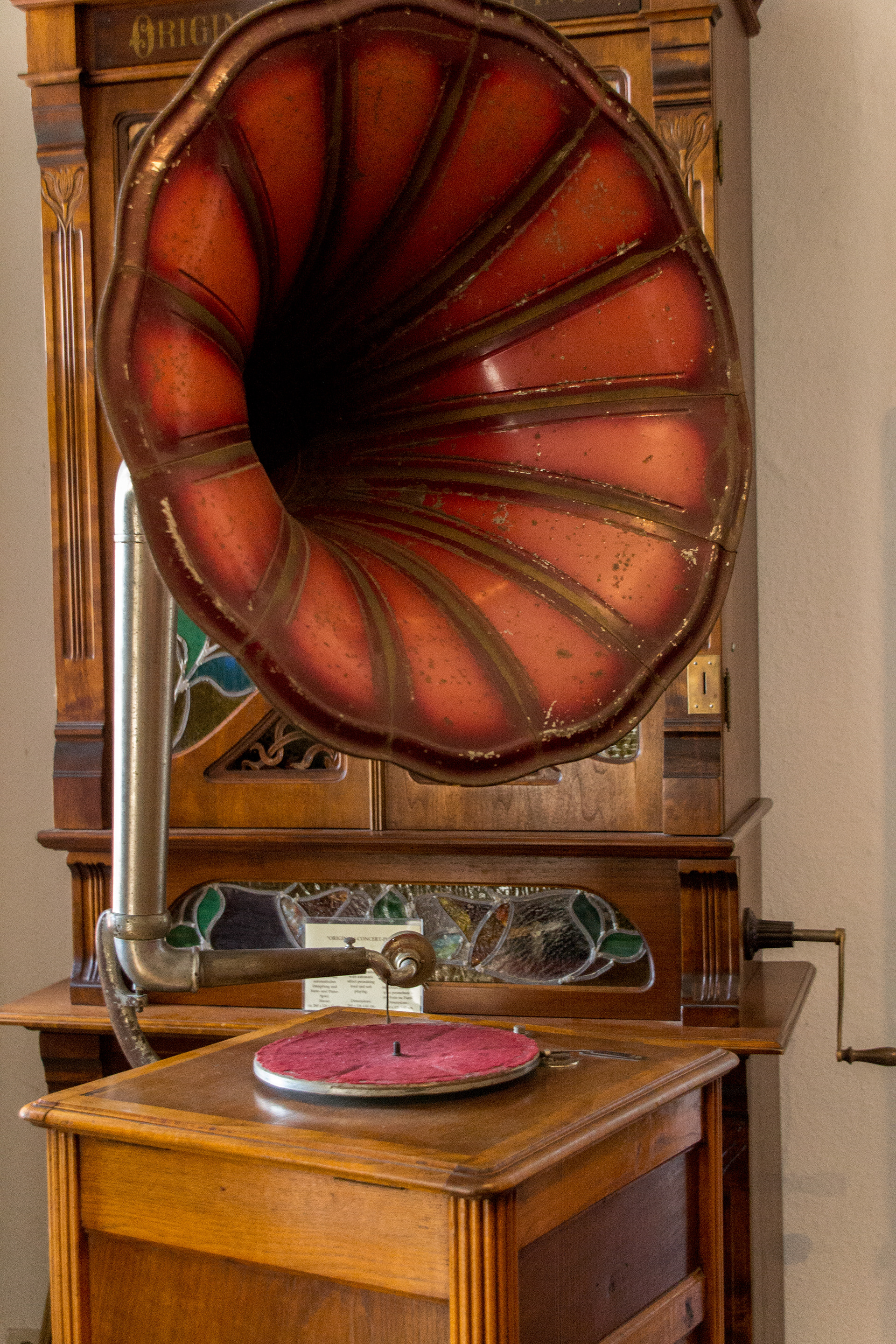
His Masters Voice Gramophone I presume.
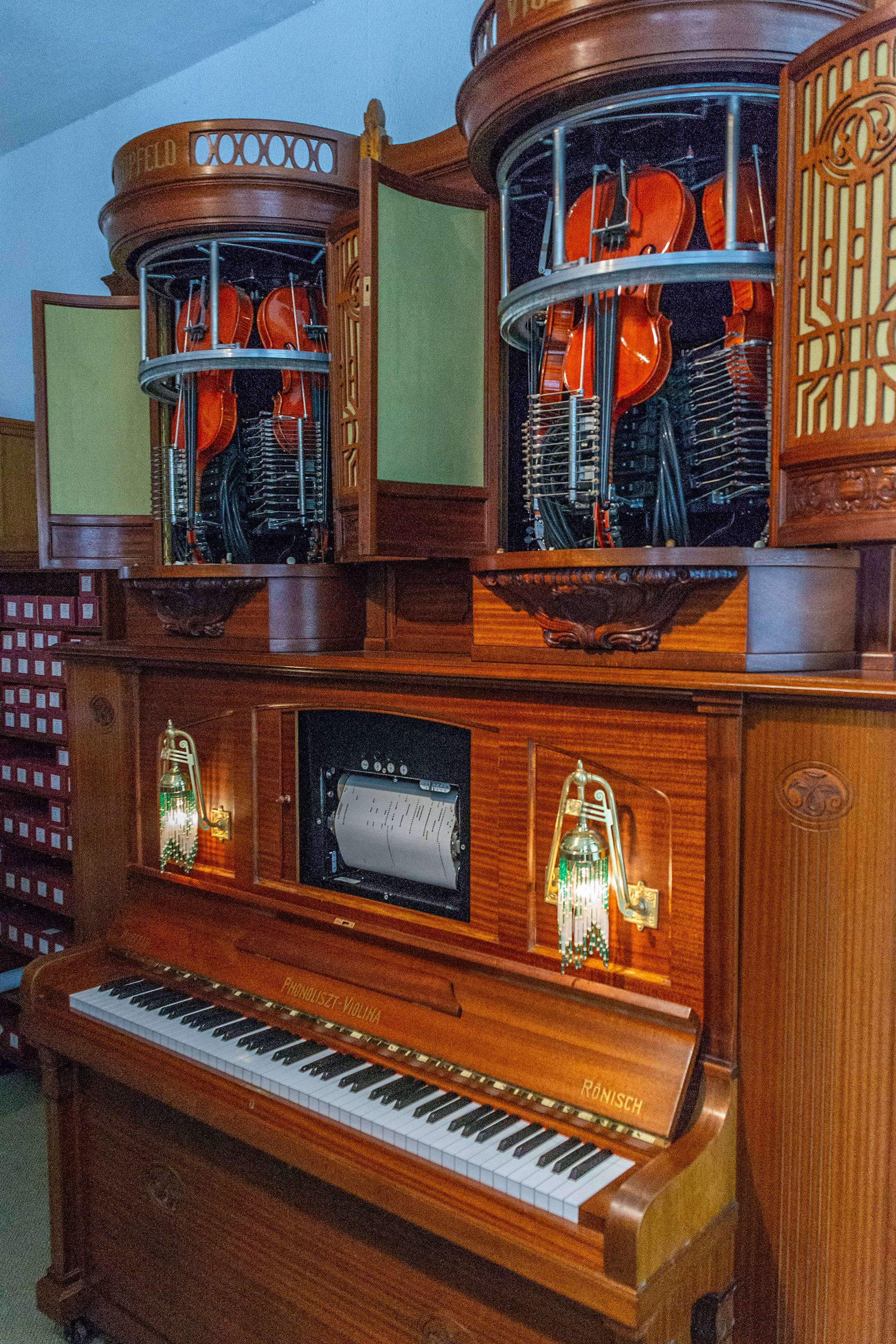
An Orchestral Calliope with perforated paper music rolls.

Automatic music machine.
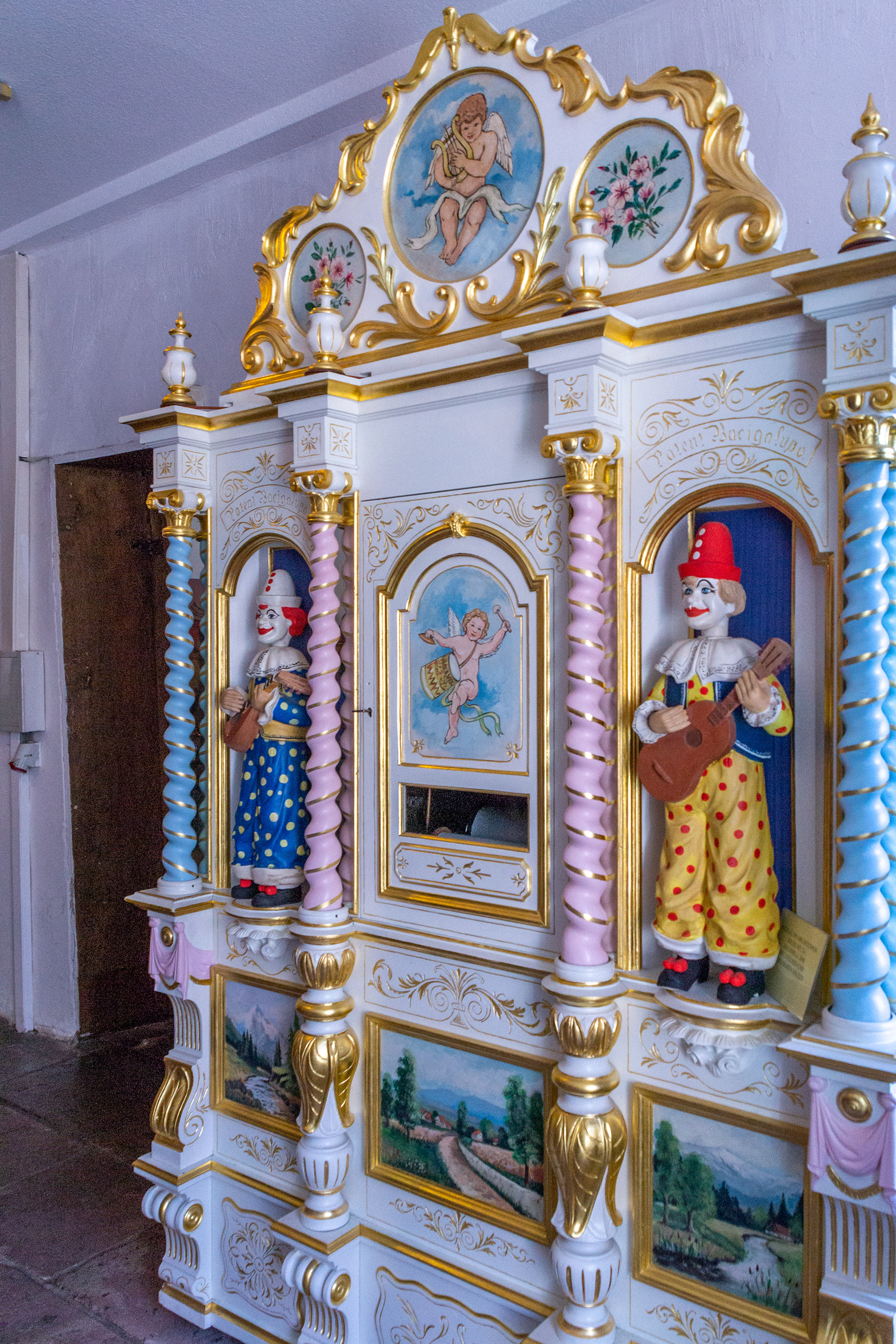
Porcelain clown music machine.
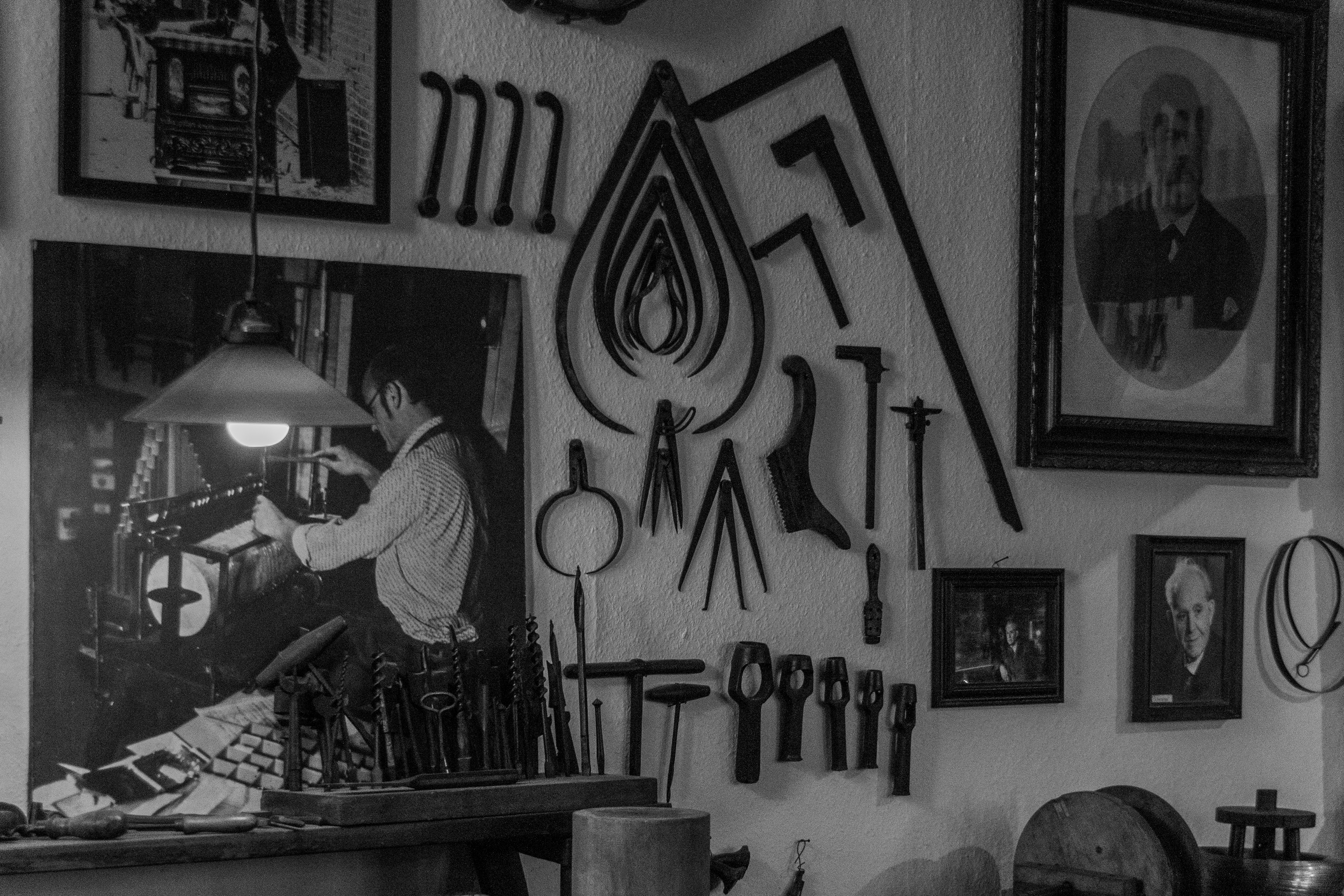
Tools of the trade in Siegfried's workshop.
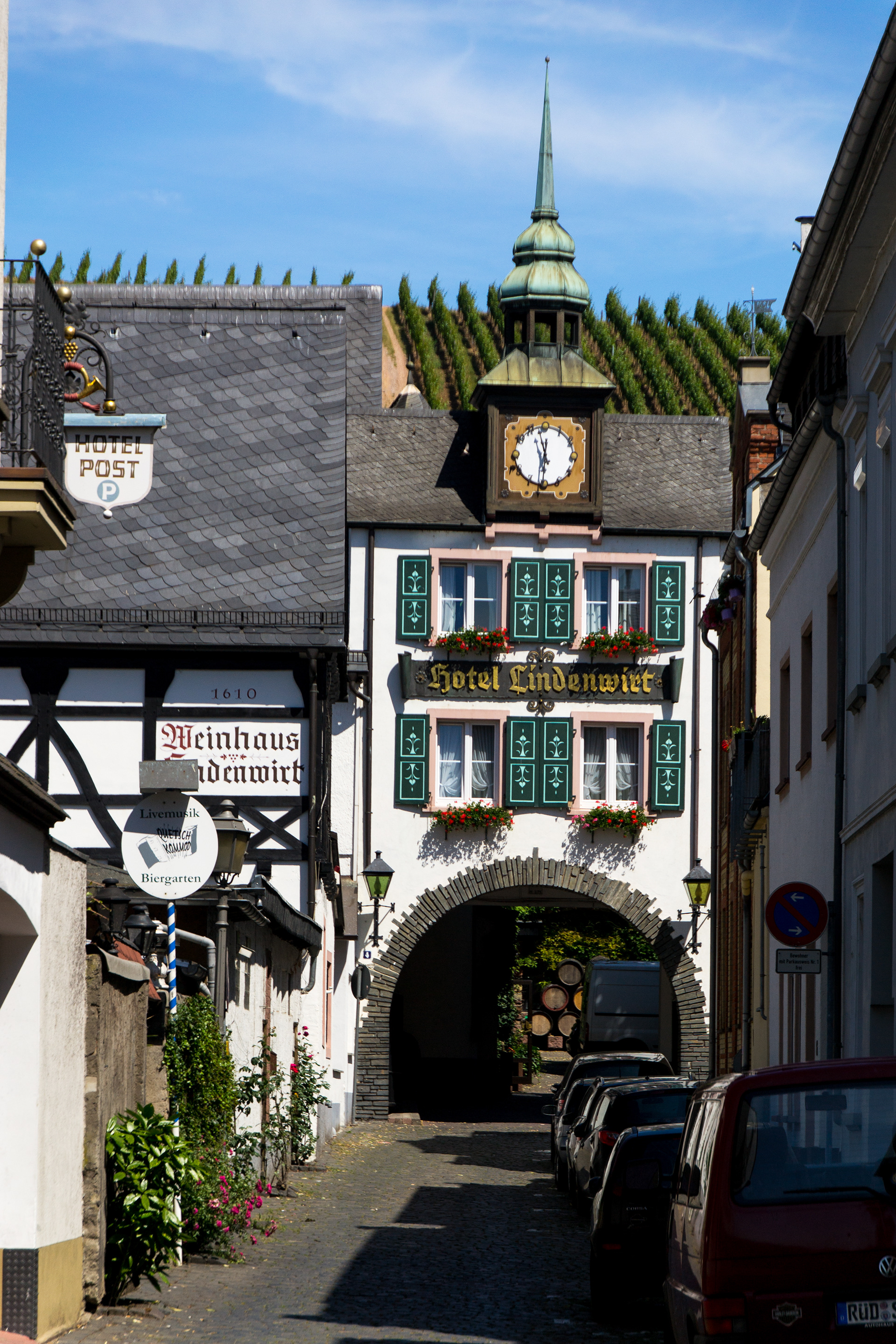
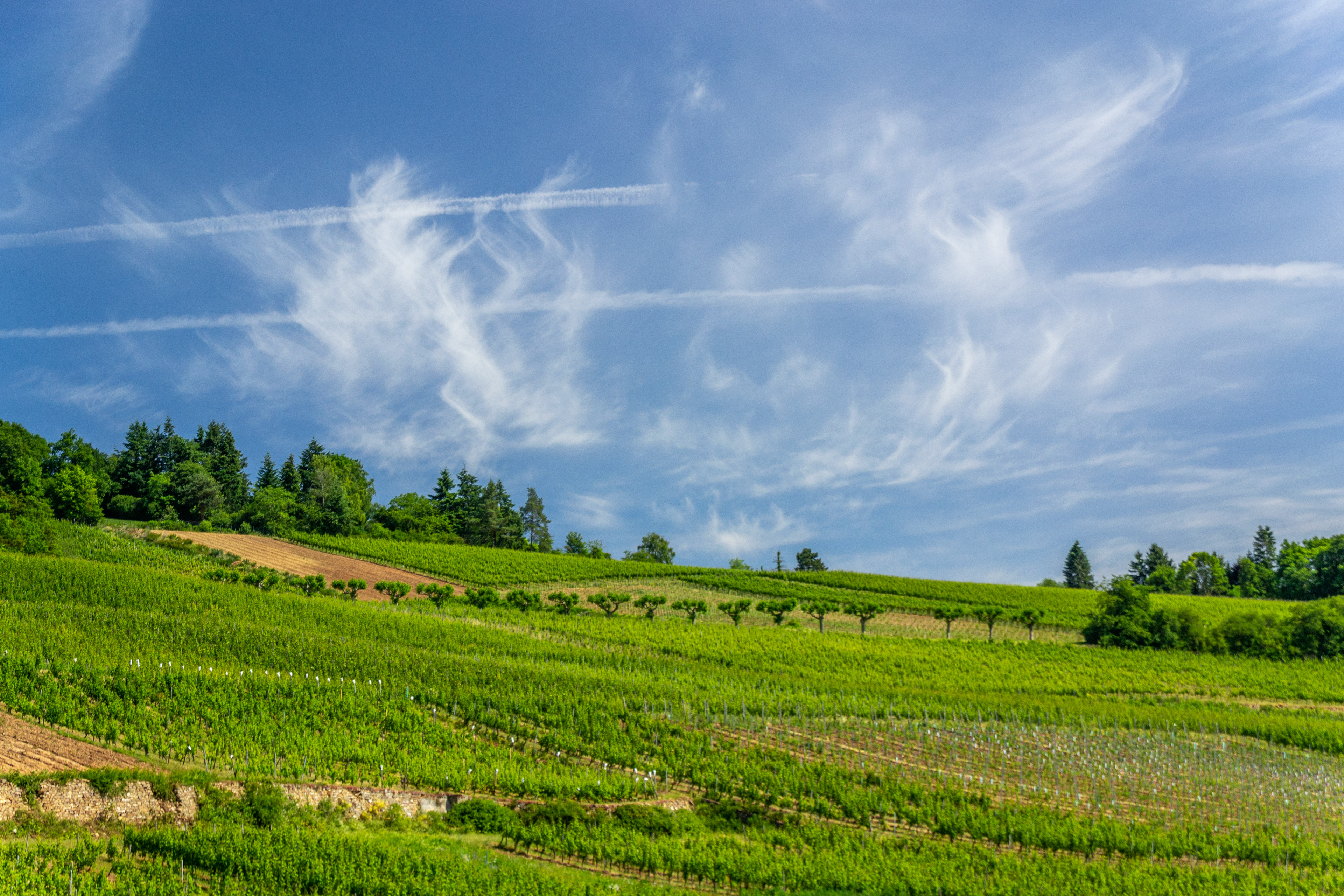
Vineyards stretch below us. Many dating back to Roman times. A notable product, Brandwein (Brandy) is produced by Asbach Distillery.
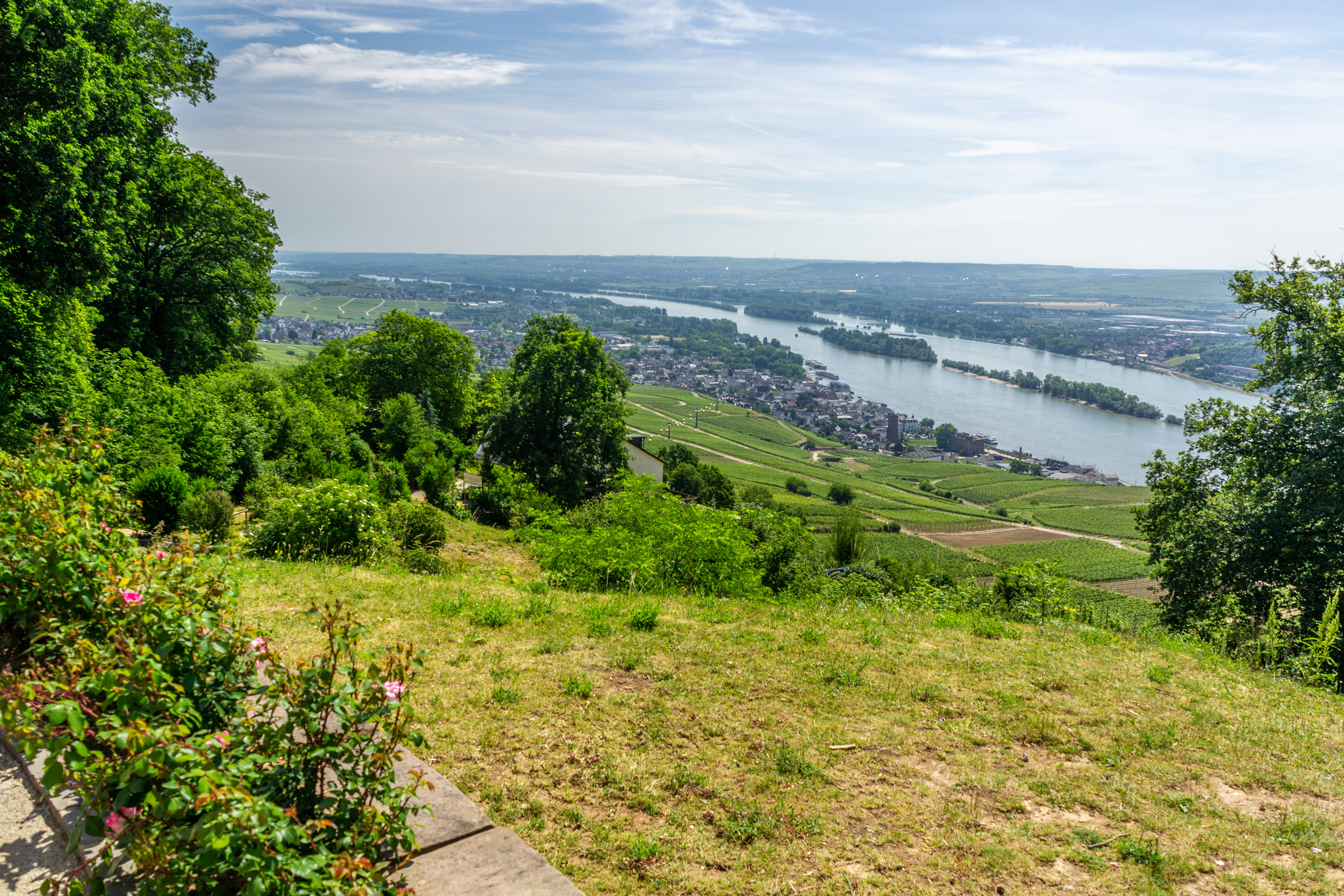
A panoramic view over the Middle Rhein Valley and Rudesheim from the Neiderwald Monument.

Niederwalddenkmal - Built in 1870's Overlooking the Rhine, commemorates the unification of Germany
THE MIDDLE RHINE VALLEY AND GORGES
Cruising this section of the Rhine presents an ever changing panorama of jagged hills, craggy clifftop fortress ruins, castles and picturesque villages.

Rudesheimer Rottland's vineyards line the hillside approaching the ruins of Ehrenfels Castle on the eastern banks of the Rhine.
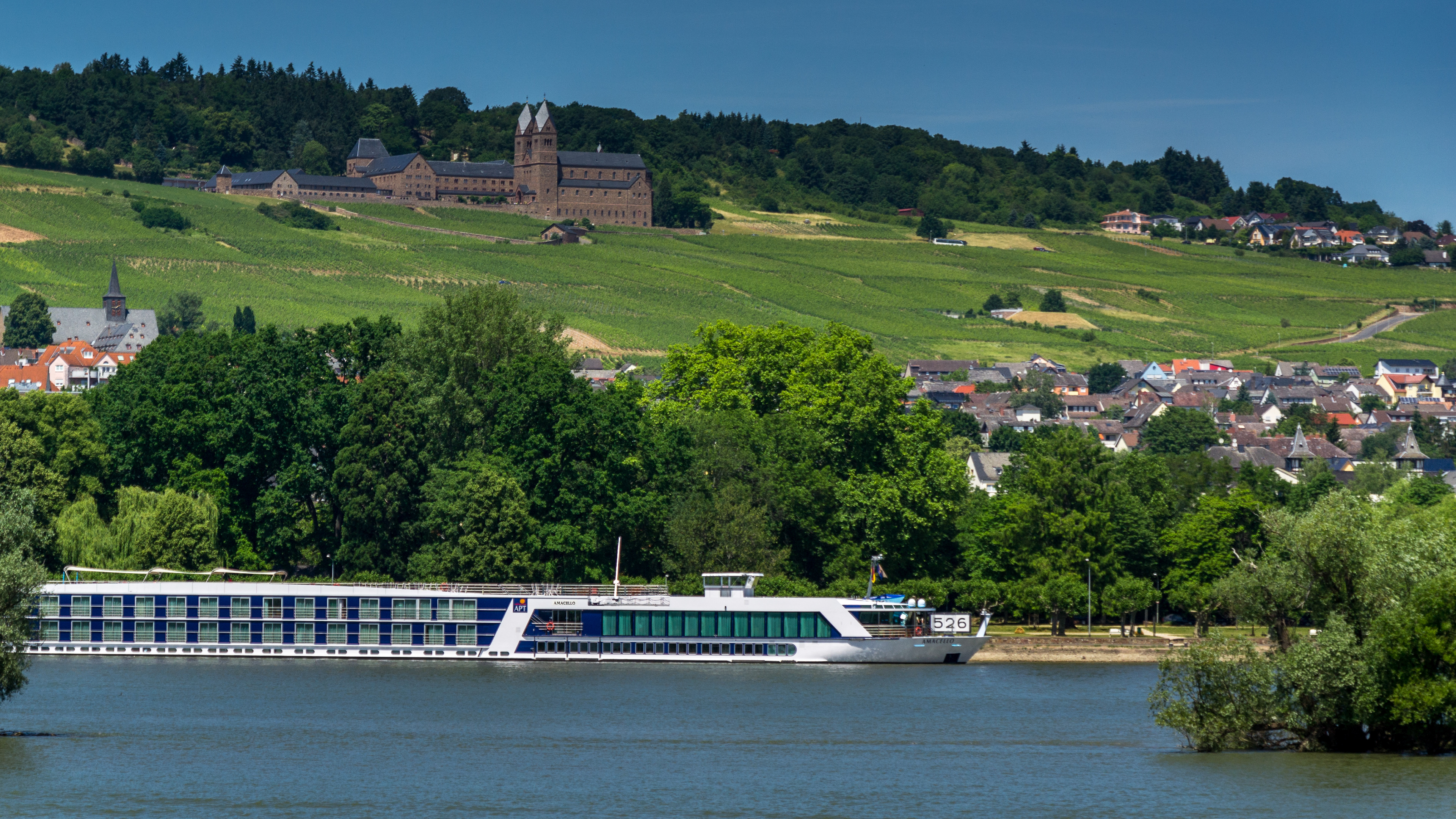
Abbey of St Hildegard near Rudesheim sits above APT's Amacello.
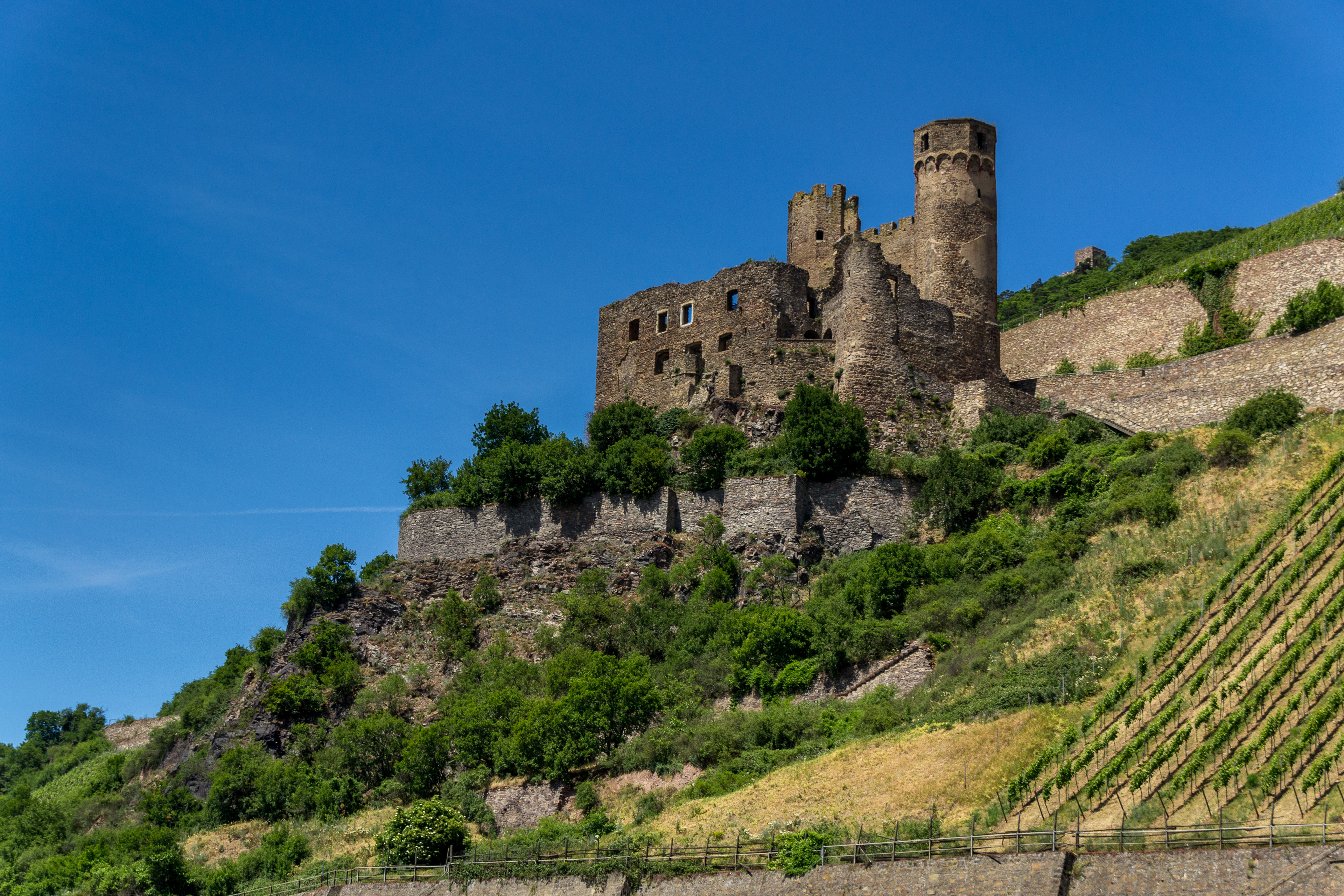
Ehrenfels Castle ruins above the Rhine Gorge near the town of Rüdesheim
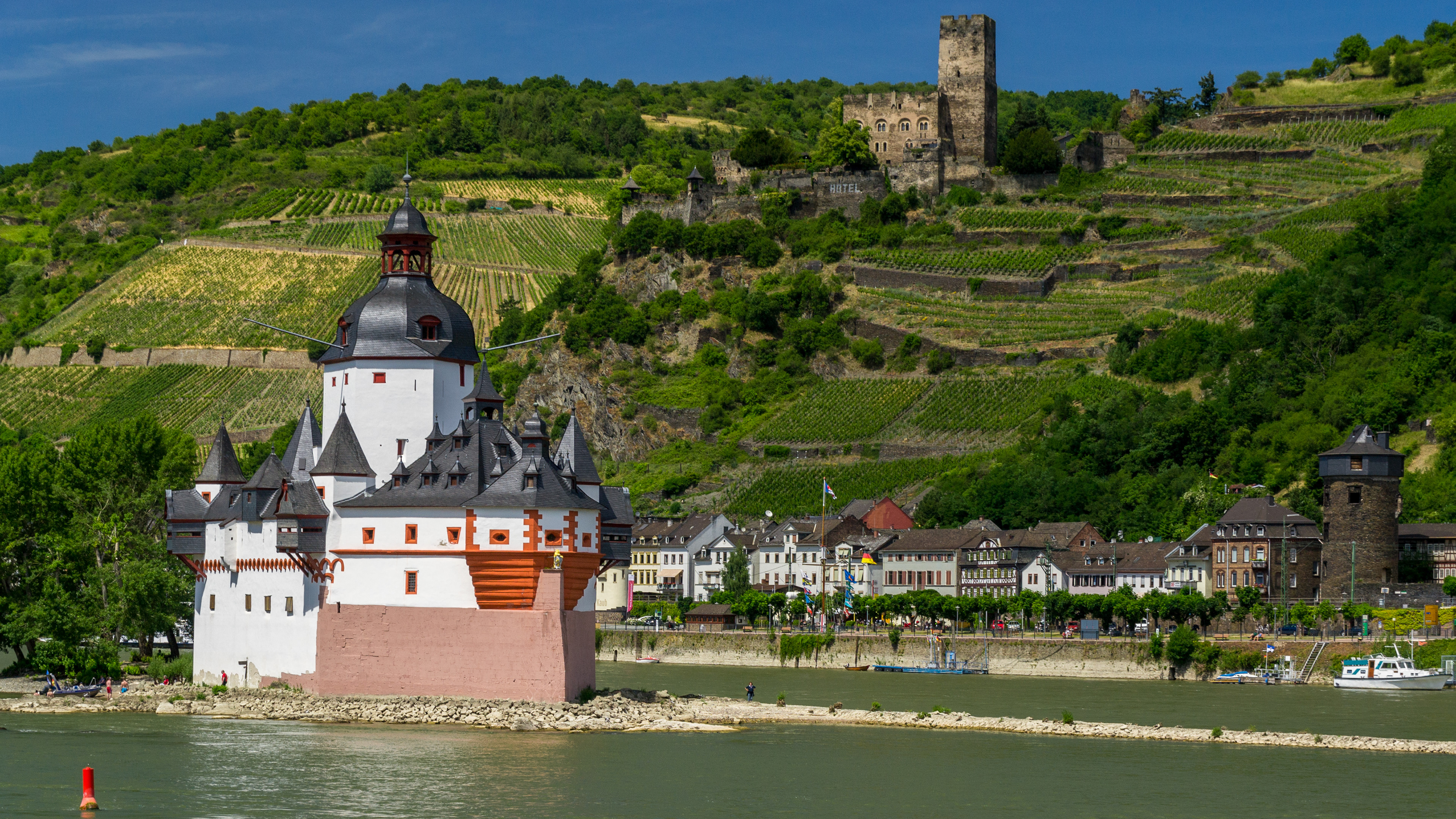
Pfalzgrafenstein Castle on Falkenau island, (known as Pfalz Is) in the Rhine river near Kaub, Gutenfels Castle in background.
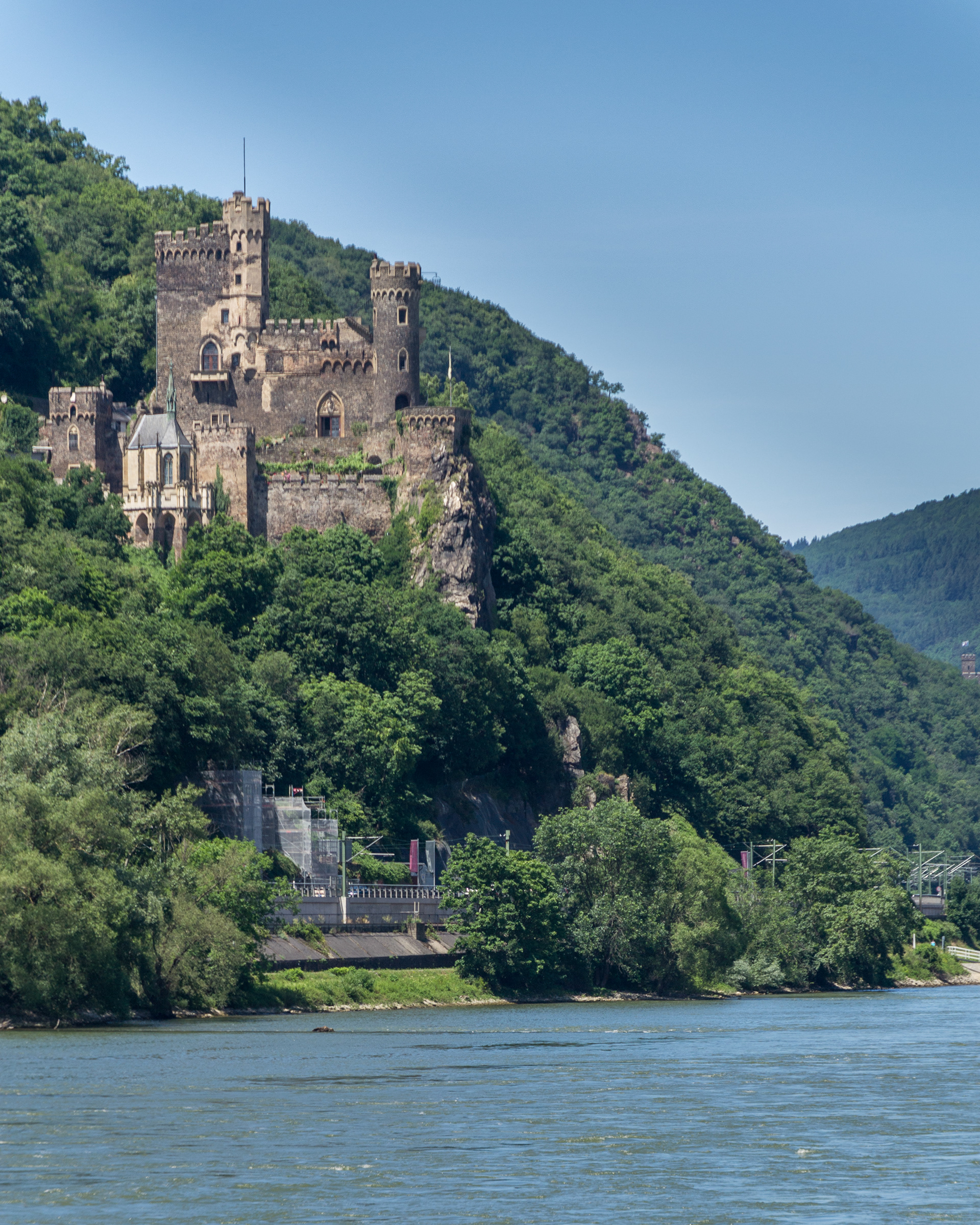
Burg Rheinstein, the Rhine's best-known fortresses.
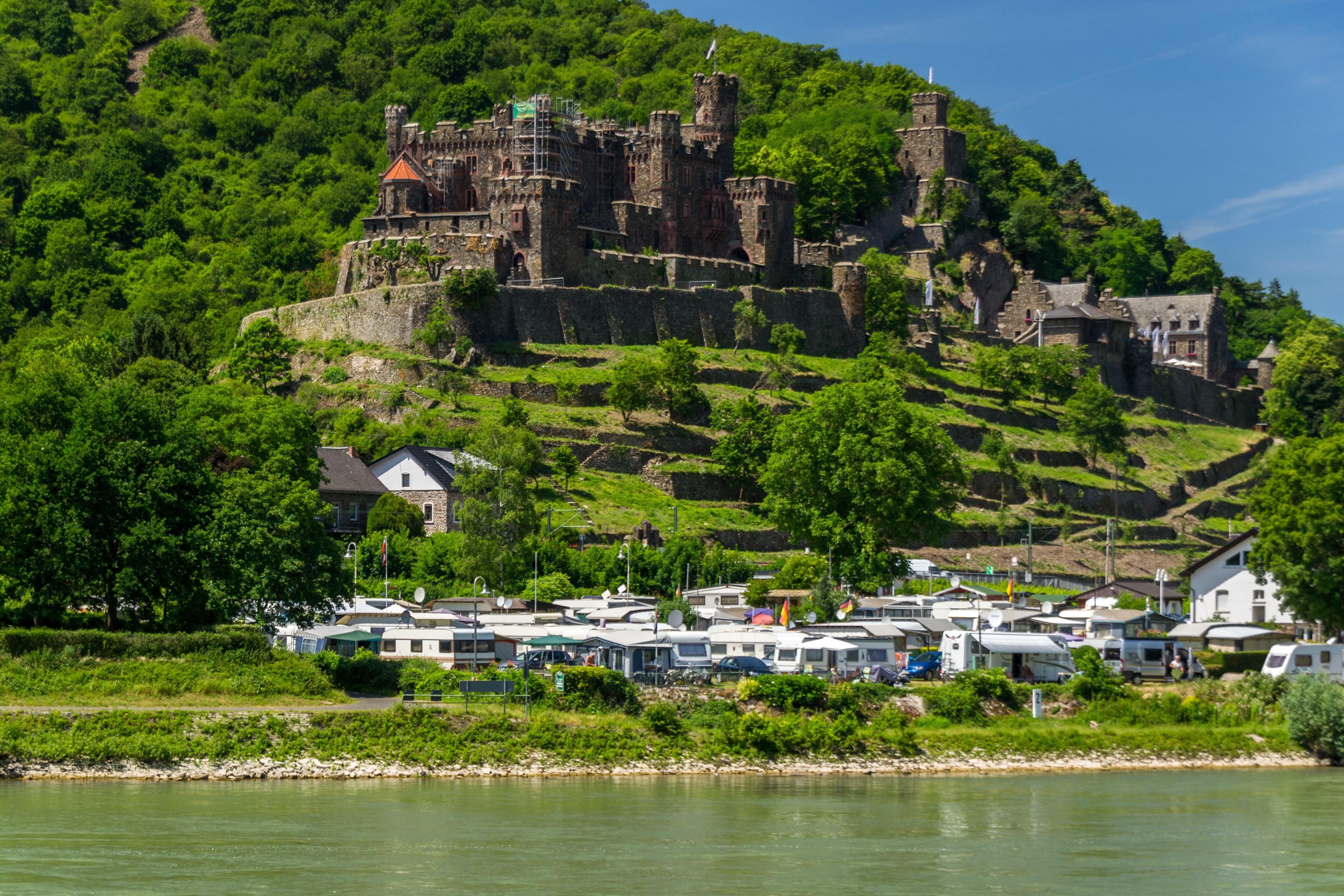
One of the many van parks along the banks of the Rhine. A picturseque setting juxtaposed beneath a medieval castle.
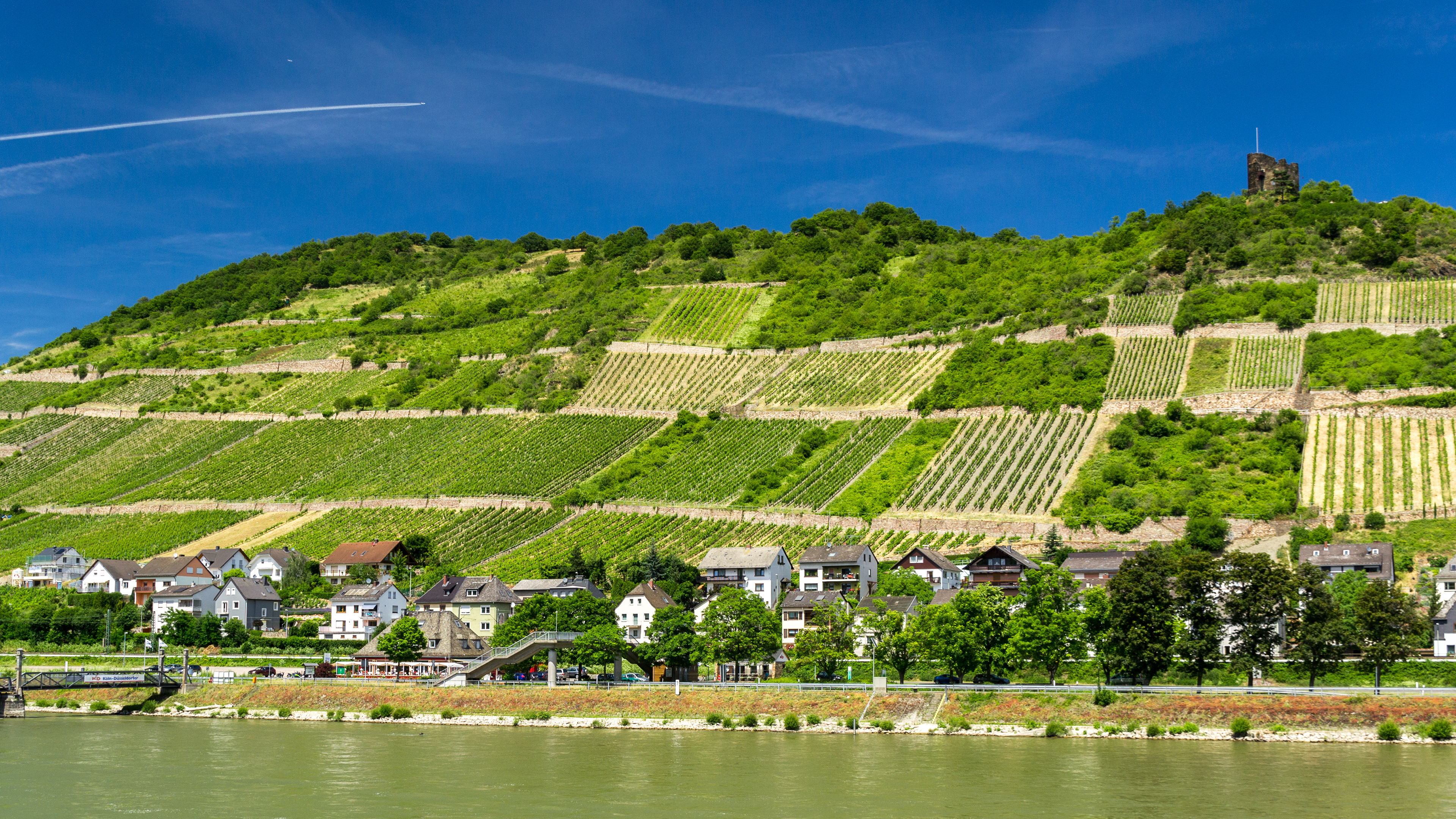
Vineyards create an attractive patchwork along the hills of the Rhine. The area is famous for its Reisling.

Picturesque villages and vineyards line the banks of the Rhine.
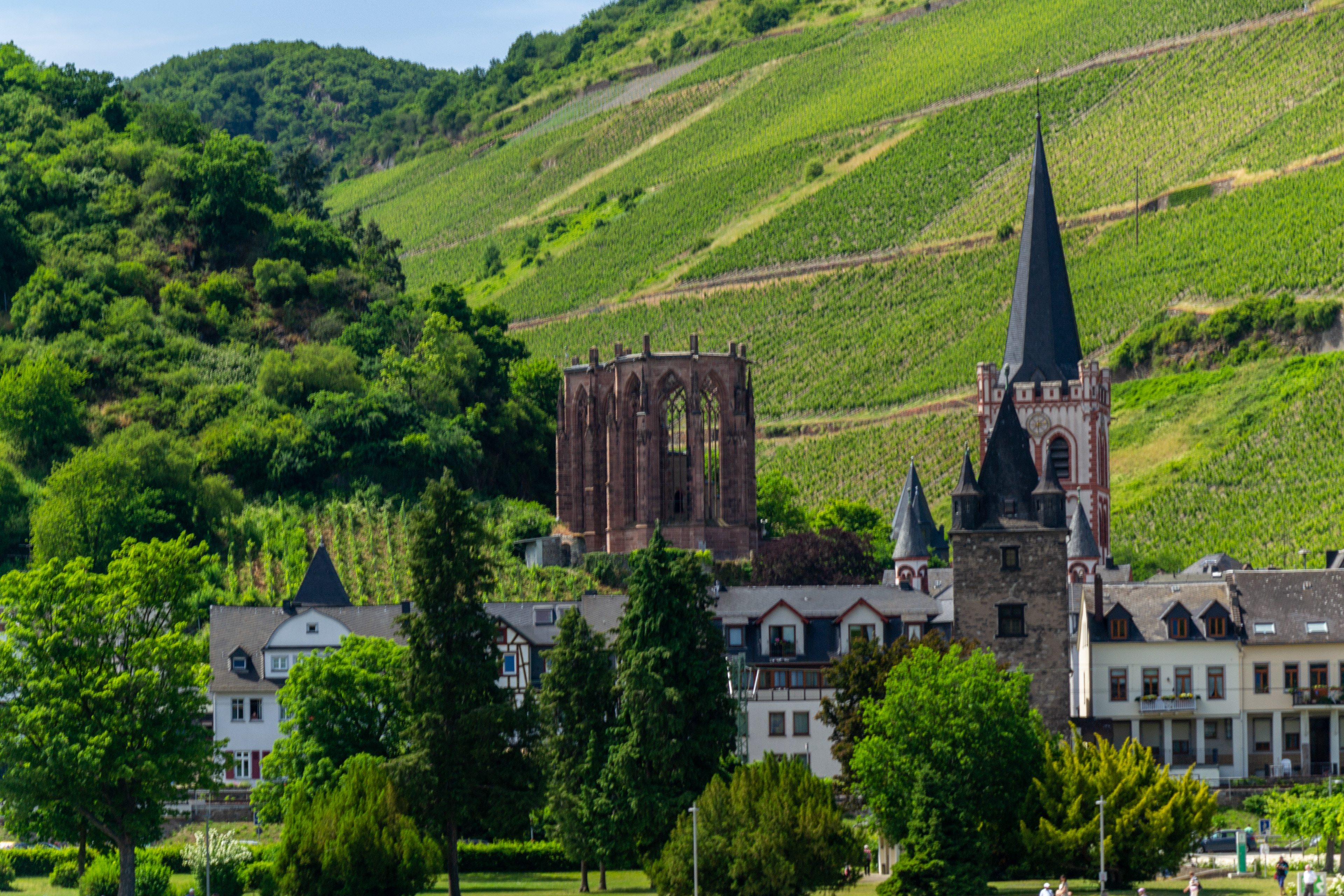
The ruins of Wernerkapelle behind St Peters chapel in Bacharach.
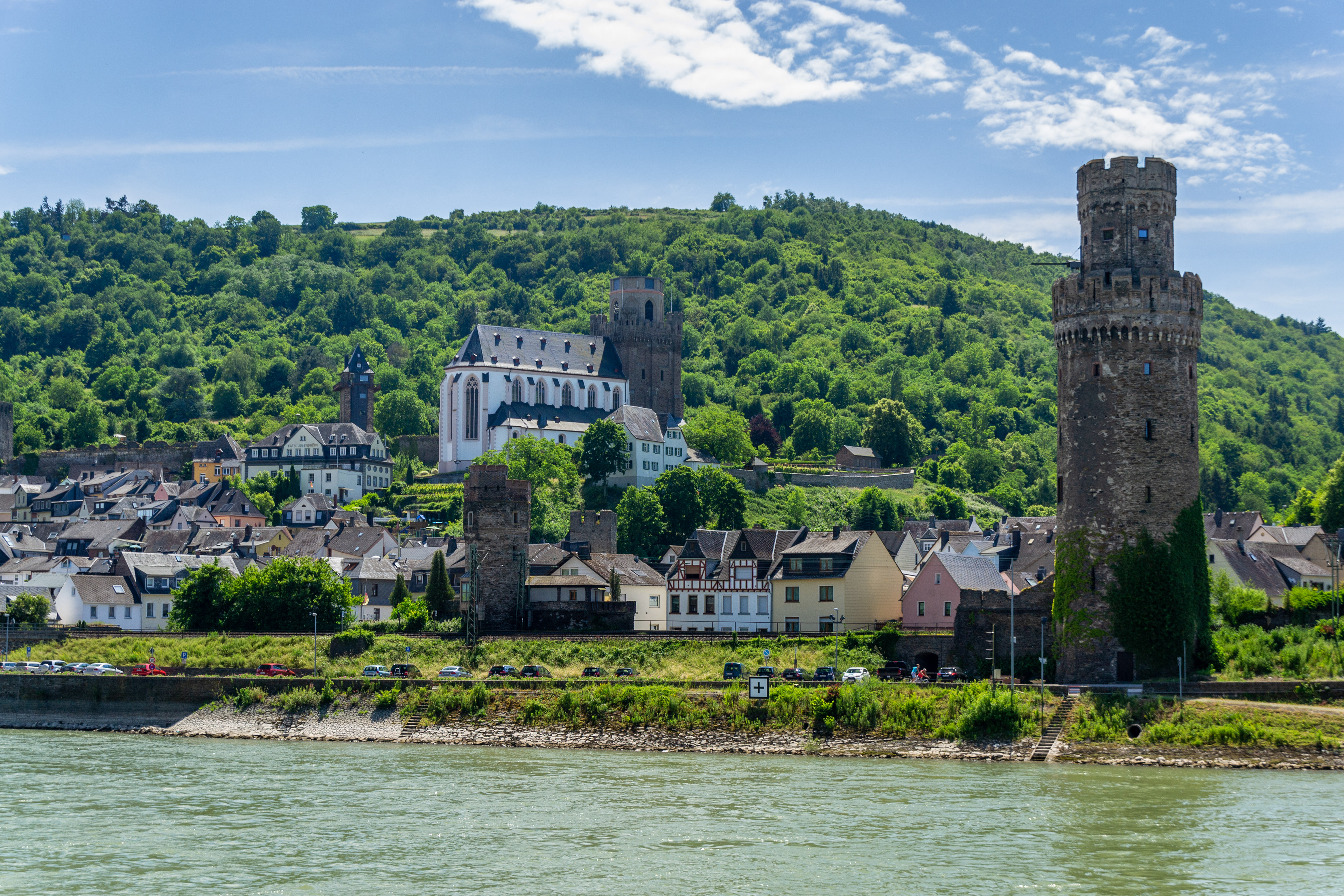
The Ochsenturm (tower) in Oberwesel is part of the remaining medieval city fortifications.
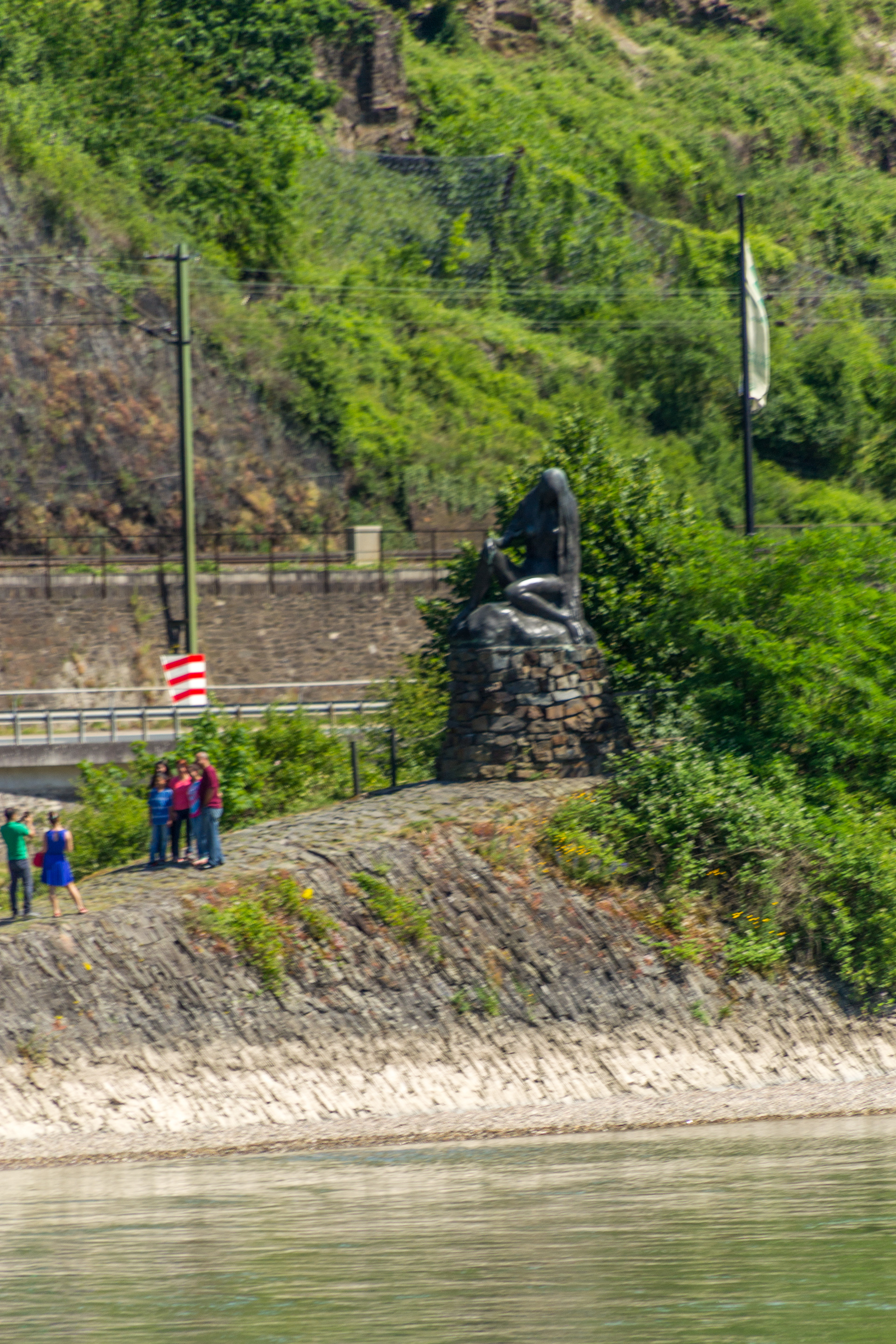
Tourists posing in front of the Loreli monument.
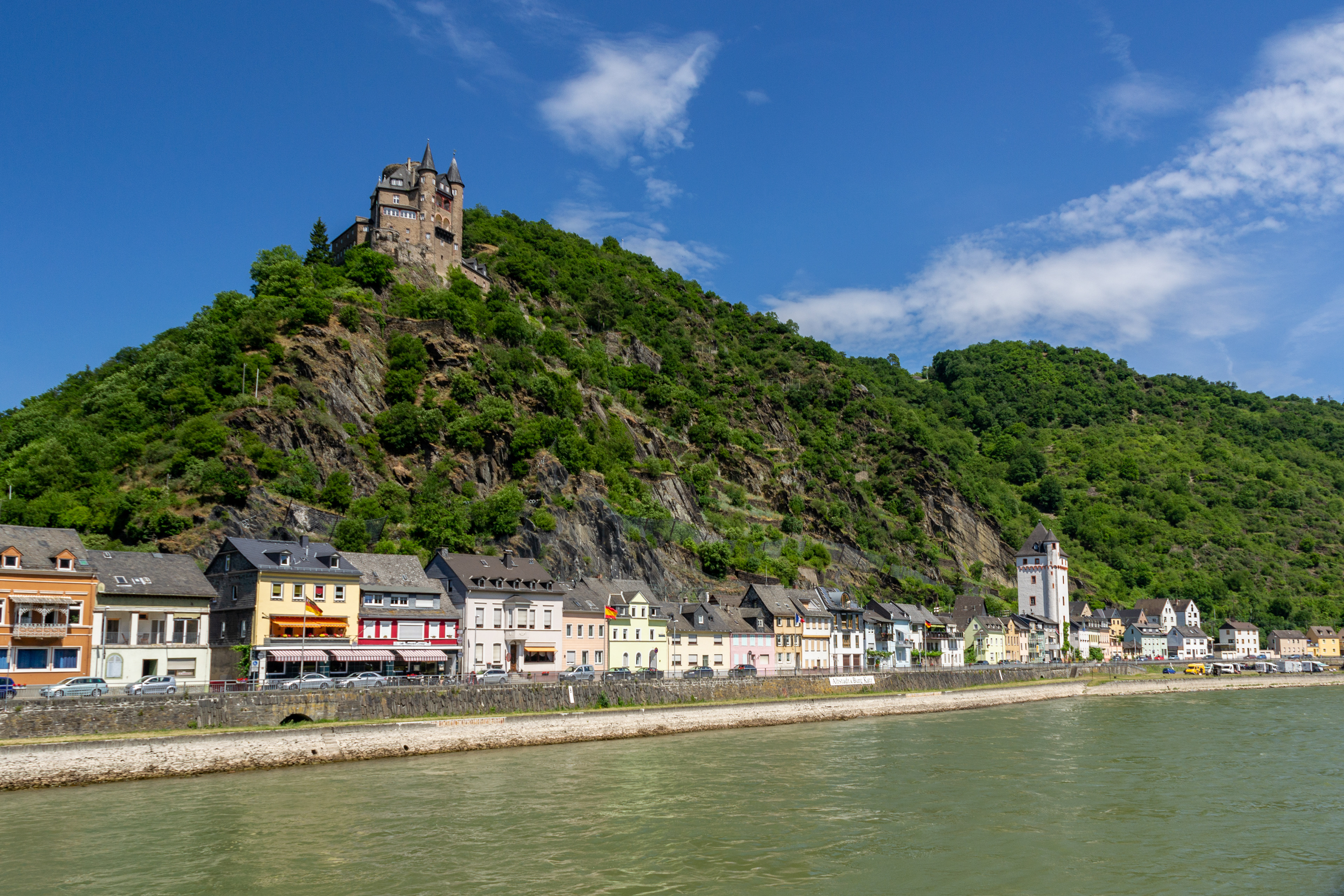
Katz Castle (Burg Katz) is a privately owned castle above the town of St. Goarshausen.
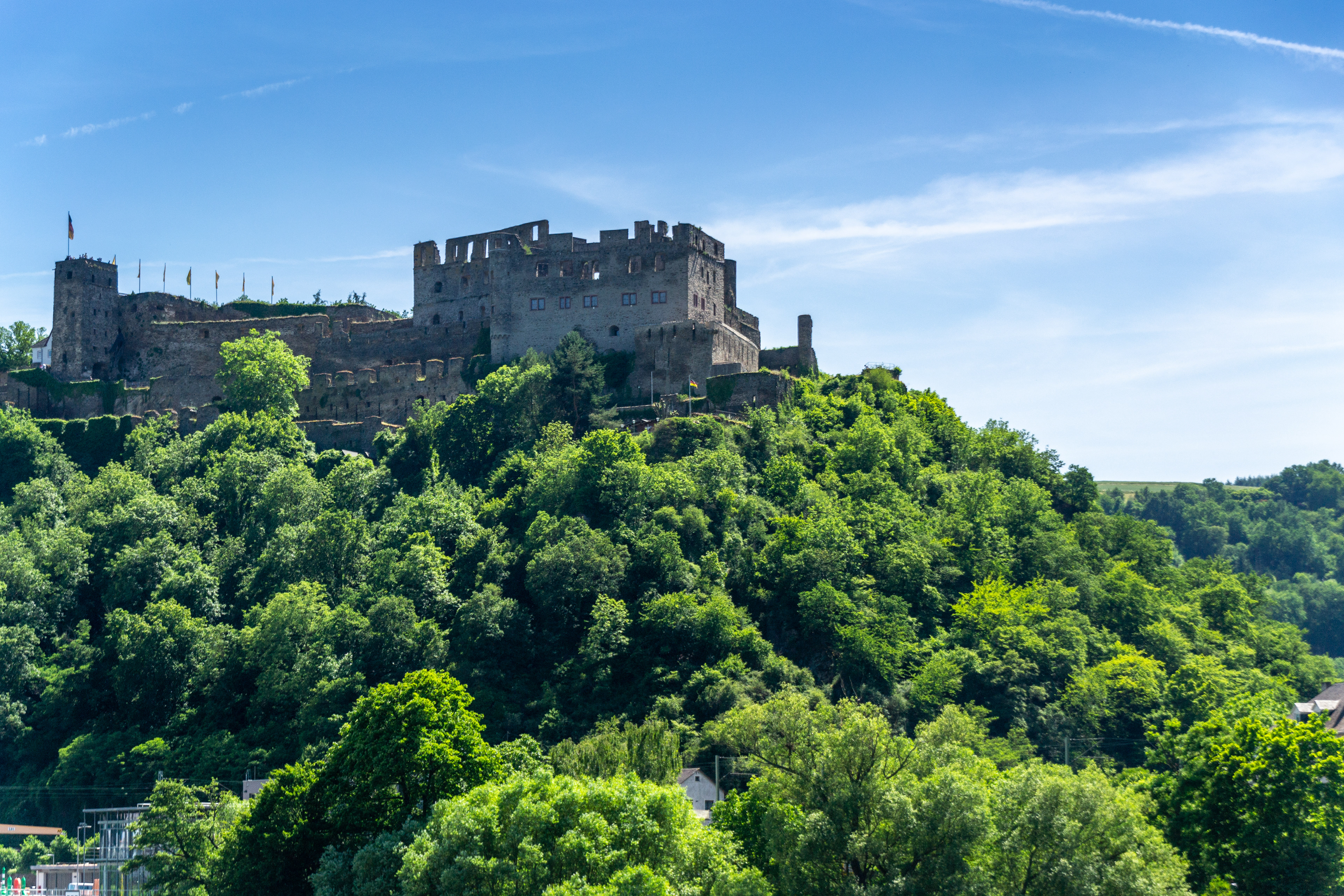
The ruins of Rheinfels castle above St Goar, now a hotel was the largest fortress in the Middle Rhein Valley between Koblenz and Mainz.
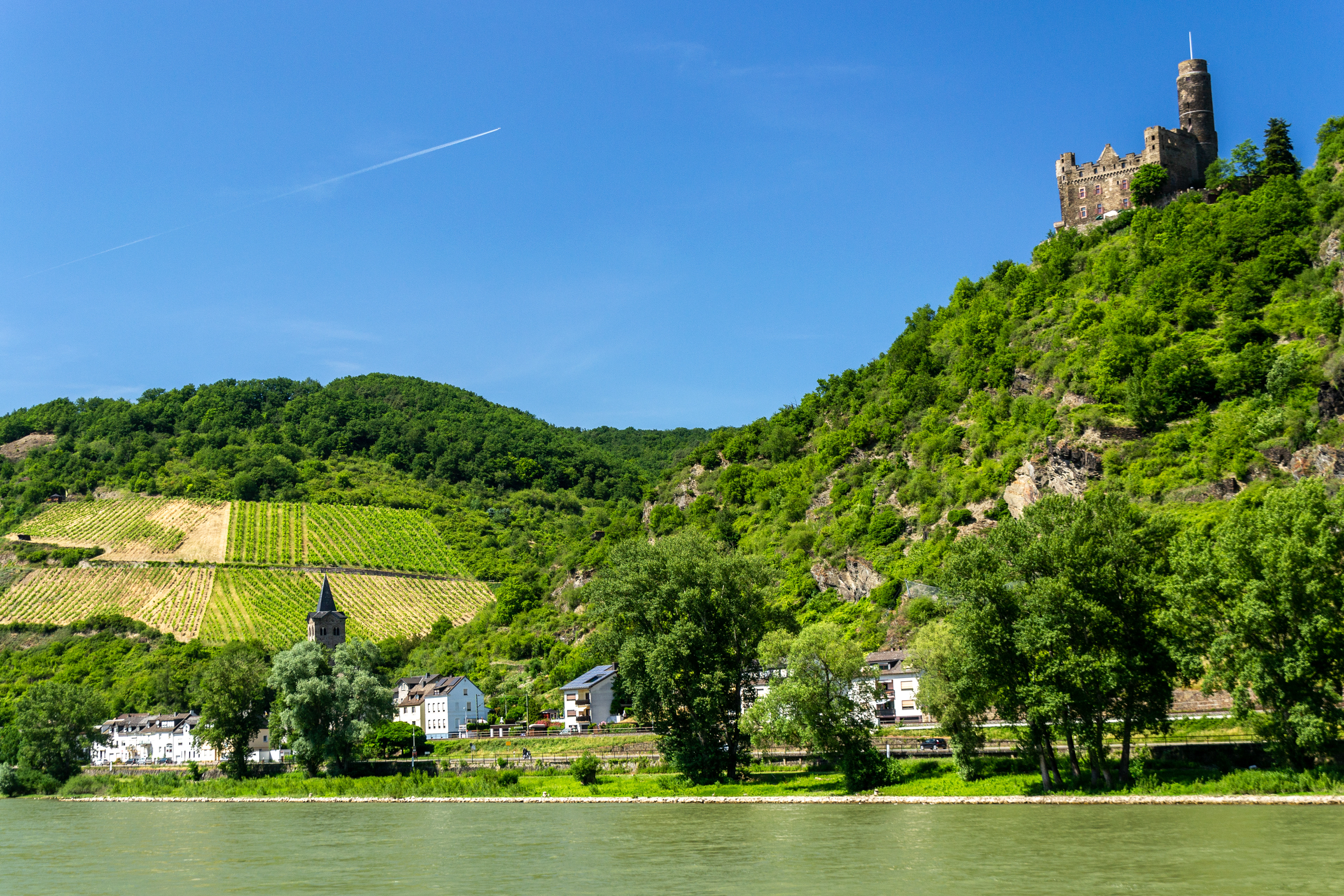
Maus Castle above the village of Wellmich in Rhineland-Palatinate.
THE MARKSBURG
Marksburg Castle is an authentic, intact medieval fortress begun in the 13th century which sits high above the banks of the Middle Rhine.
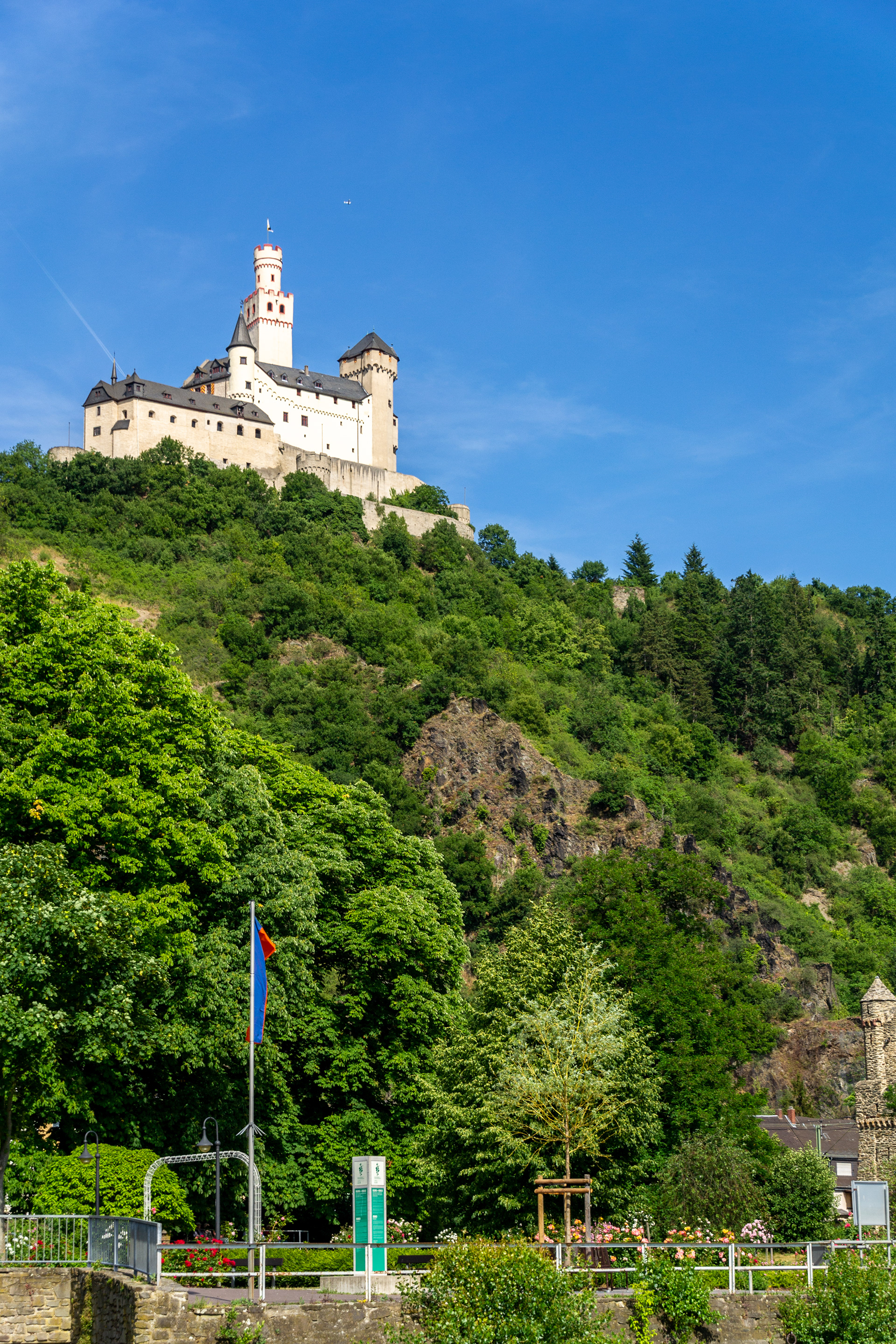
Marksburg Castle above the town of Braubach in Rhineland-Palatinate, Germany..

Marksburg Castle.
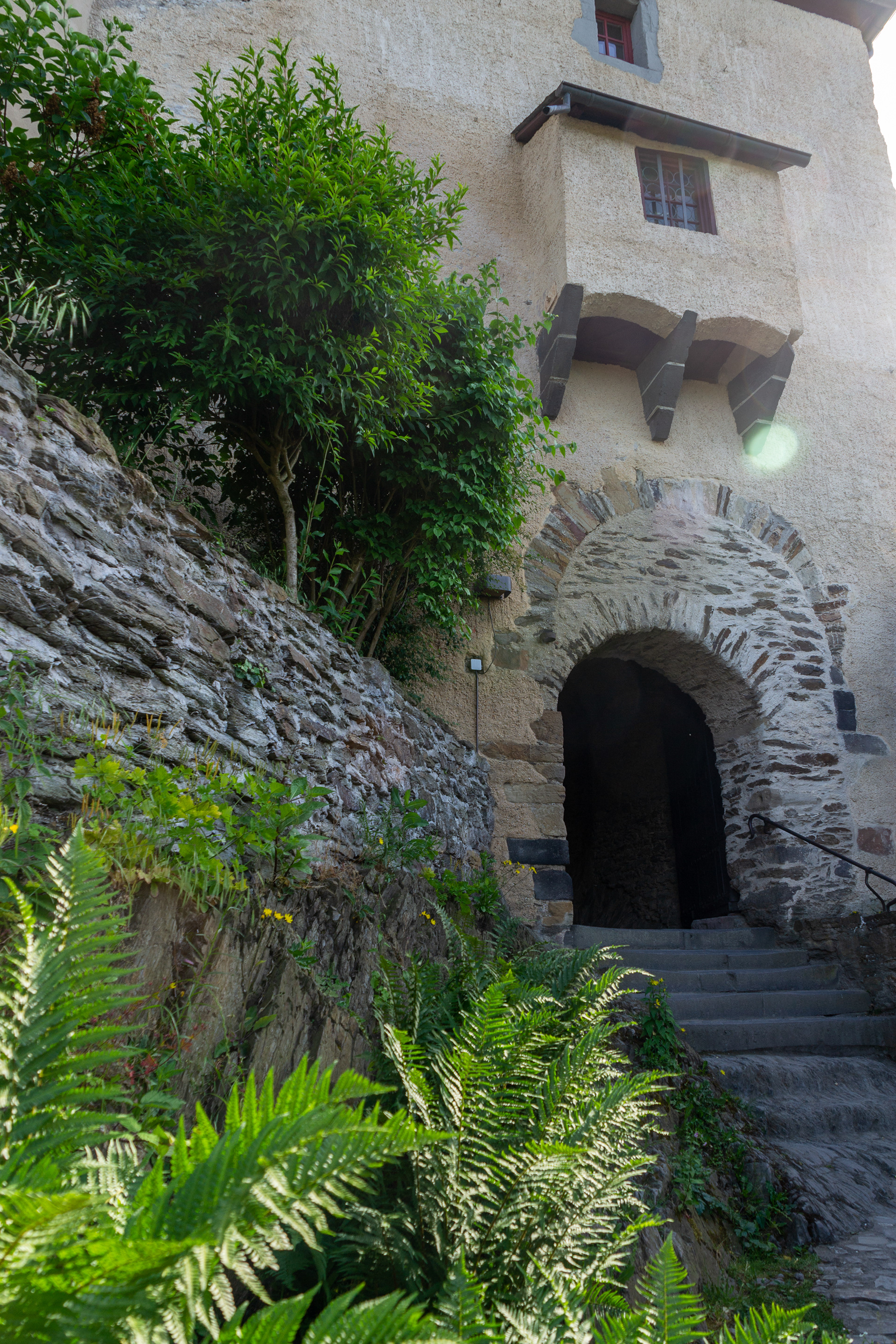
Entry into the castle is via steep, narrow and uneven steps.

Inside the narrow and uneven steps, hewn from rock are deliberately designed to make it difficult access for attackers.
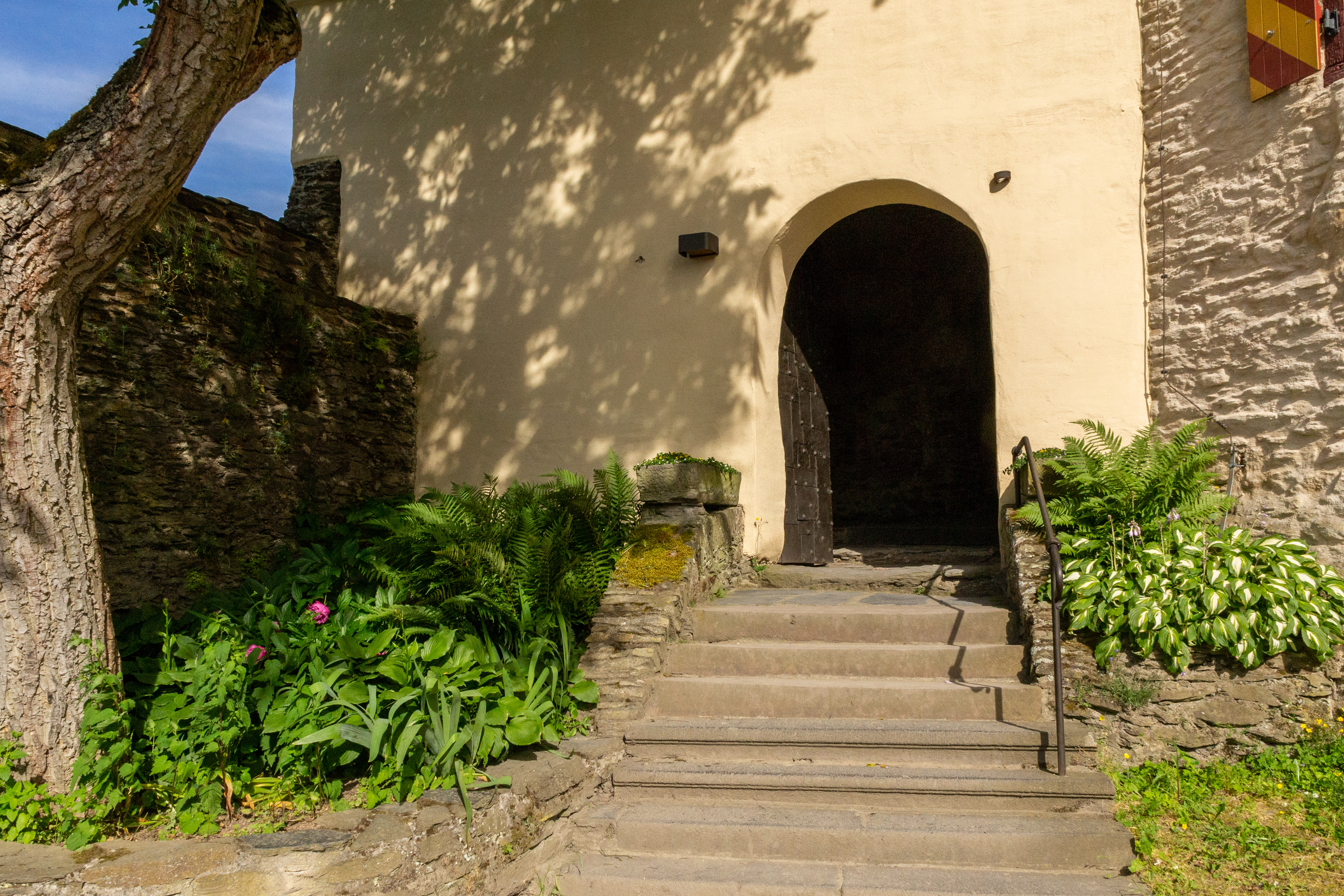
Yet another fortified entry into the castle from a courtyard.
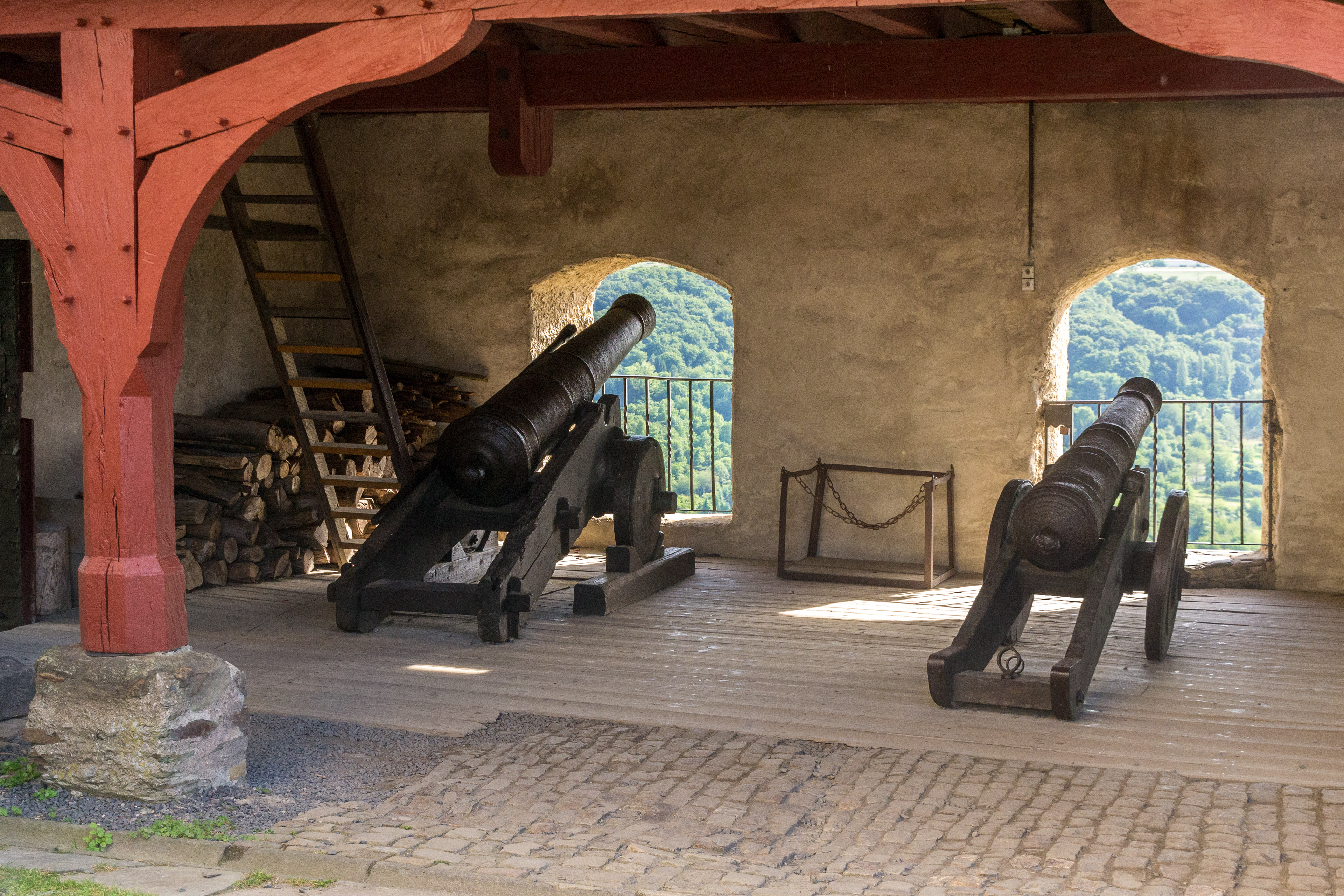
Bristling with Cannon. The fortress was used for protection rather than as a residence for royal families.

Township of Braubach below on the banks of the Rhine River.
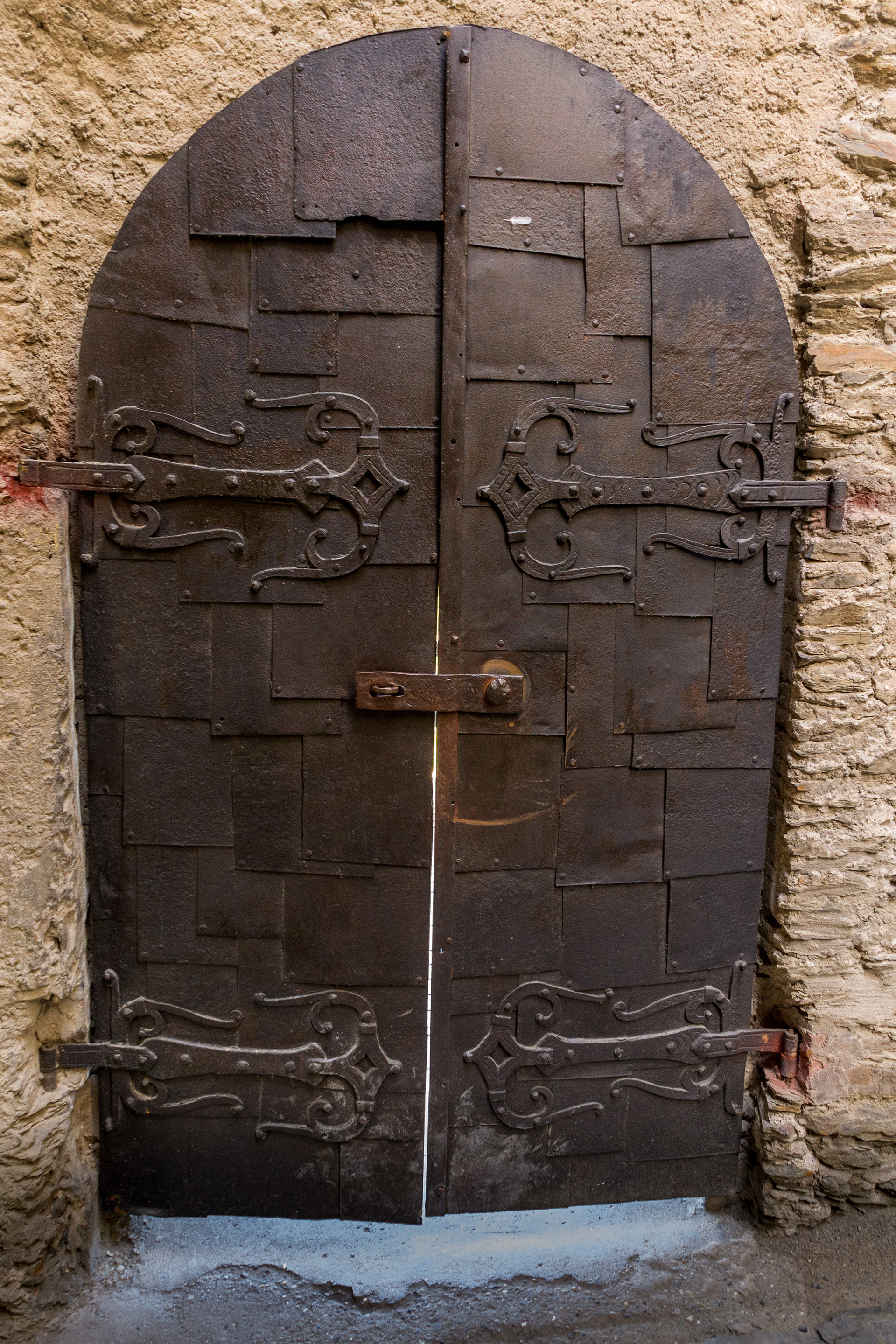
Steel plated doors, an ancient defensive barrier.

Whine barrels ensure a plentiful storage to counter any siege of the fortress.

Soot covered walls of cooking hearth.
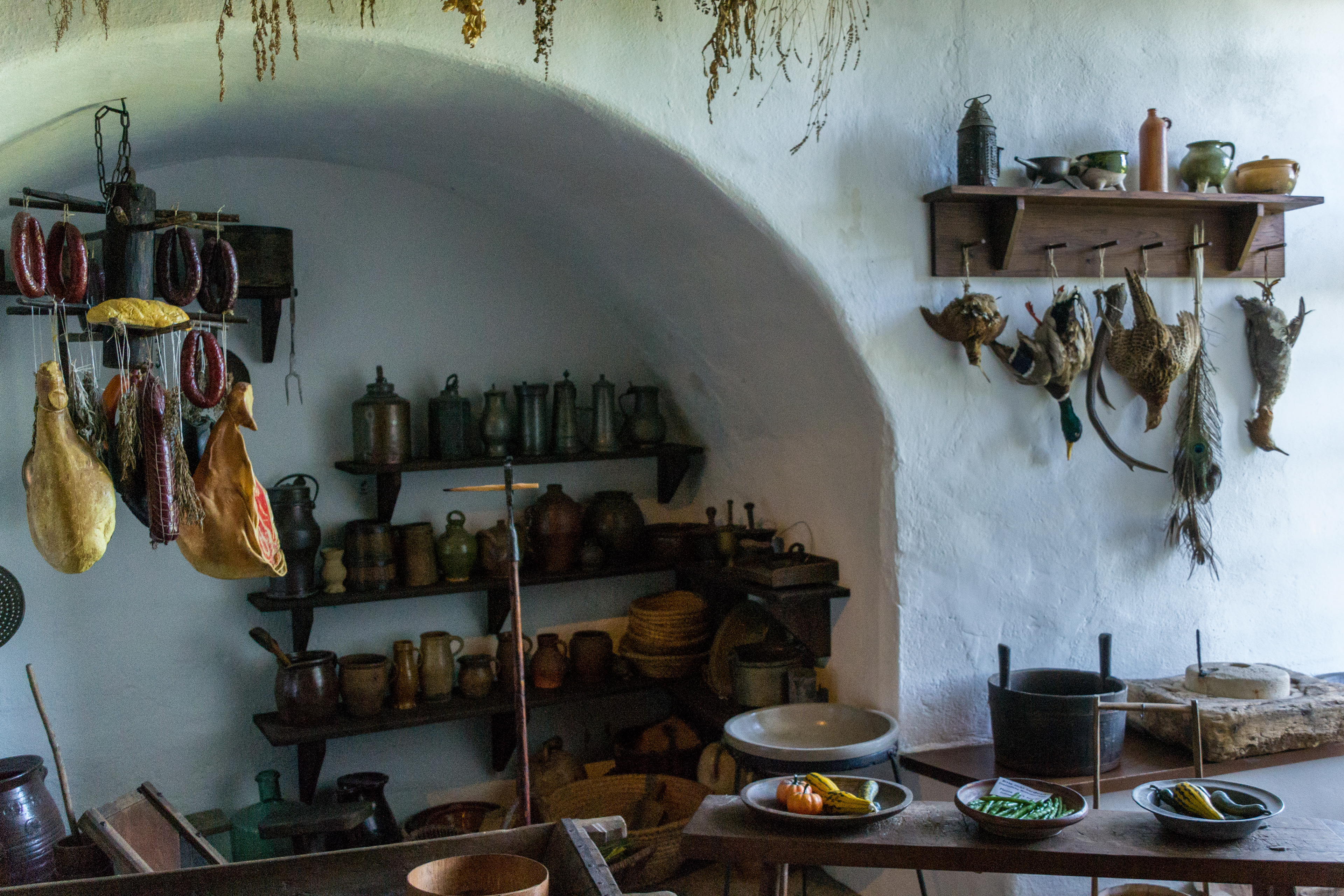
A well stocked larder.
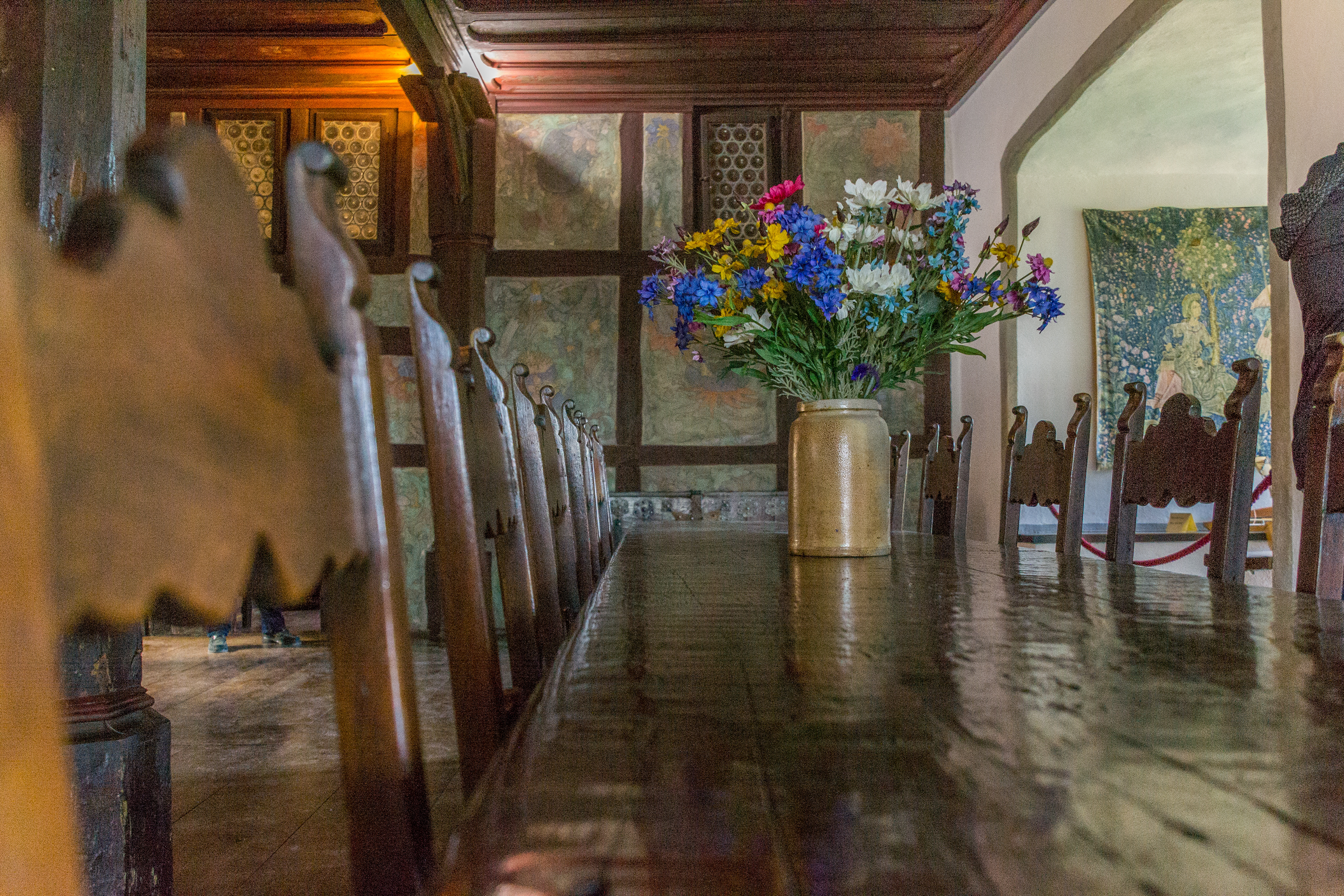
Dining in style reserved for knights and nobility.
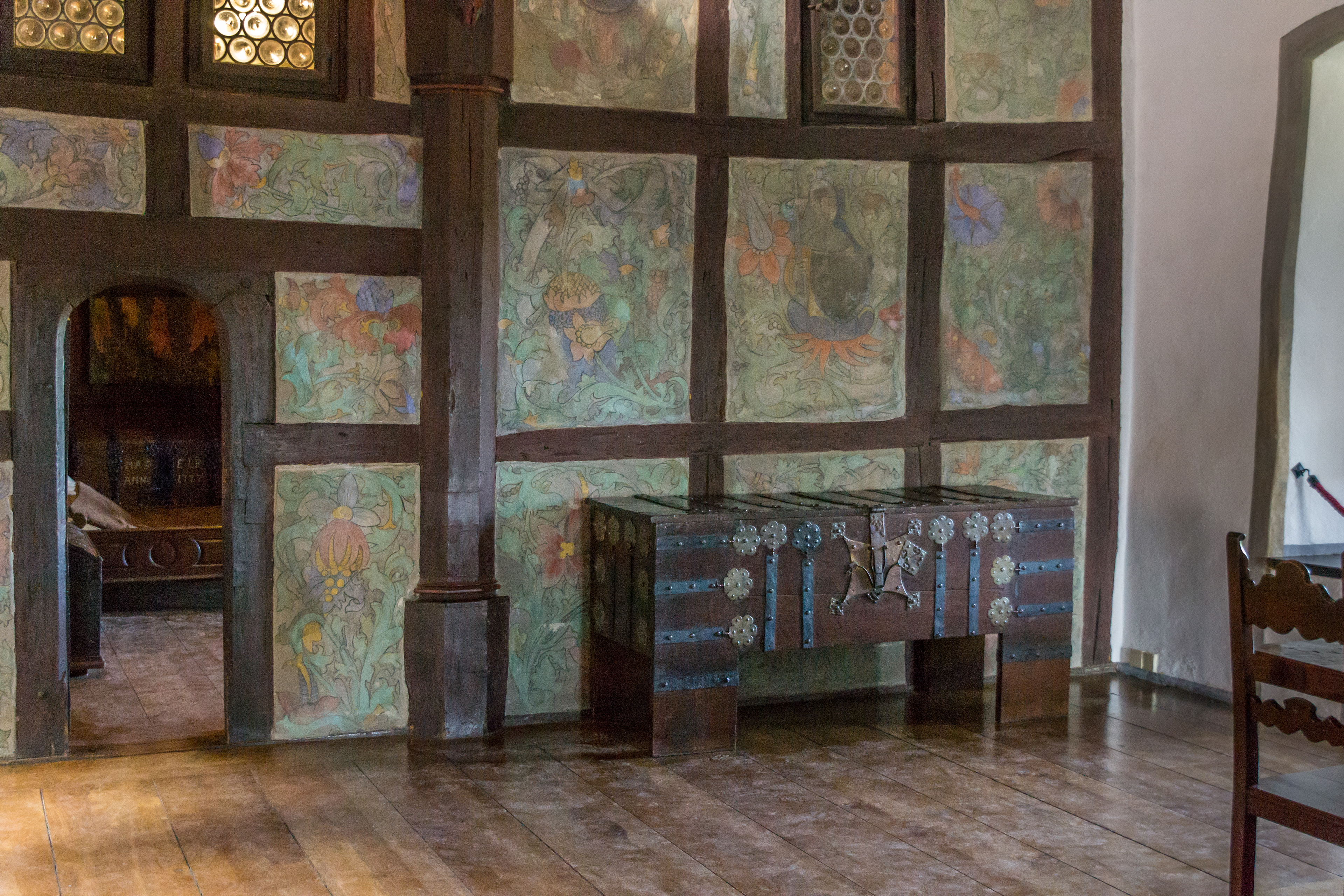
Impressive medieval interior designs.

Intricate ceilings of the royal quarters within the castle .

Displays of armour throughout the ages is on display in the Armory Museum Room.
DUSSELDORF
In Dusseldorf we explore the Altstadt (Old Town). The Düsseldorfer Altstadt is known as "the longest bar in the world", because the small Old Town has more than 300 bars and discothèques, supposedly each establishment's bar-counter connecting to one next door.

Reinuferpromenade with the Rhine Knee Bridge and St Lambertus church in the background.
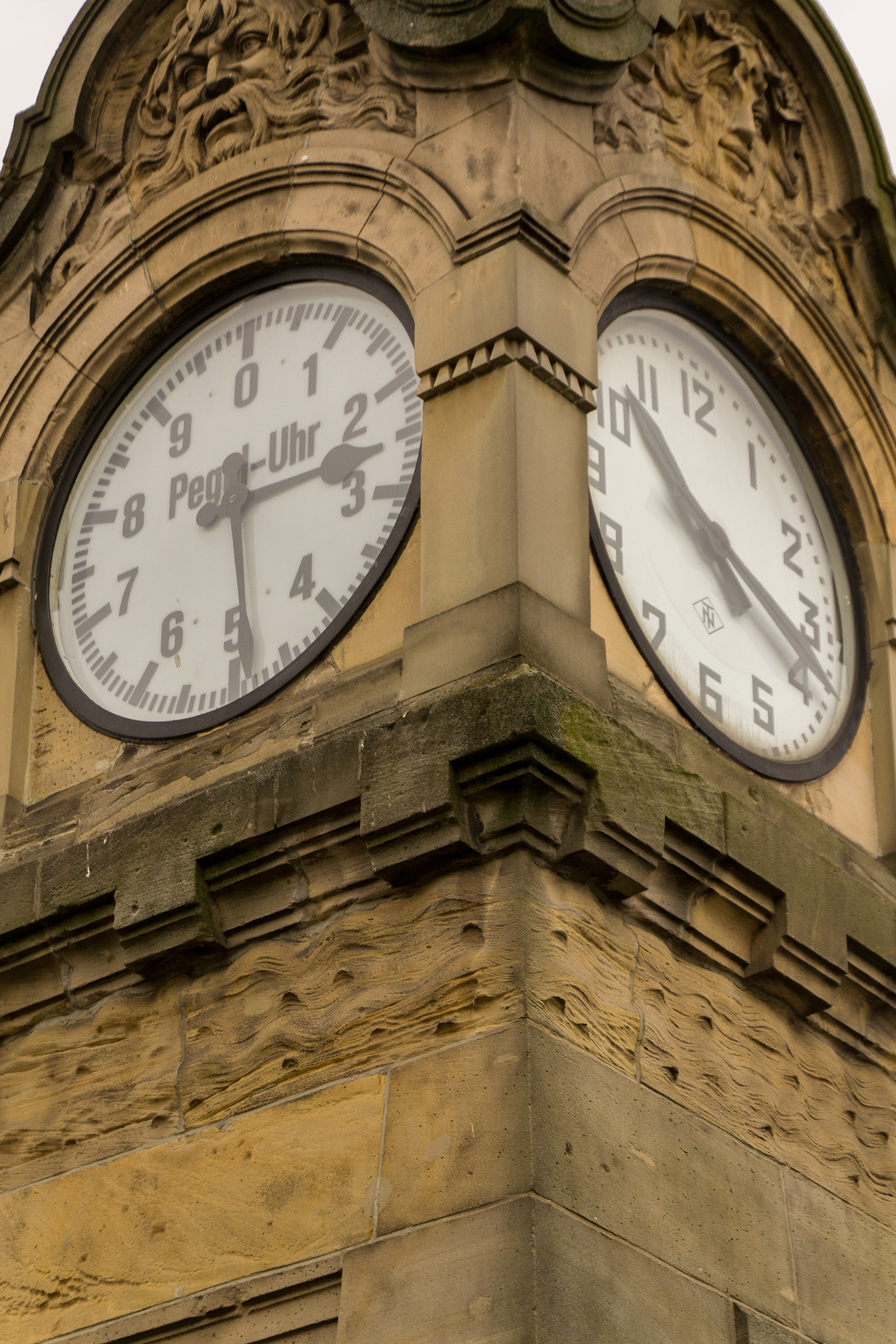
An intriguing timepiece, on the left side of the clock face this dial indicates water level of the Rhine. Normal level is 24.48m.

Rathaus or "The Town Hall" is located in the middle of the Altstadt (Old Town) dates back to 1570.
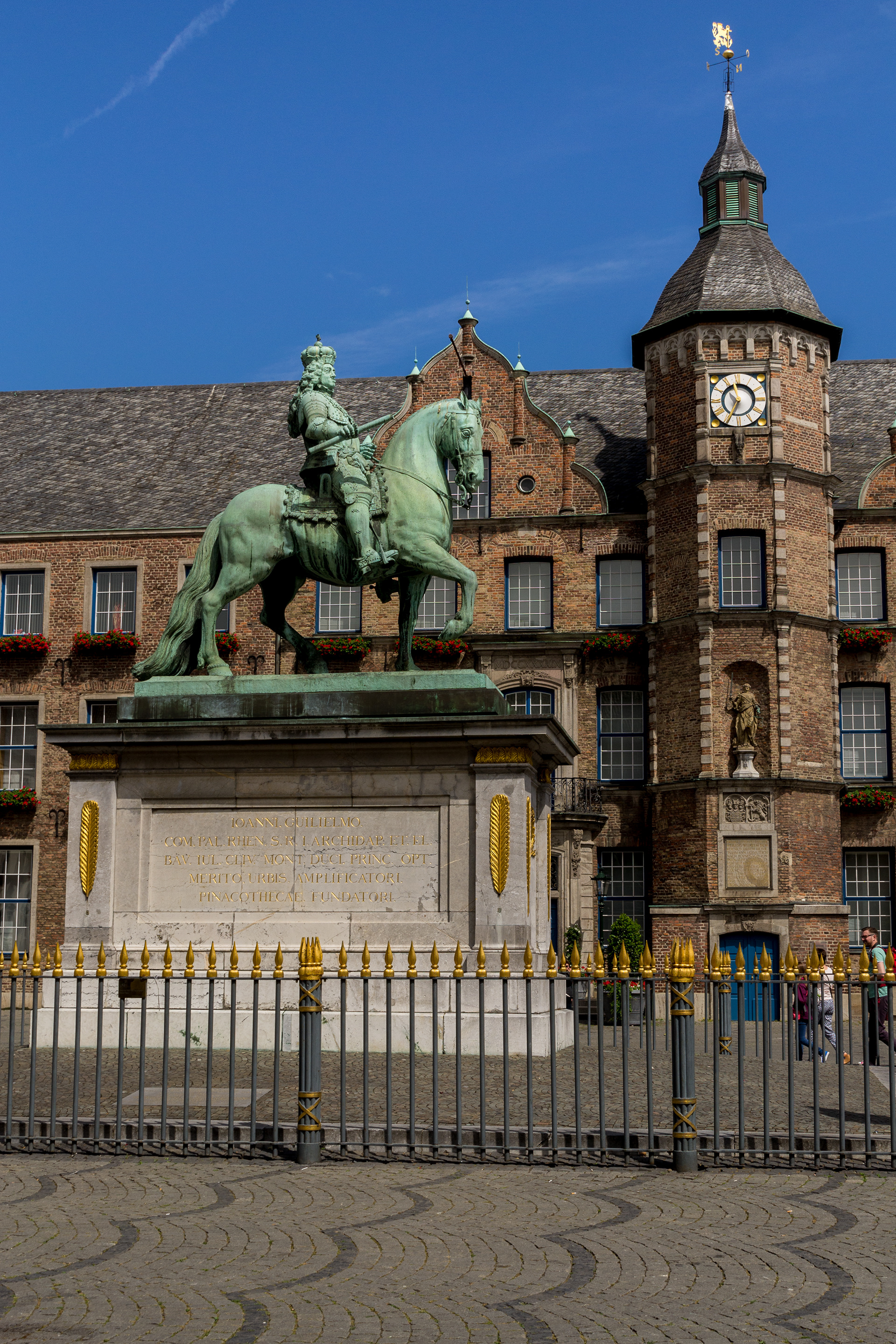
The Rider statue (Jan-Wellem-Reiterstandbild) in front of the Rathaus.

Hoppeditz sculpture in a park not far from the Rhine. He sits on a pillar made up of masks and hats.

The Altstadt area is home to over 300 bars and restaurants and is known as "The longest Bar in the World".

The Neanderkirche (Neander Church) is a Protestant church in the centre of Düsseldorf, the Altstadt.

Cartwheeling sculpture above a fountain in the Altstadt.
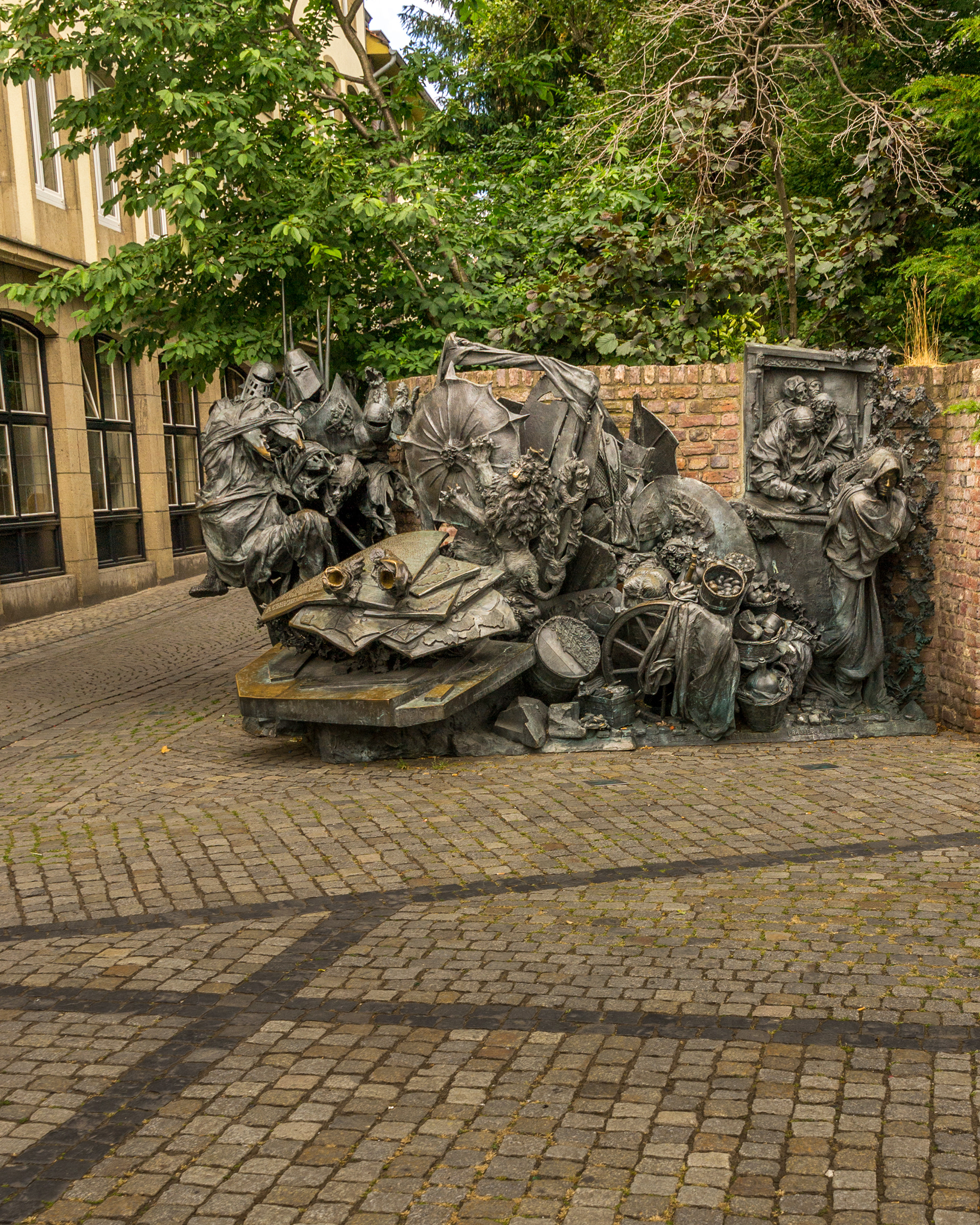
The Stadterhebungs monument, an urban renewal monument commemorating the award of city rights to Düsseldorf.
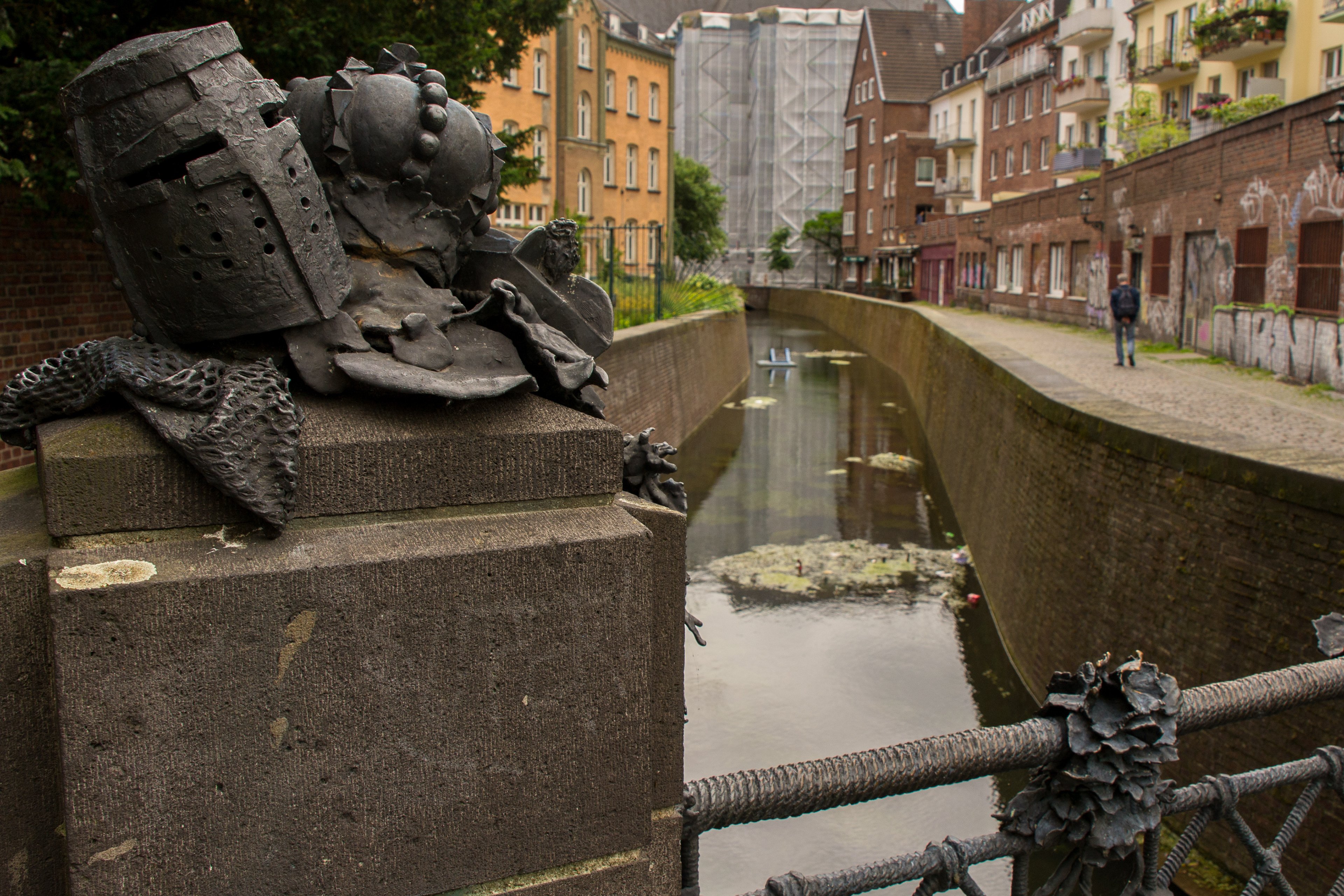
Canal beside the Stadterhebungs monument

Old Castle Tower in the Altstadt, now a Maratime Museum
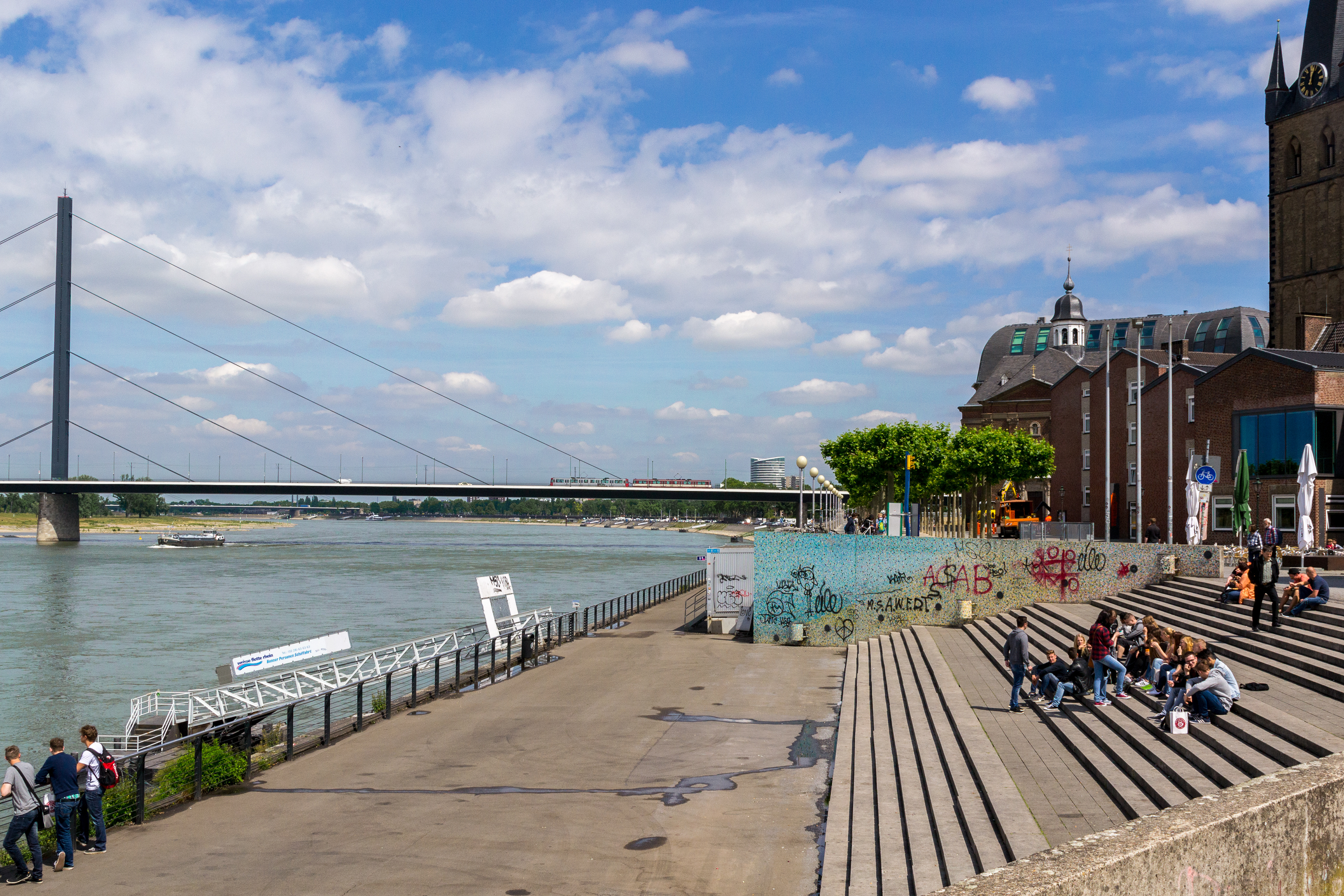
Enjoying the Reinuferpromenade with the Rhine Knee Bridge and St Lambertus church in the background.
AMSTERDAM
We finish our river cruise in Amsterdam and embark on yet another cruise, this time sightseeing through the canals of Amsterdam's Grachtengordel western neighbourhood.

A colourful sightseeing boat to catch the eye of tourists in a canal in front of the Bascilica of St Nicholas.

Facades of the famous canal houses lean outwards from bottom to allow furniture to be craned int apartments.

Houseboats are moored in canals as permanent residences on the water.
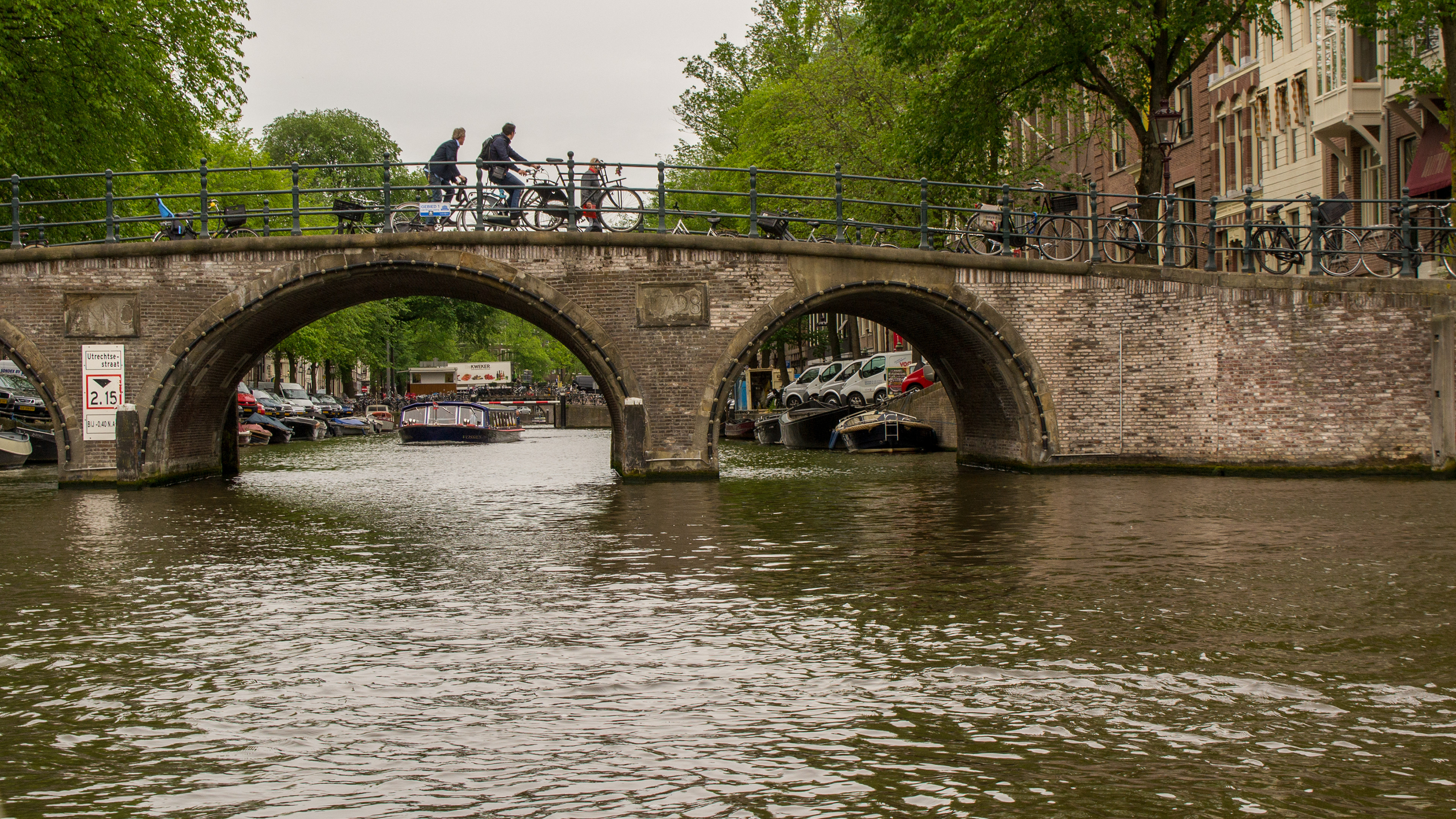
Famous for its cyclists and canals, here we see both.
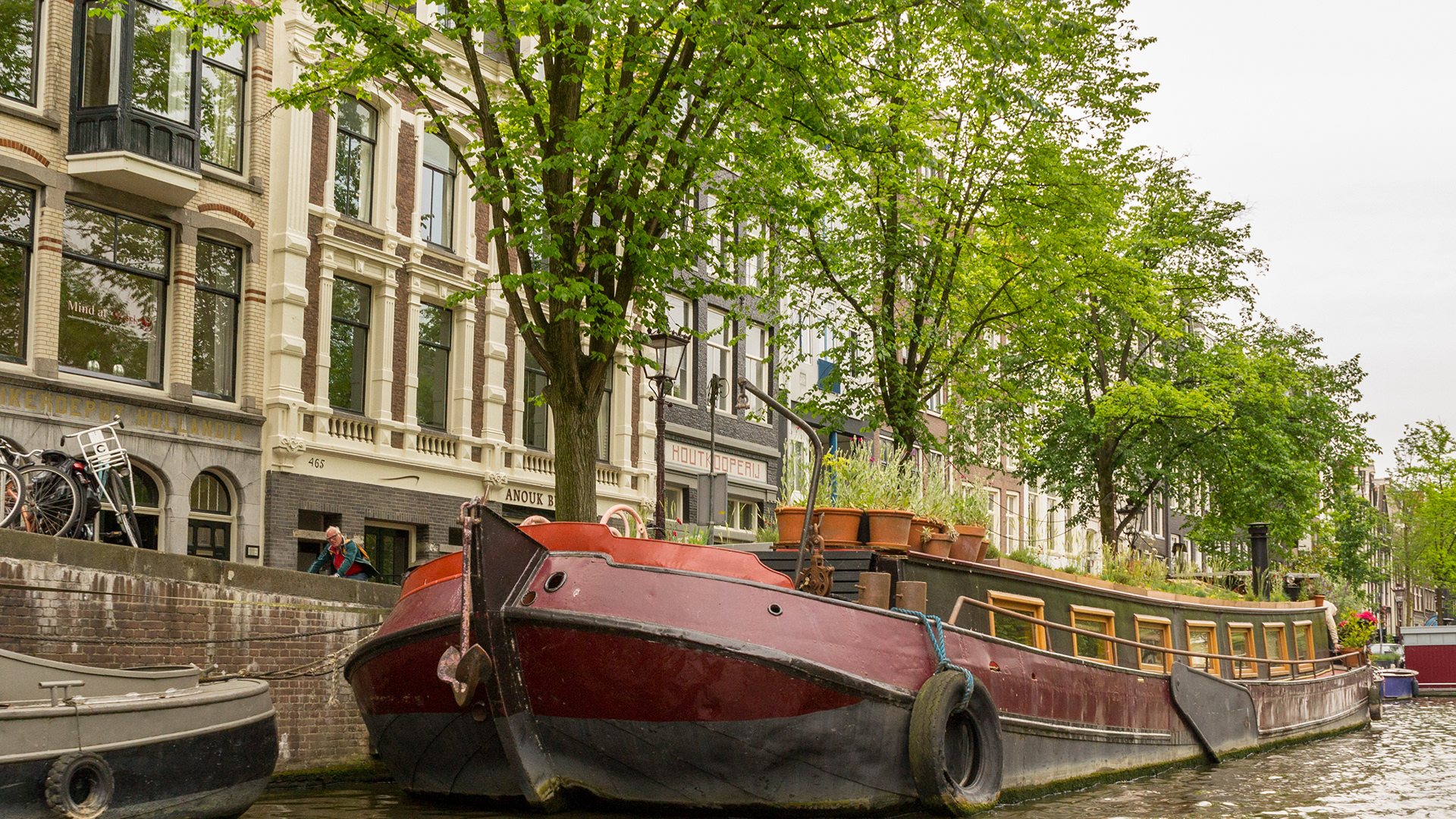
Gardening, canal boat style.
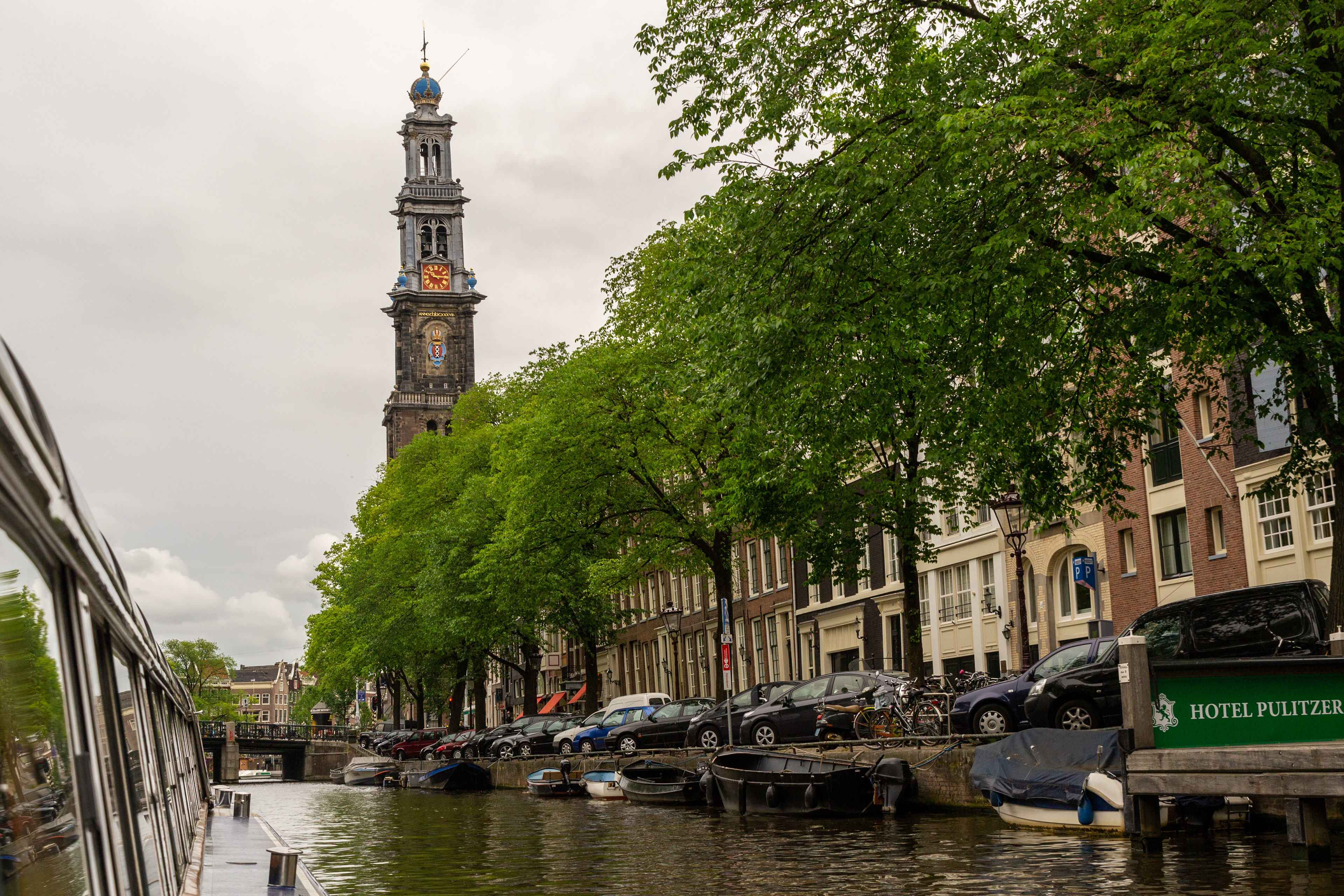
The Westertoren is a prominent landmark above the Westerkerk in the Grachtengordel neighborhood. Rembrandt was buried here.

This unassuming building is the house where Anne Frank wrote her now famous diaries in hiding from the Nazis in WWII.
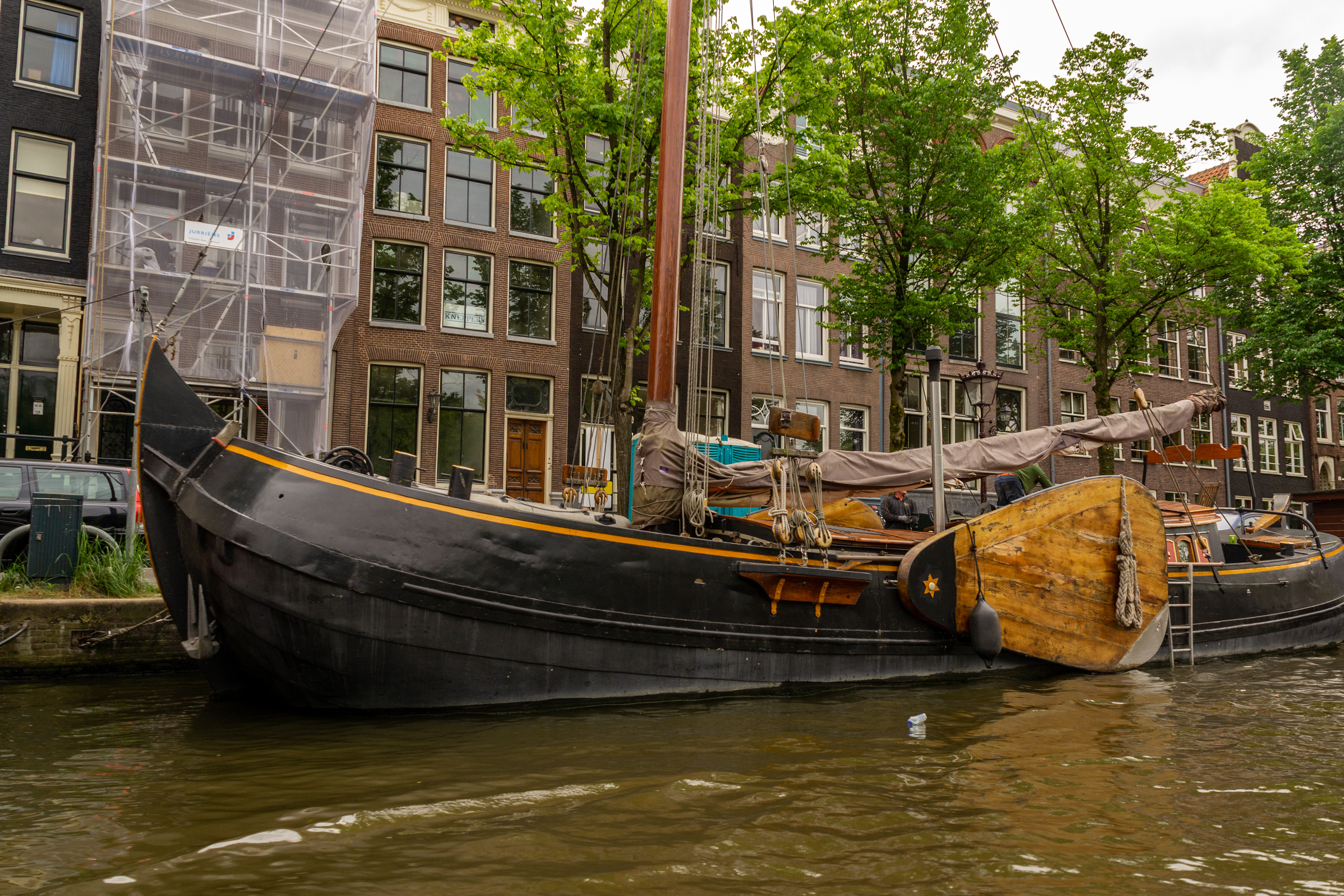
A skûtsje (pronounced 'skootshuh') is a Frisian sailing boat of the type tjalk or Dutch barge, originally an ordinary cargo boat, but today a prized ship and one of the icons of Frisia.
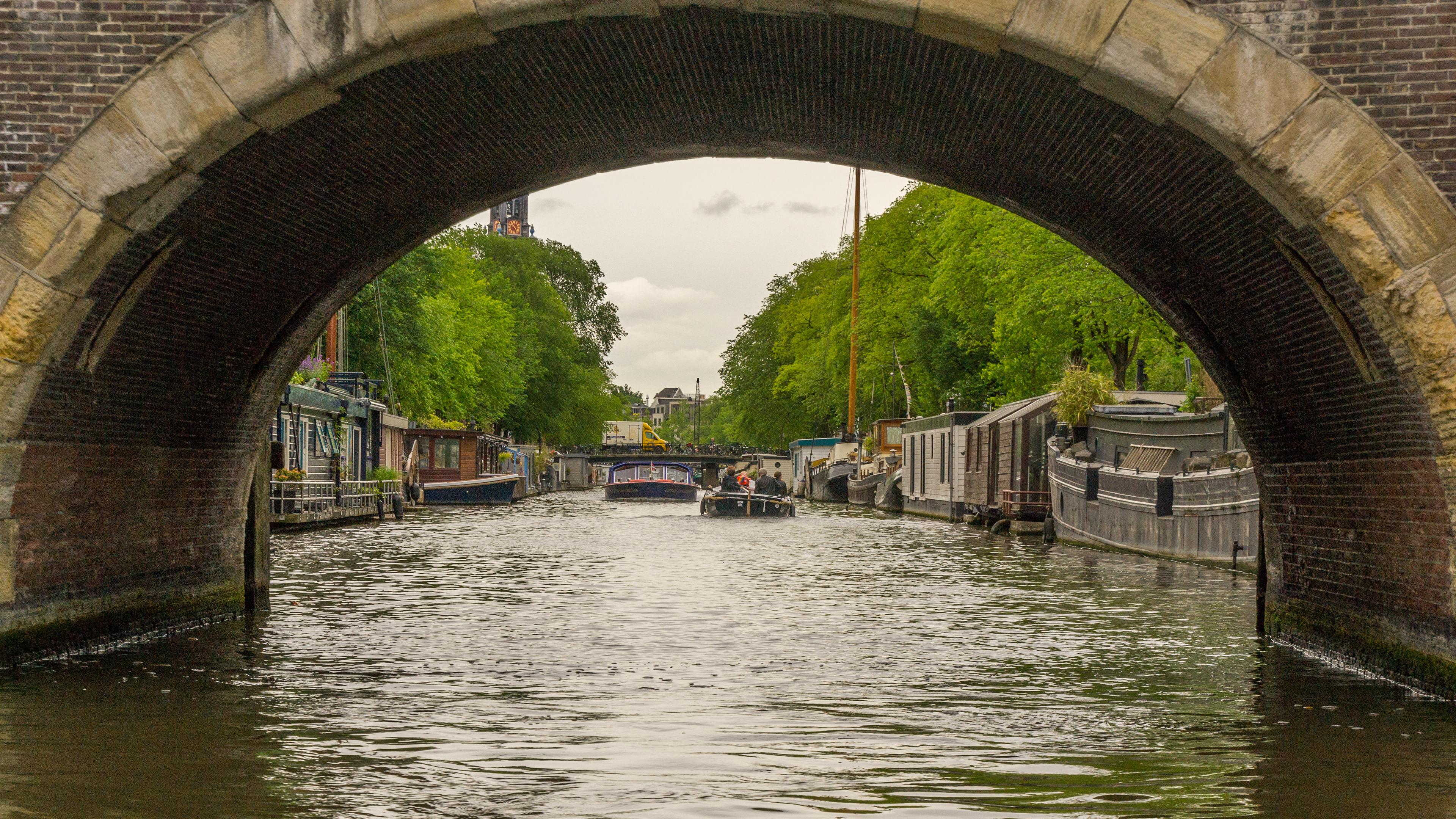
Canals are jam packed with house-boats and barges and alive with activity.

Canals are lined with house-boats in the Grachtengordel region.
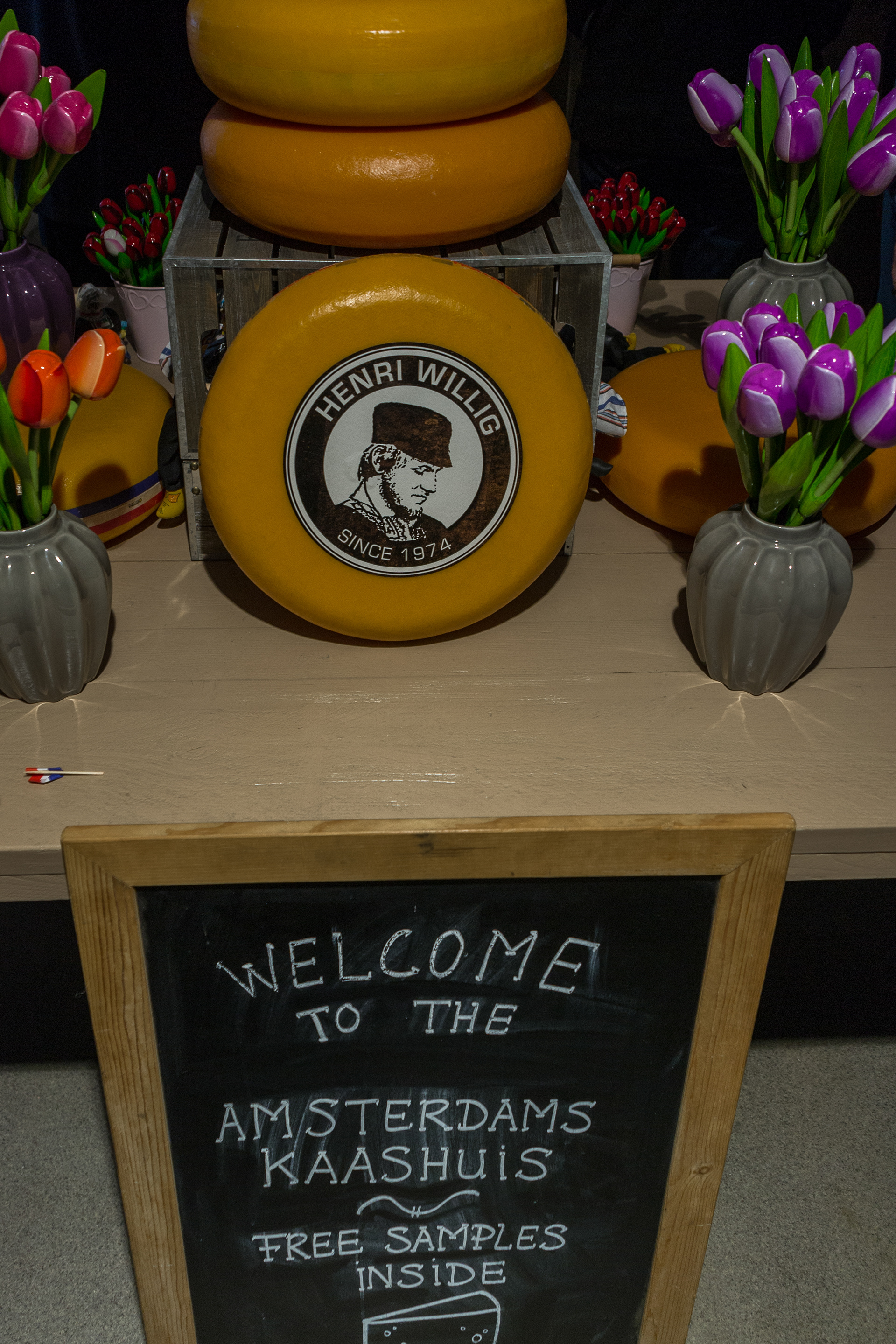
Famous for its cheeses.
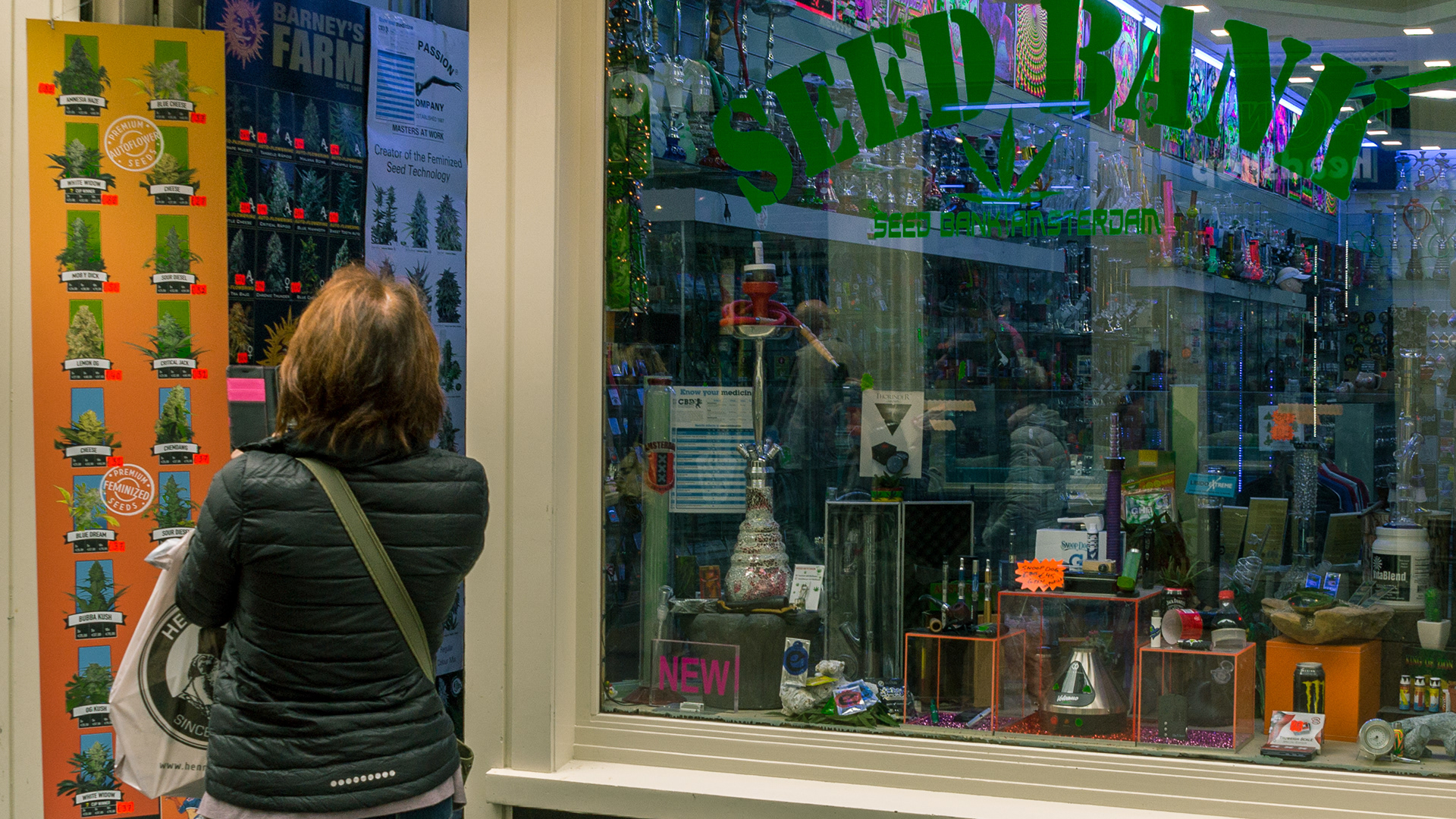
Another famous product range on offer legally..
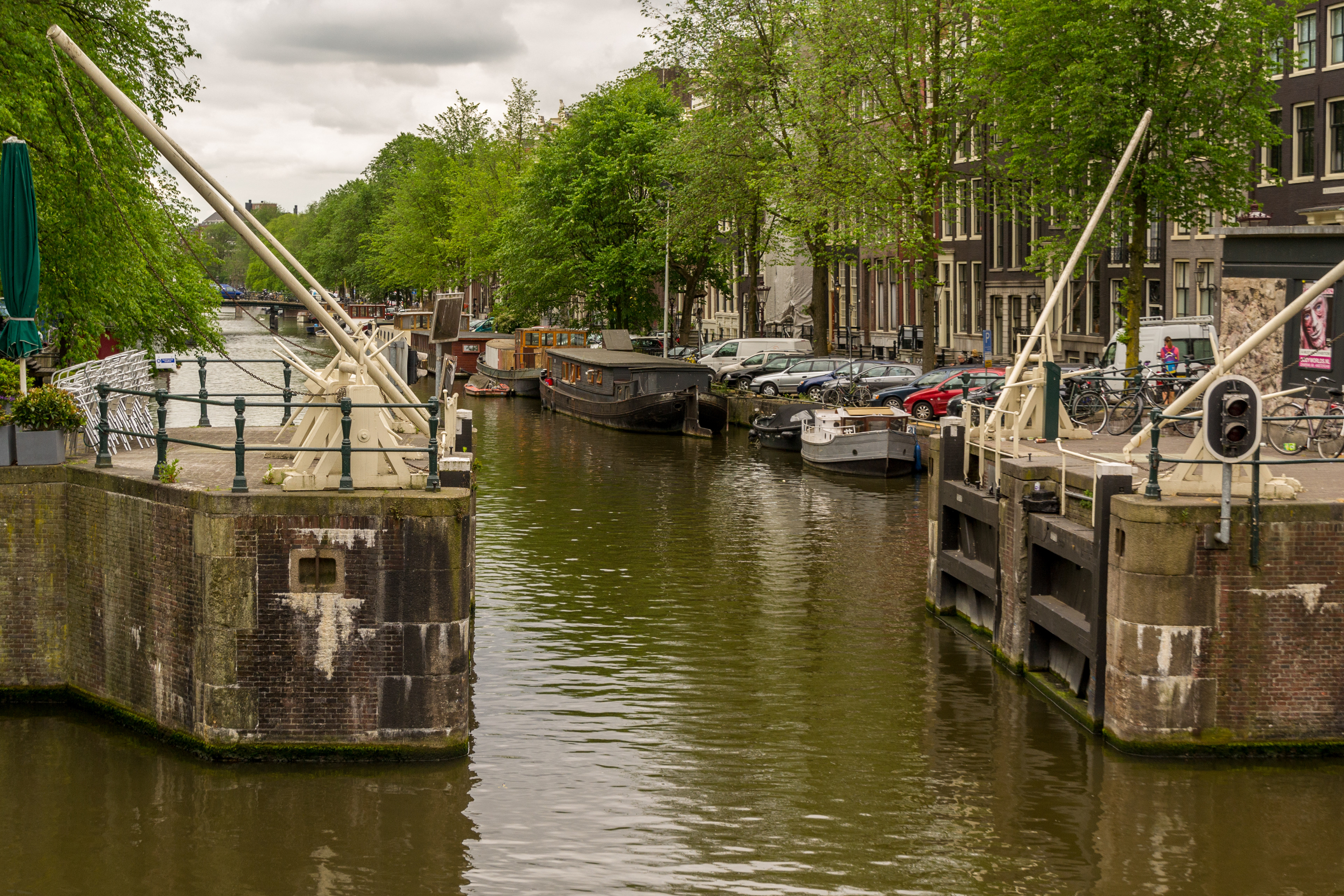
Haarlemmer sluice. built in 1602, as part of the sea dyke running along the waterfront.
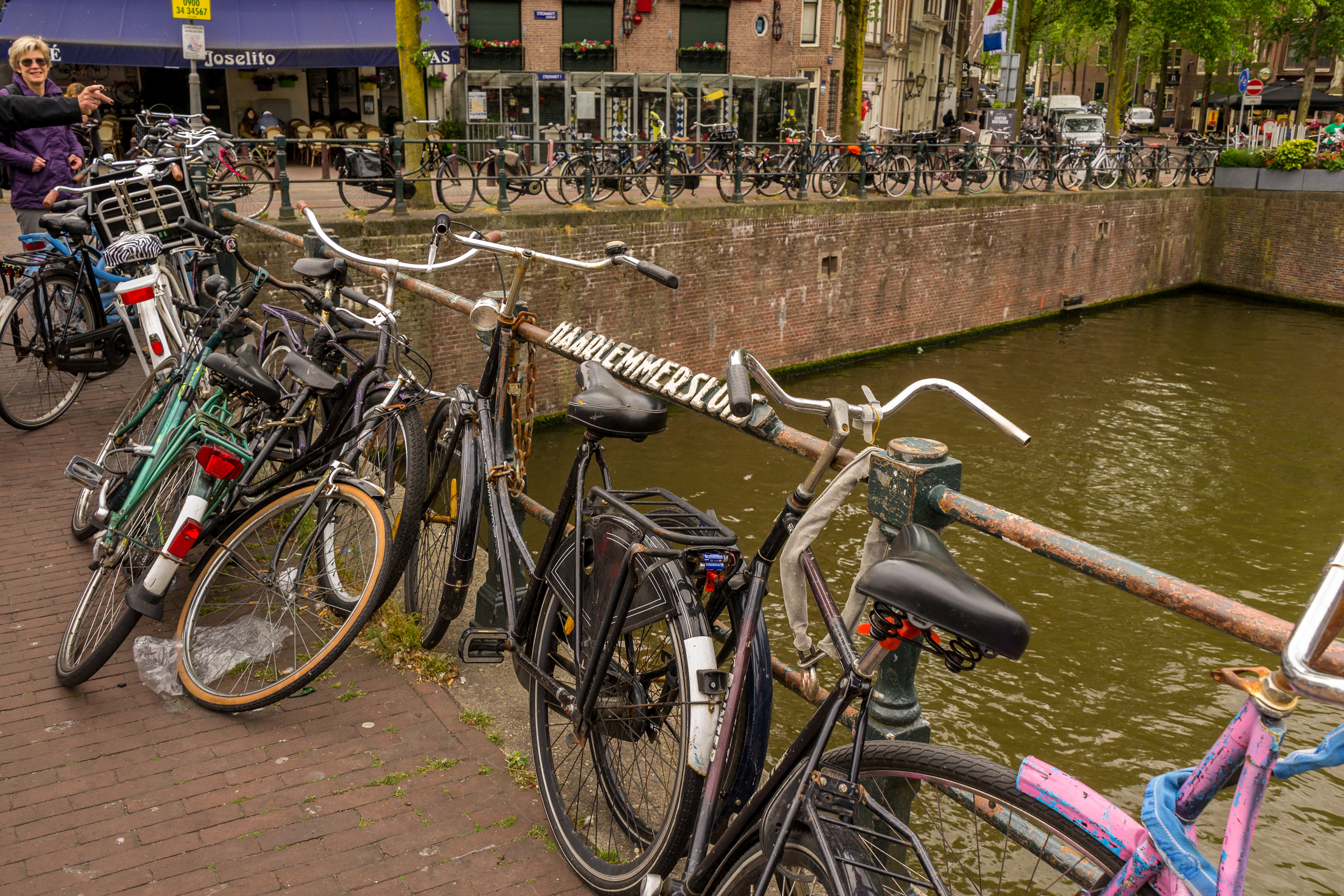
Secure parking for bikes near Haarlemmersluice.
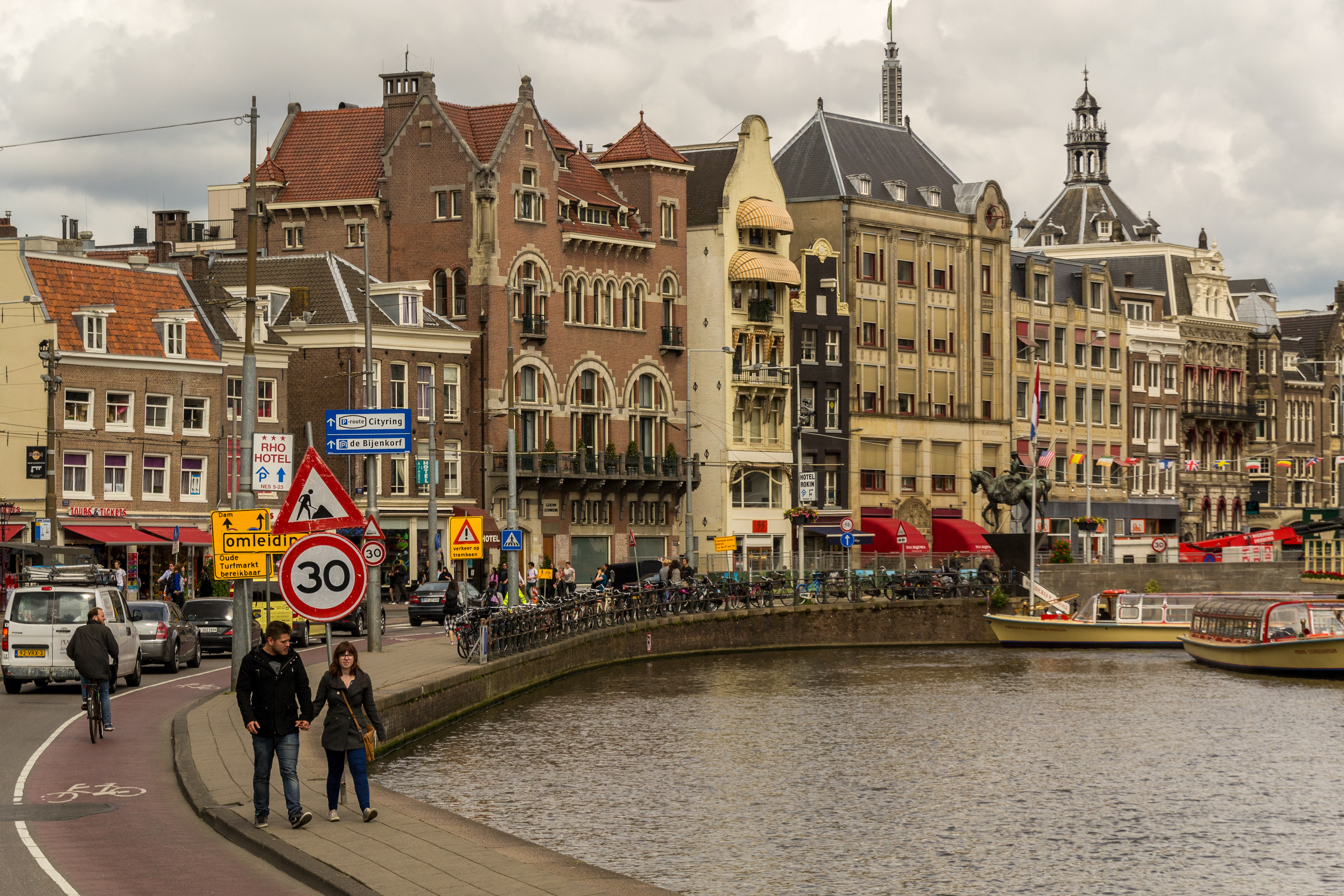
City centre close to the dam on the Amstel River from which the city derives its name.
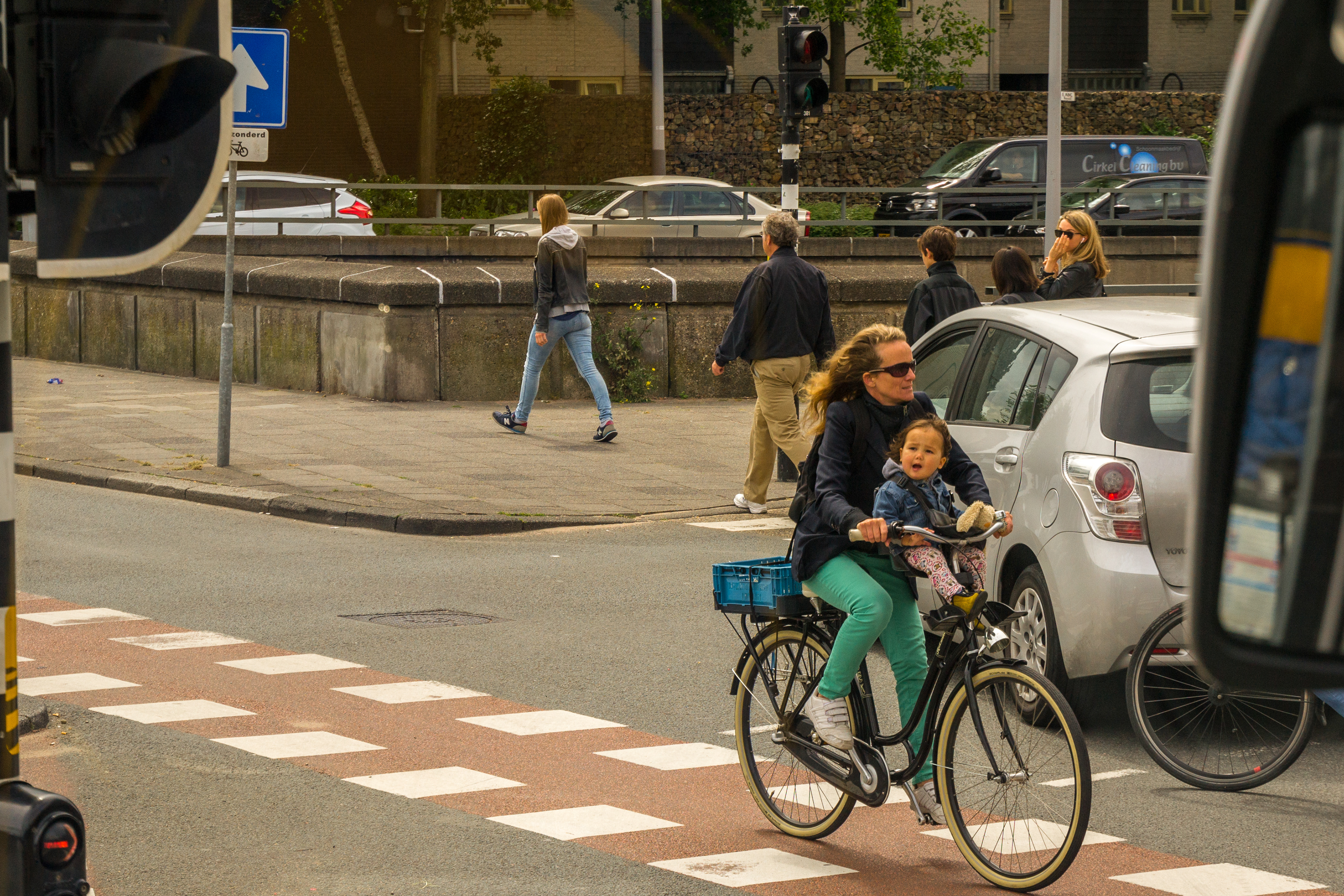
Mother and child on the most popular form of transport in the city.

Finally, an iconic windmill in old Amsterdam.
Amsterdam signaled the end of our river cruise portion of our holiday but not the end of our journey. From here we take the modern high-speed Thalys train departing from the Amsterdam Centraal Station travelling through Belgium reaching speeds of 300 km/h and arrive at the Paris-Nord Station in Paris some 3.5 hours later.
PARIS
To view more images of Paris click on the button below
